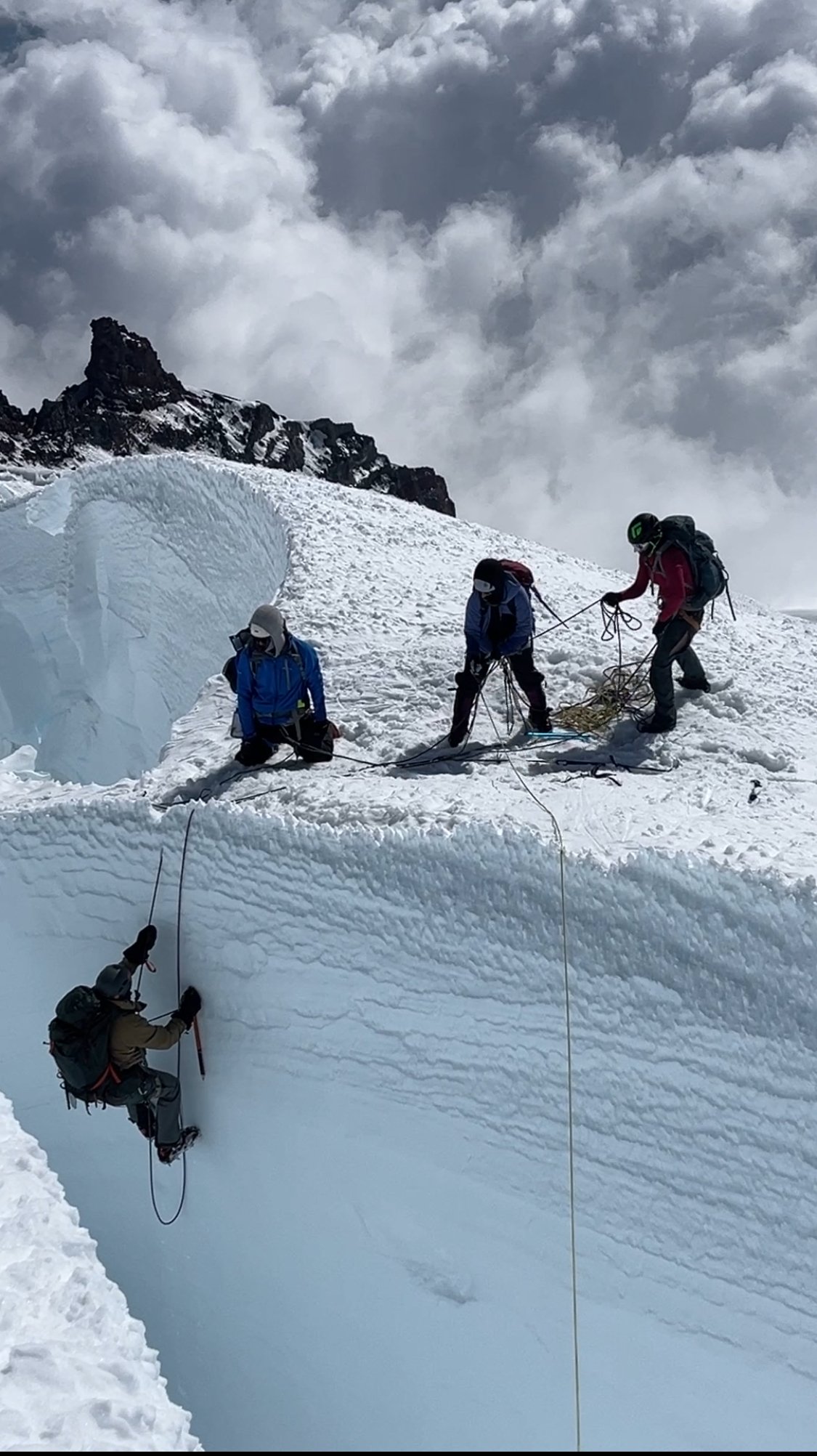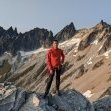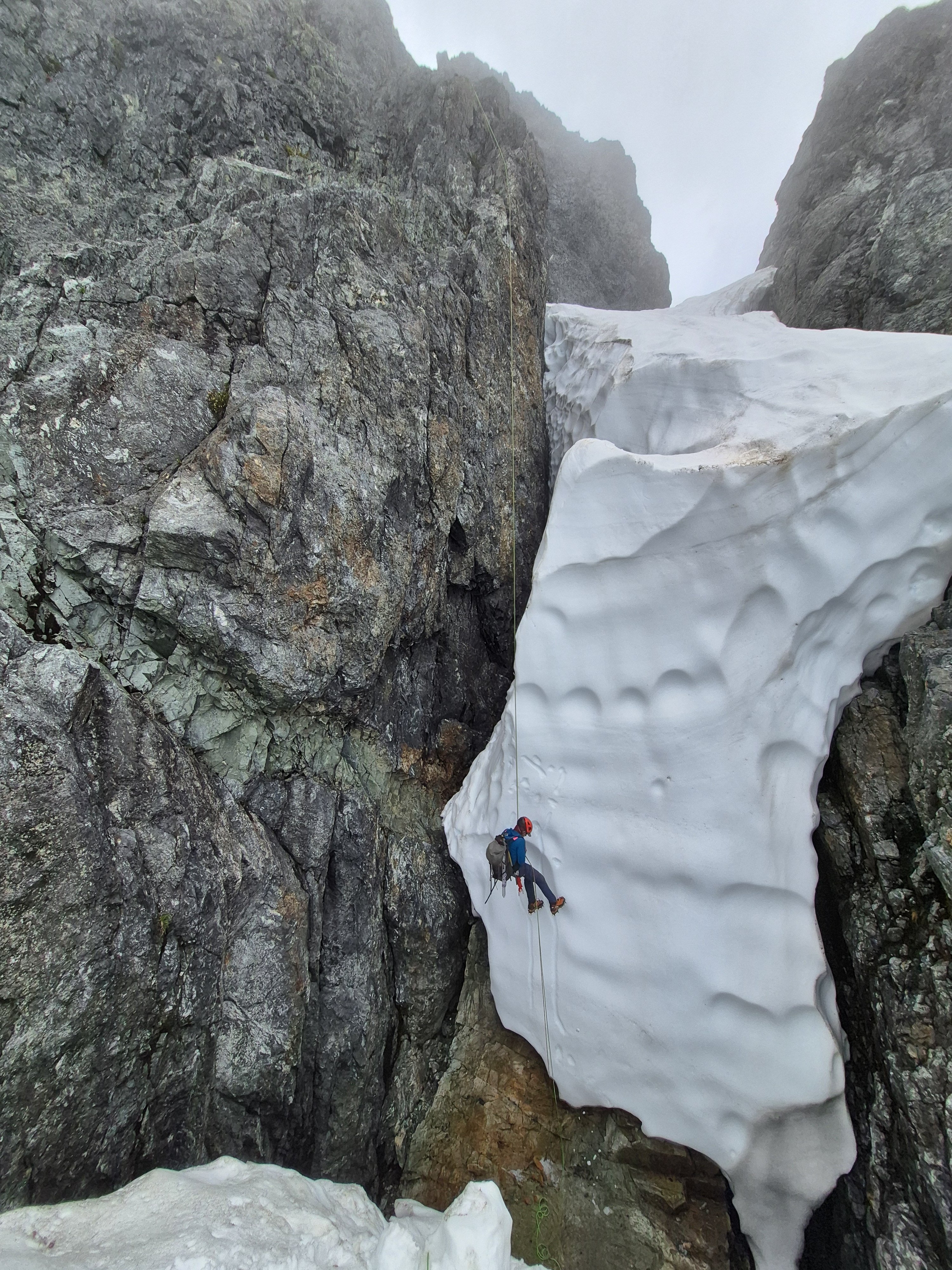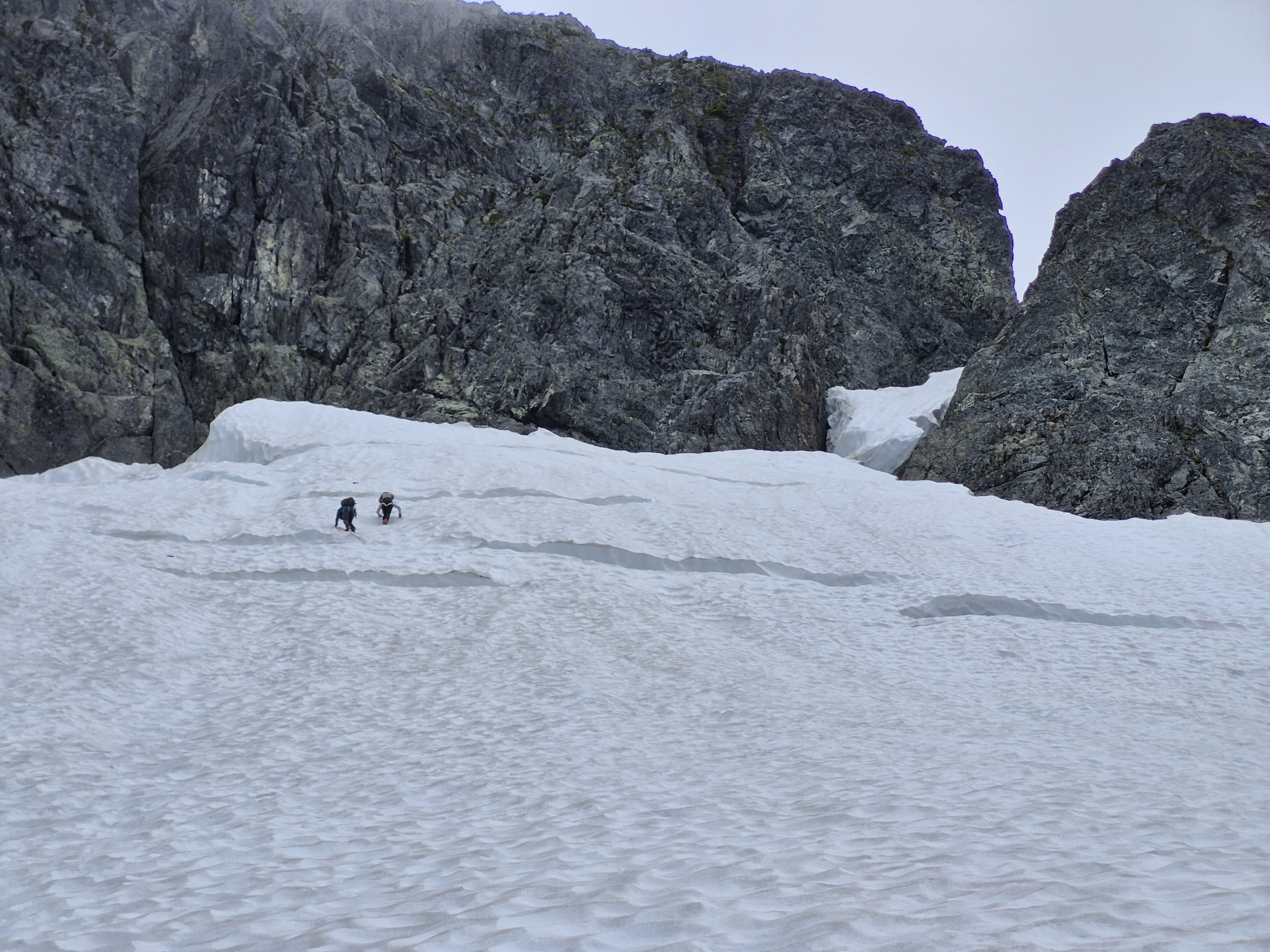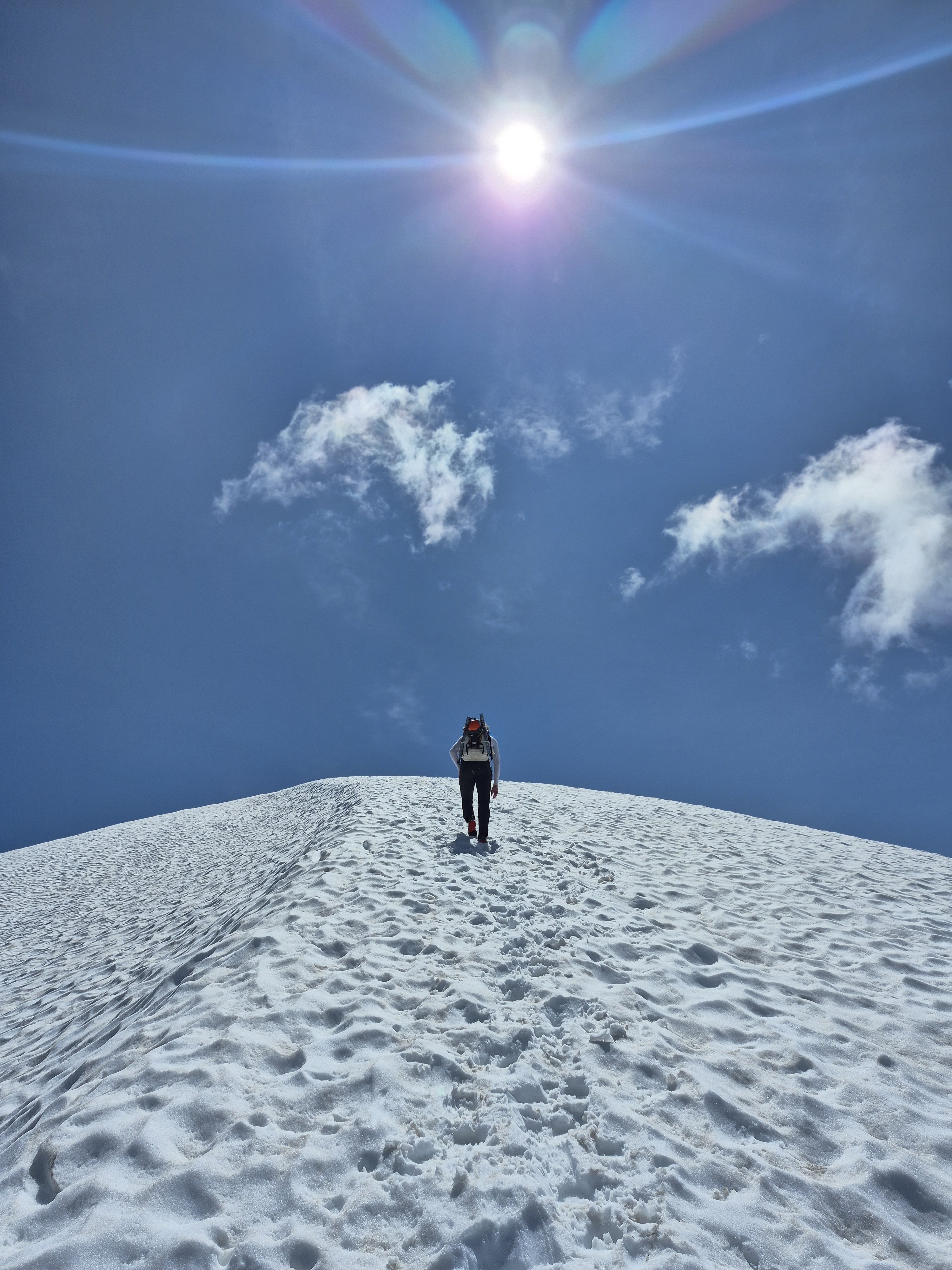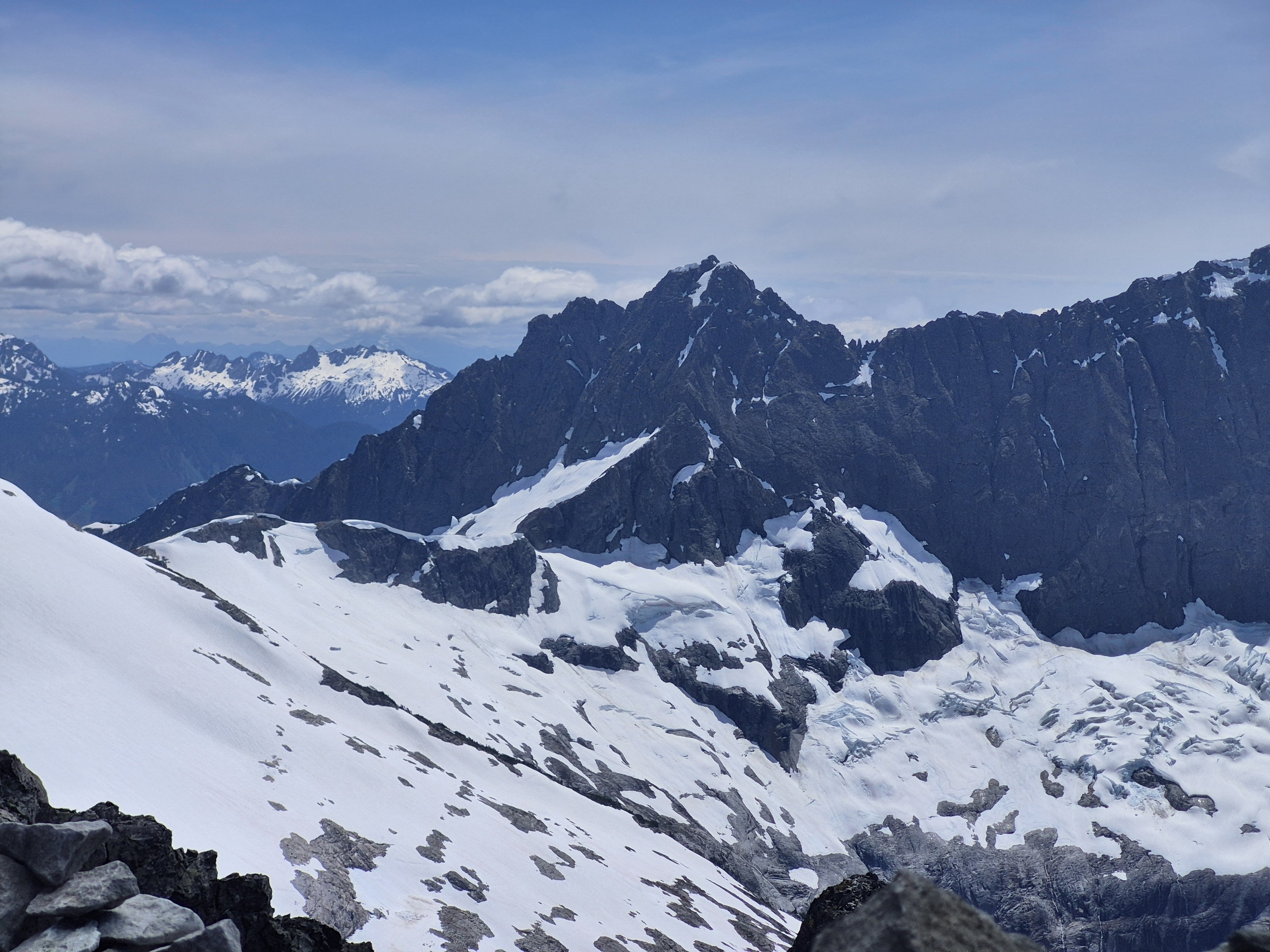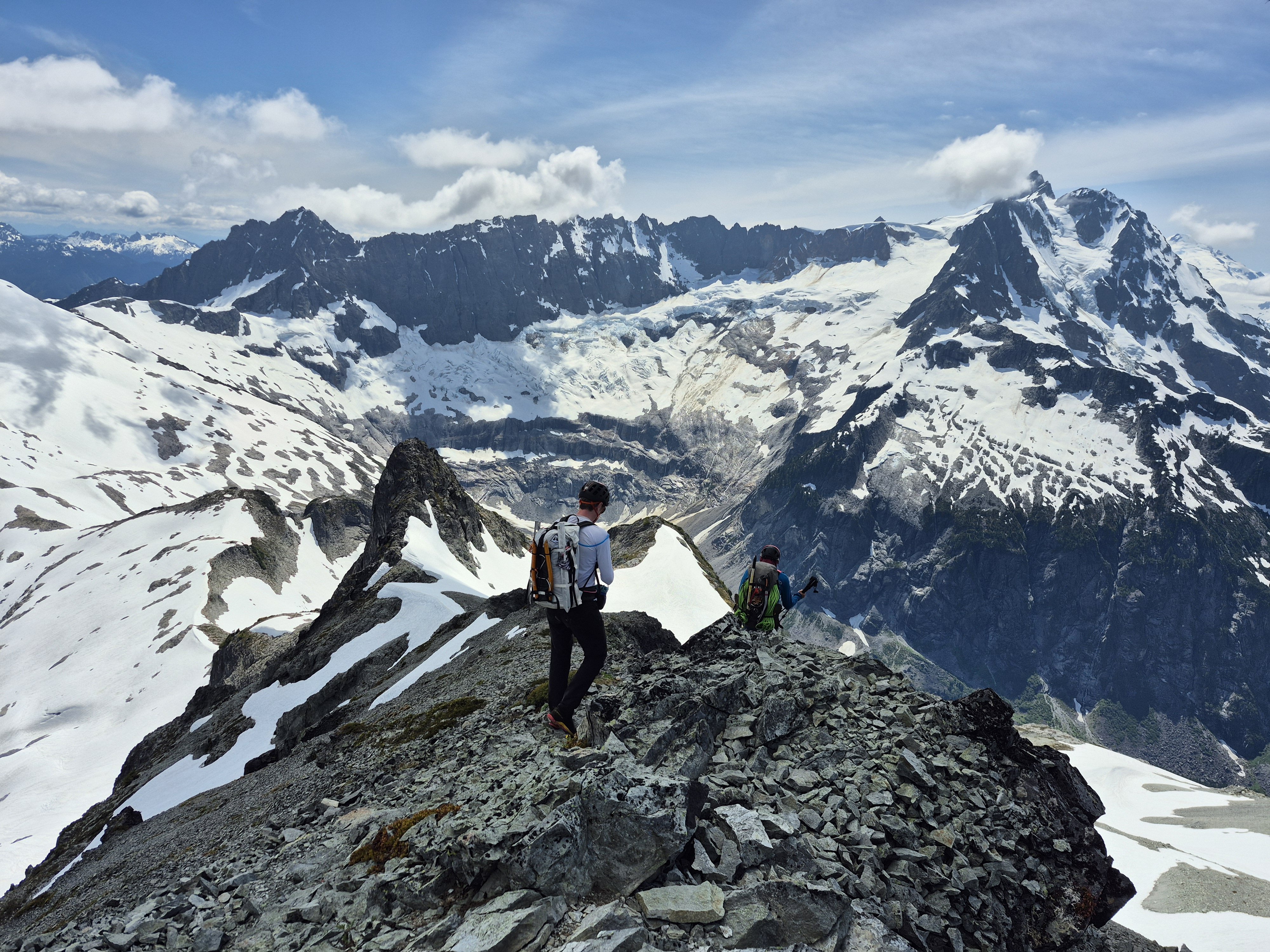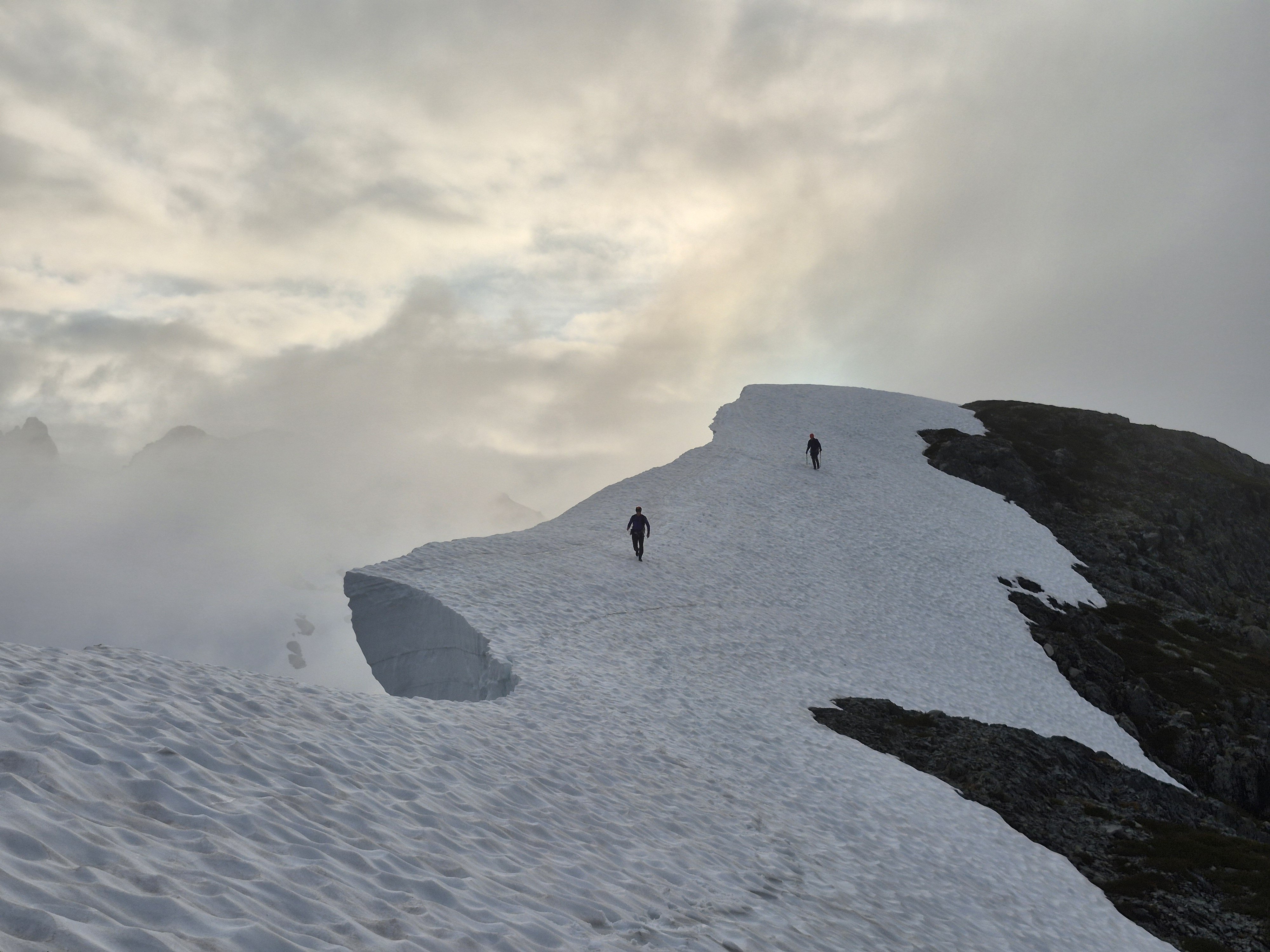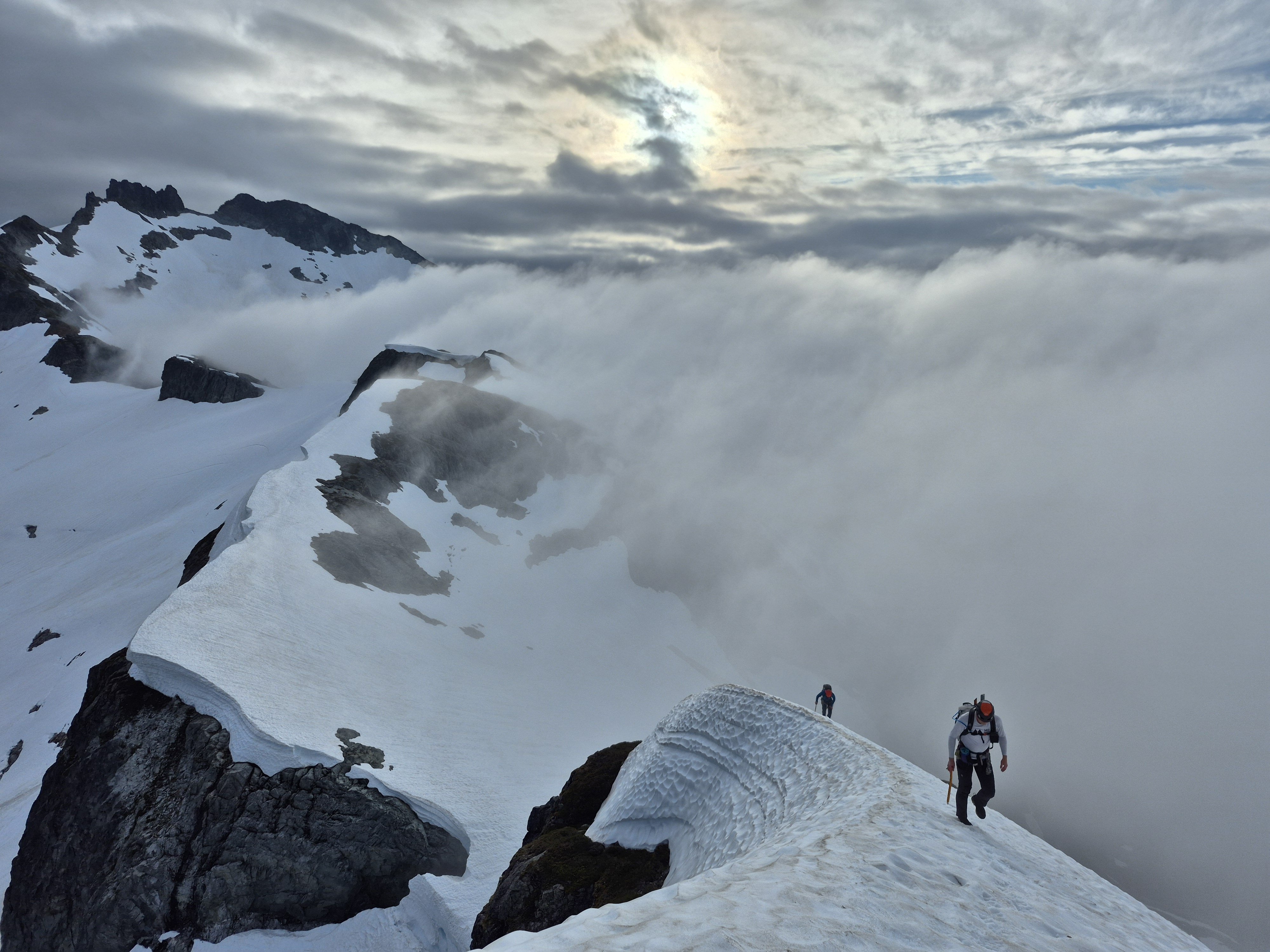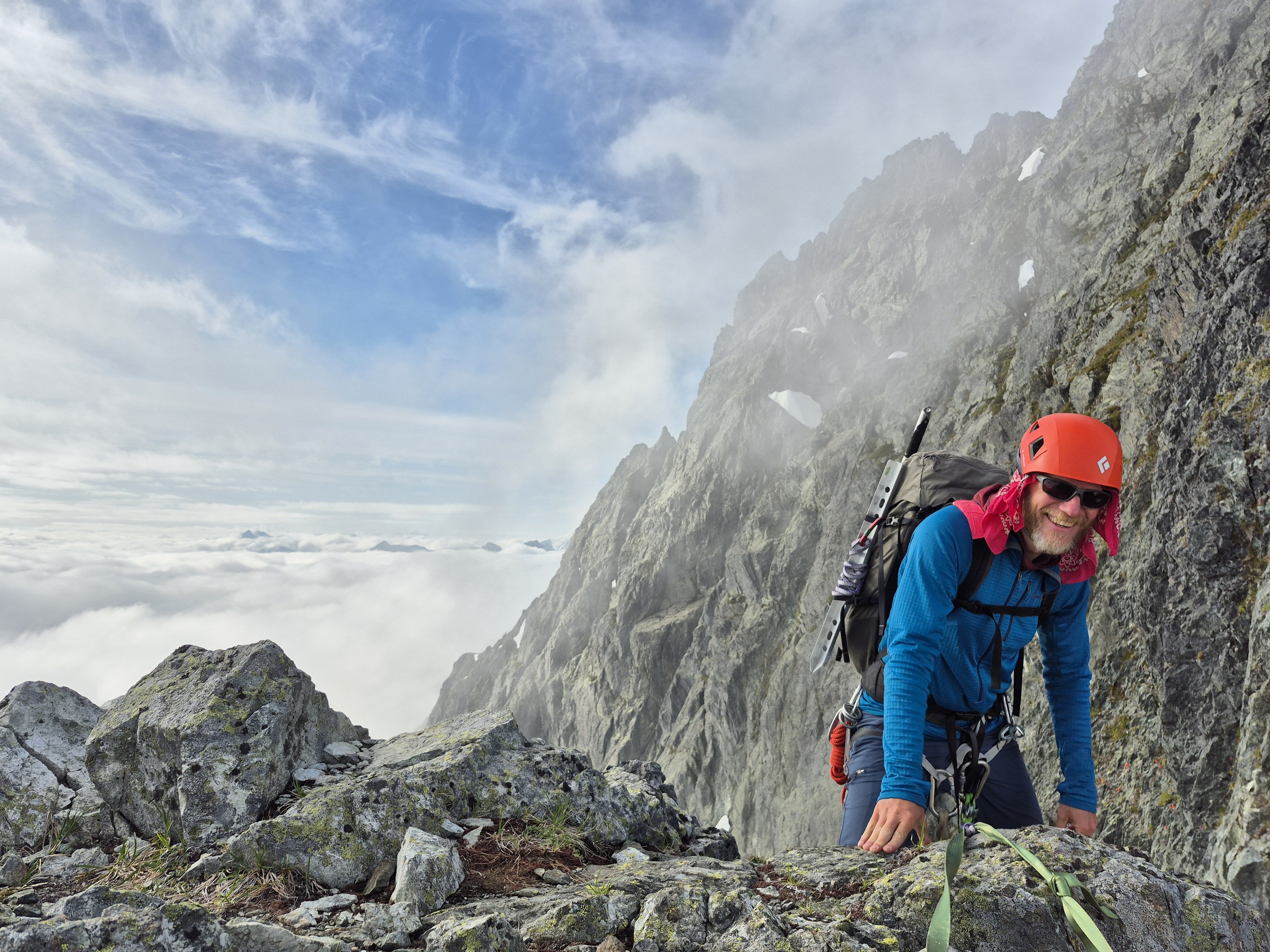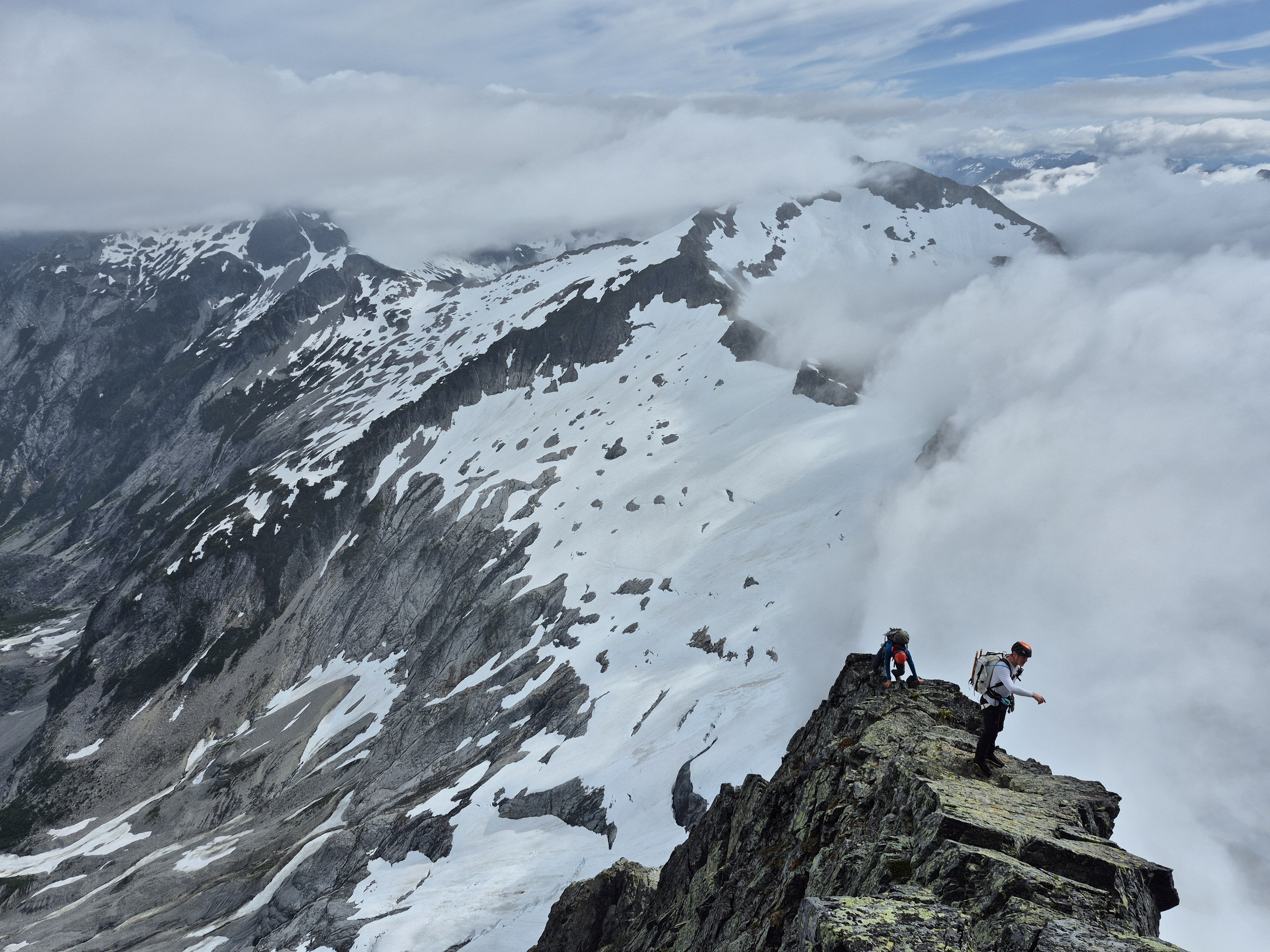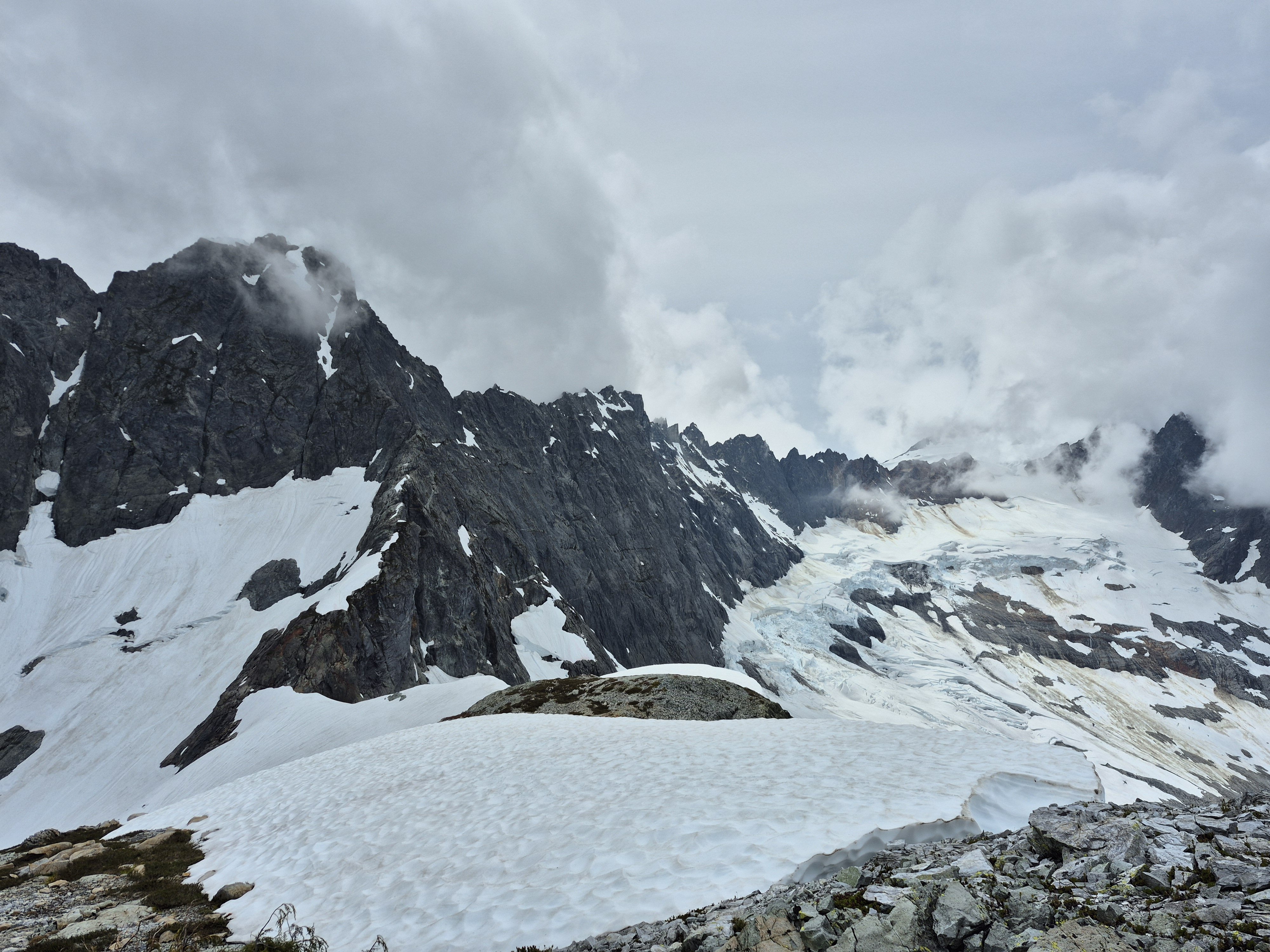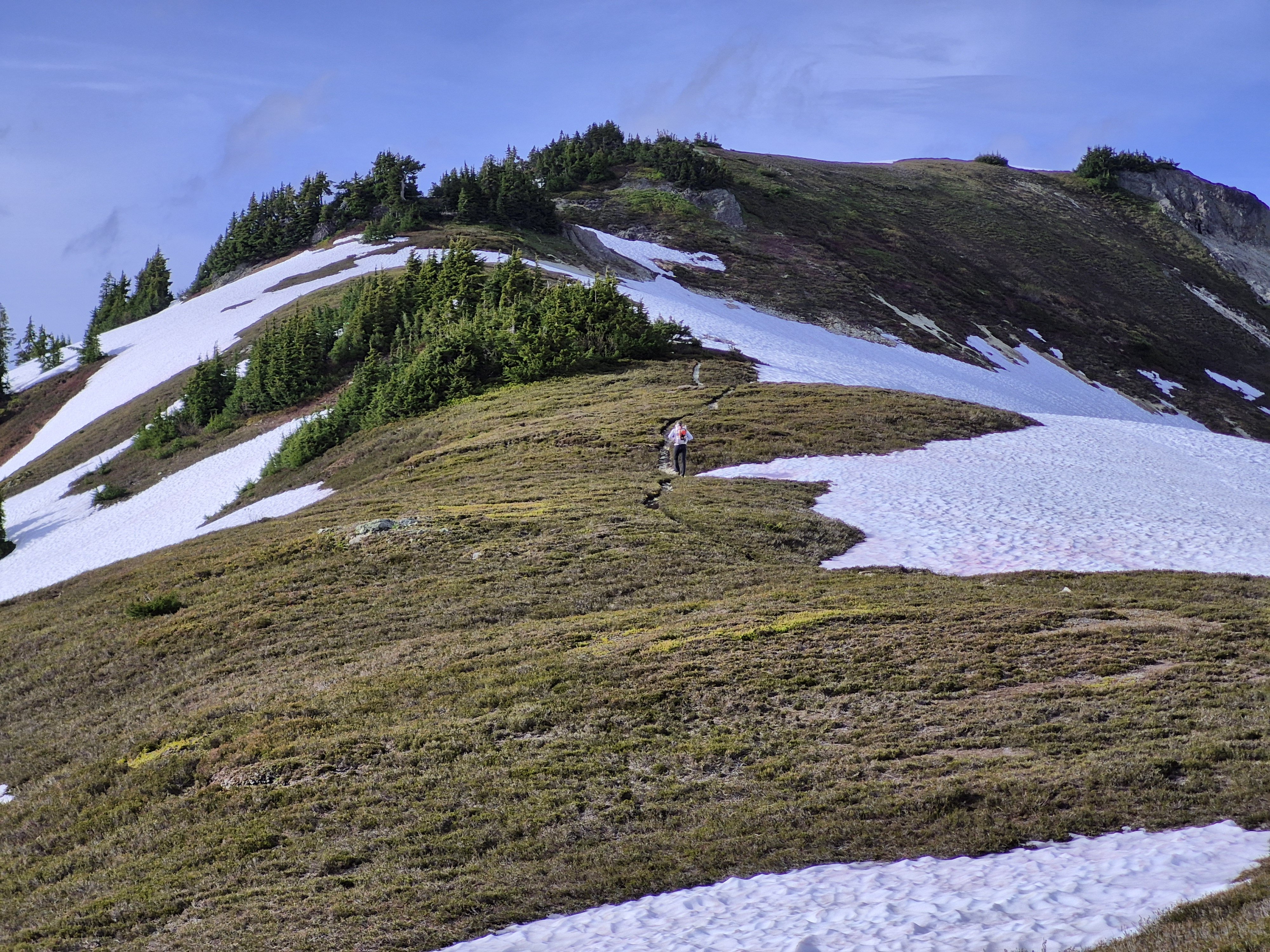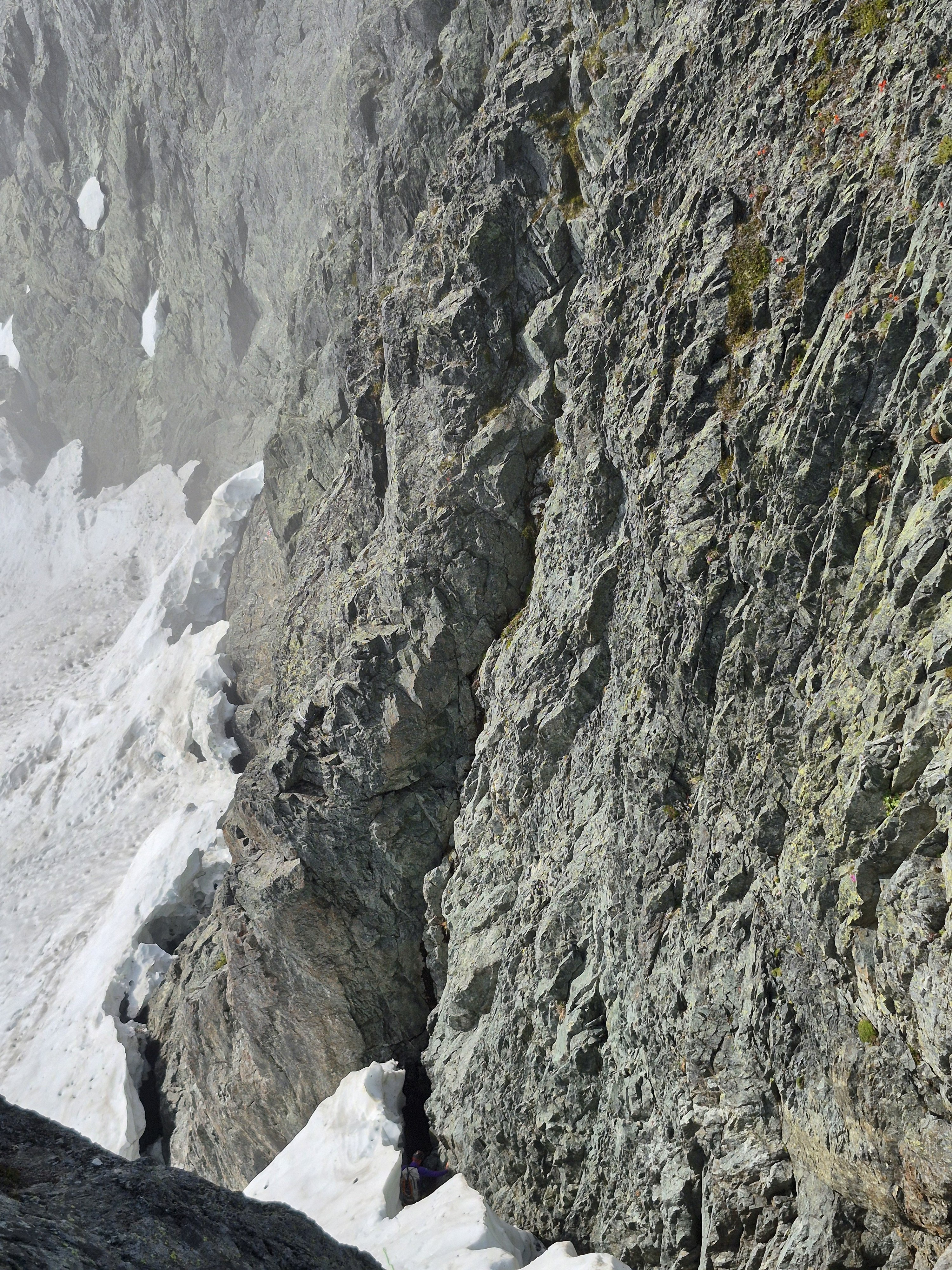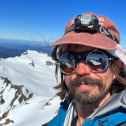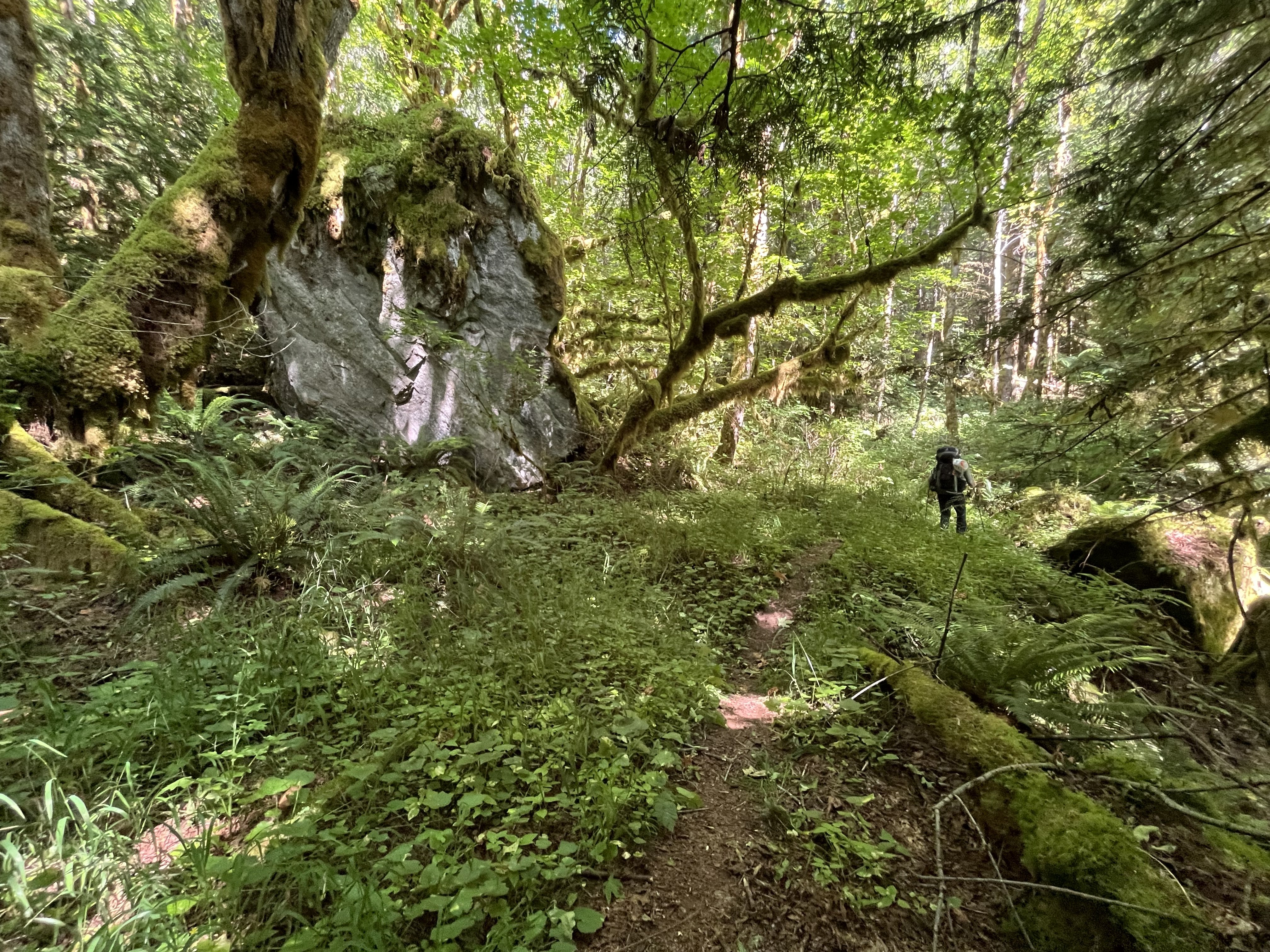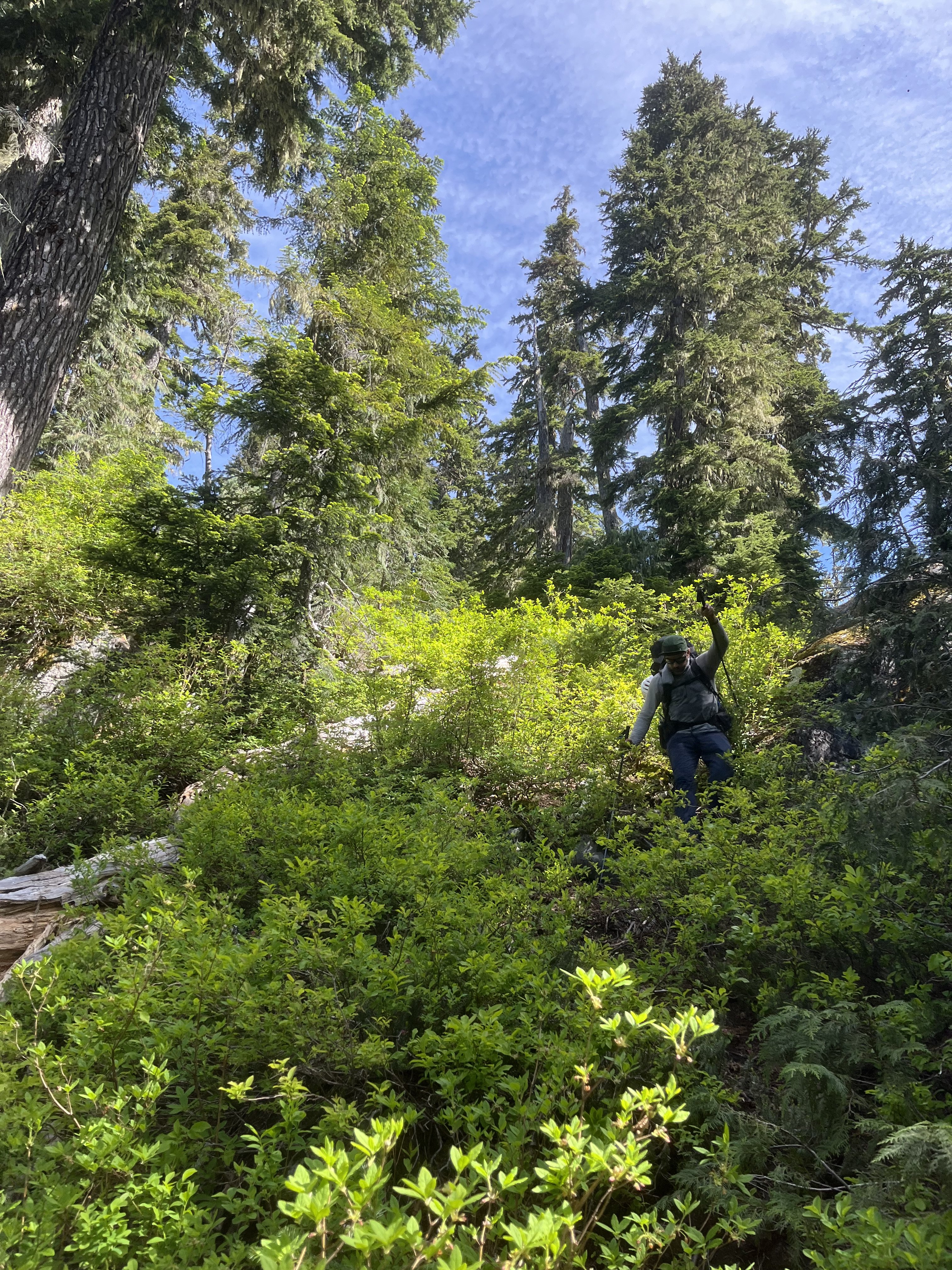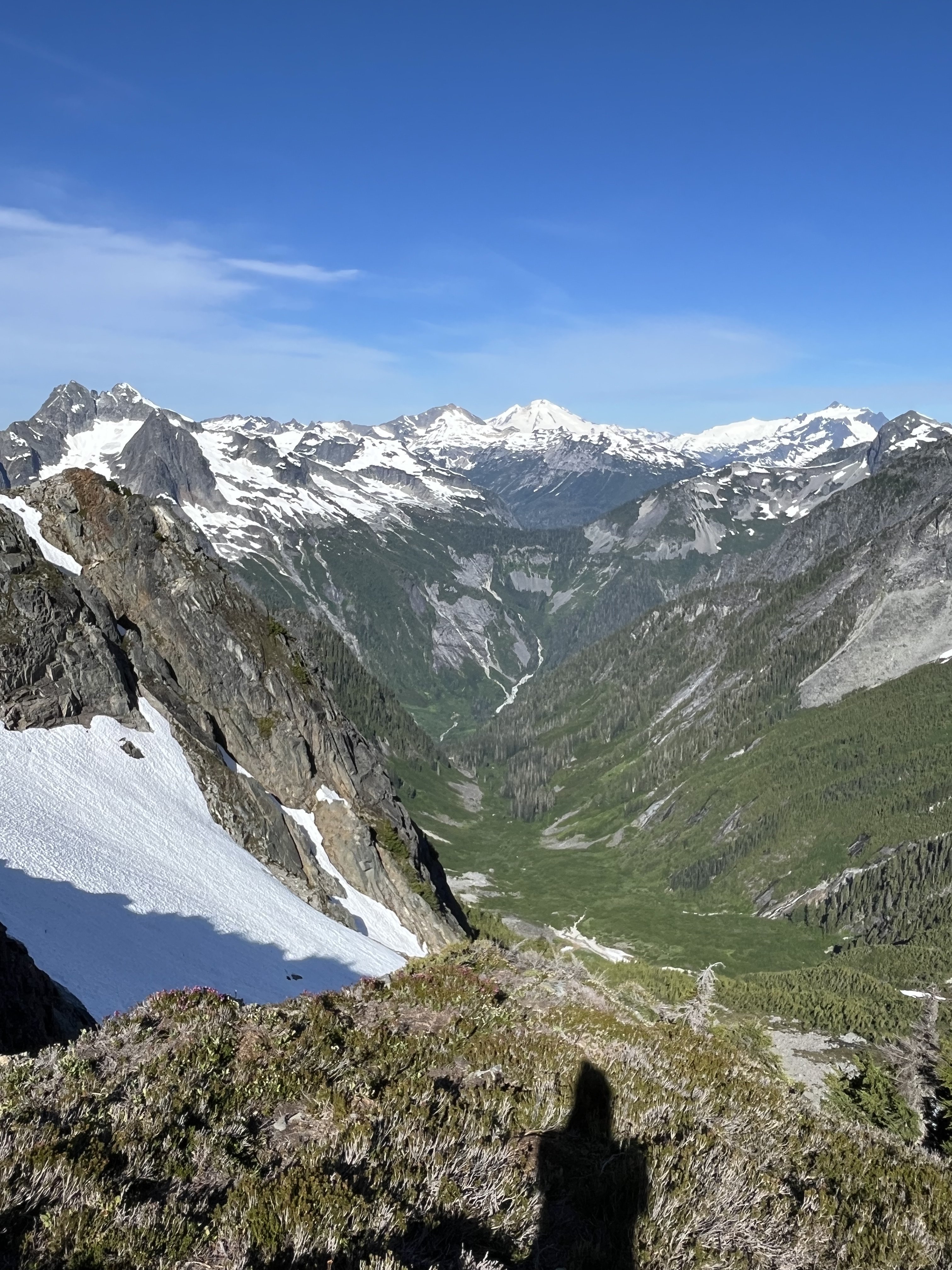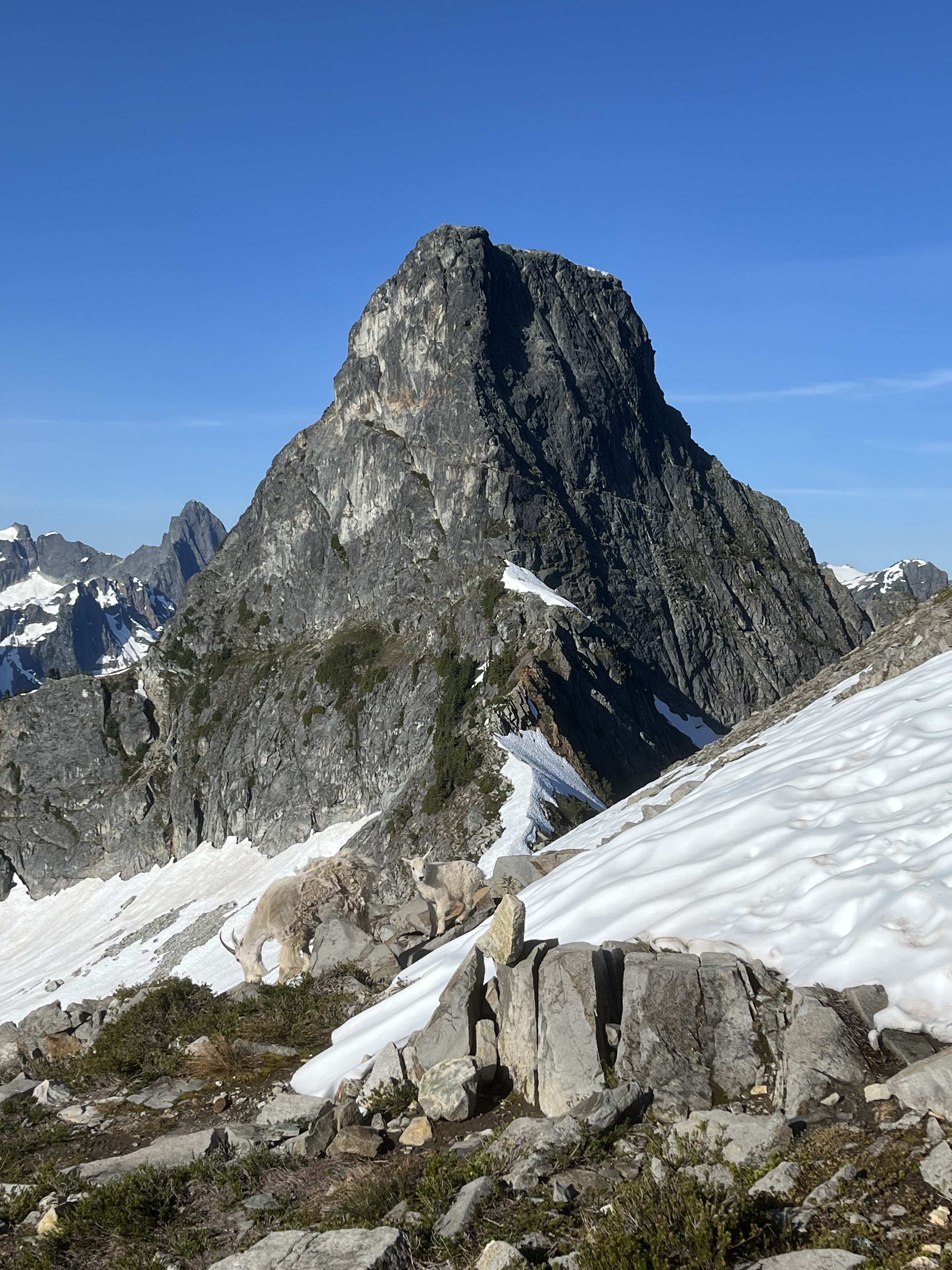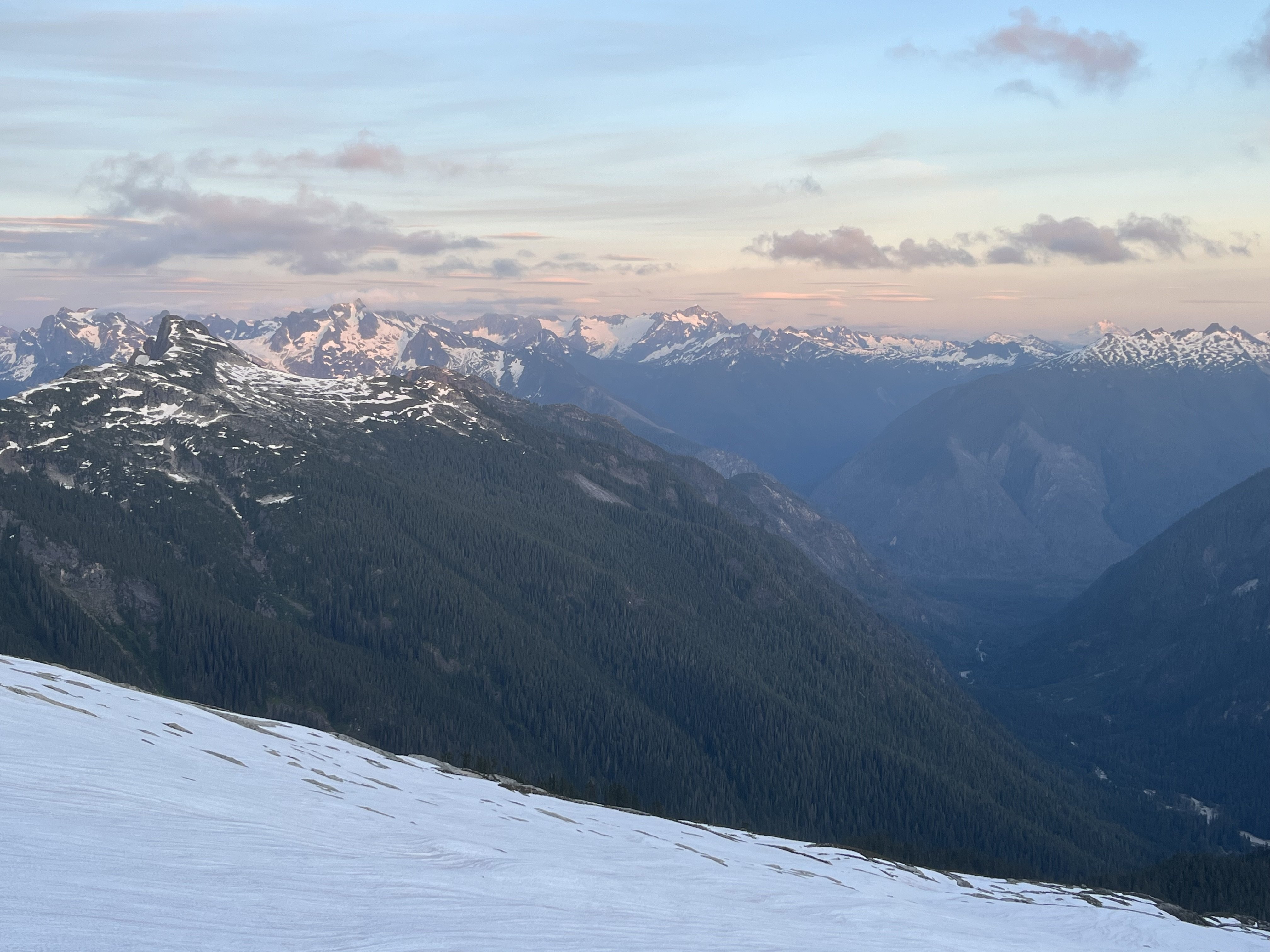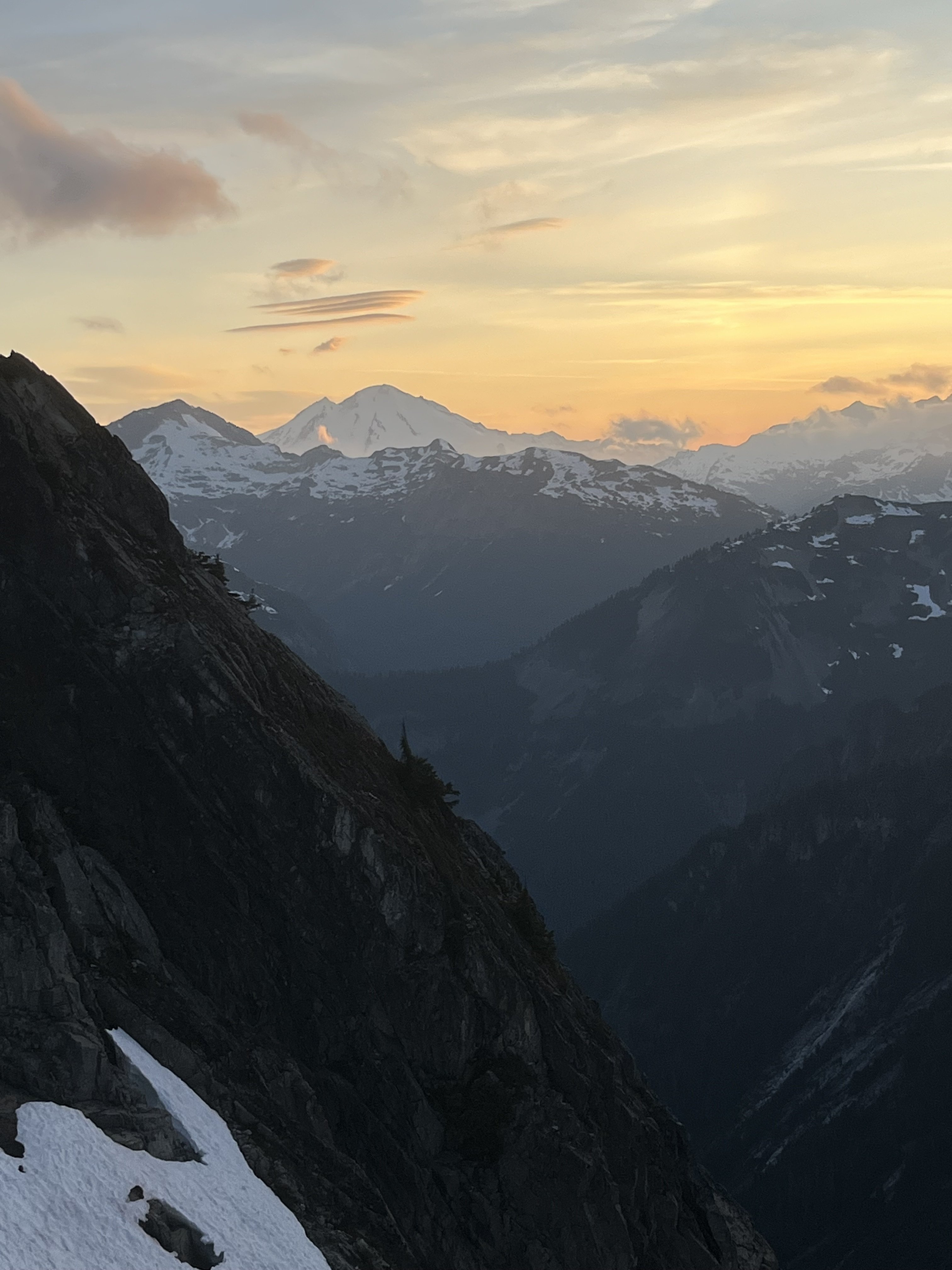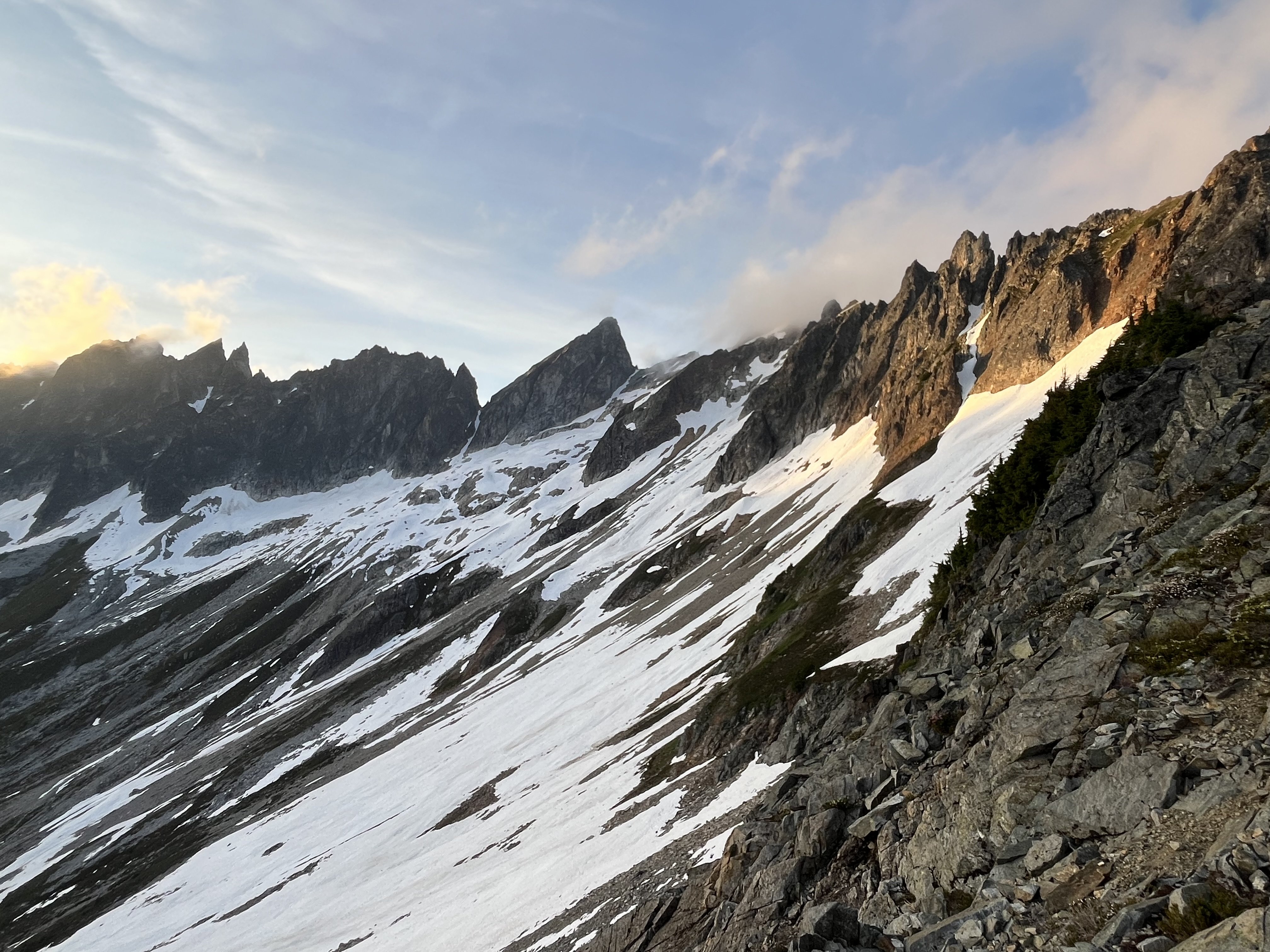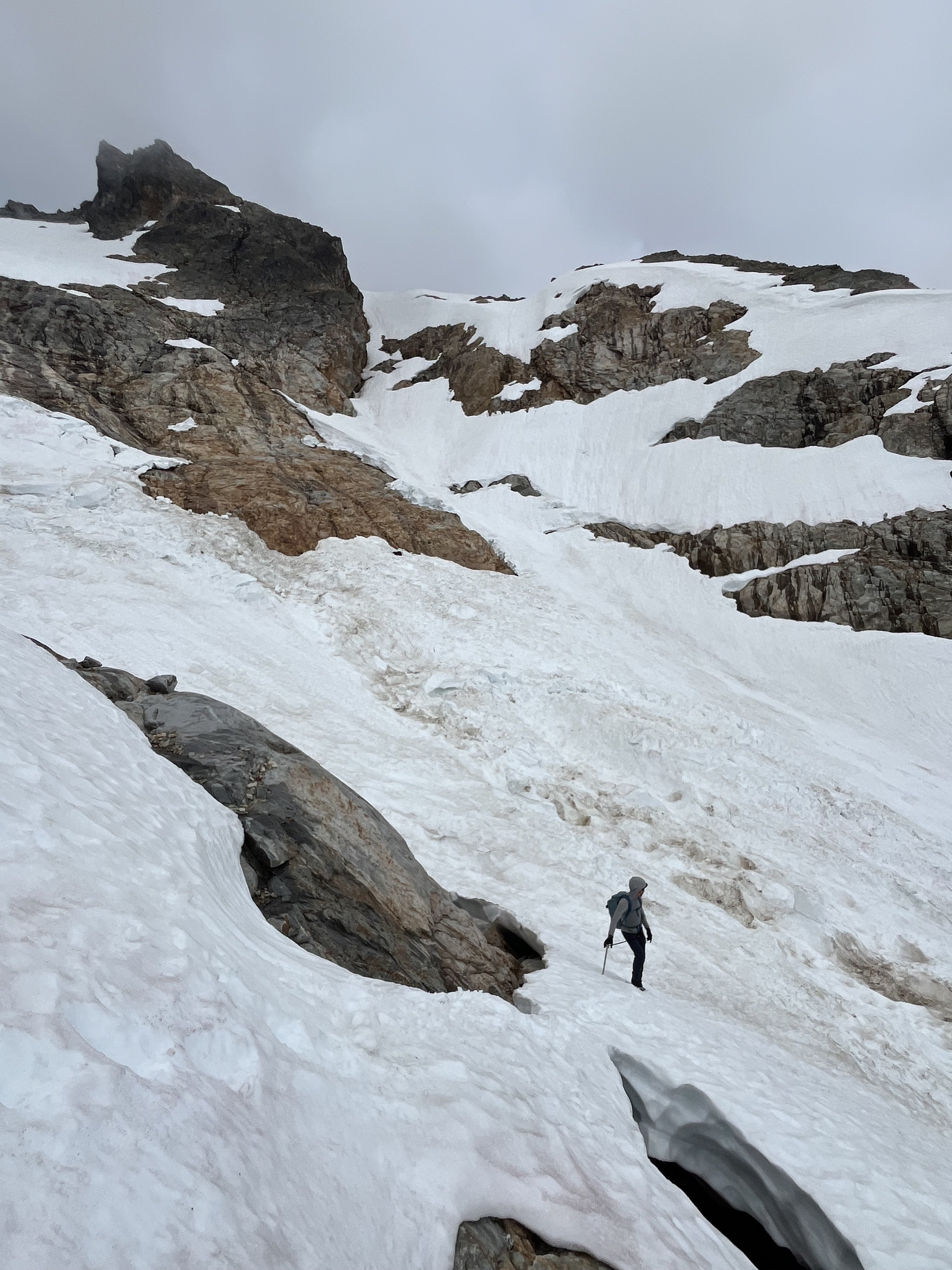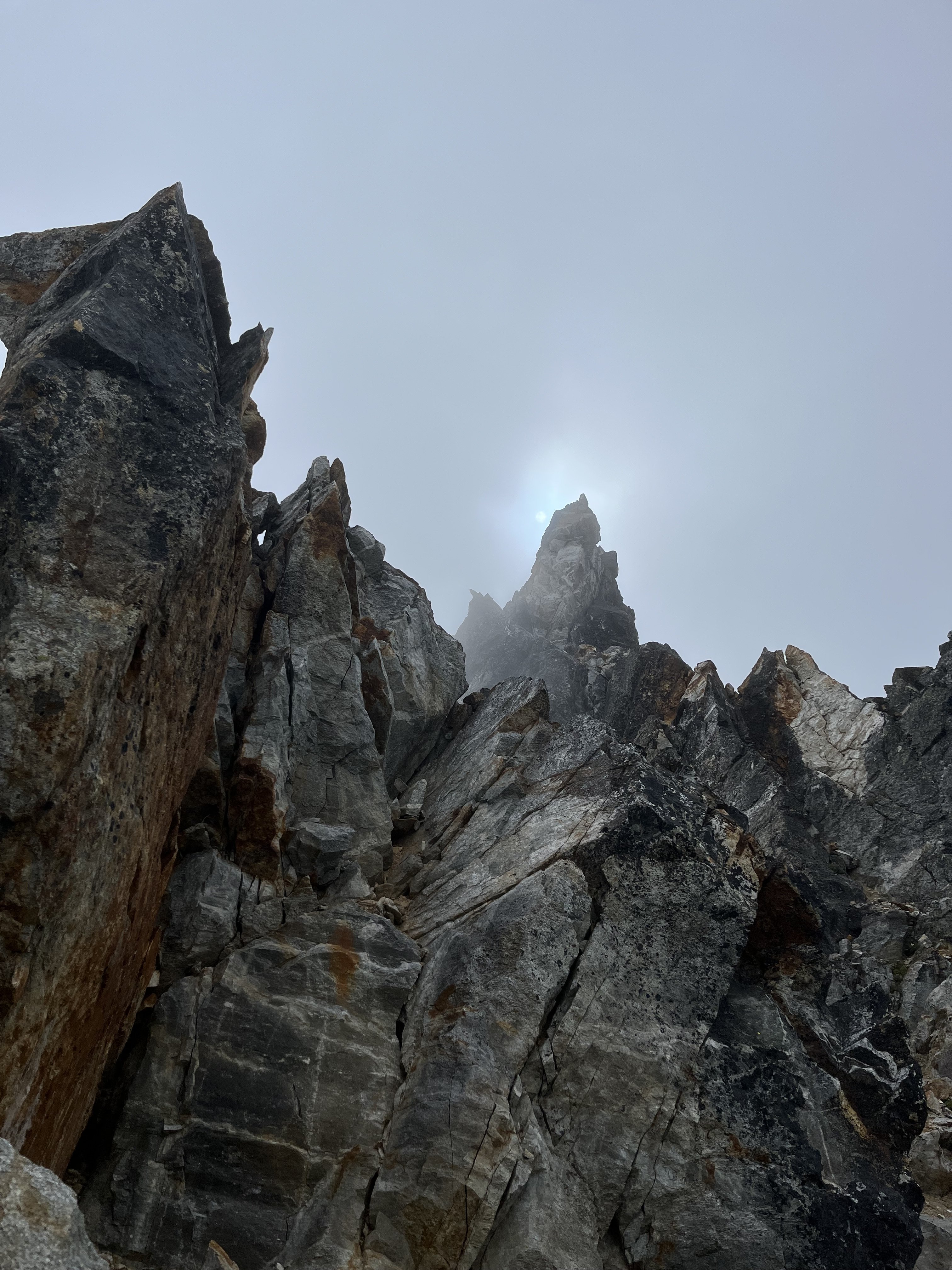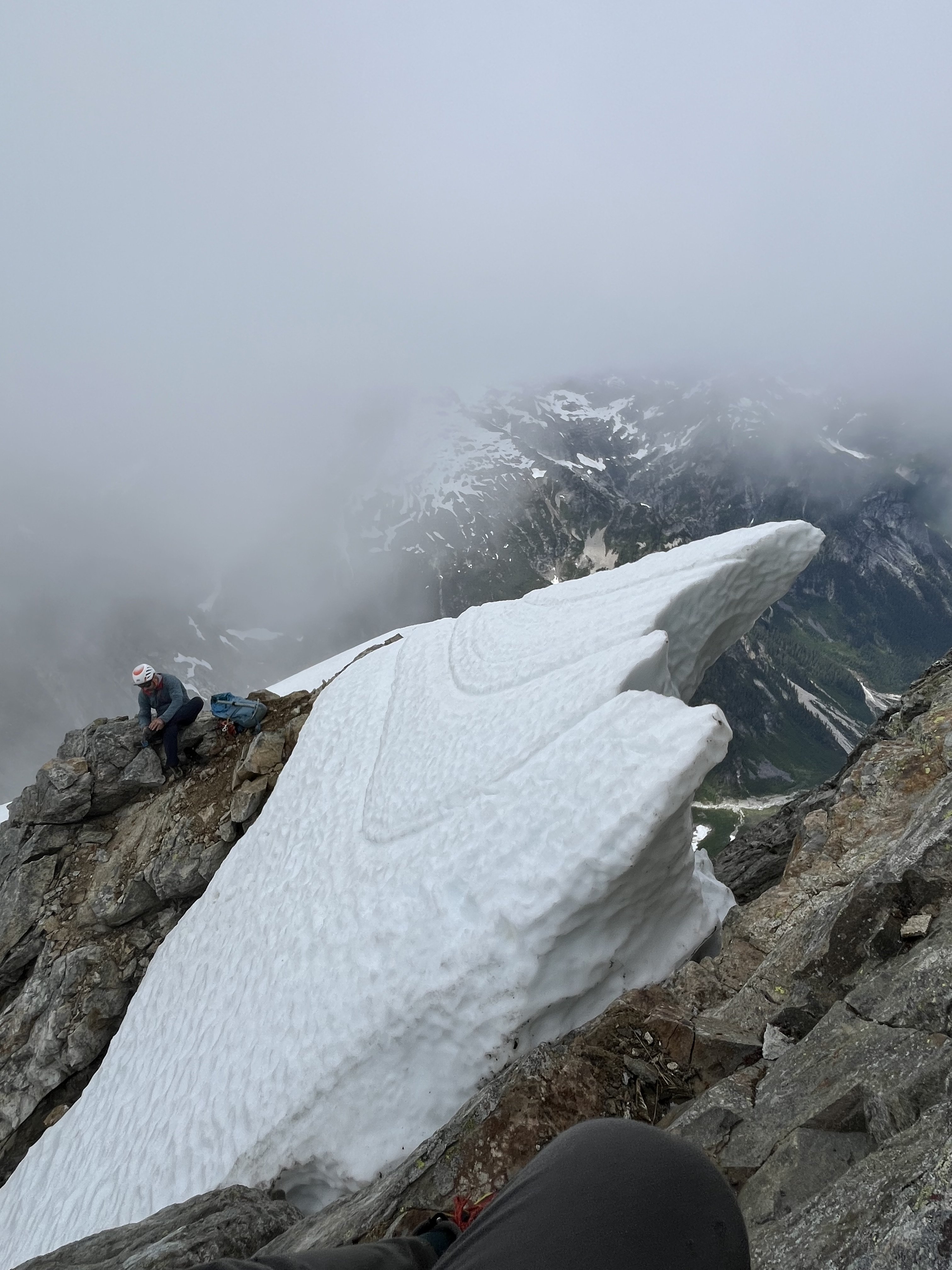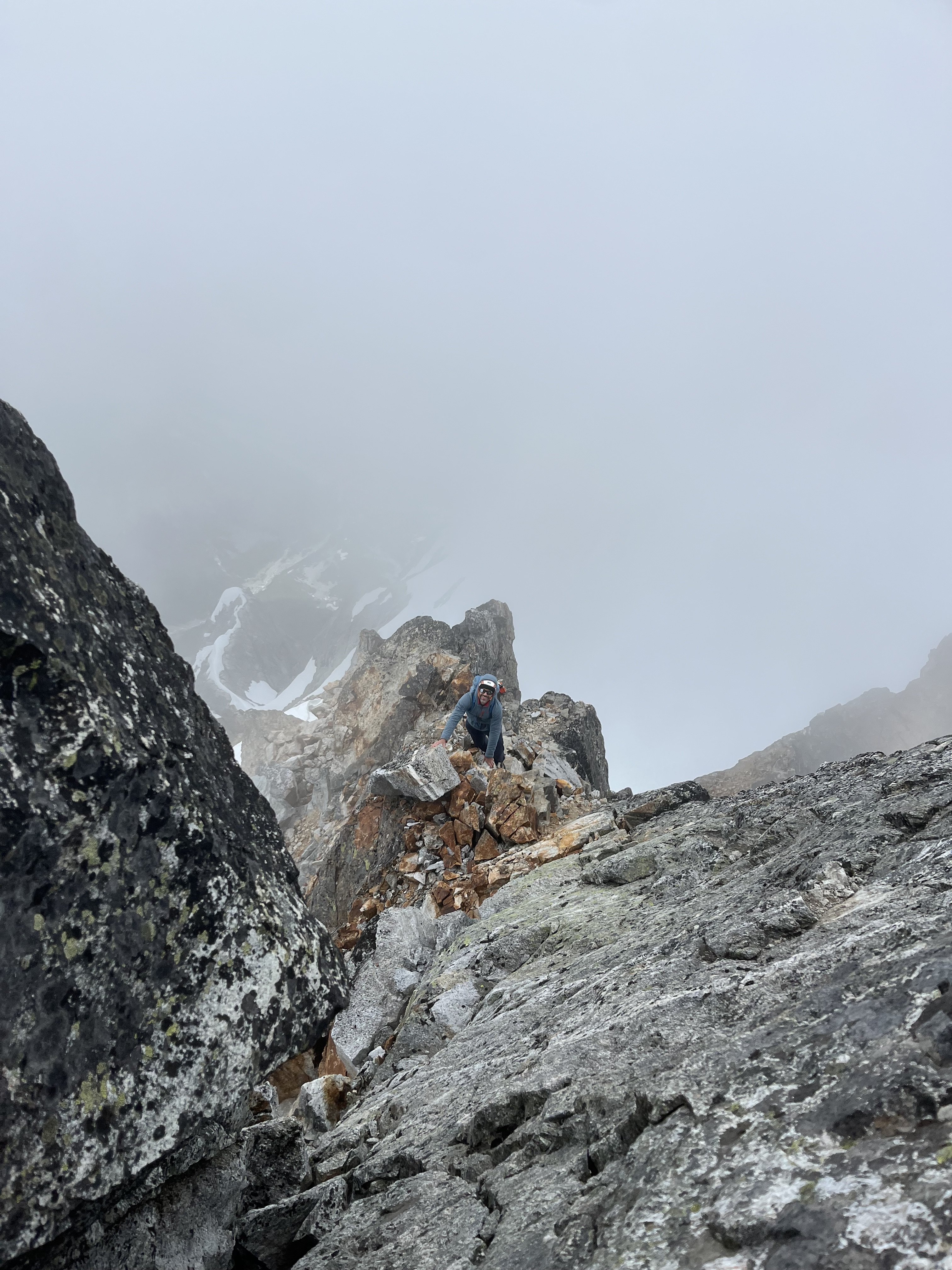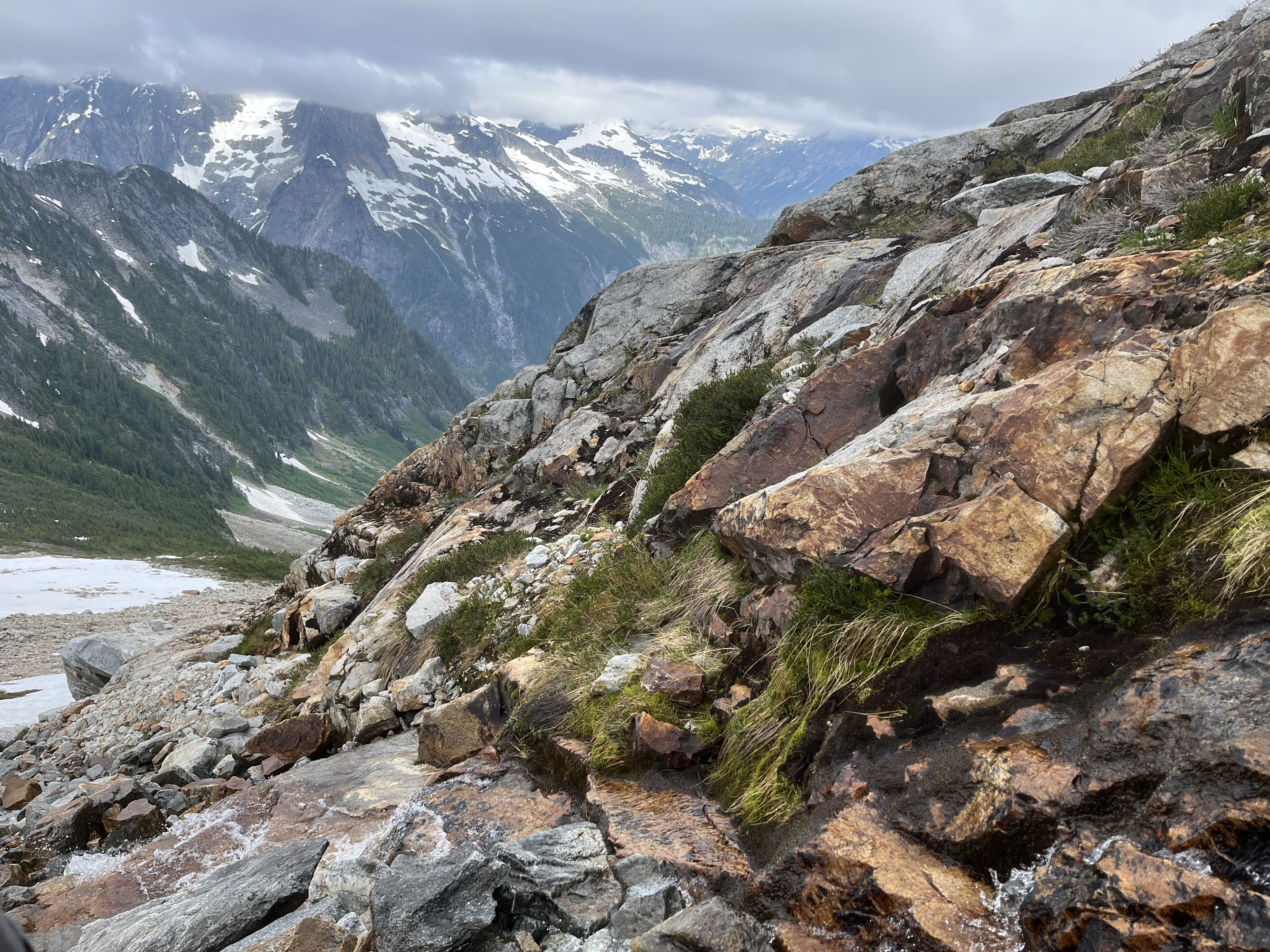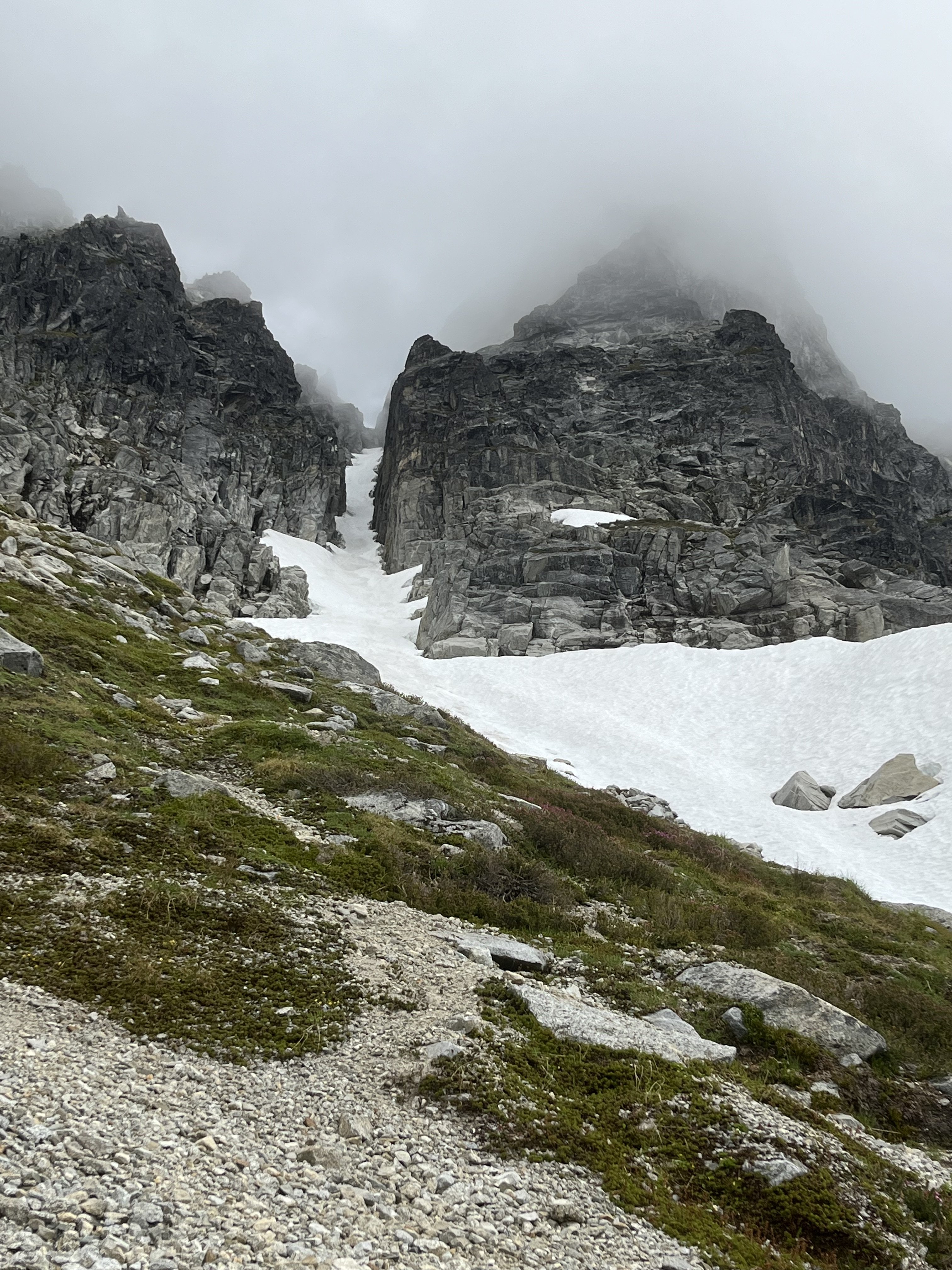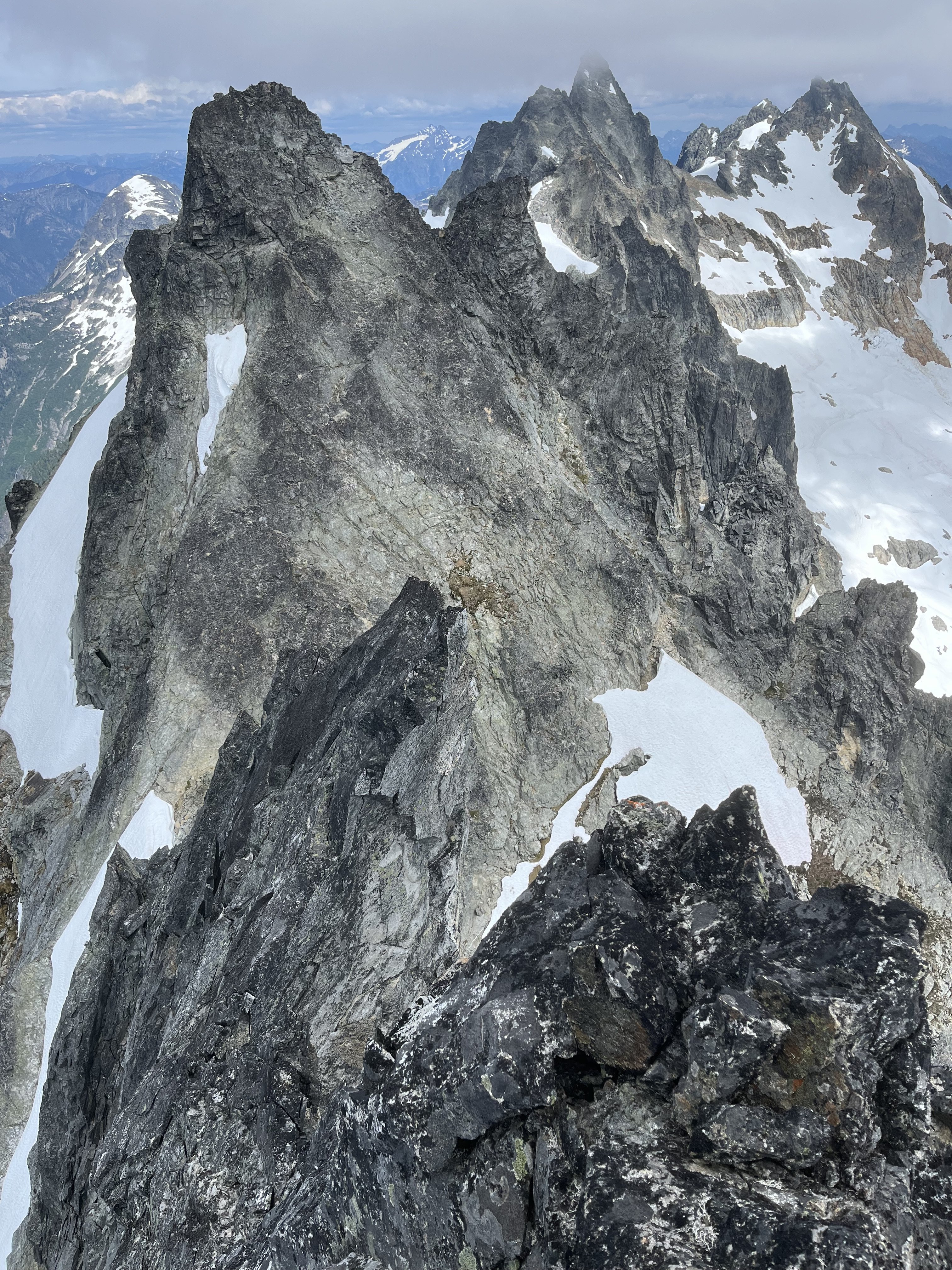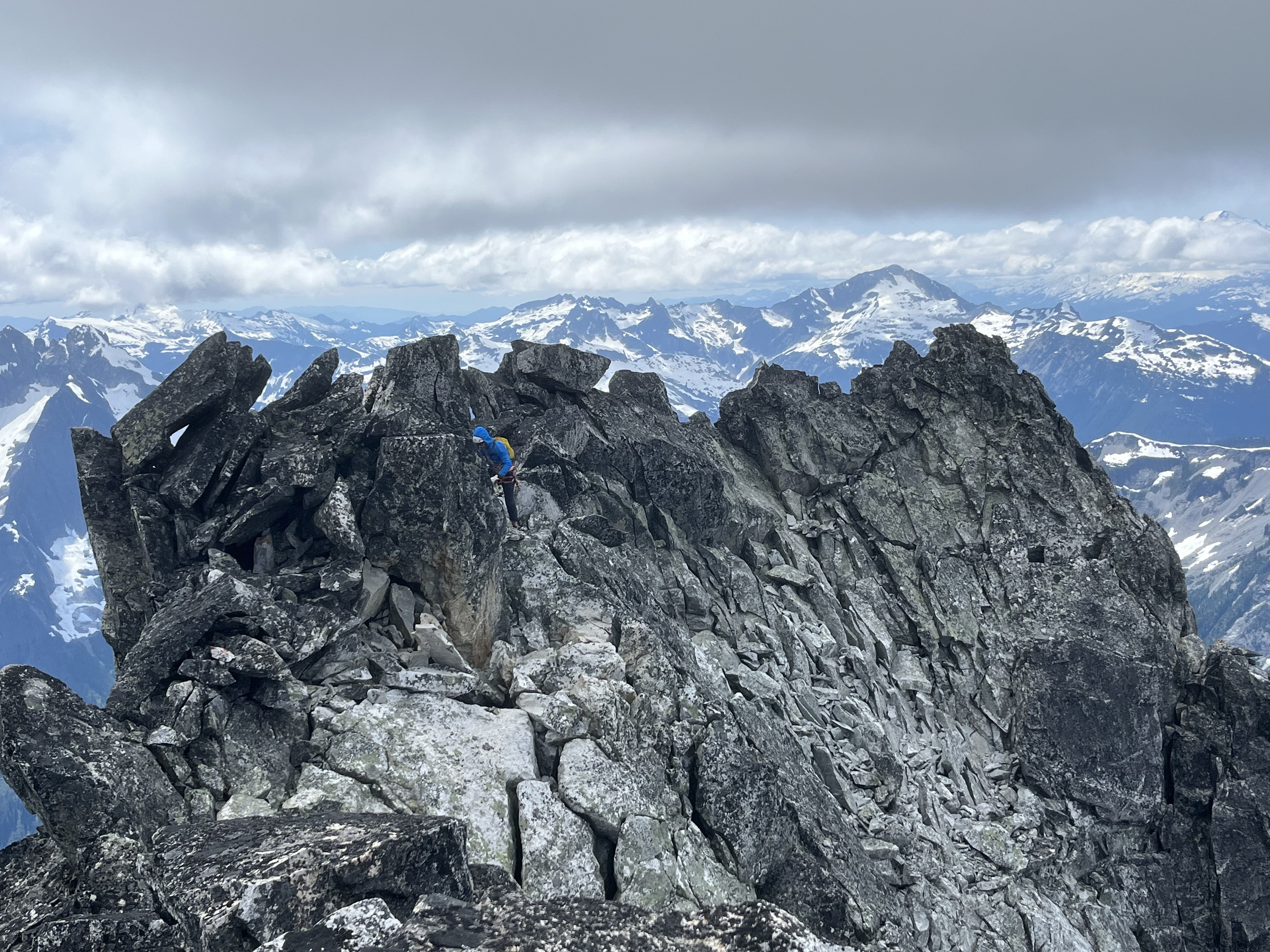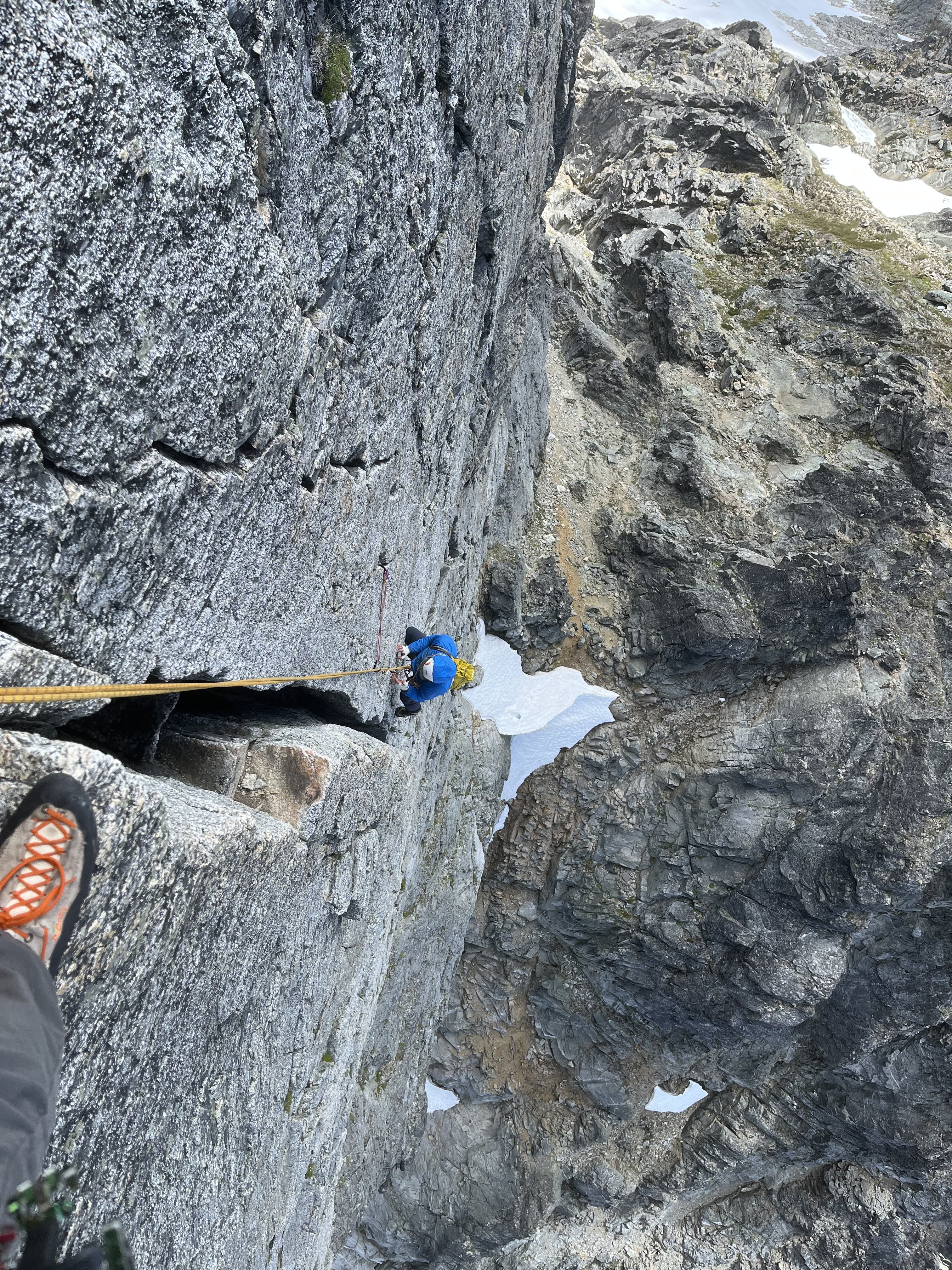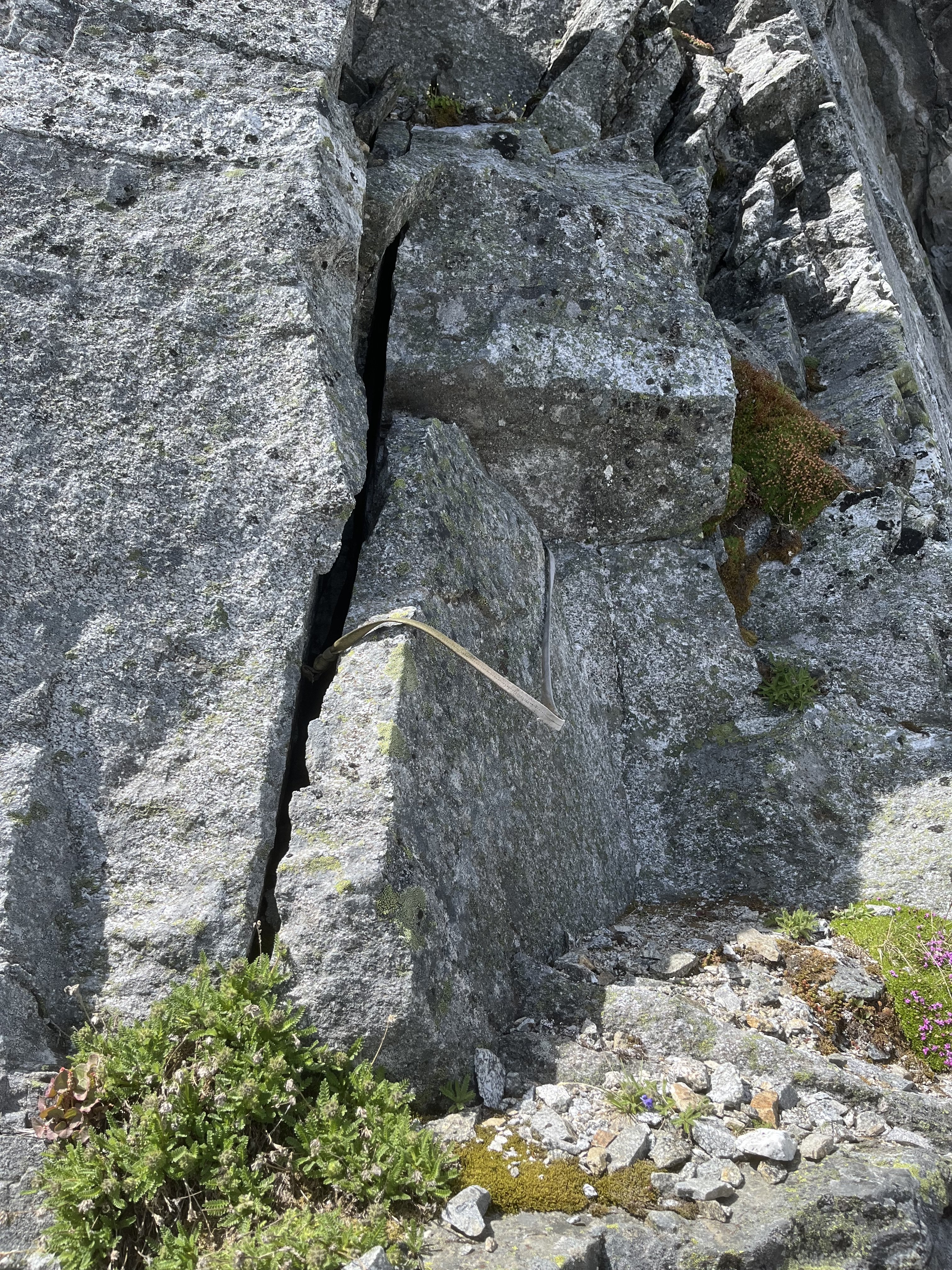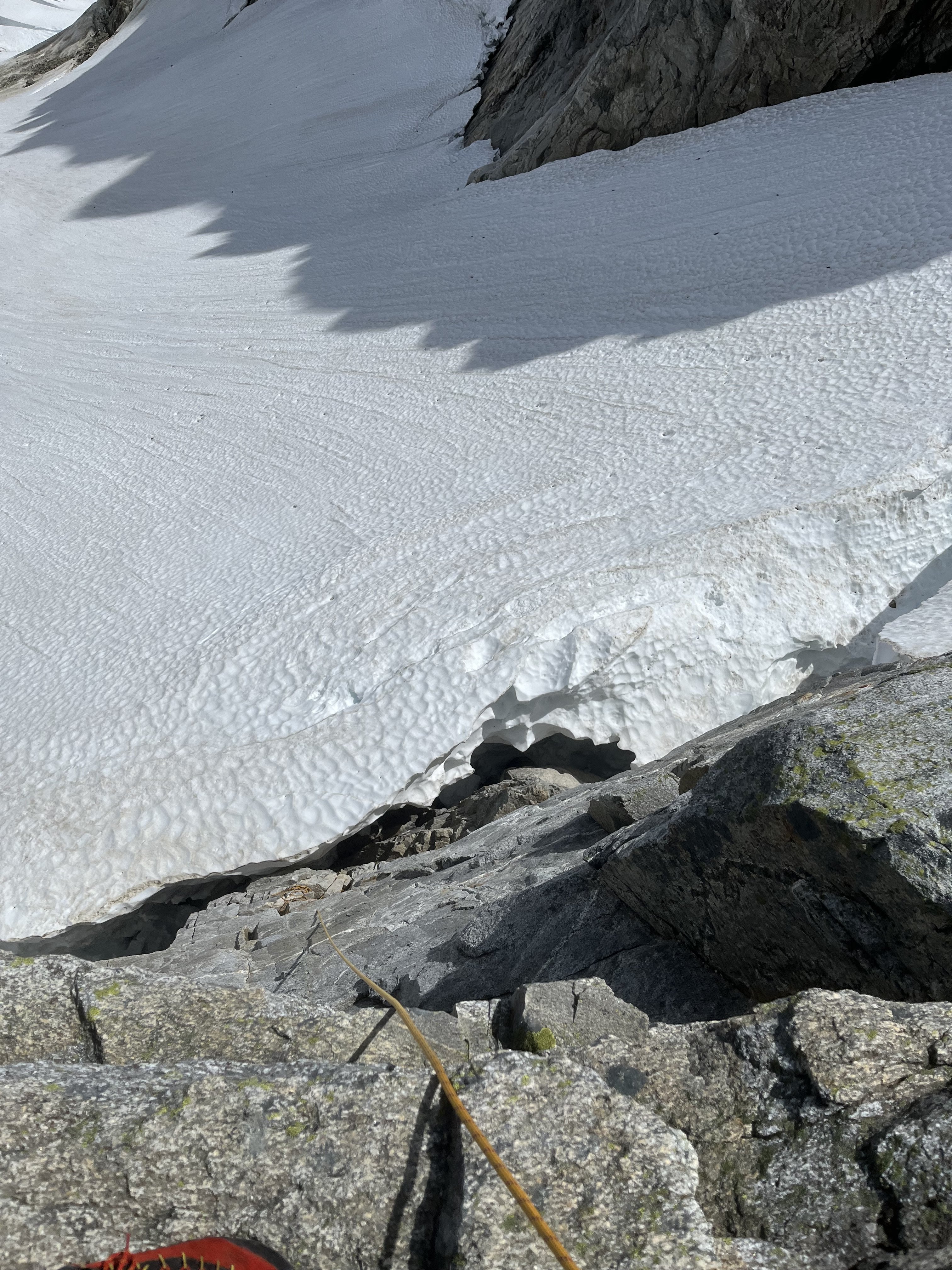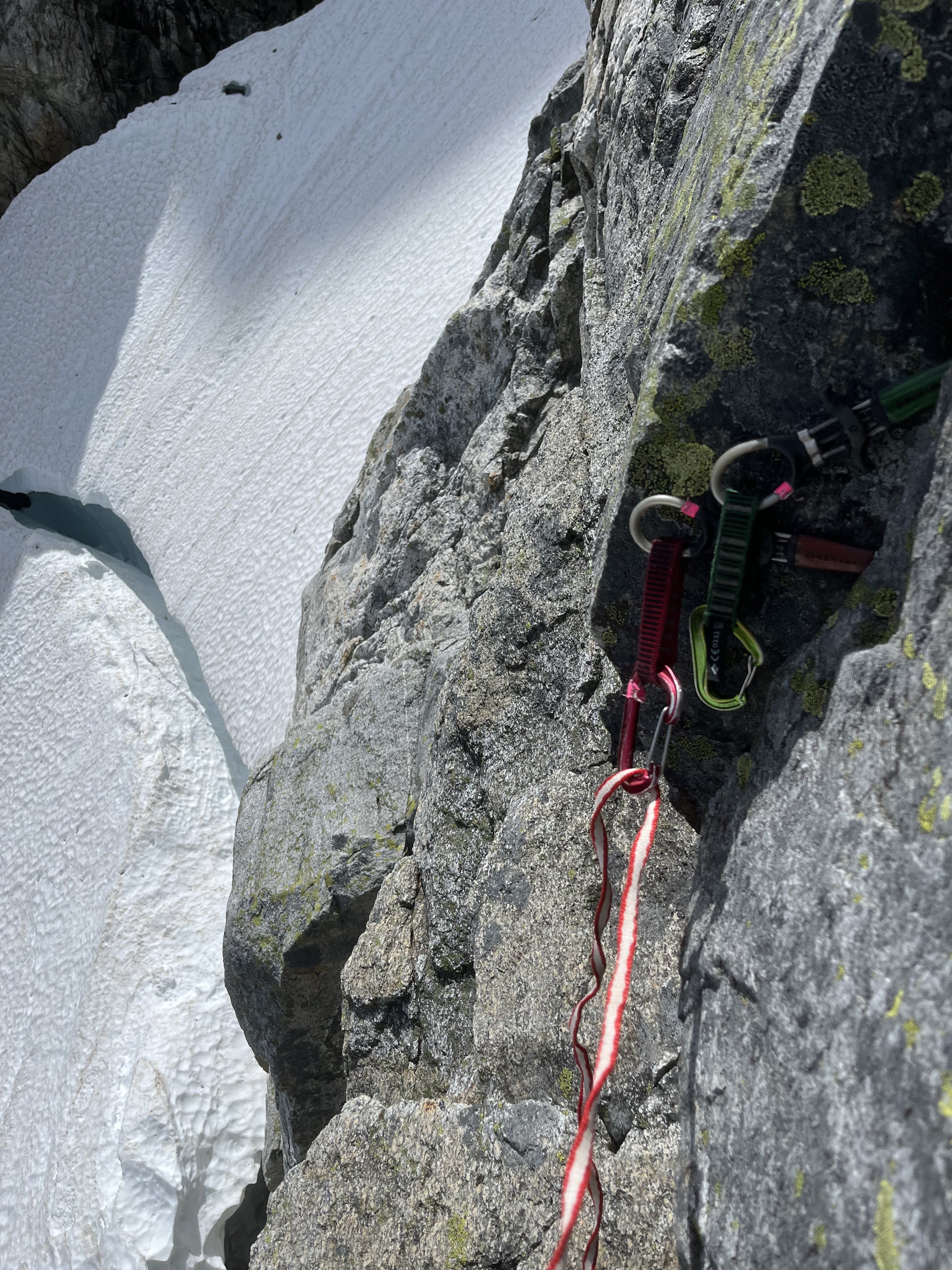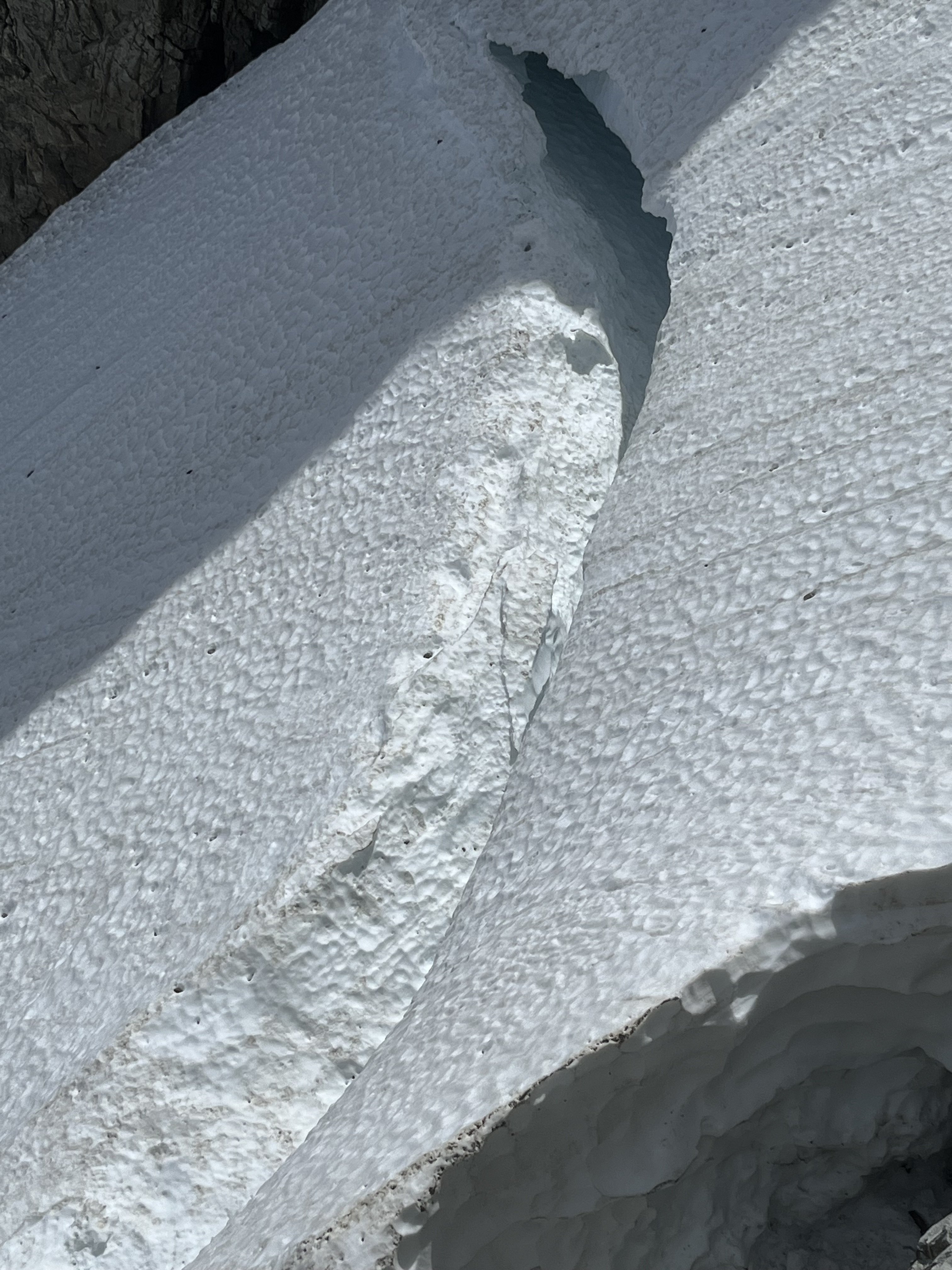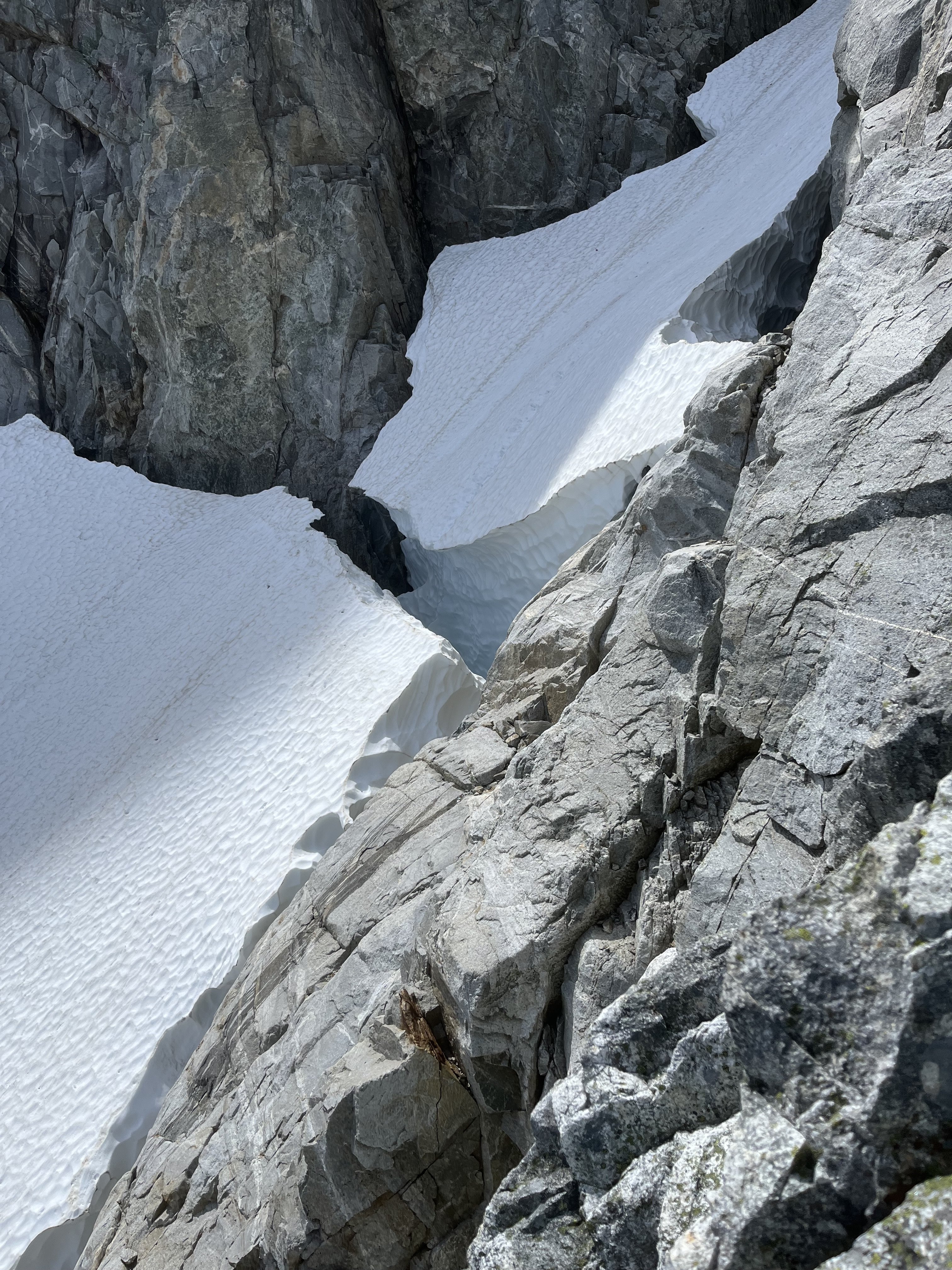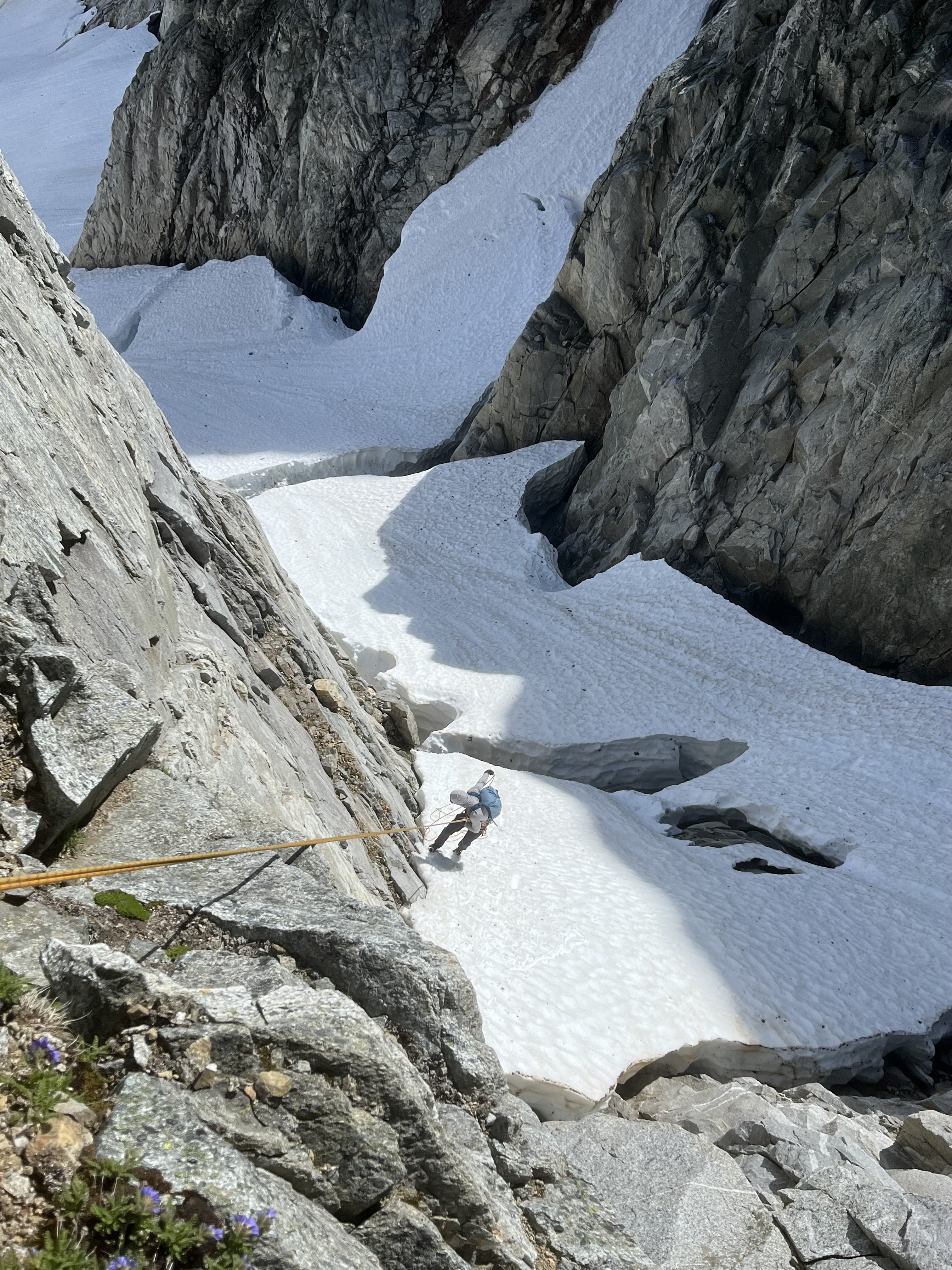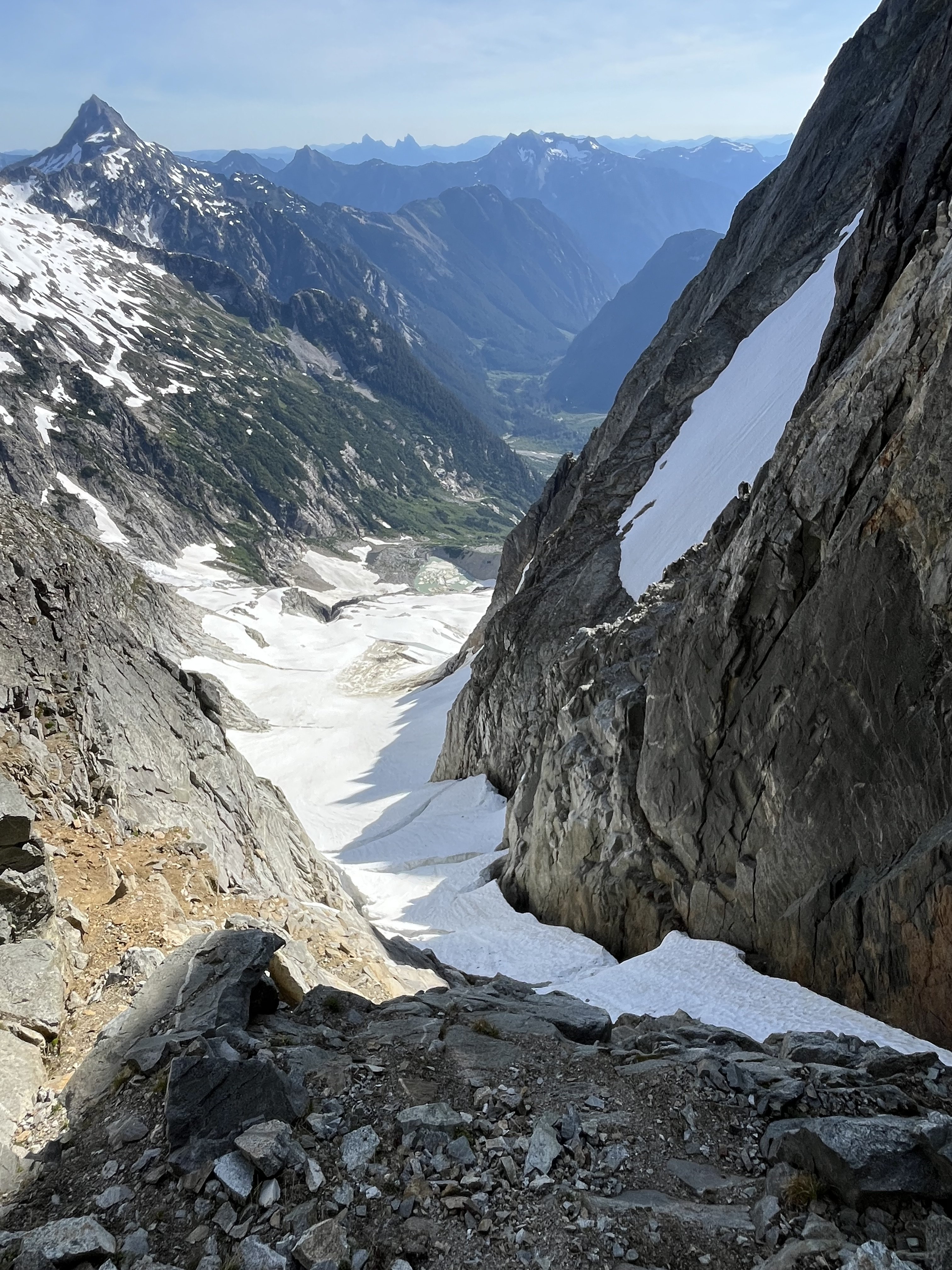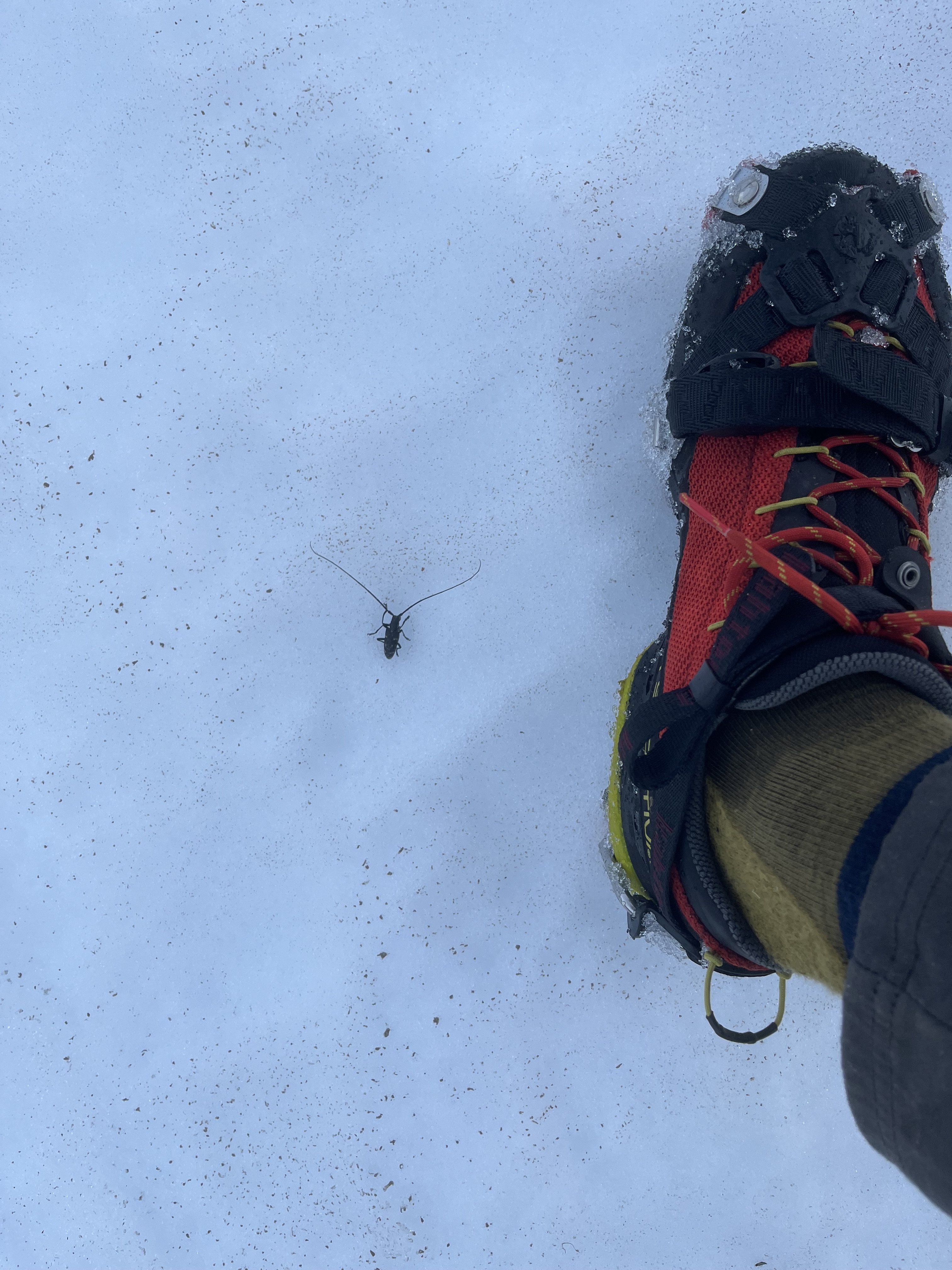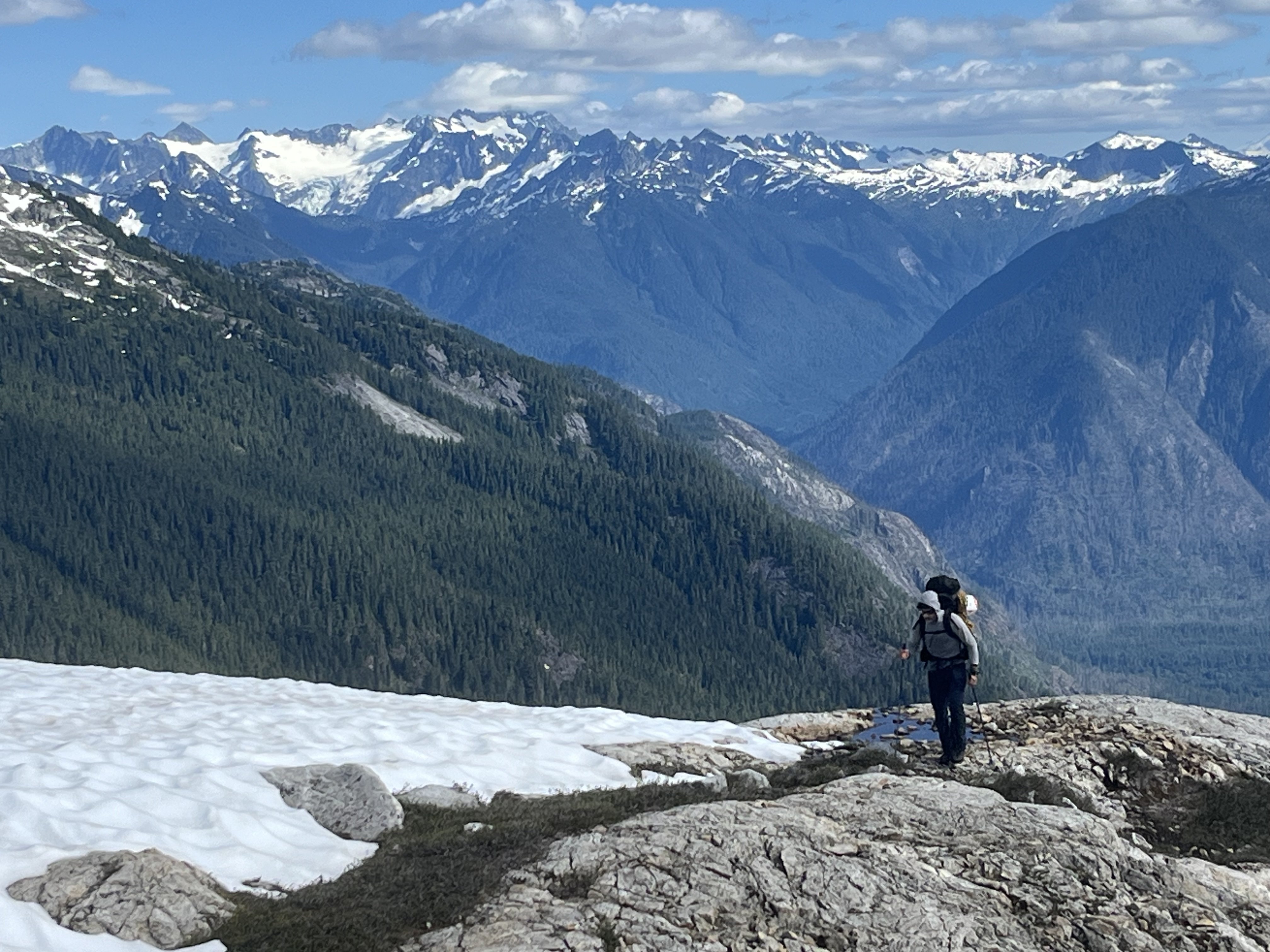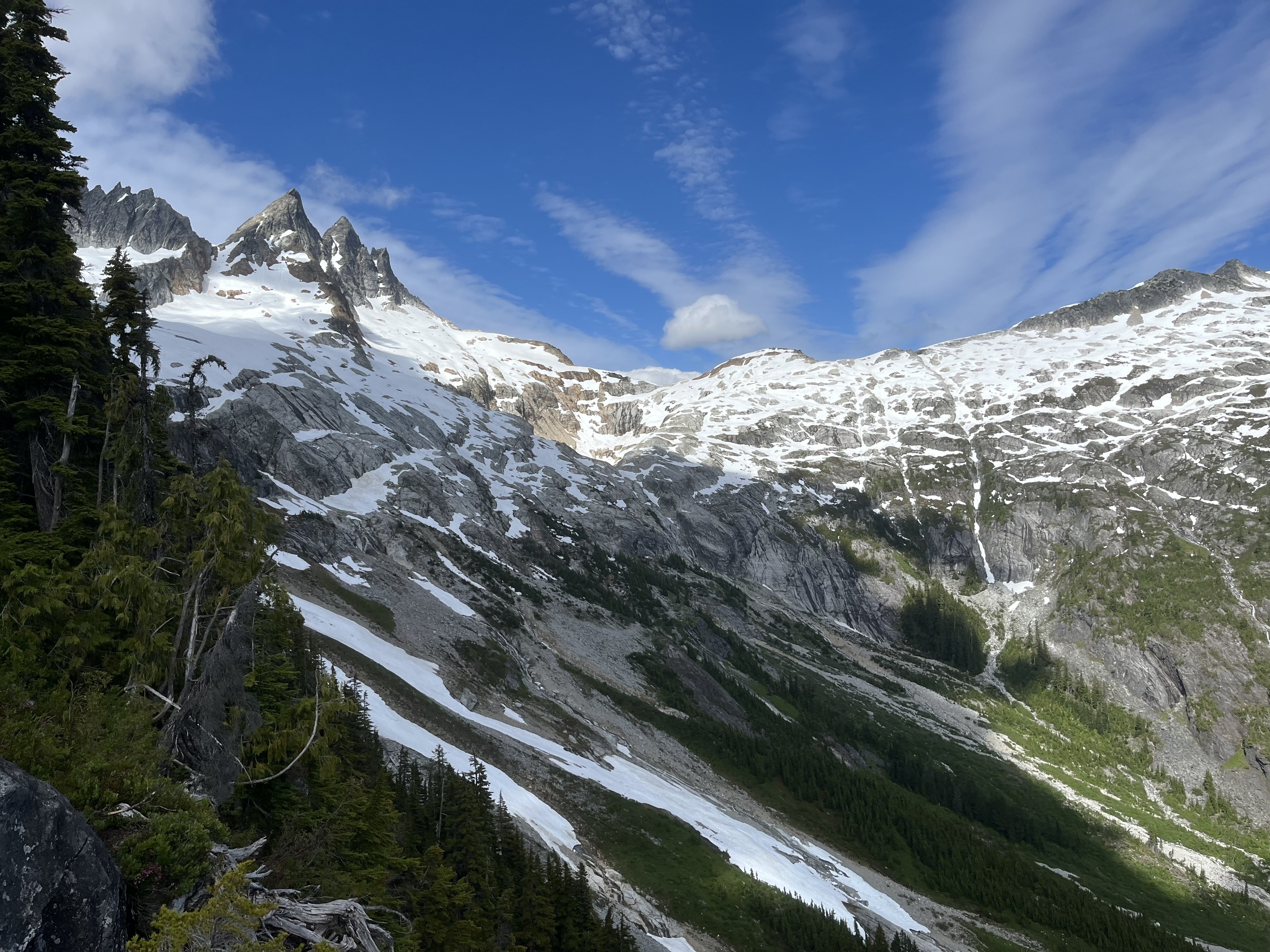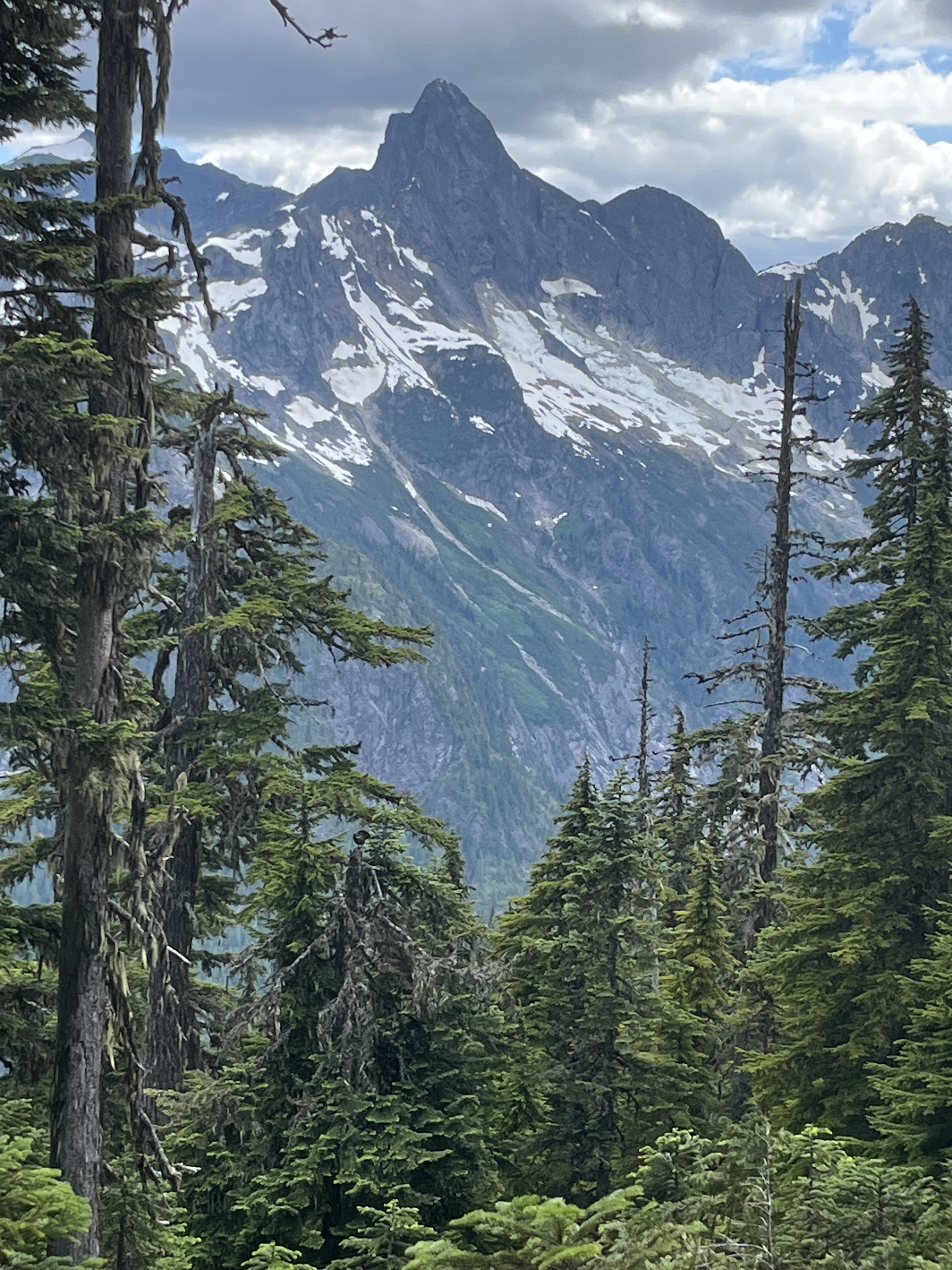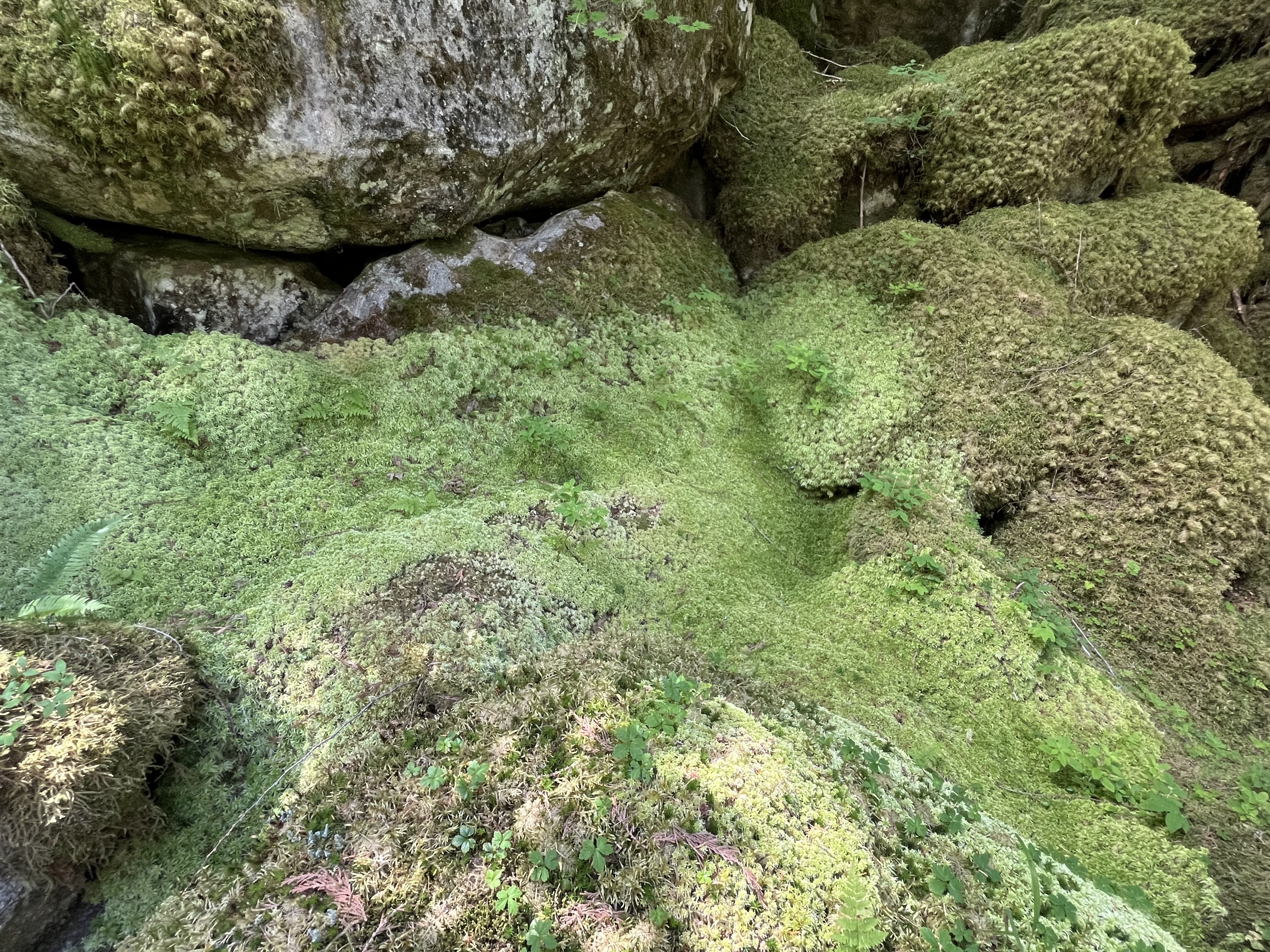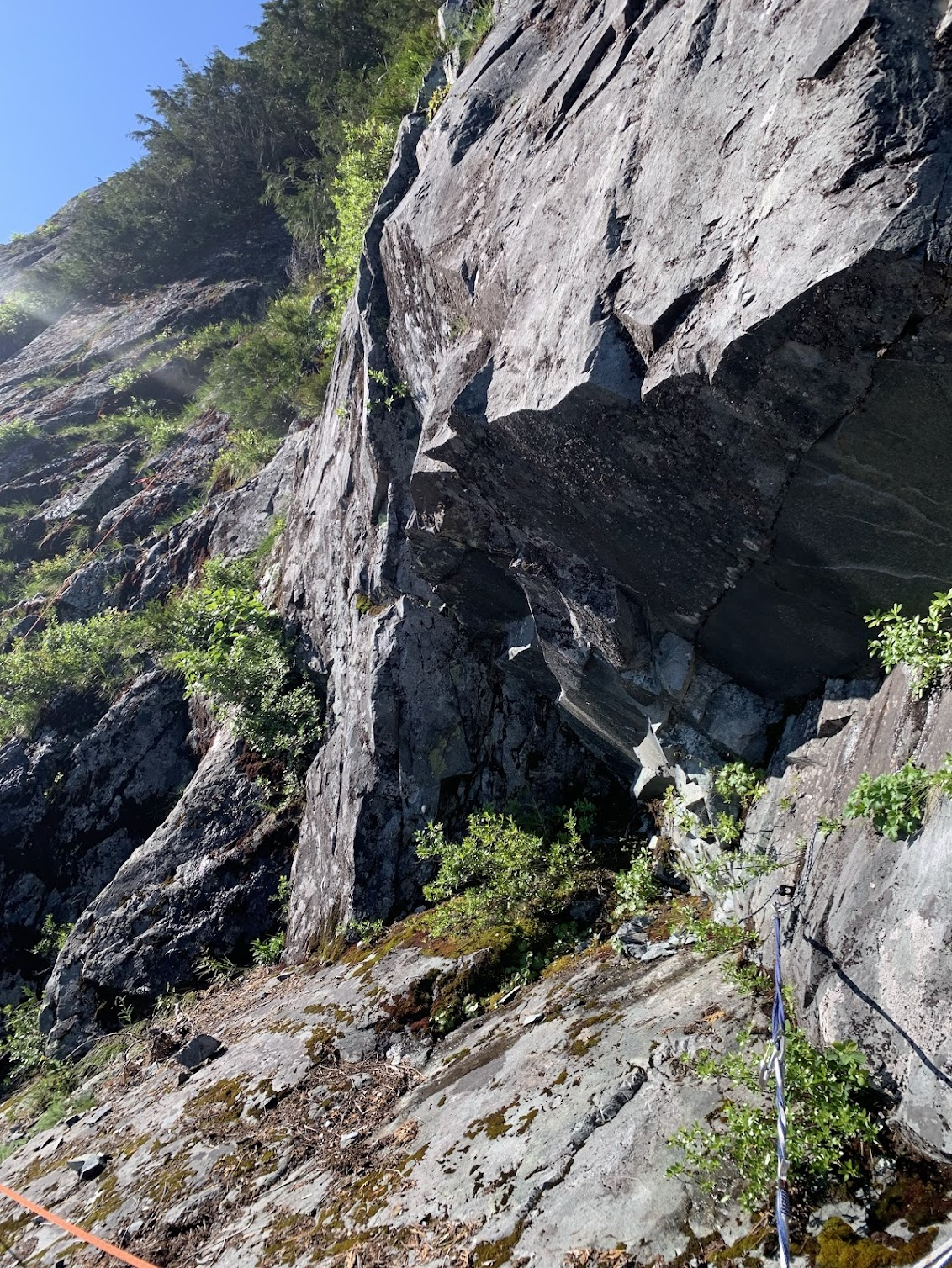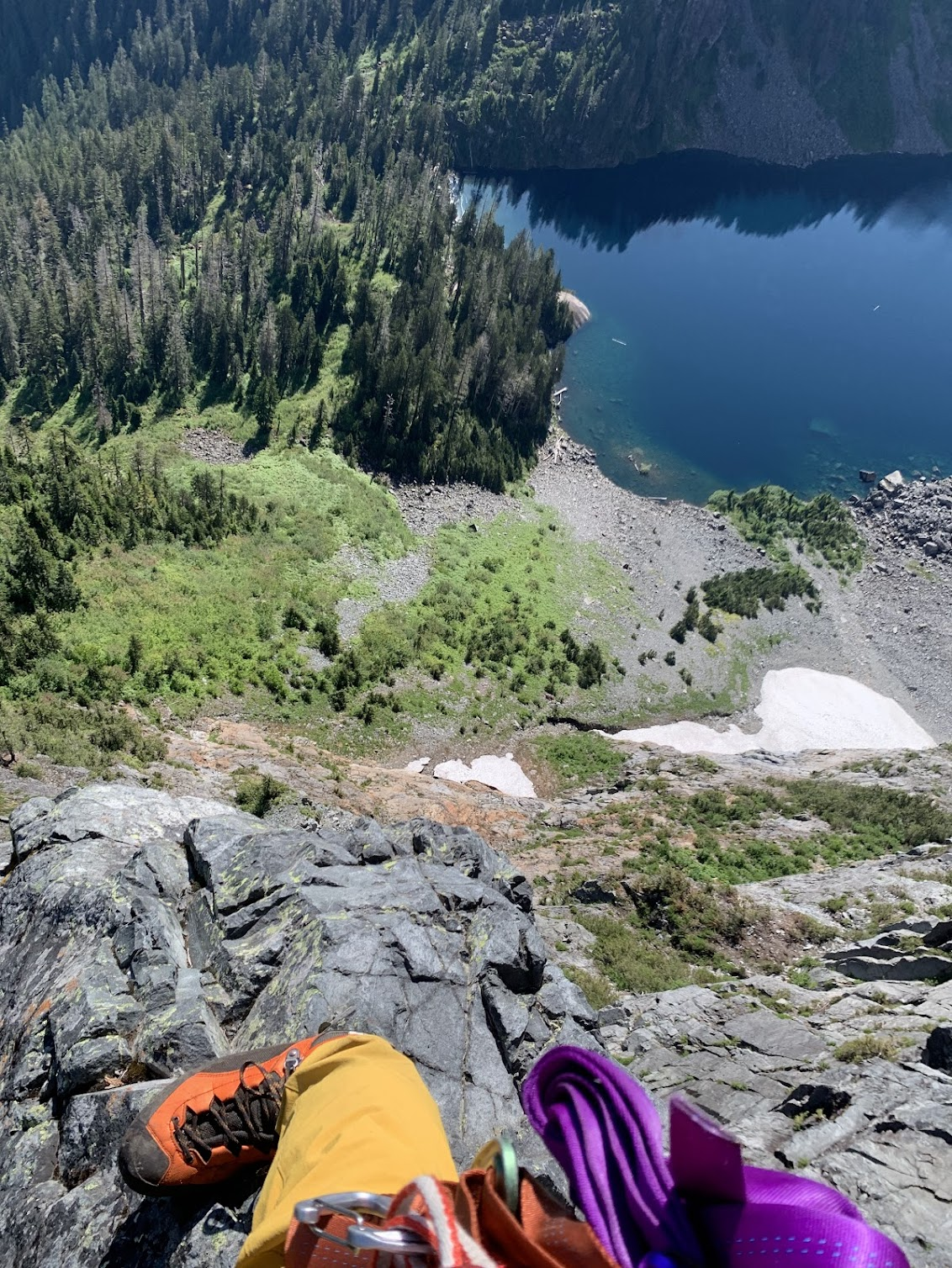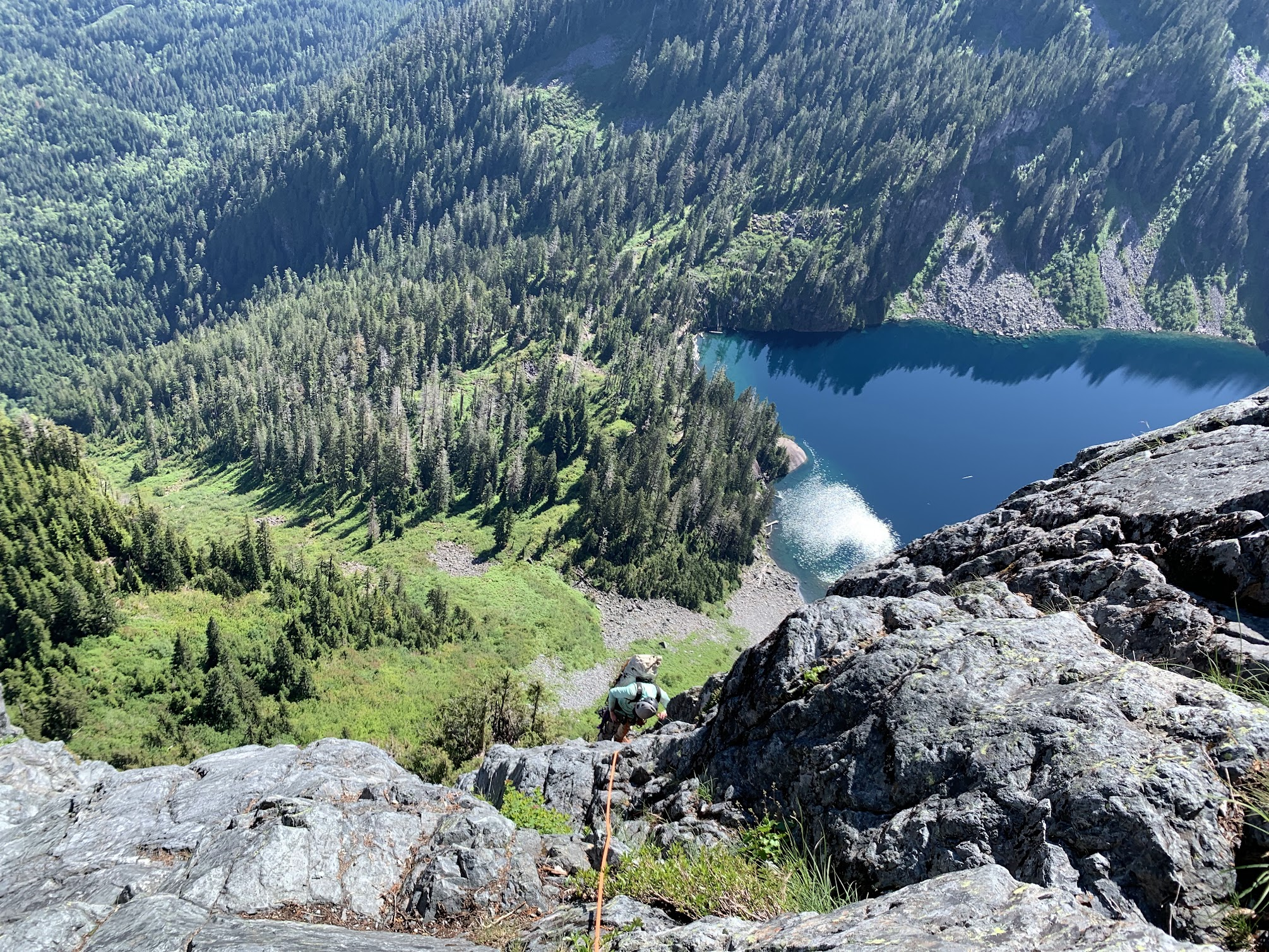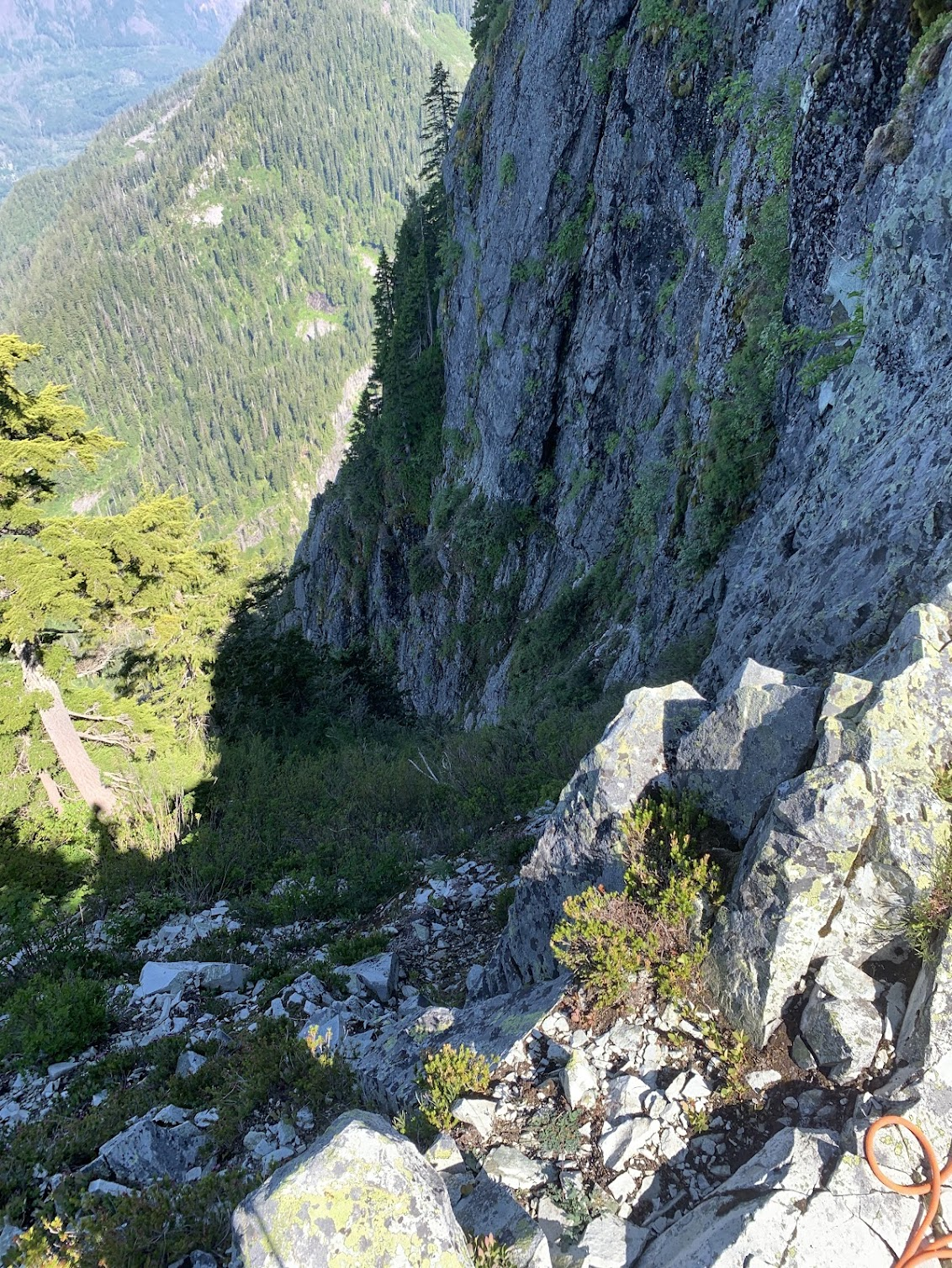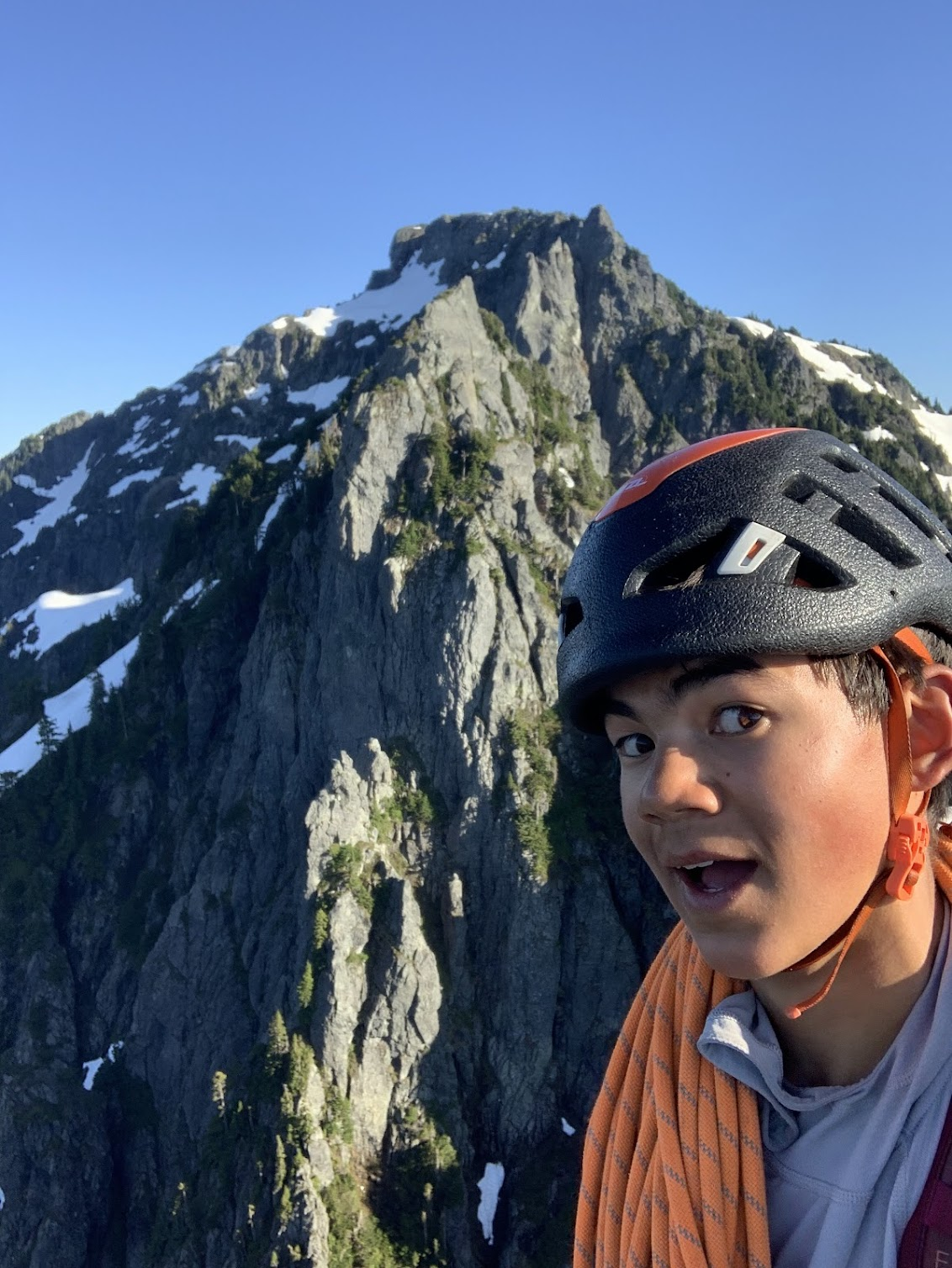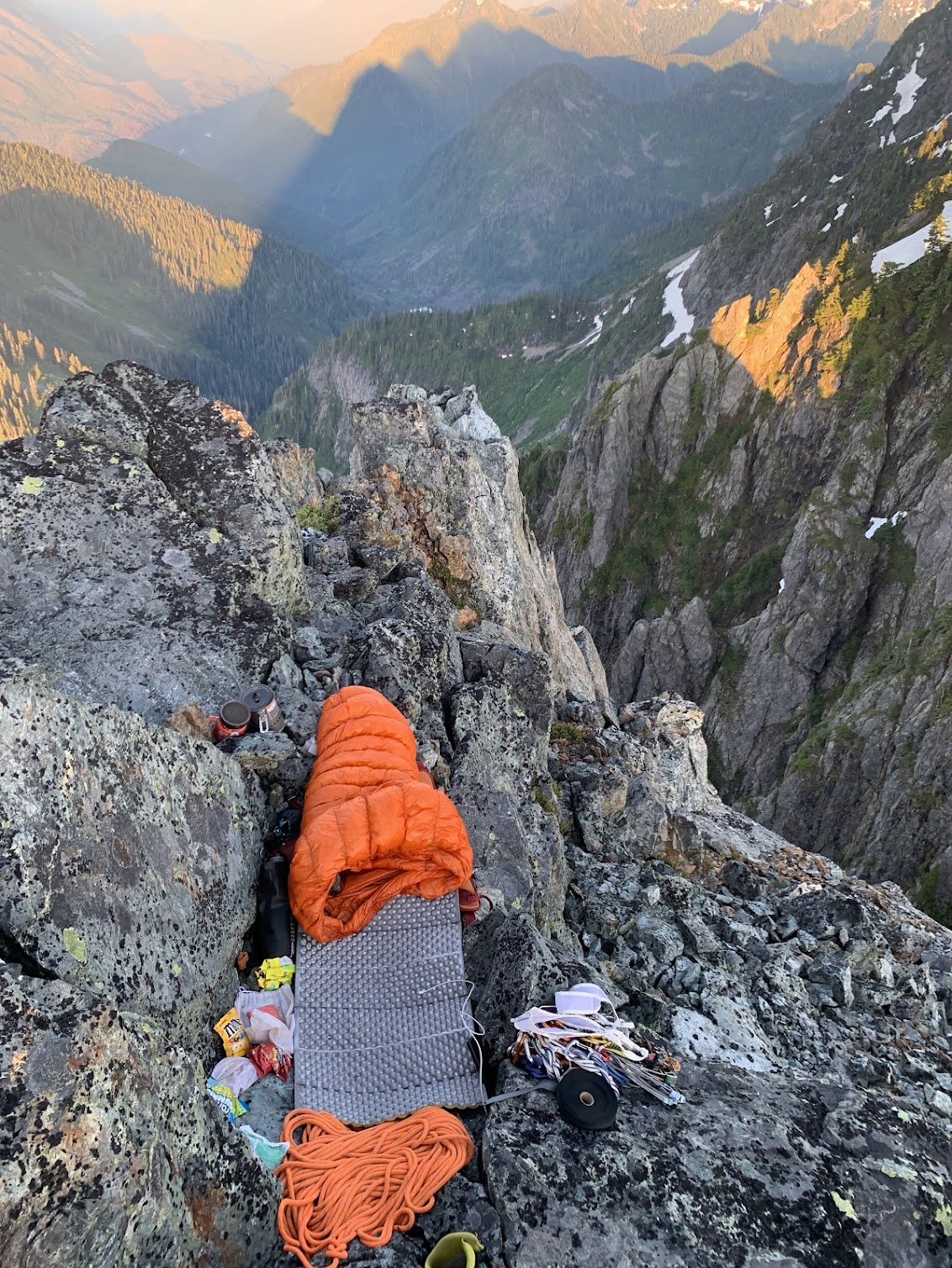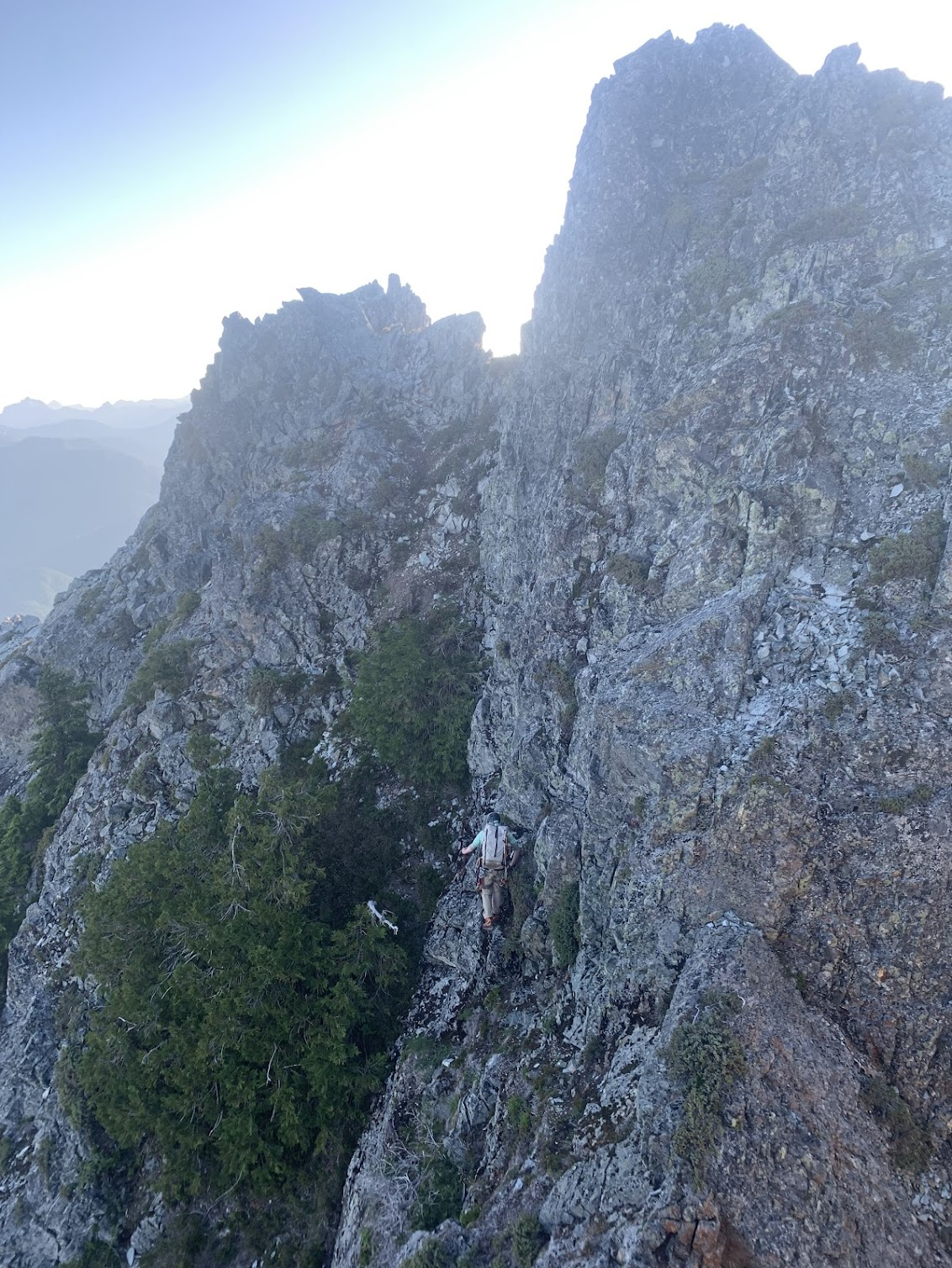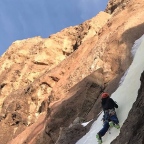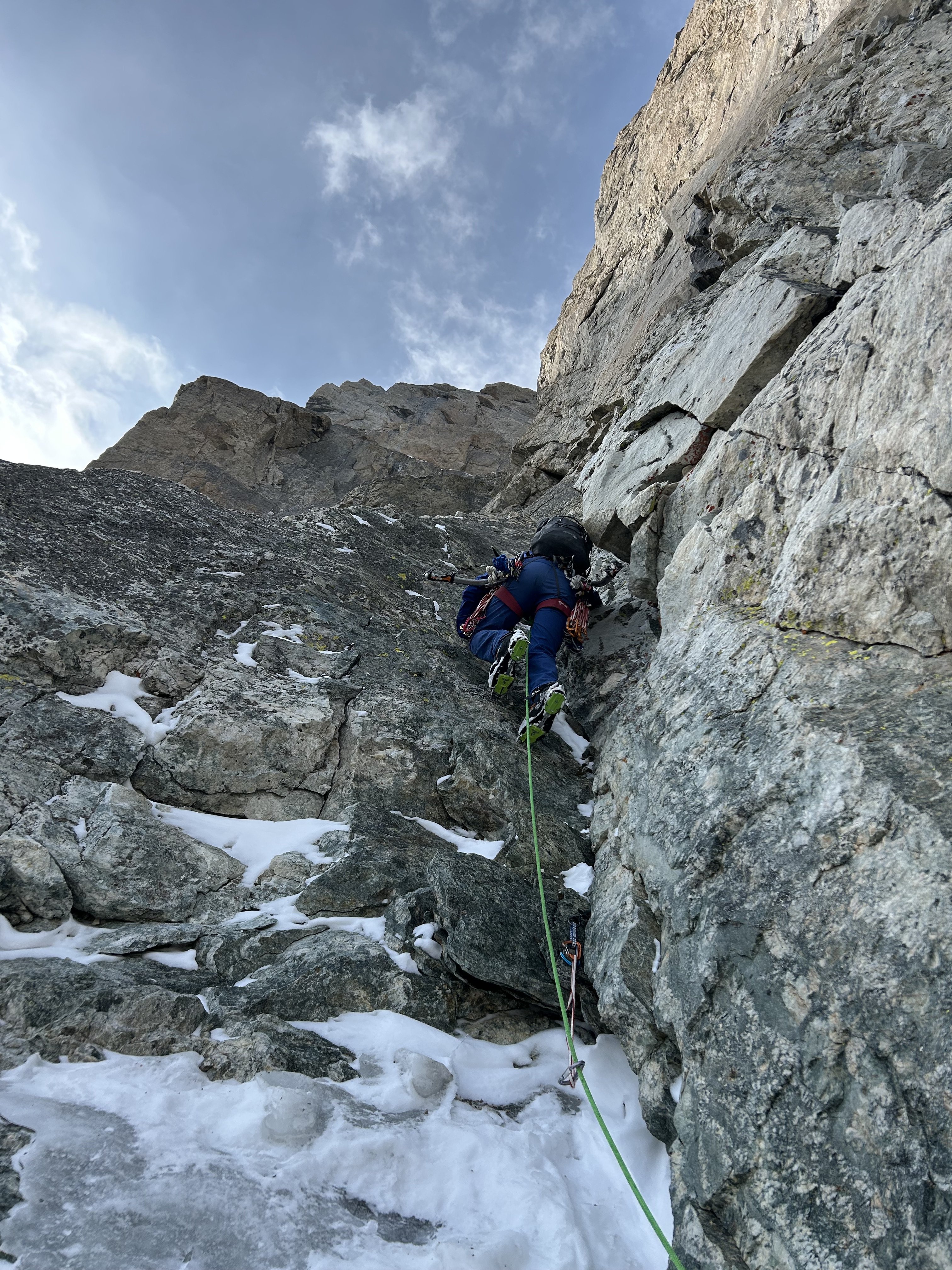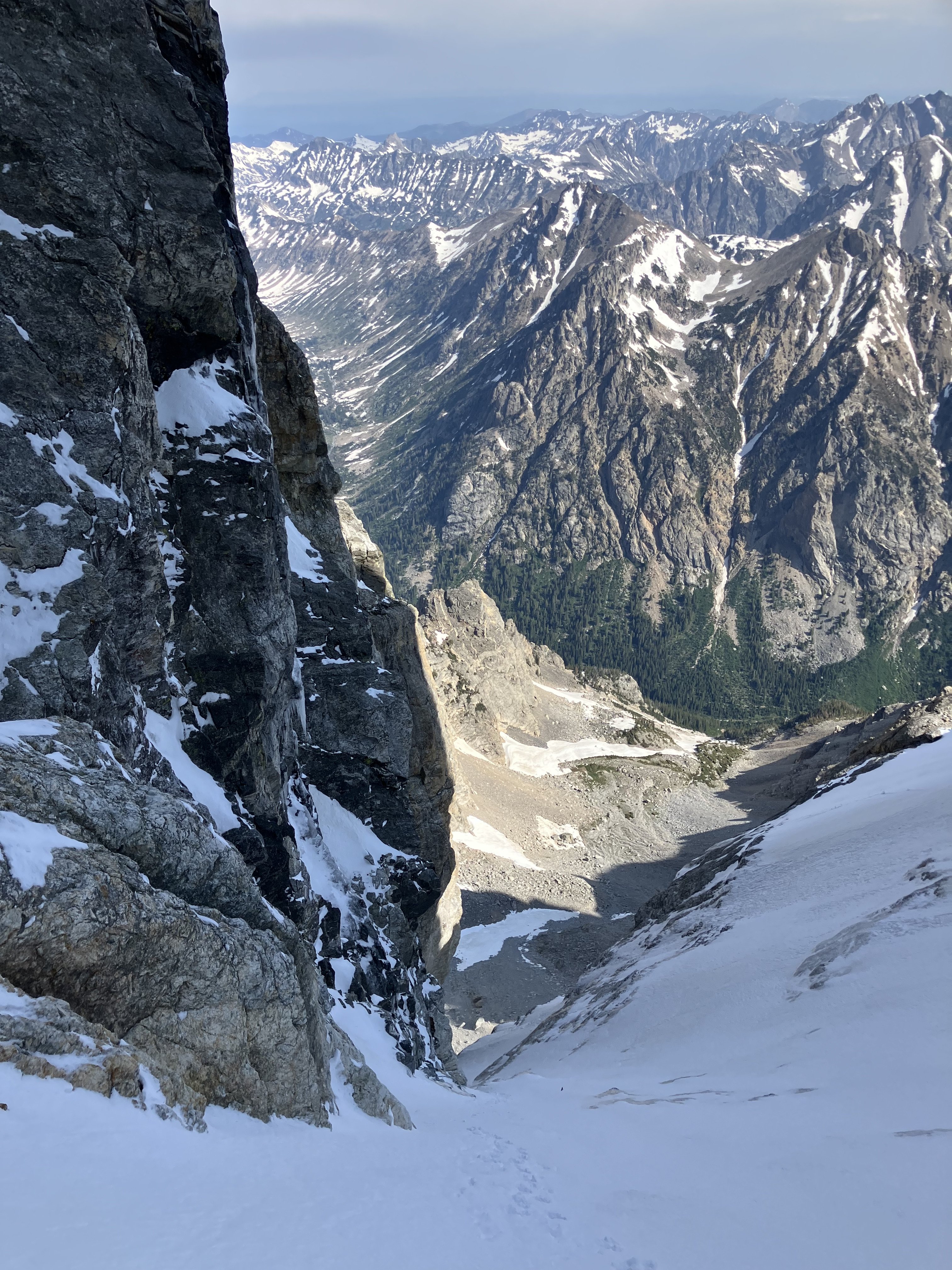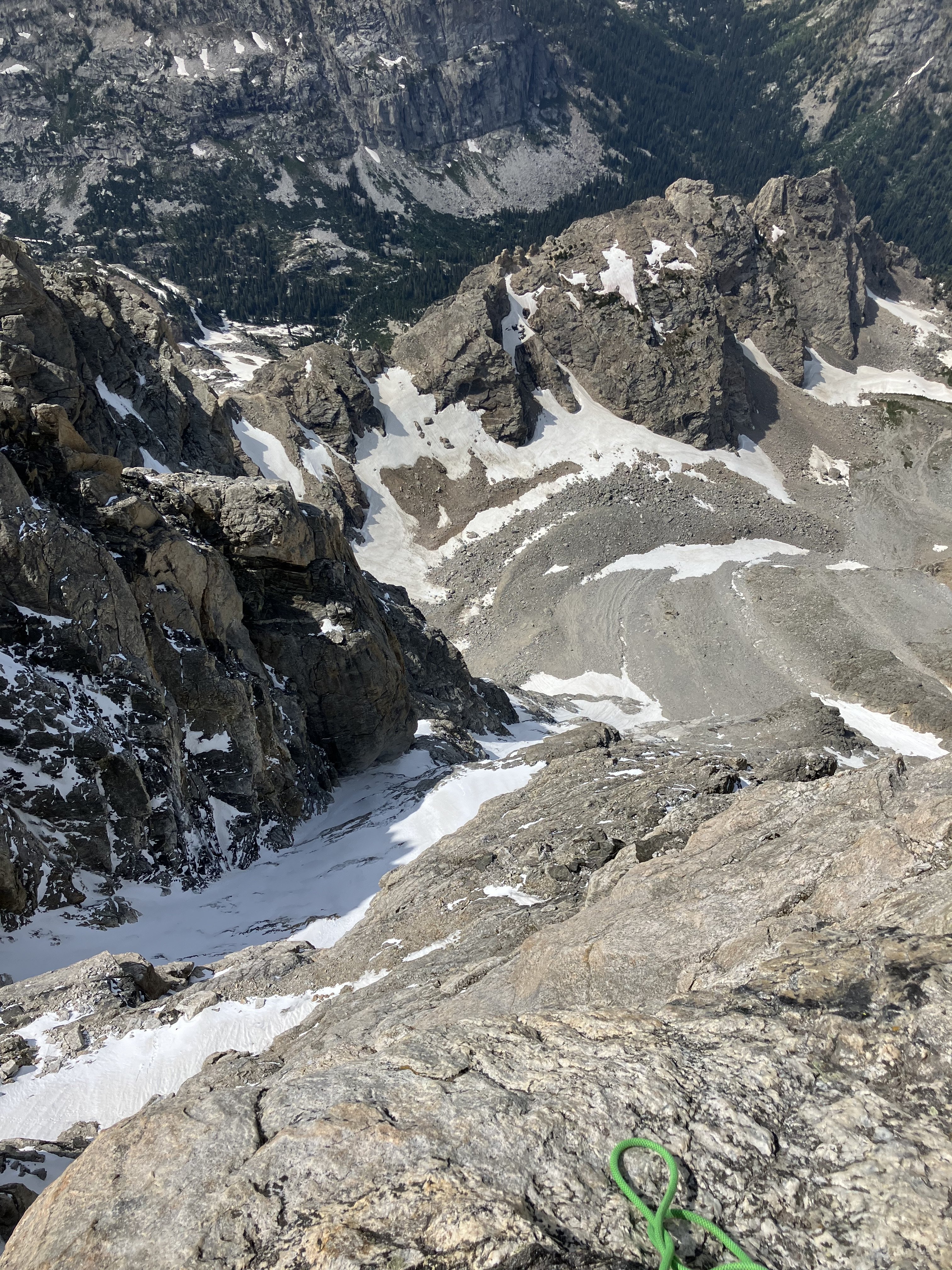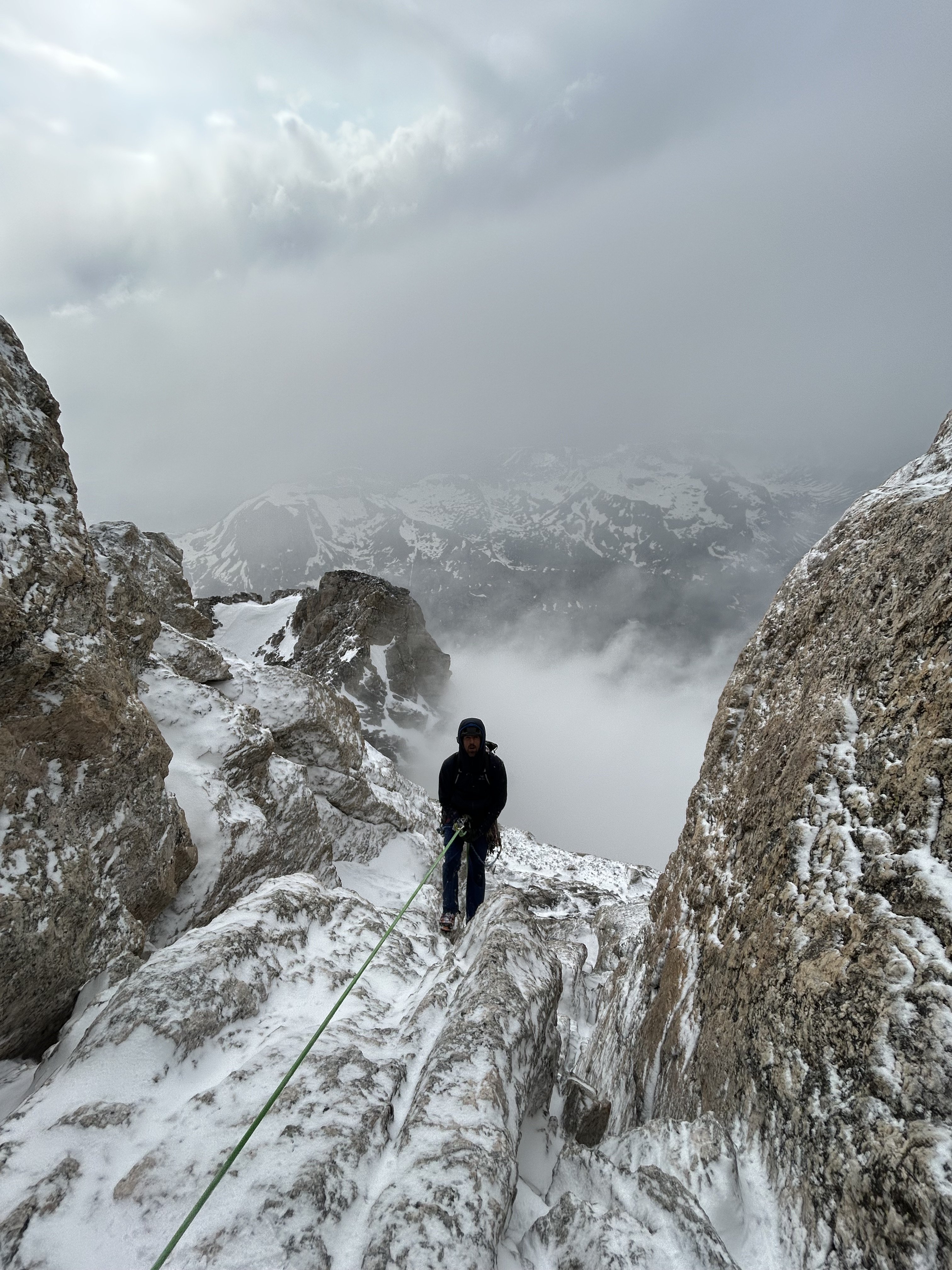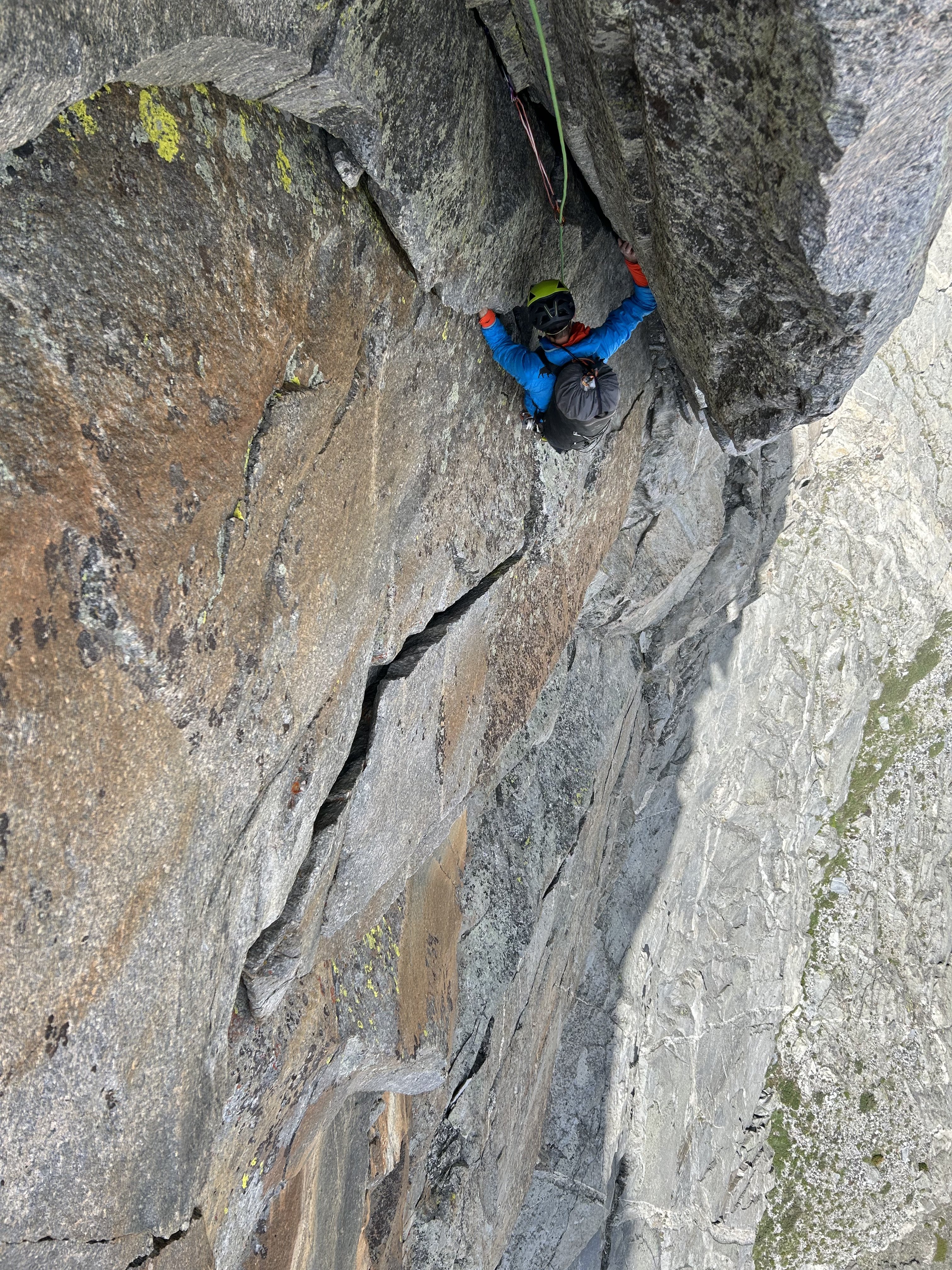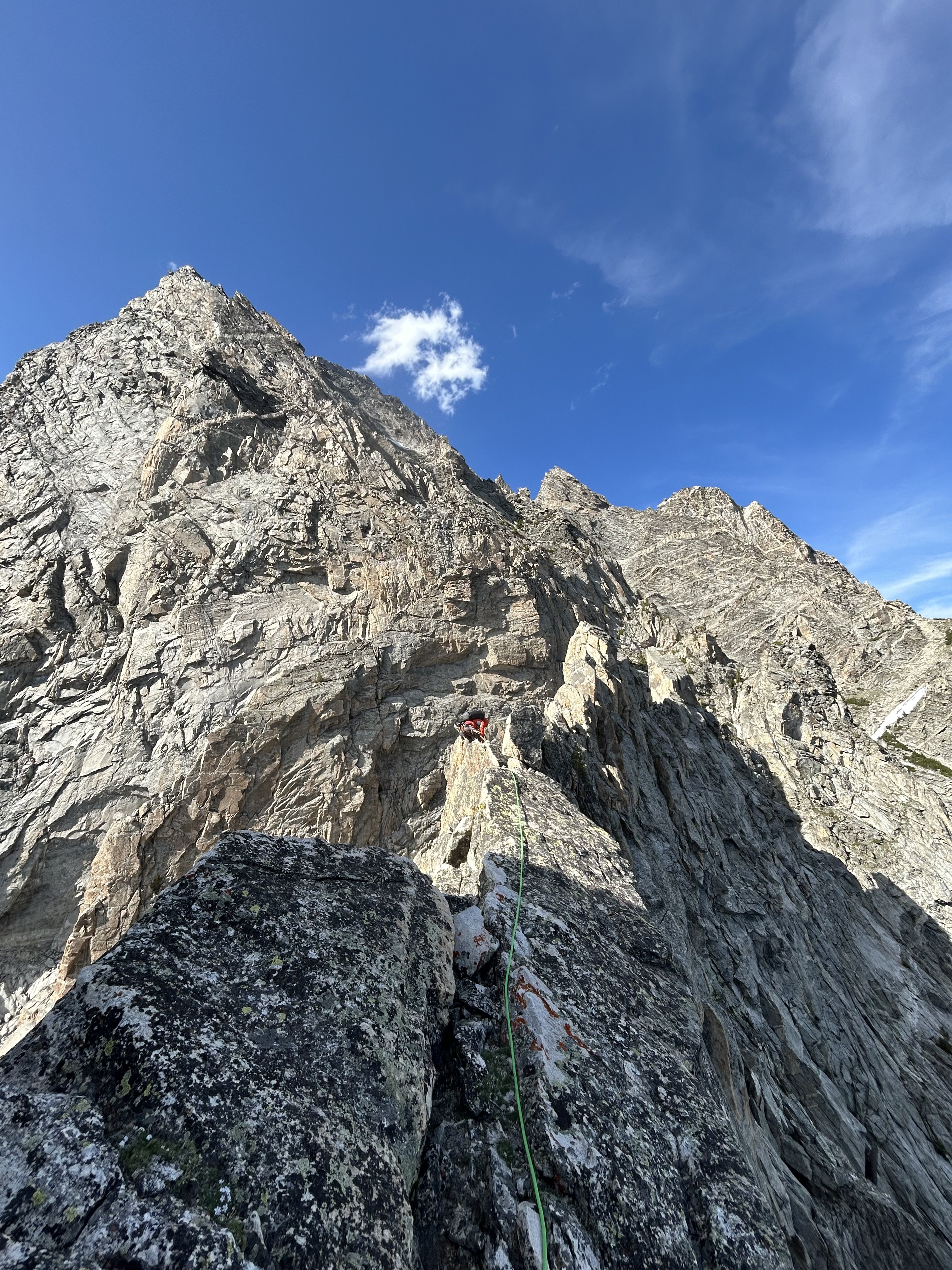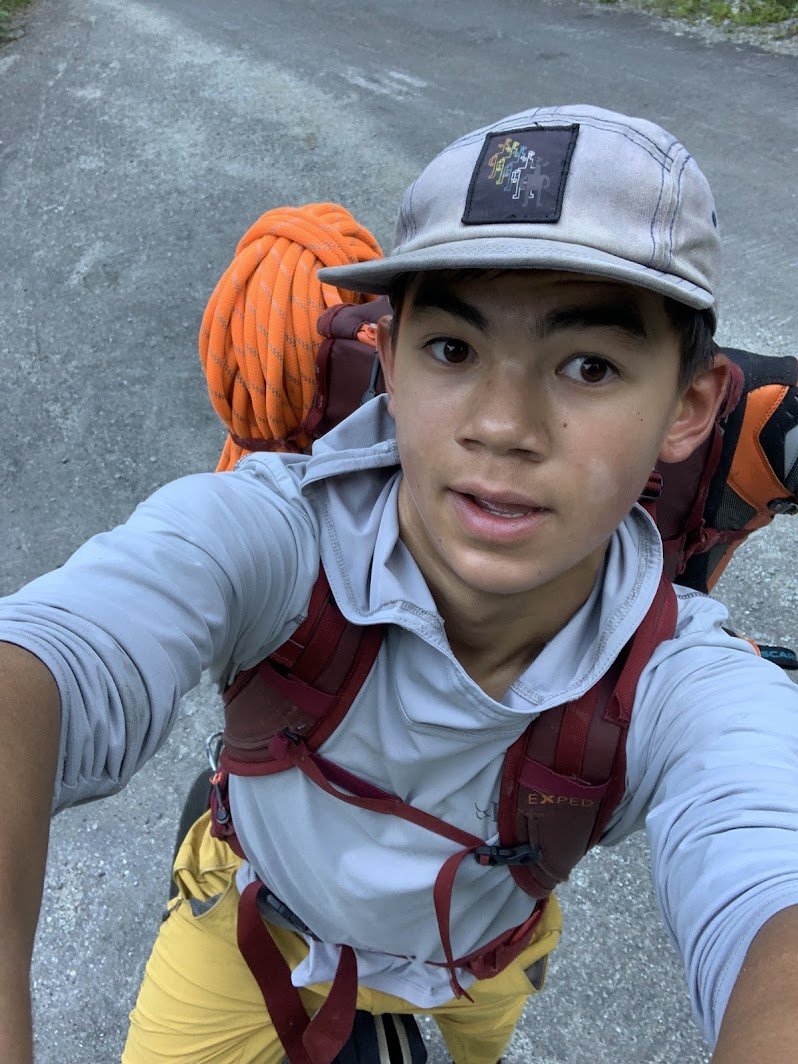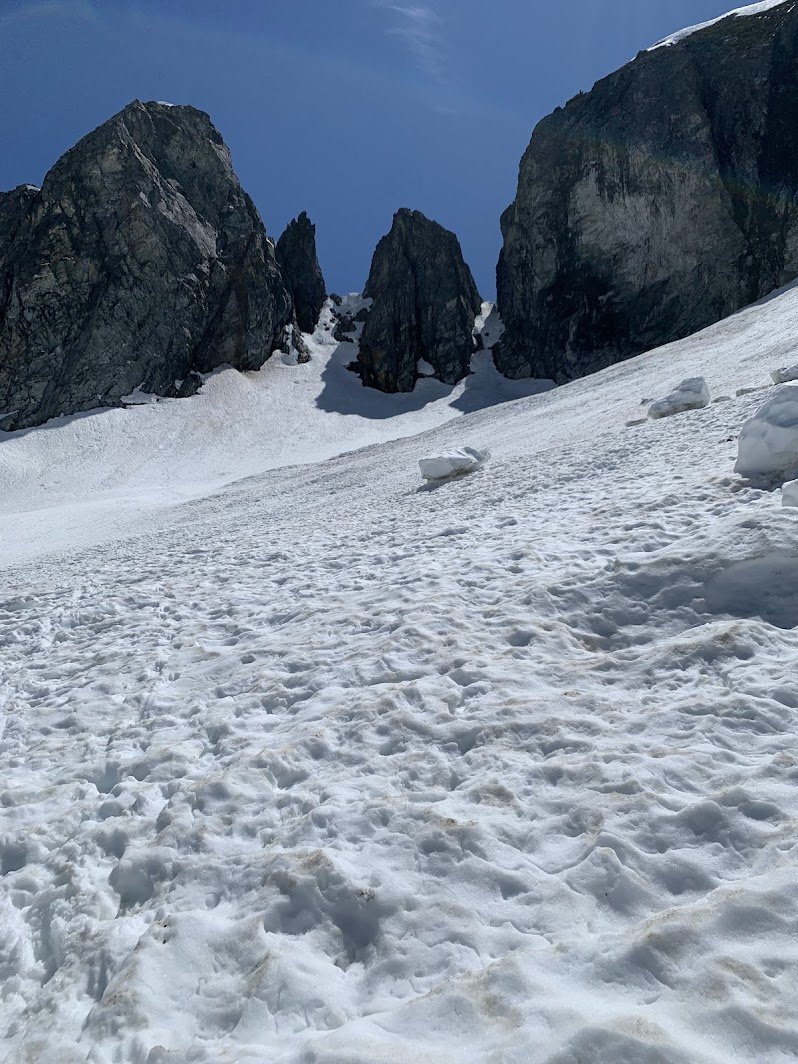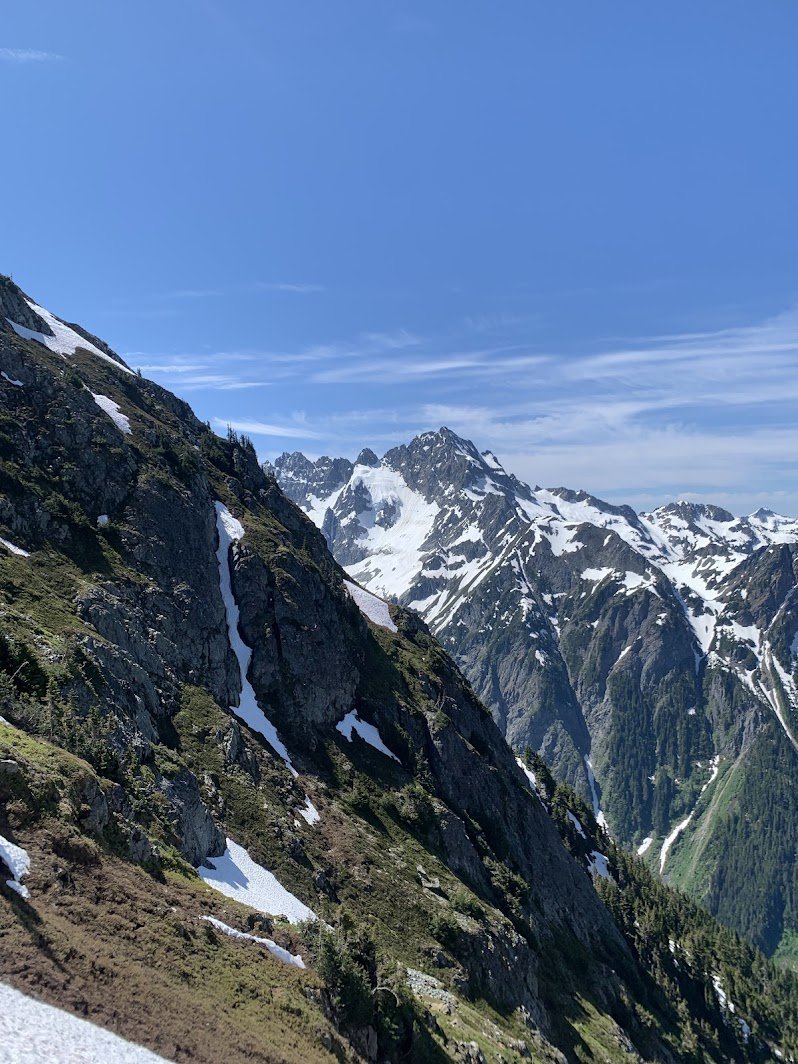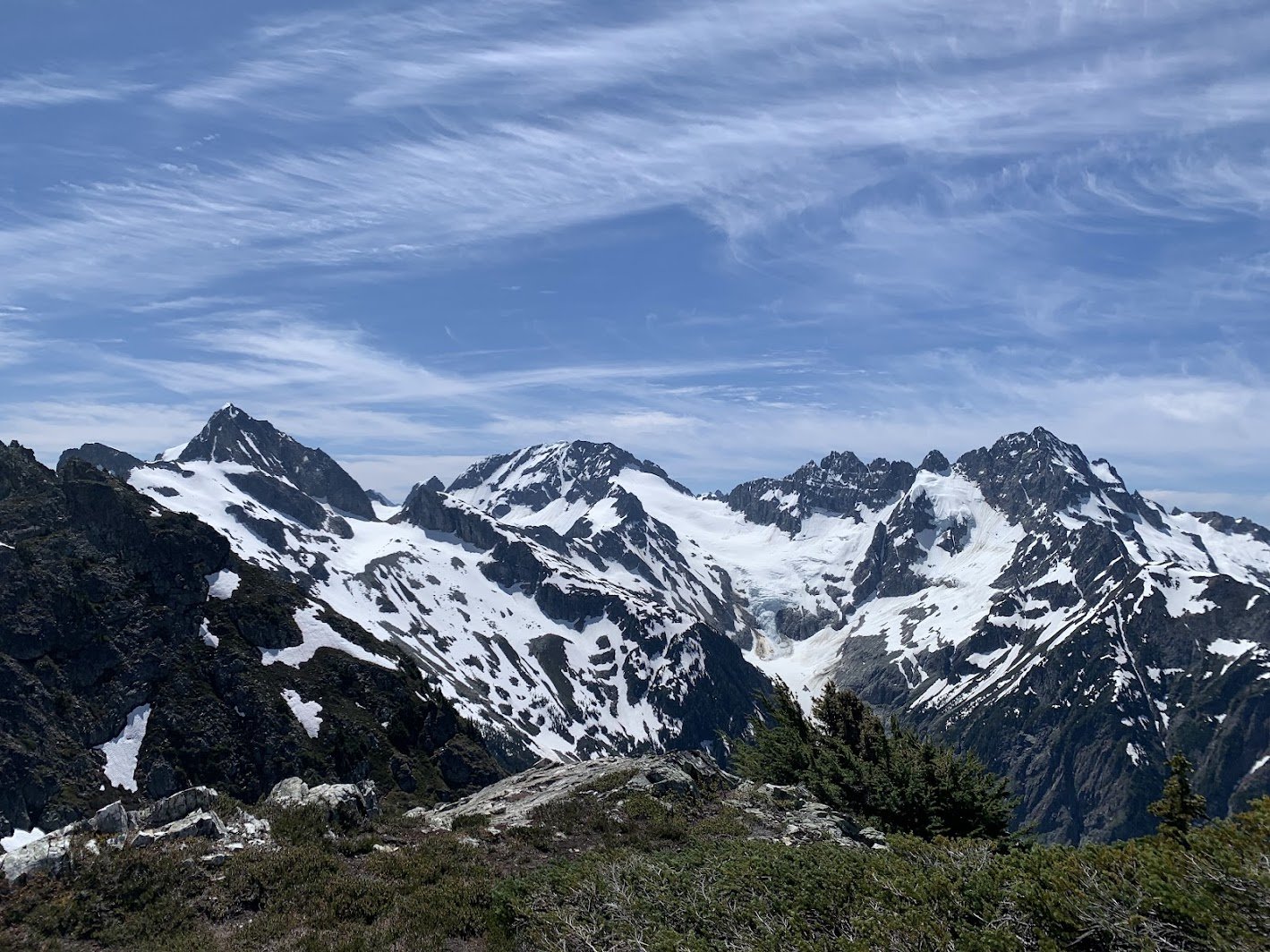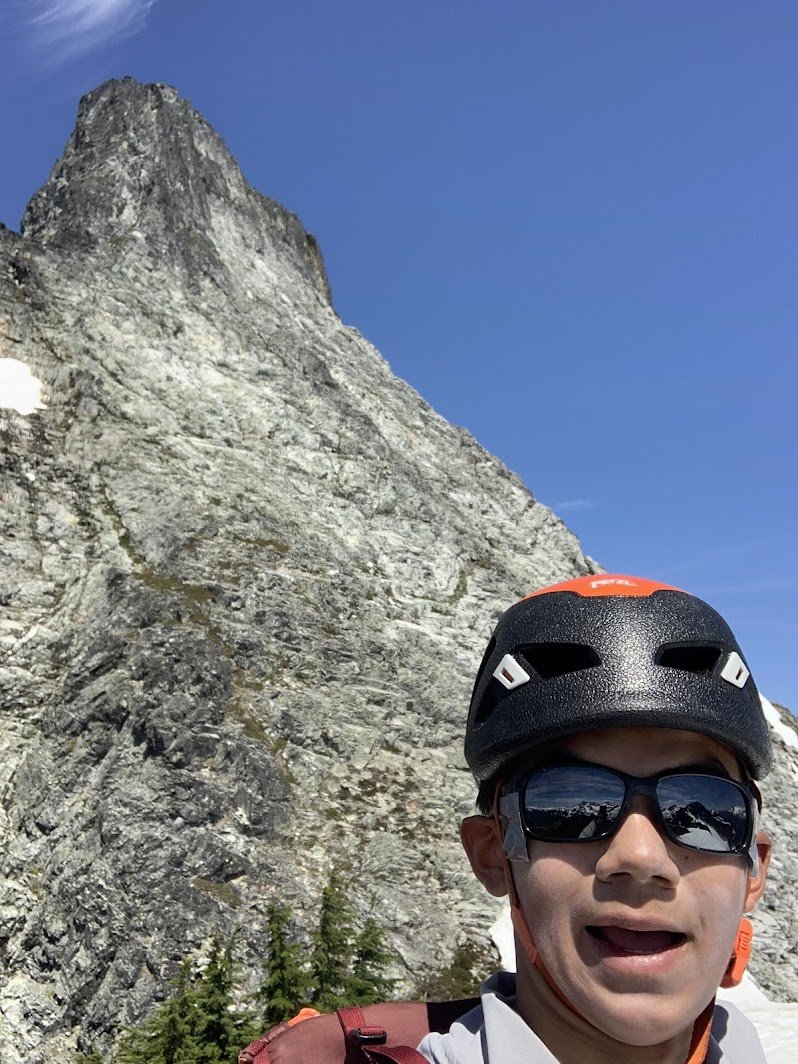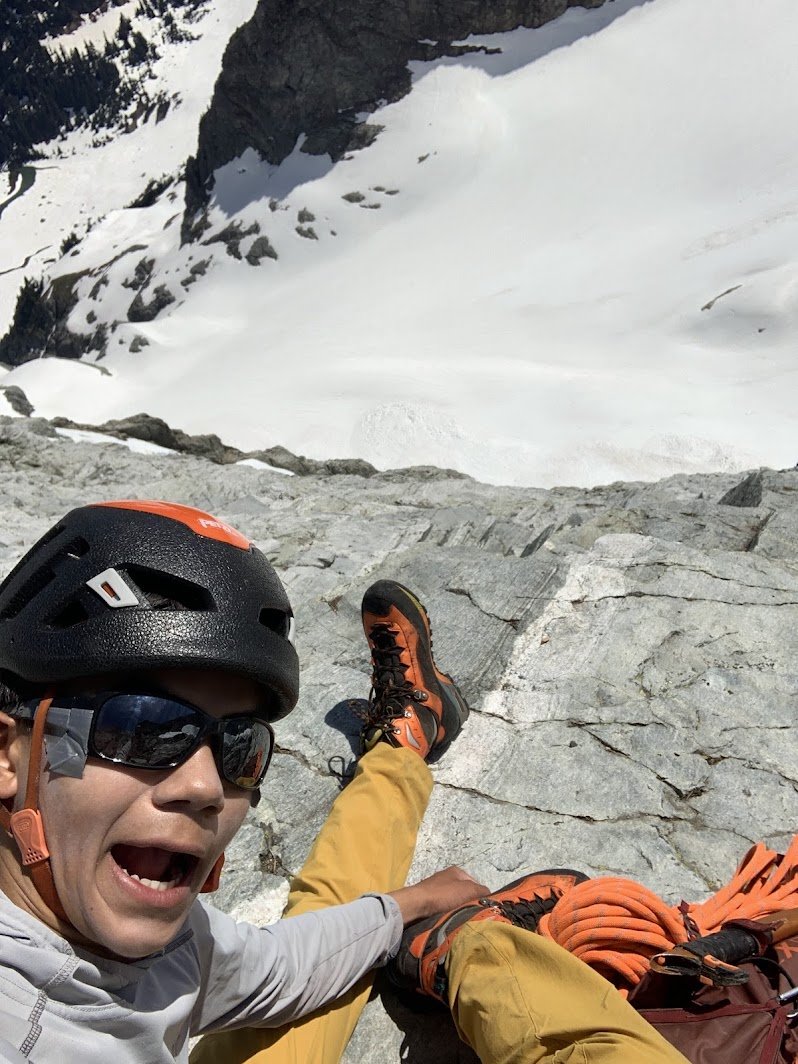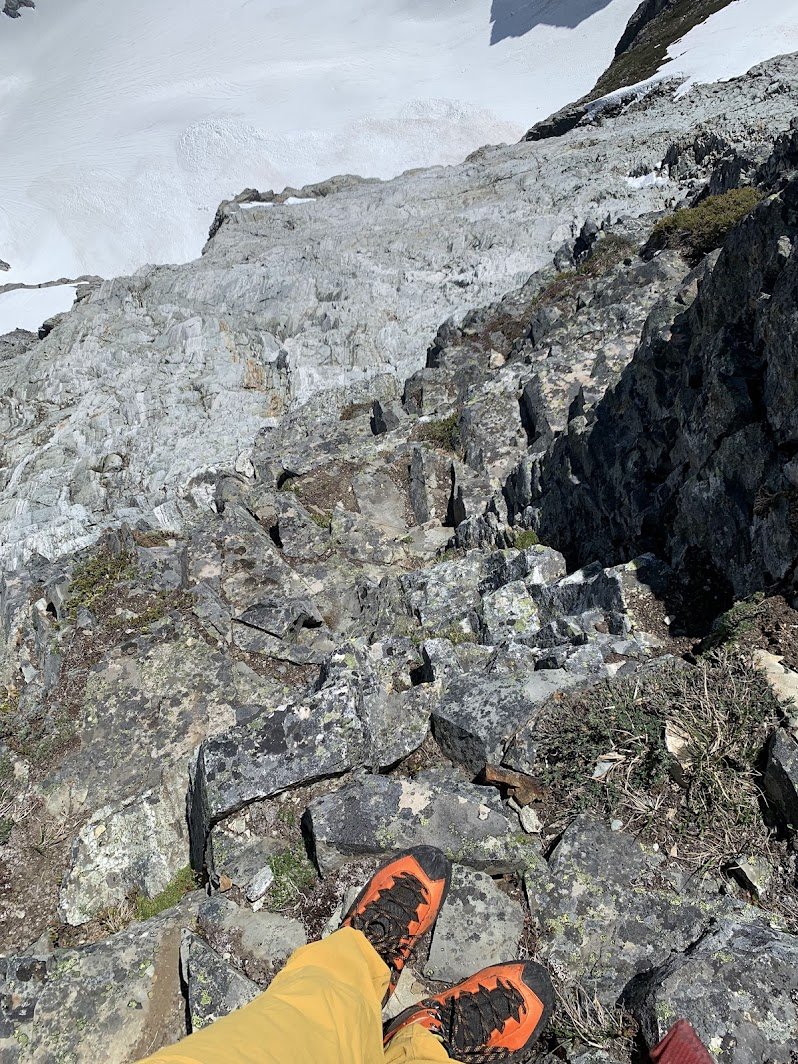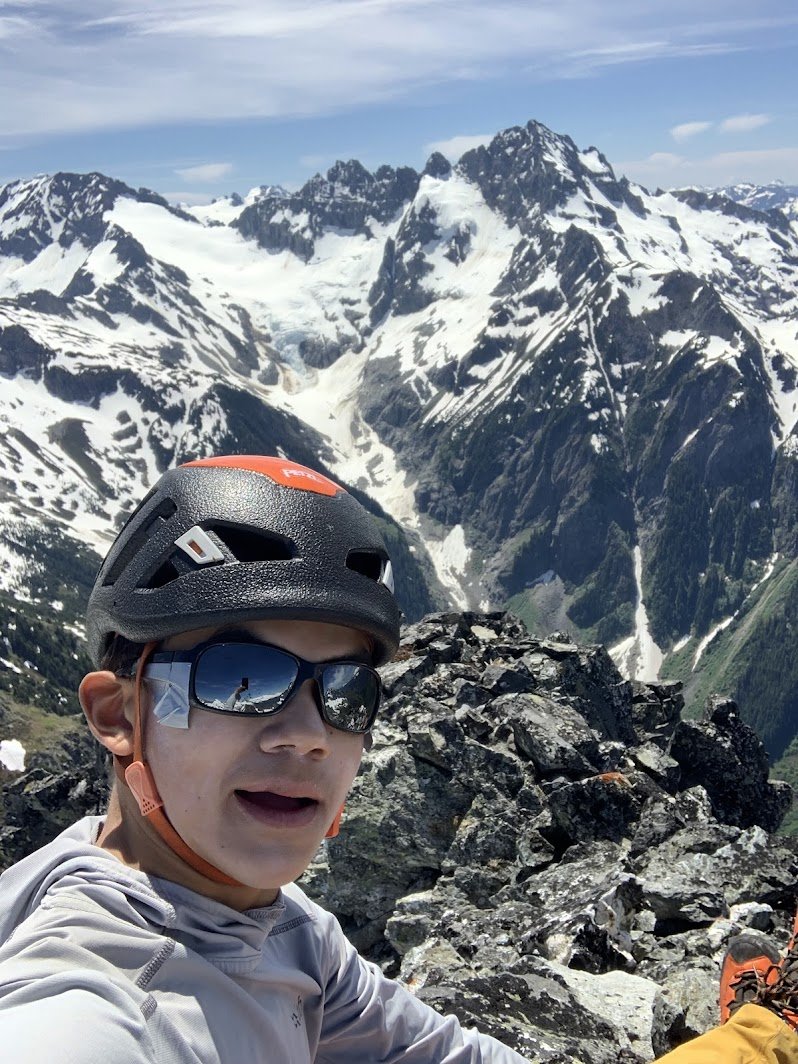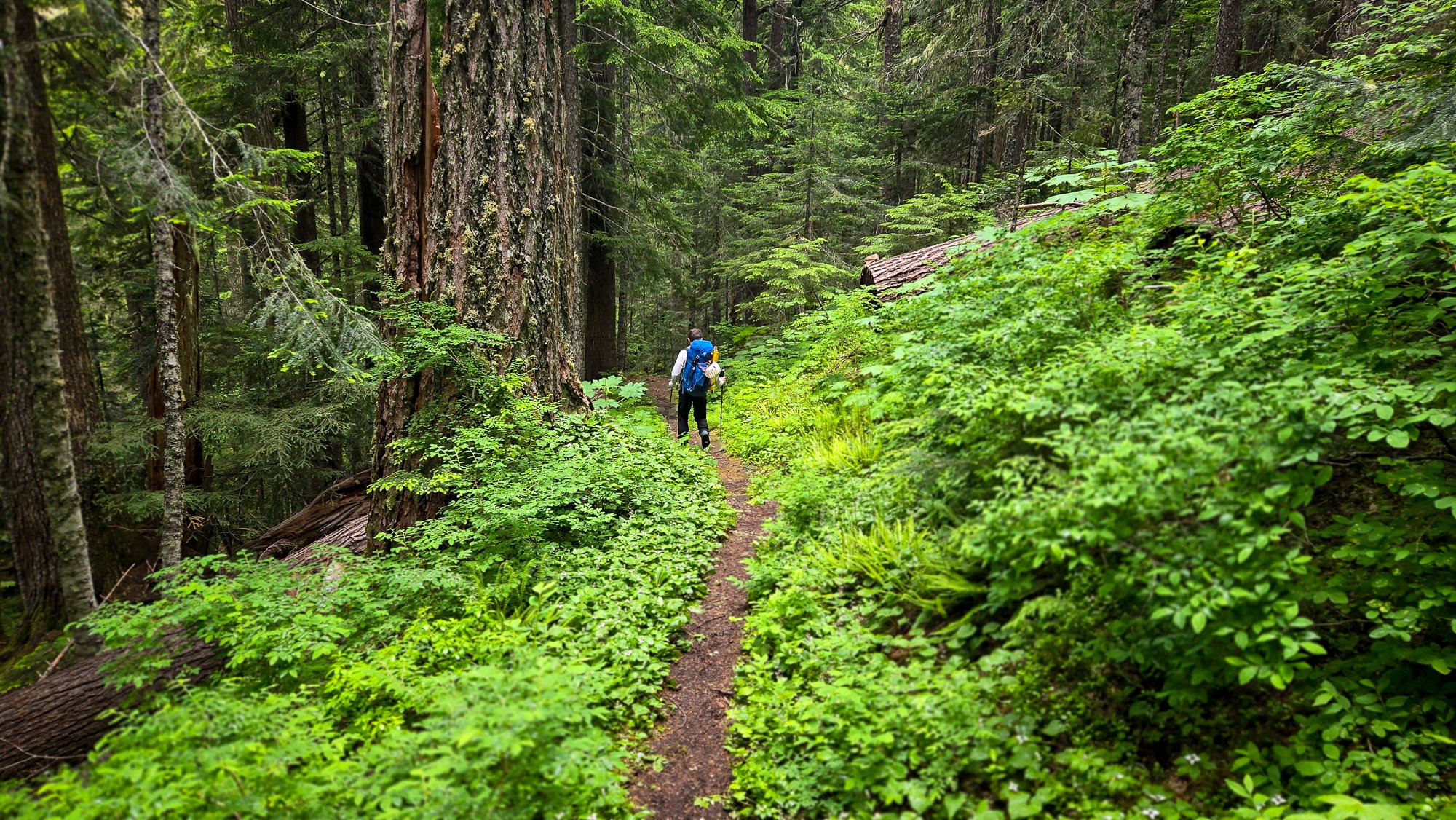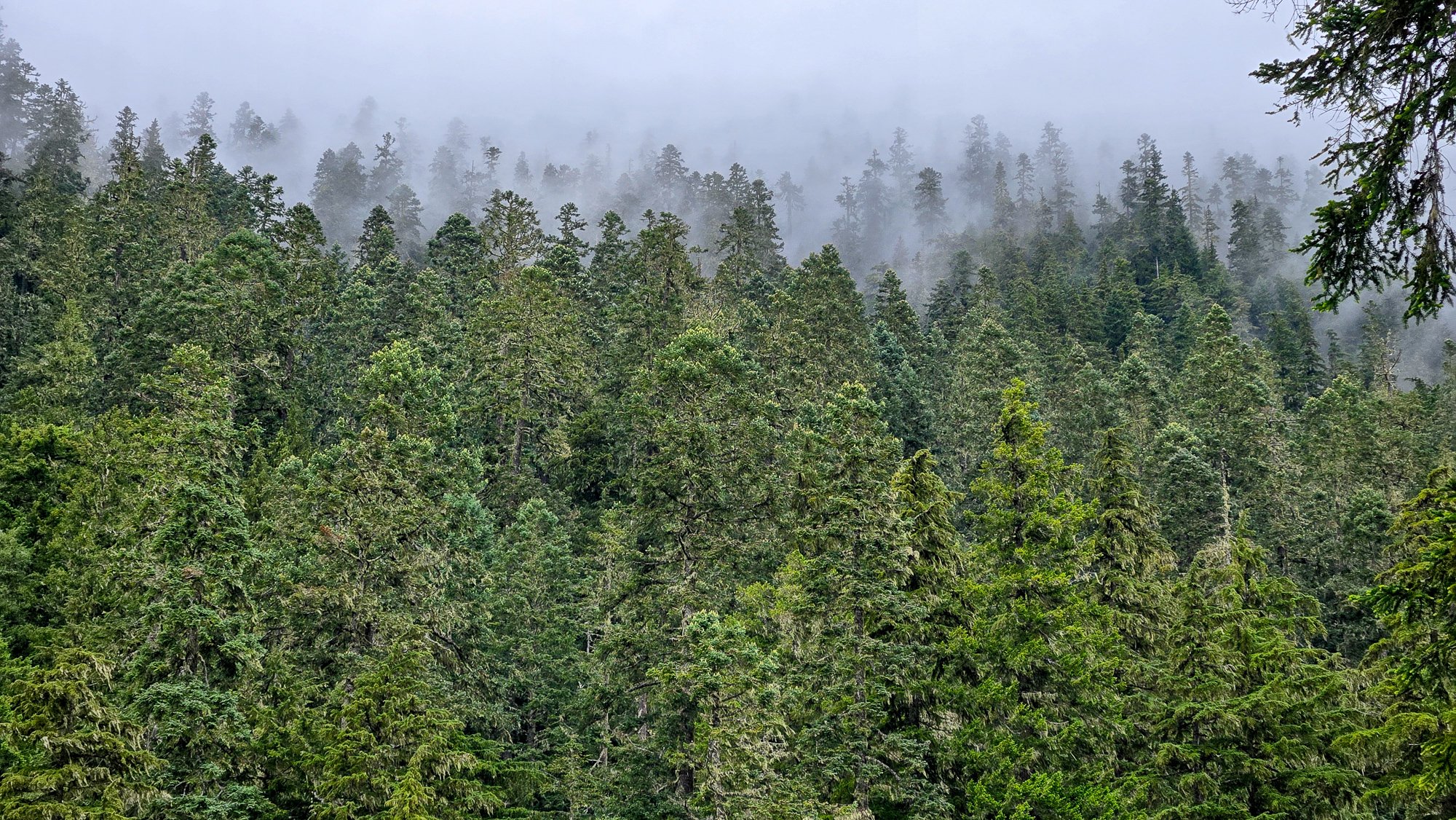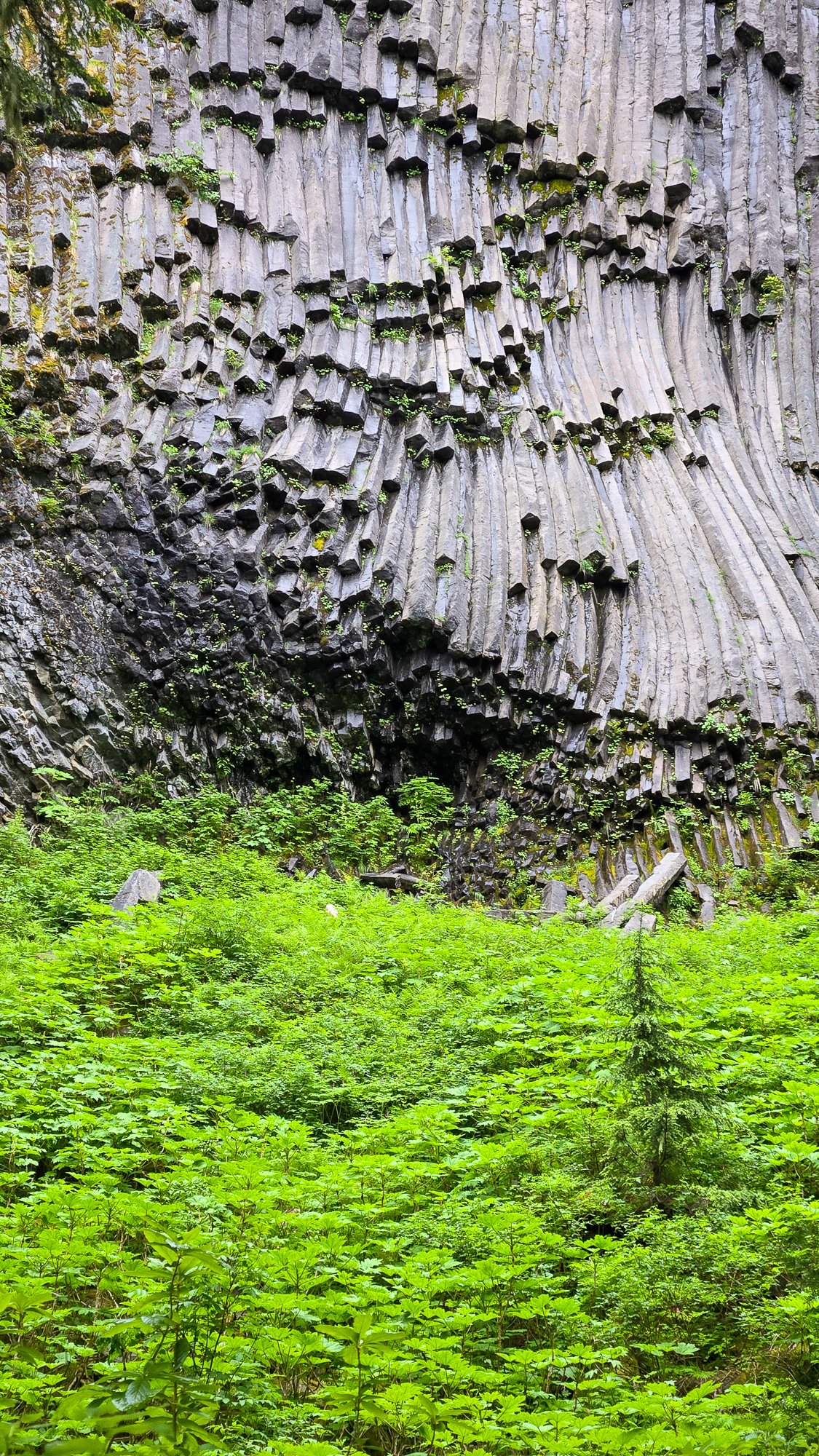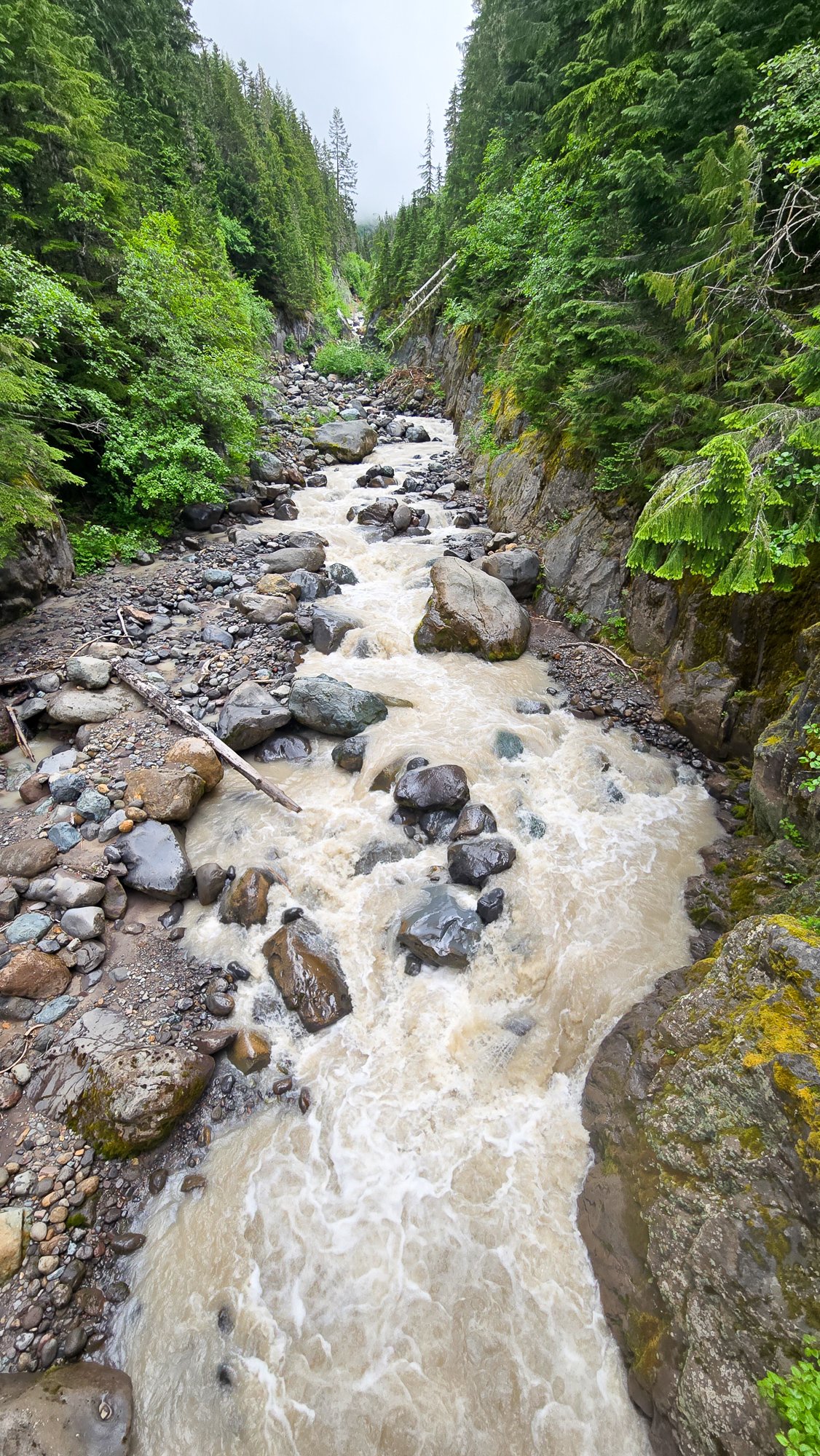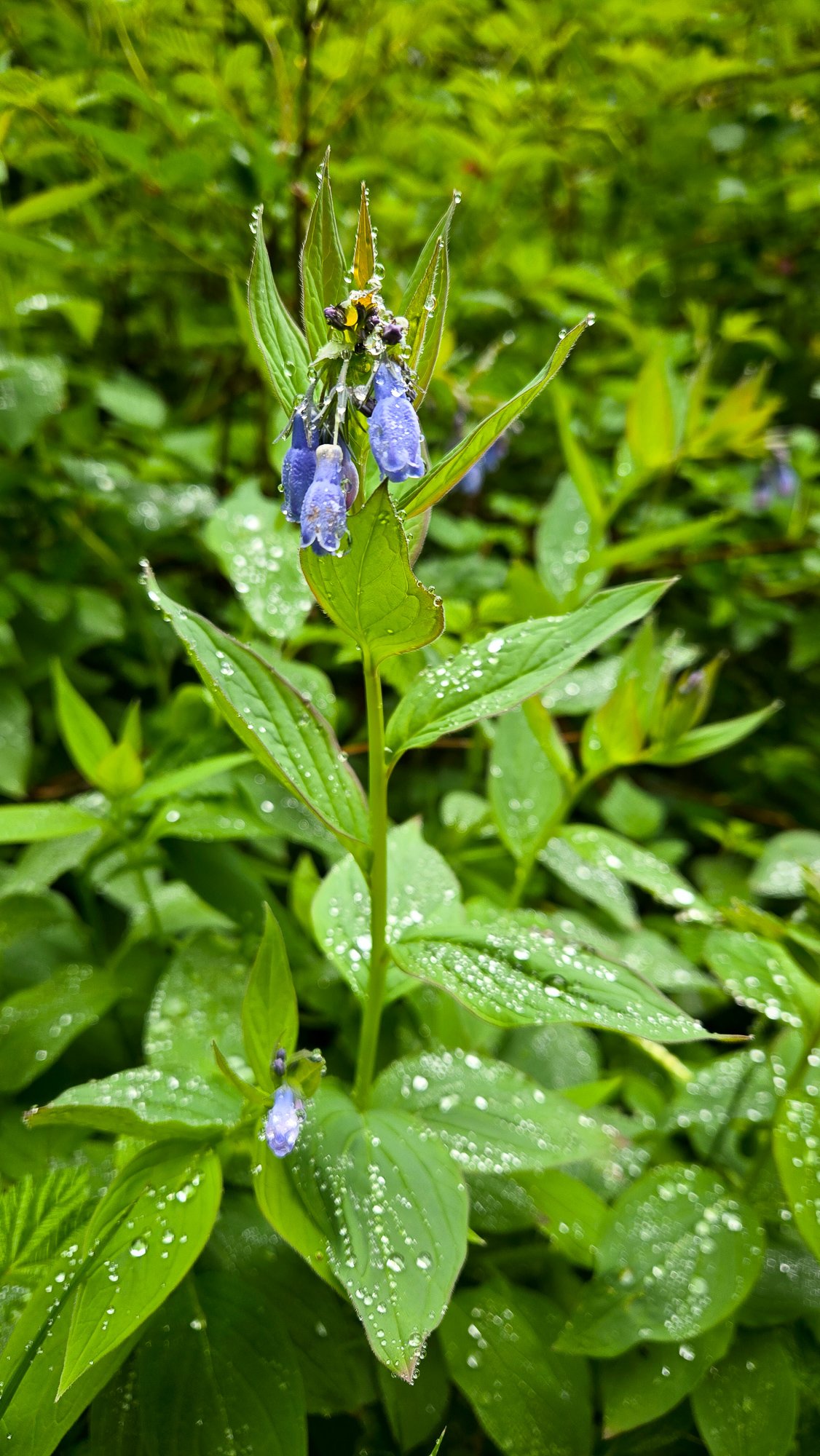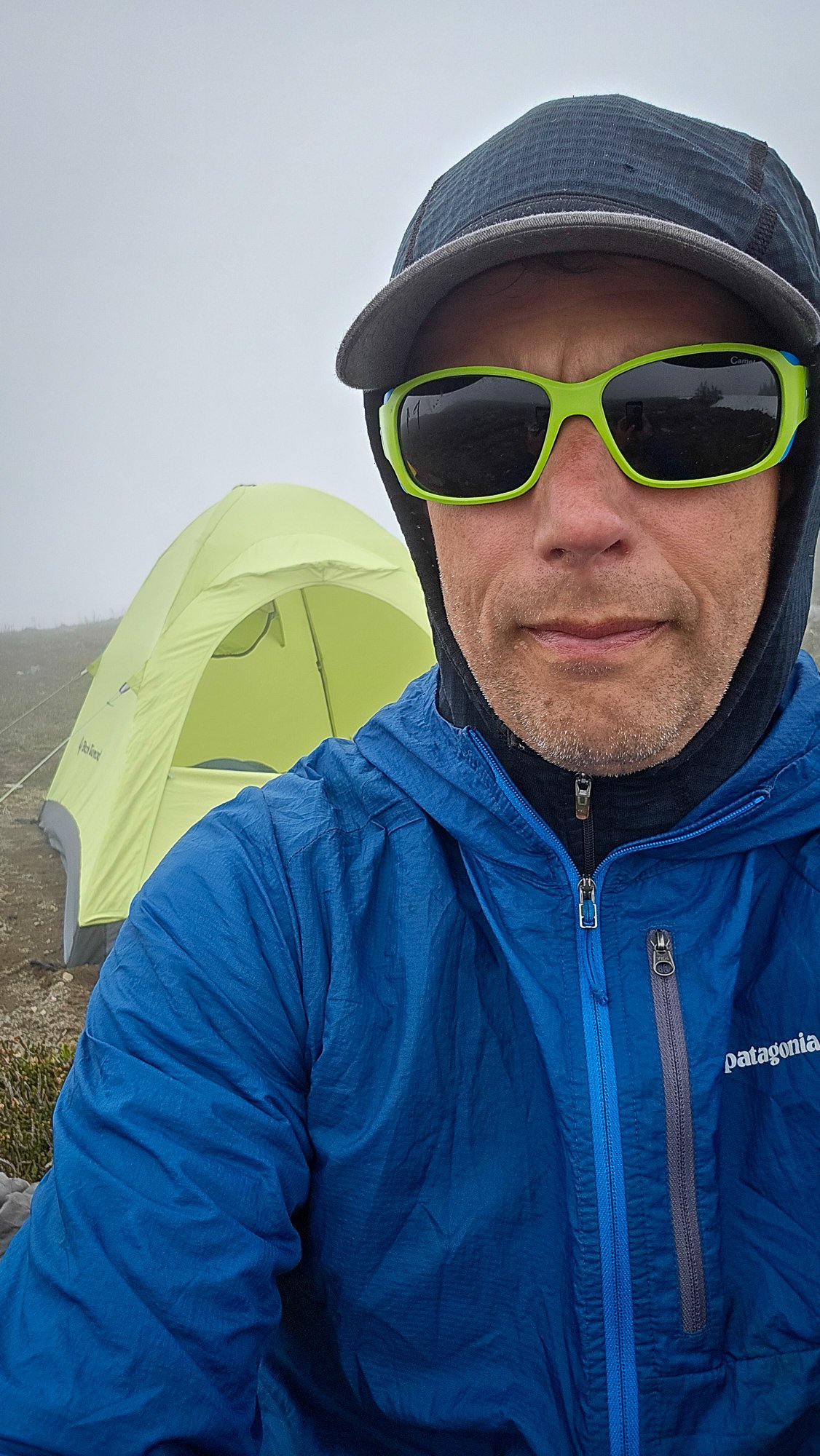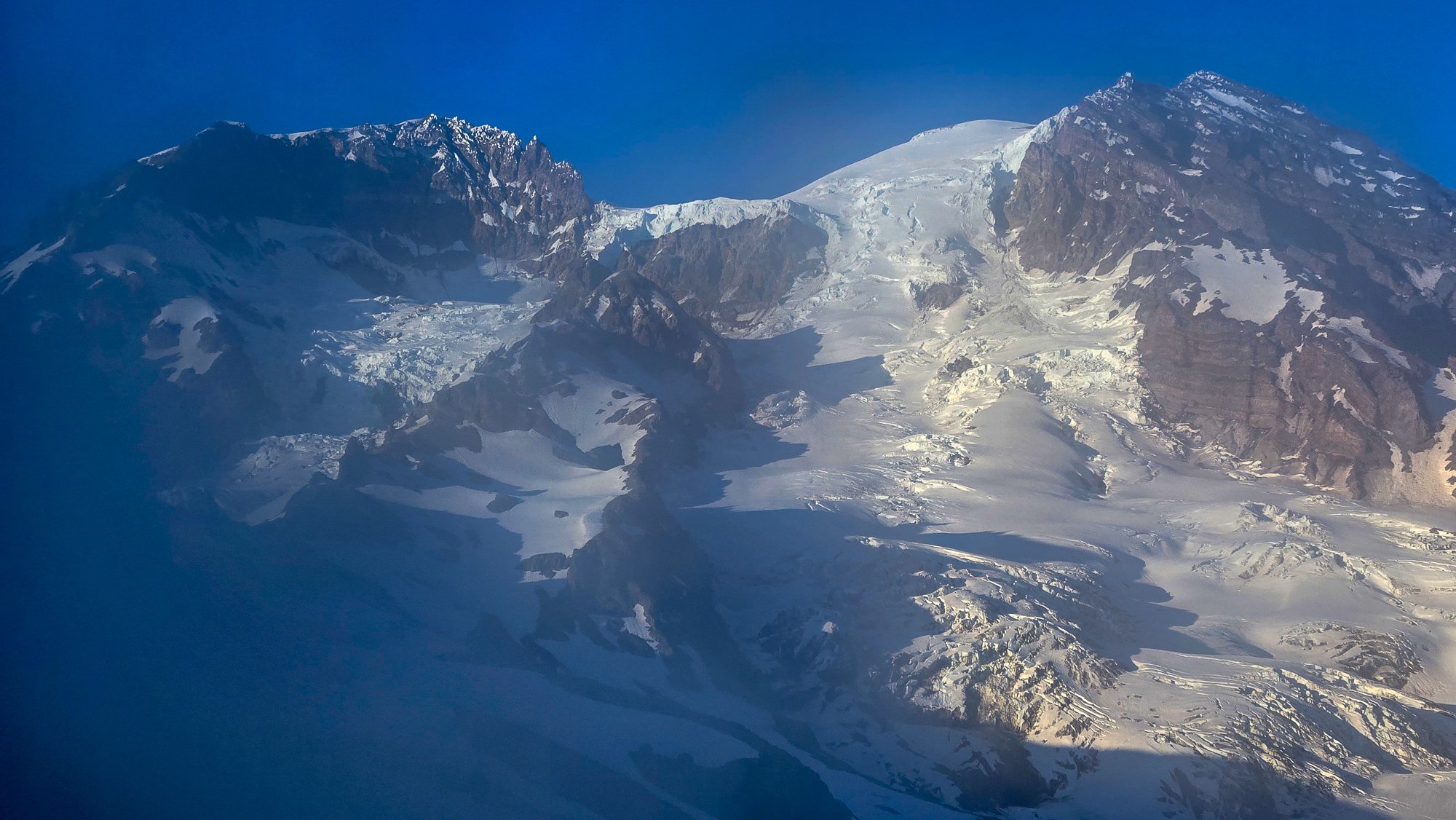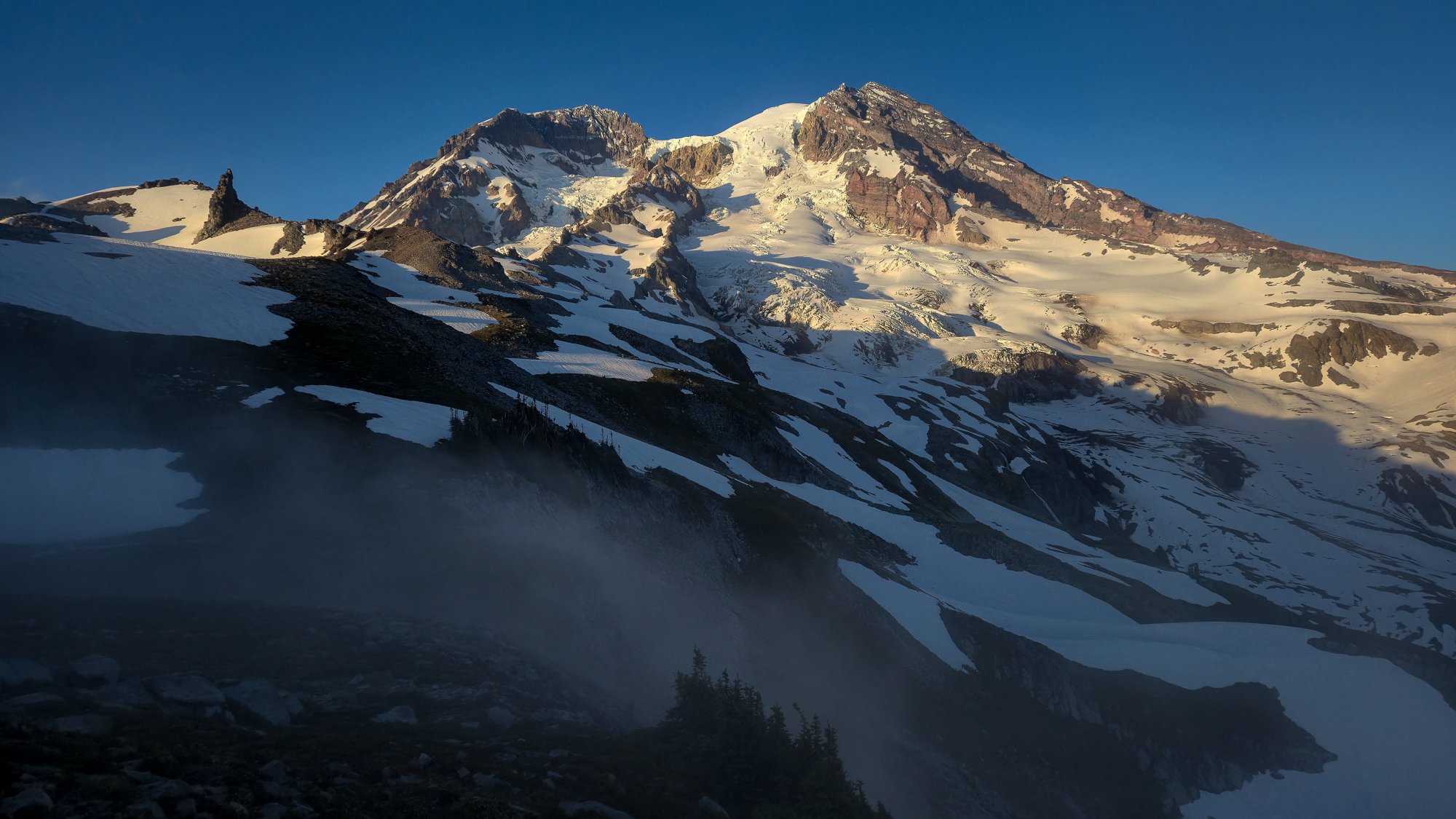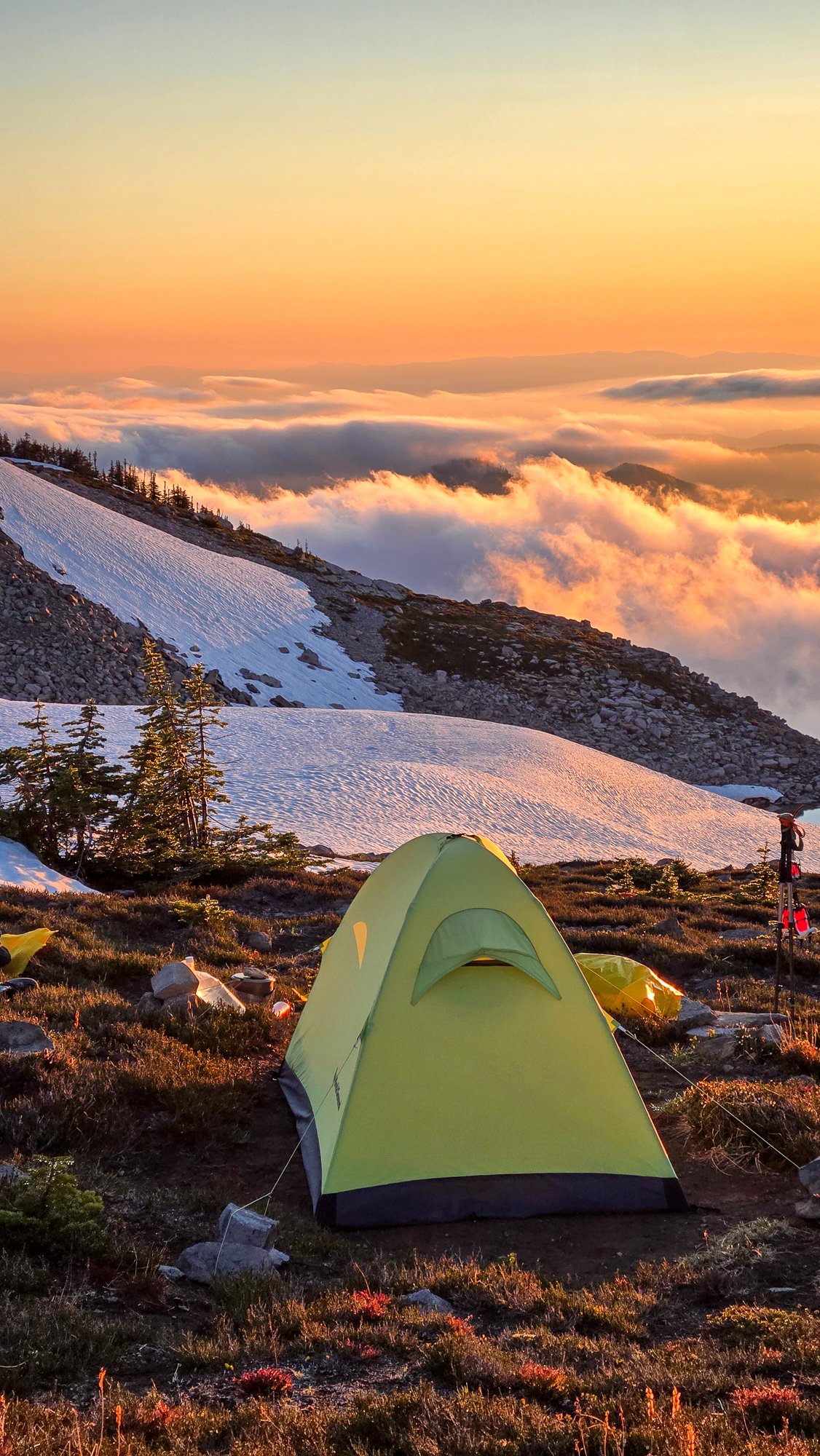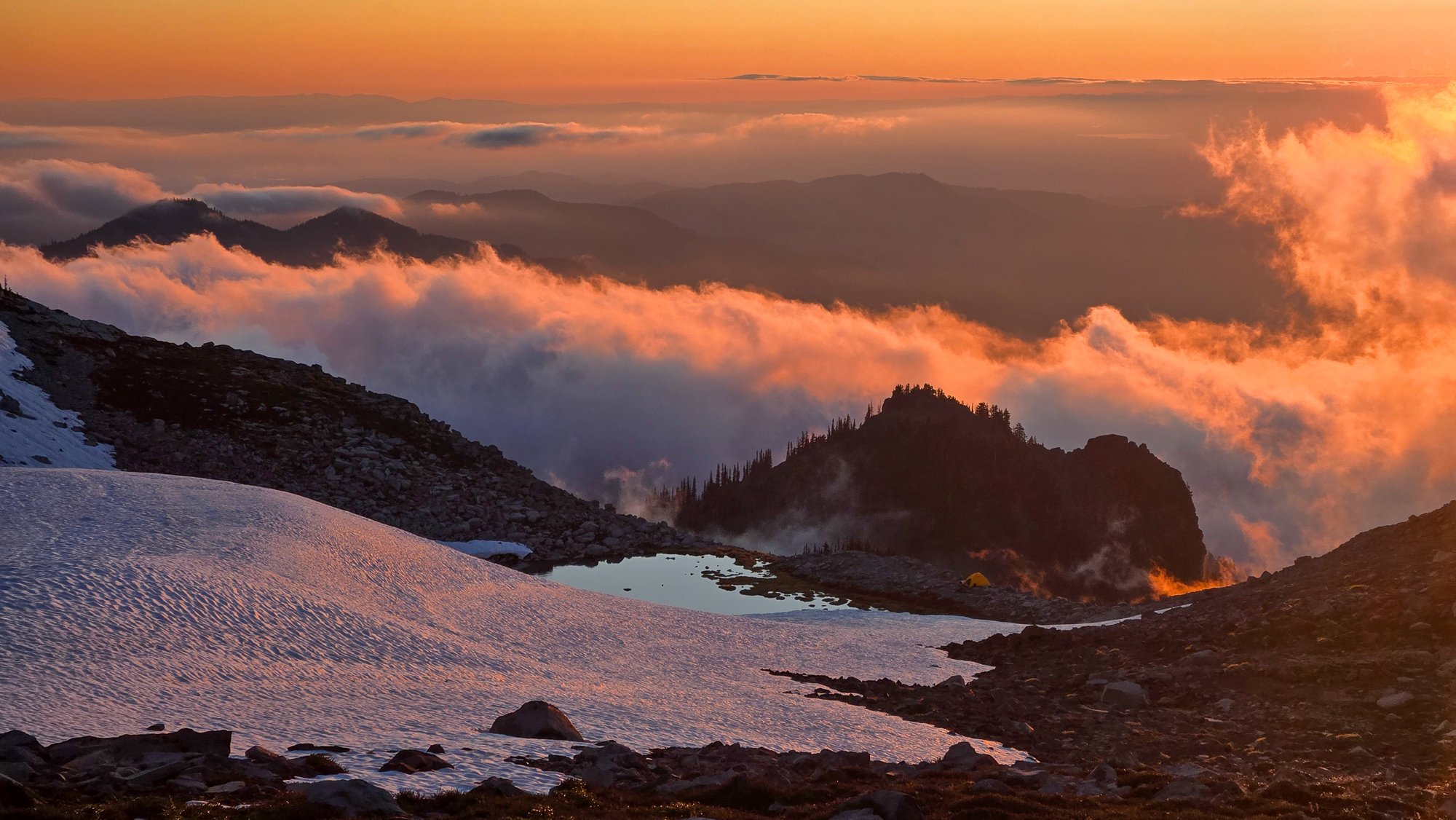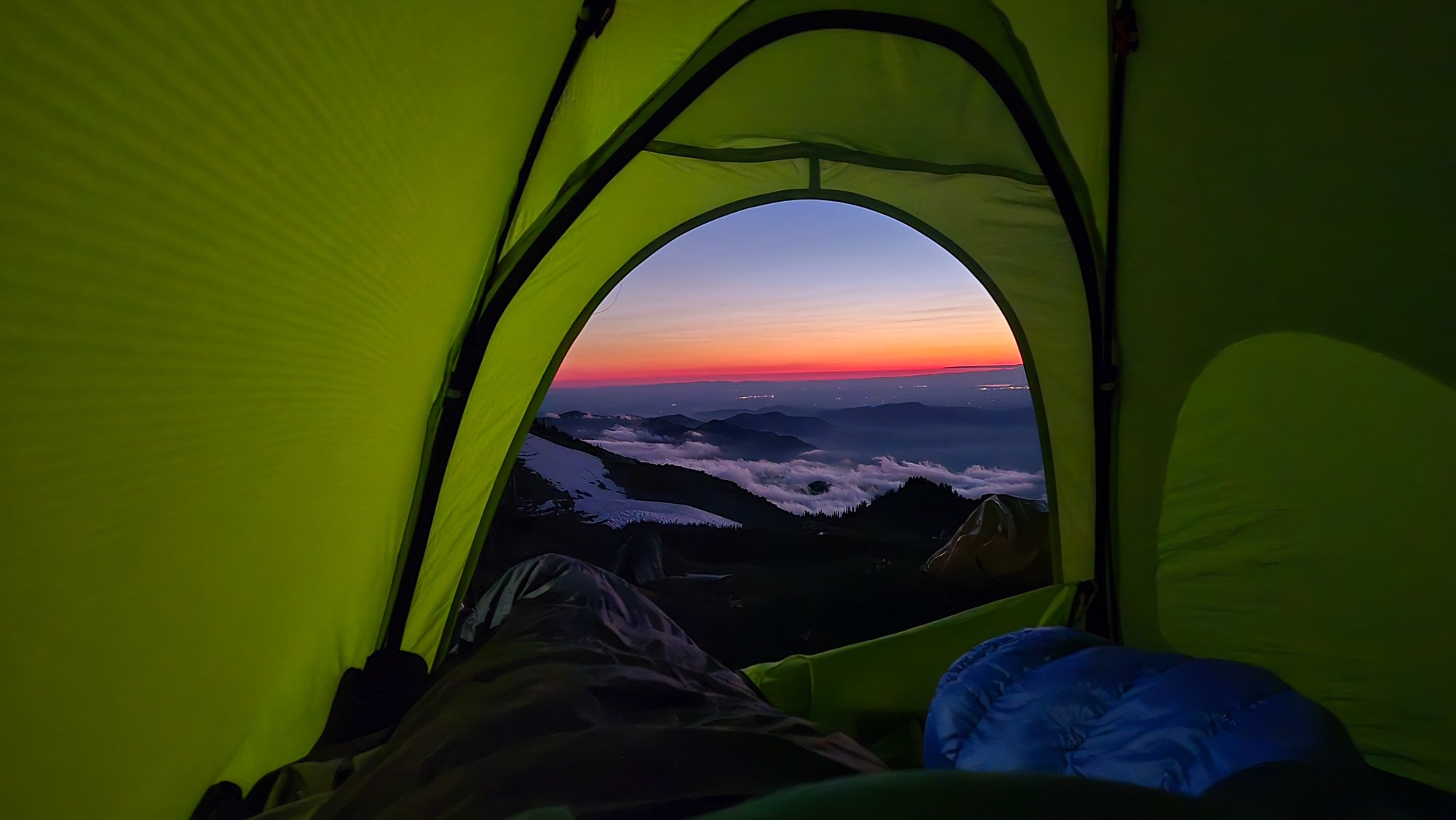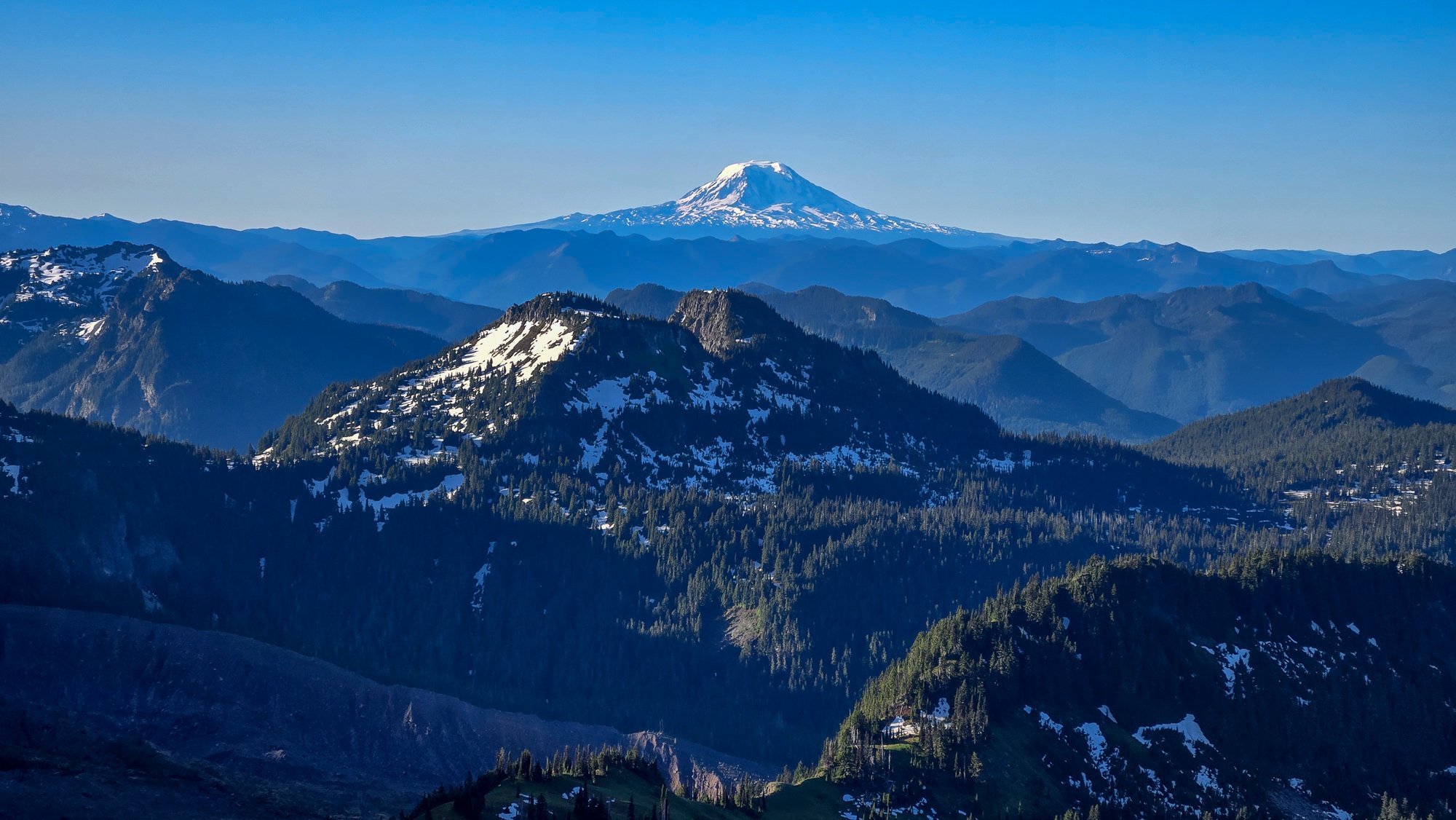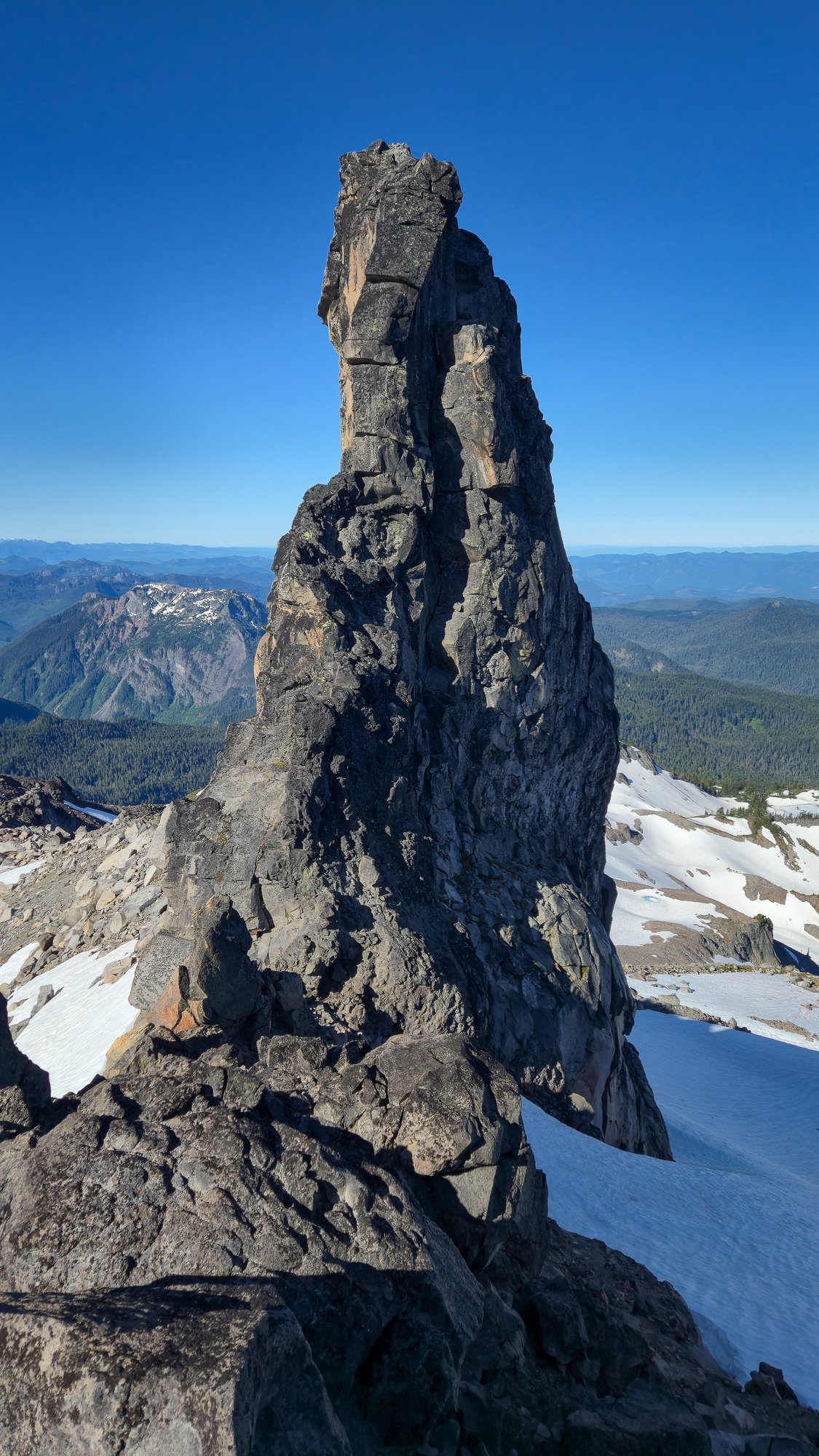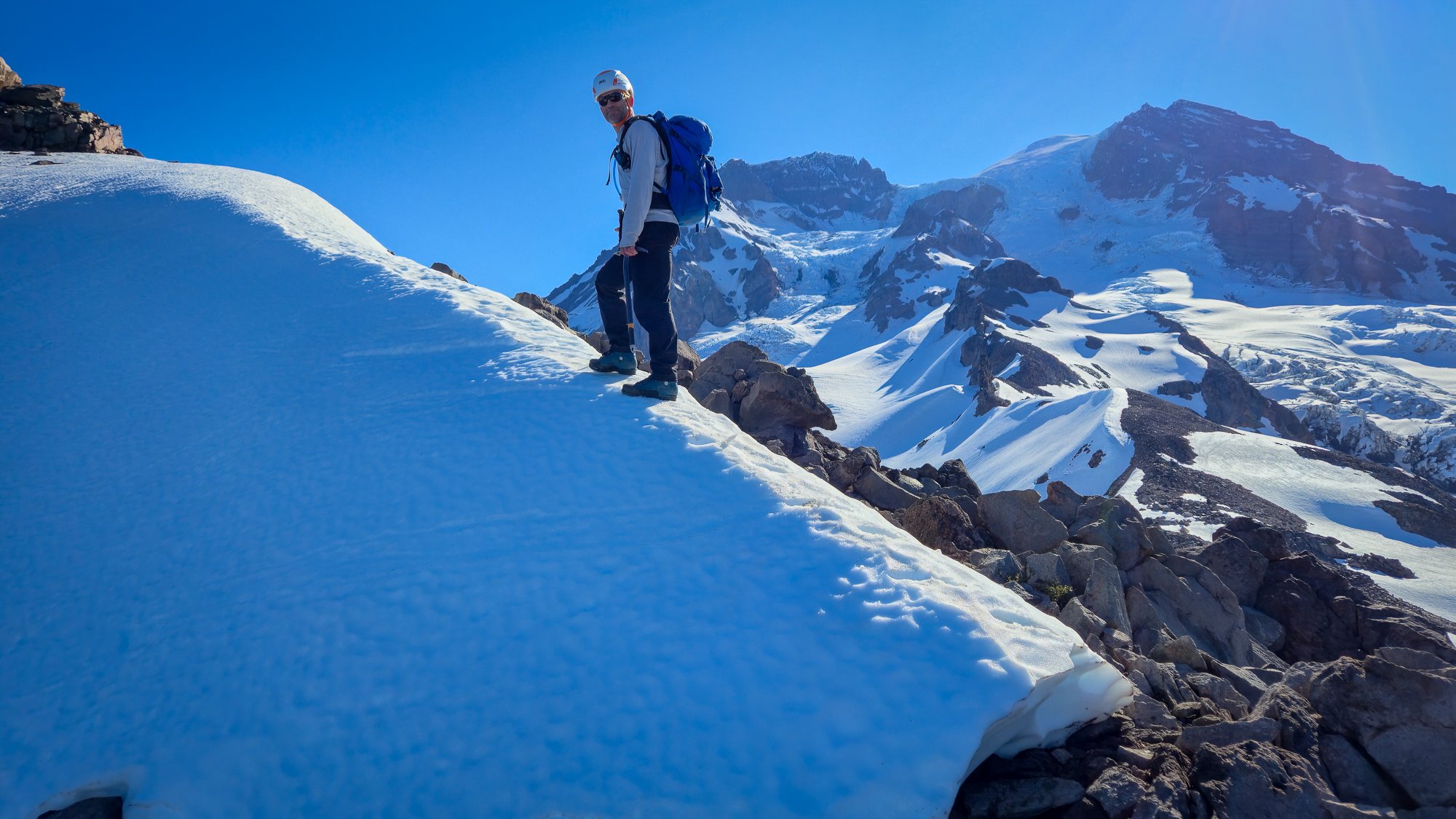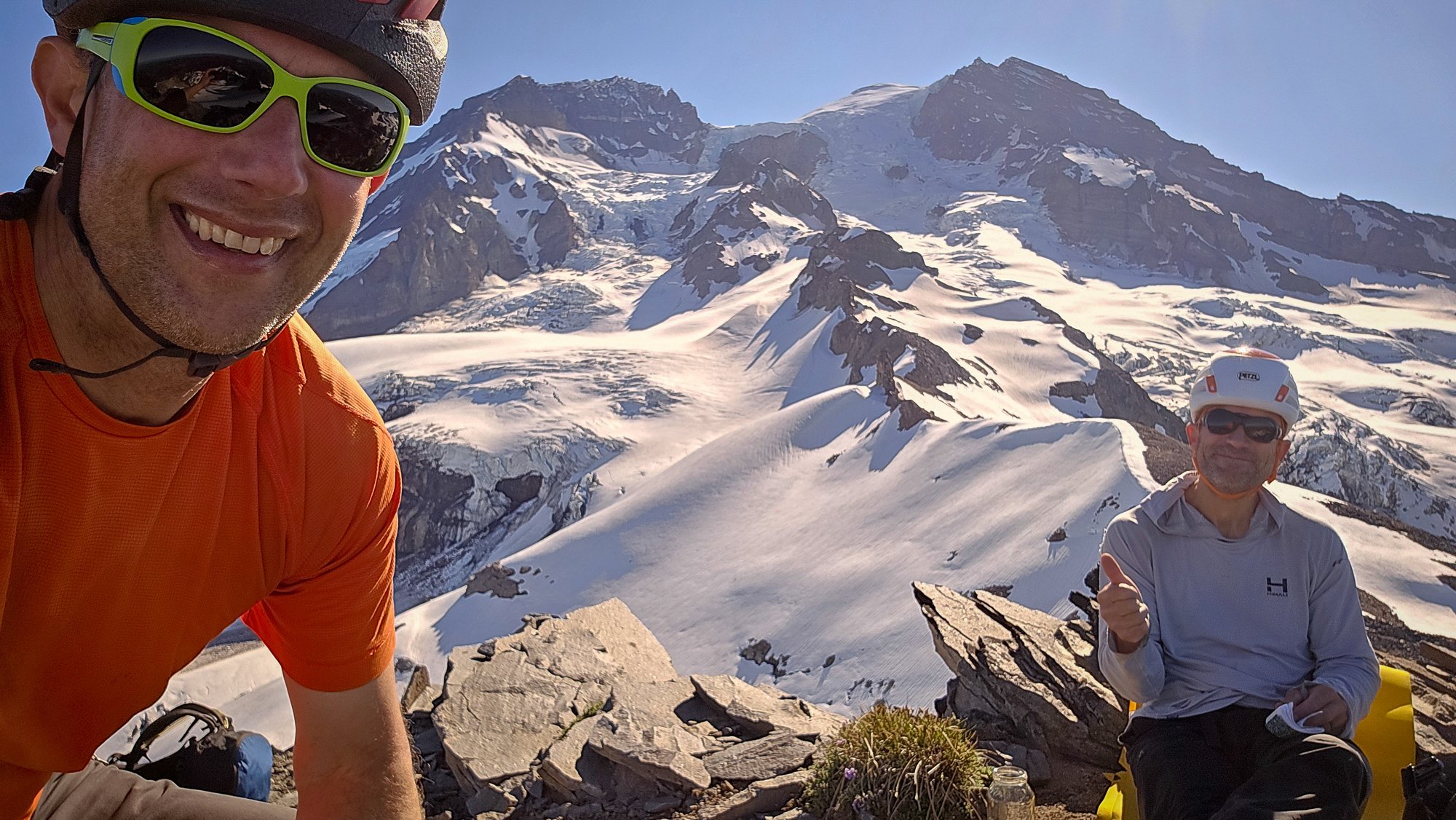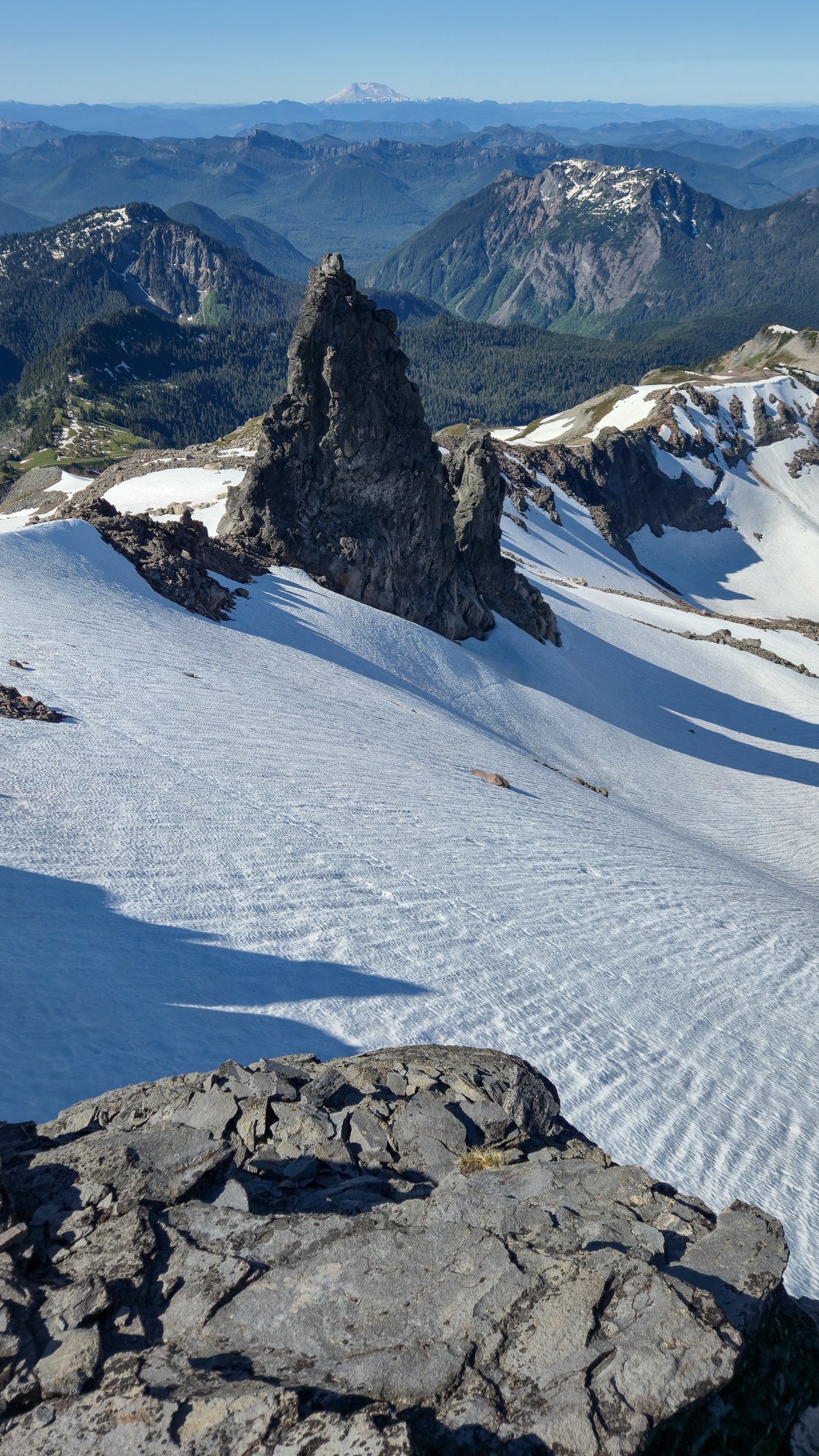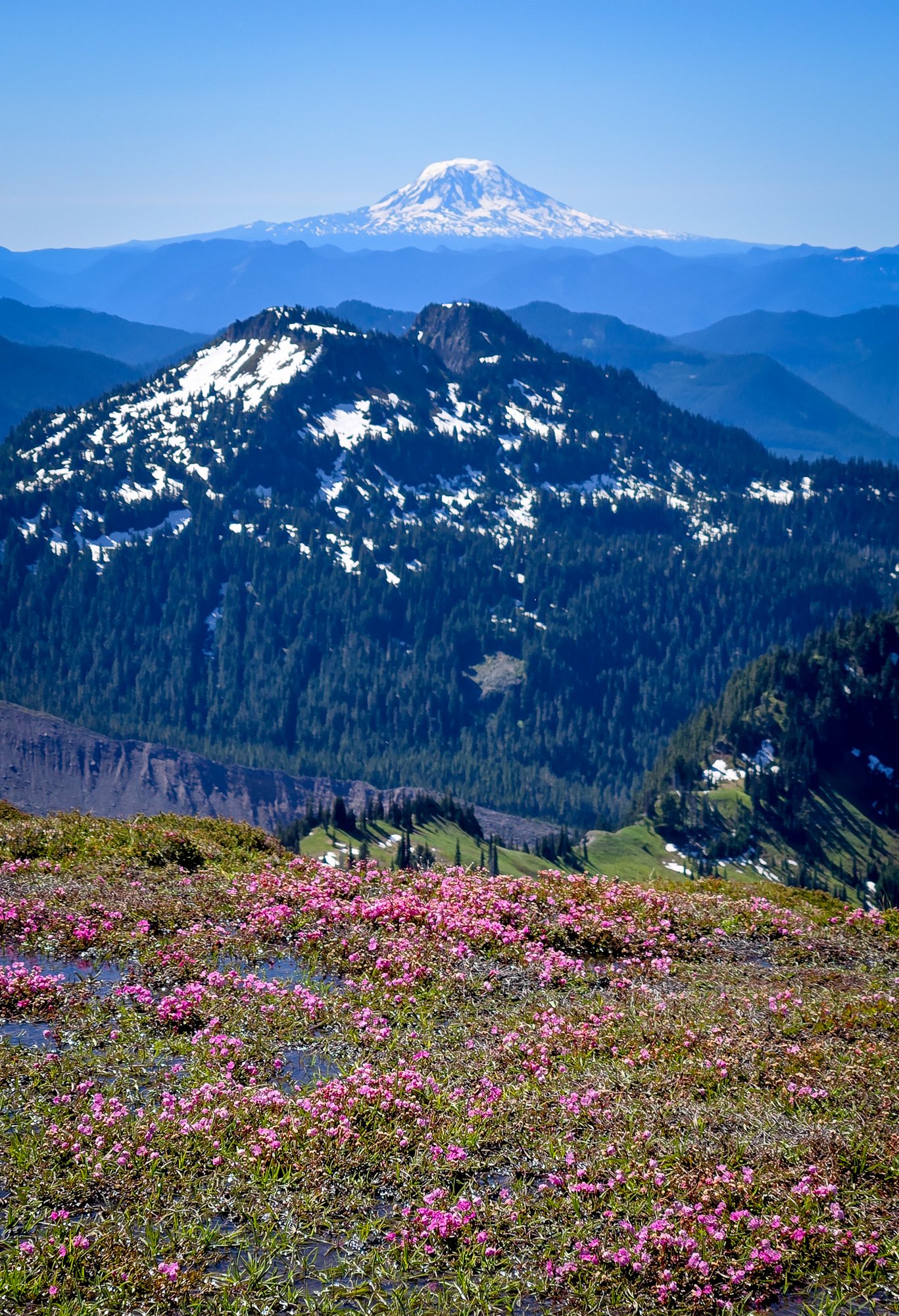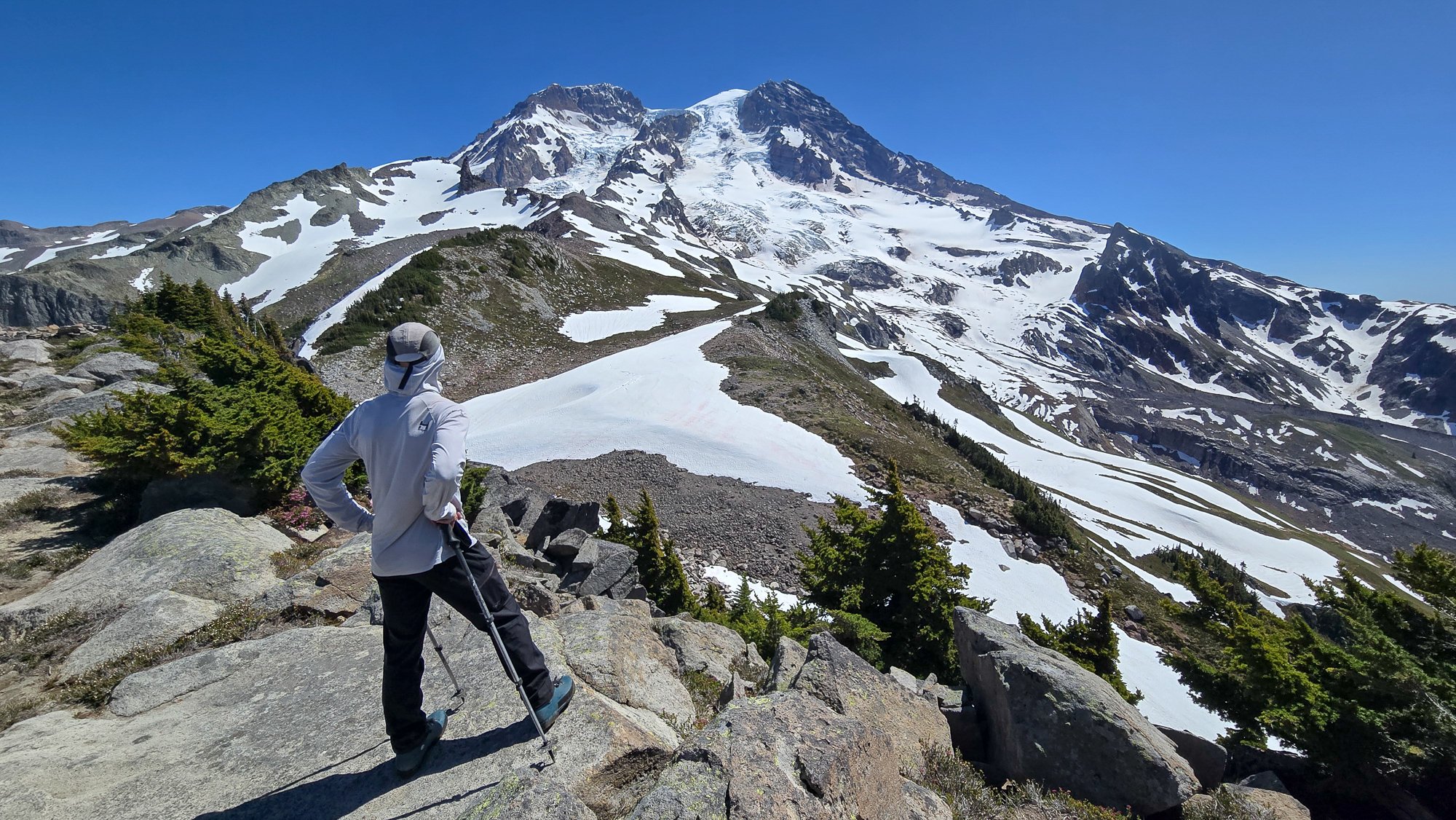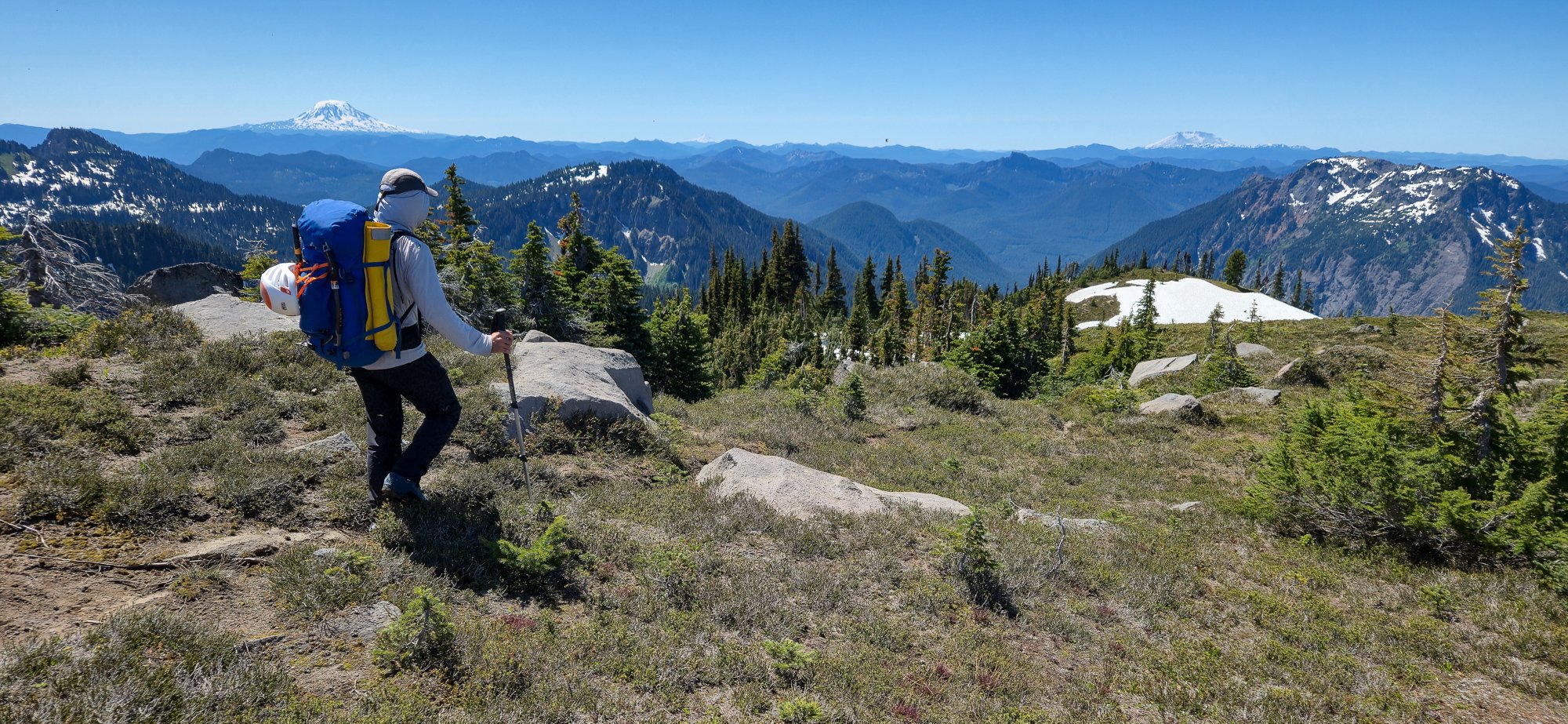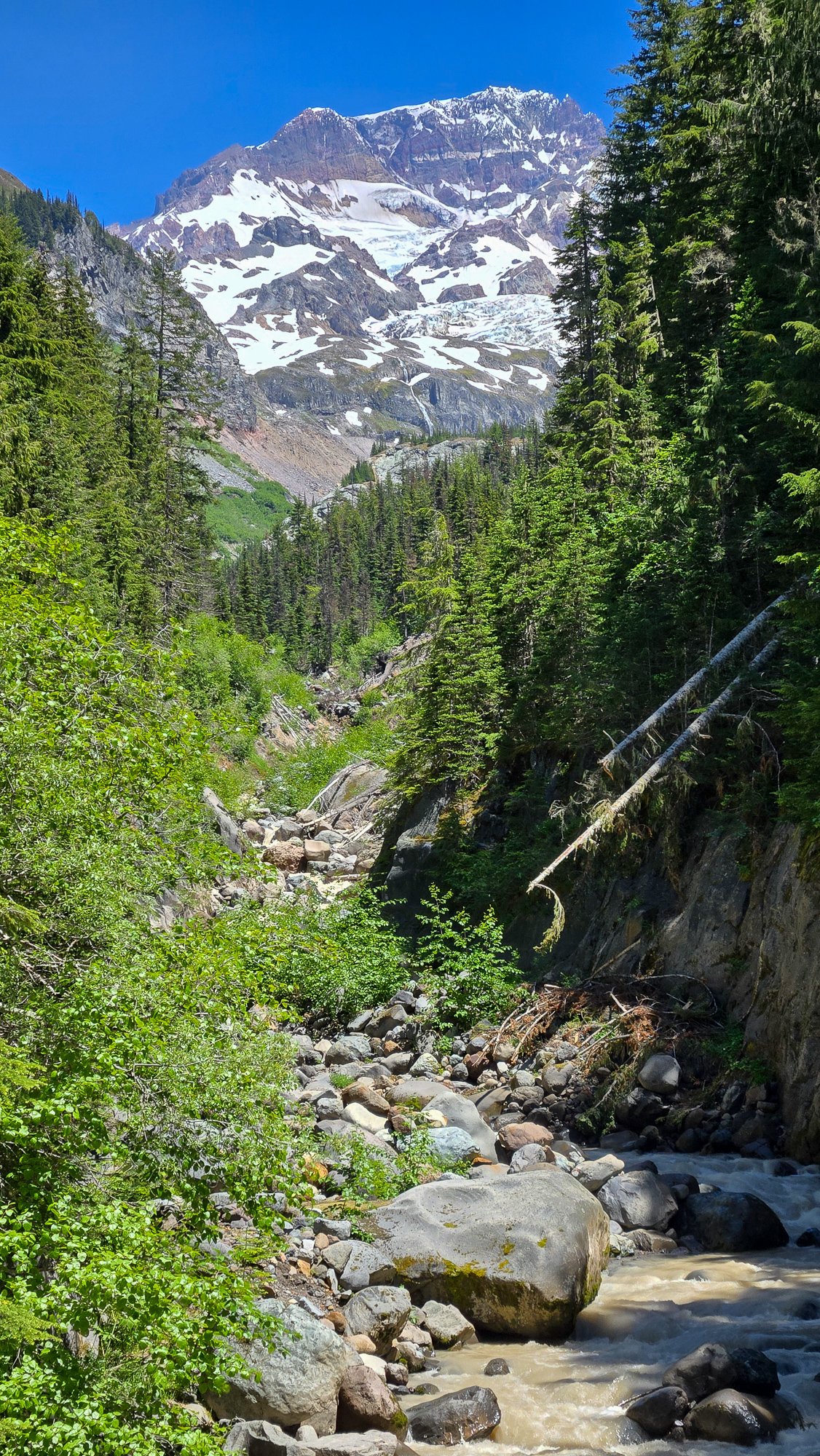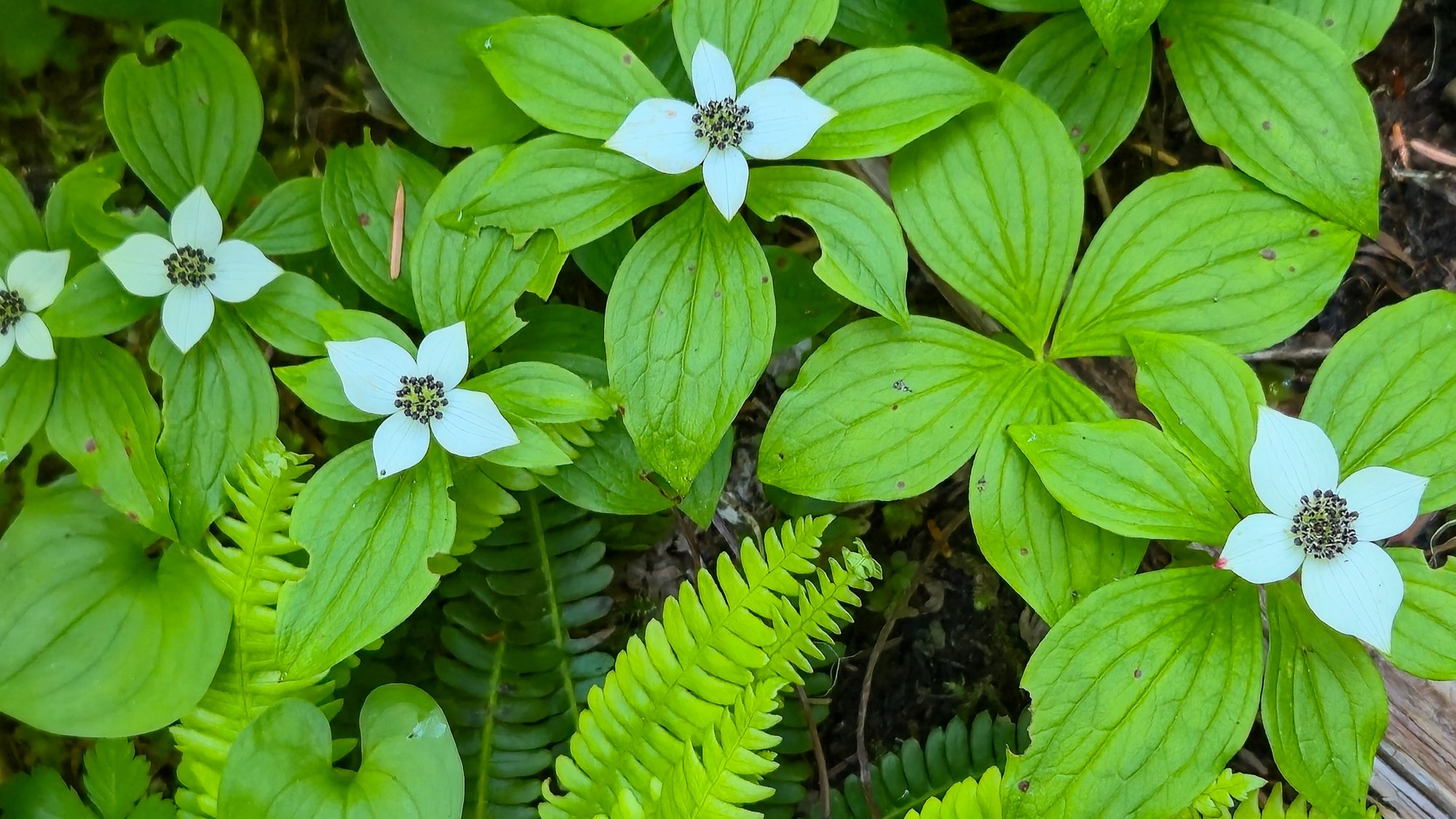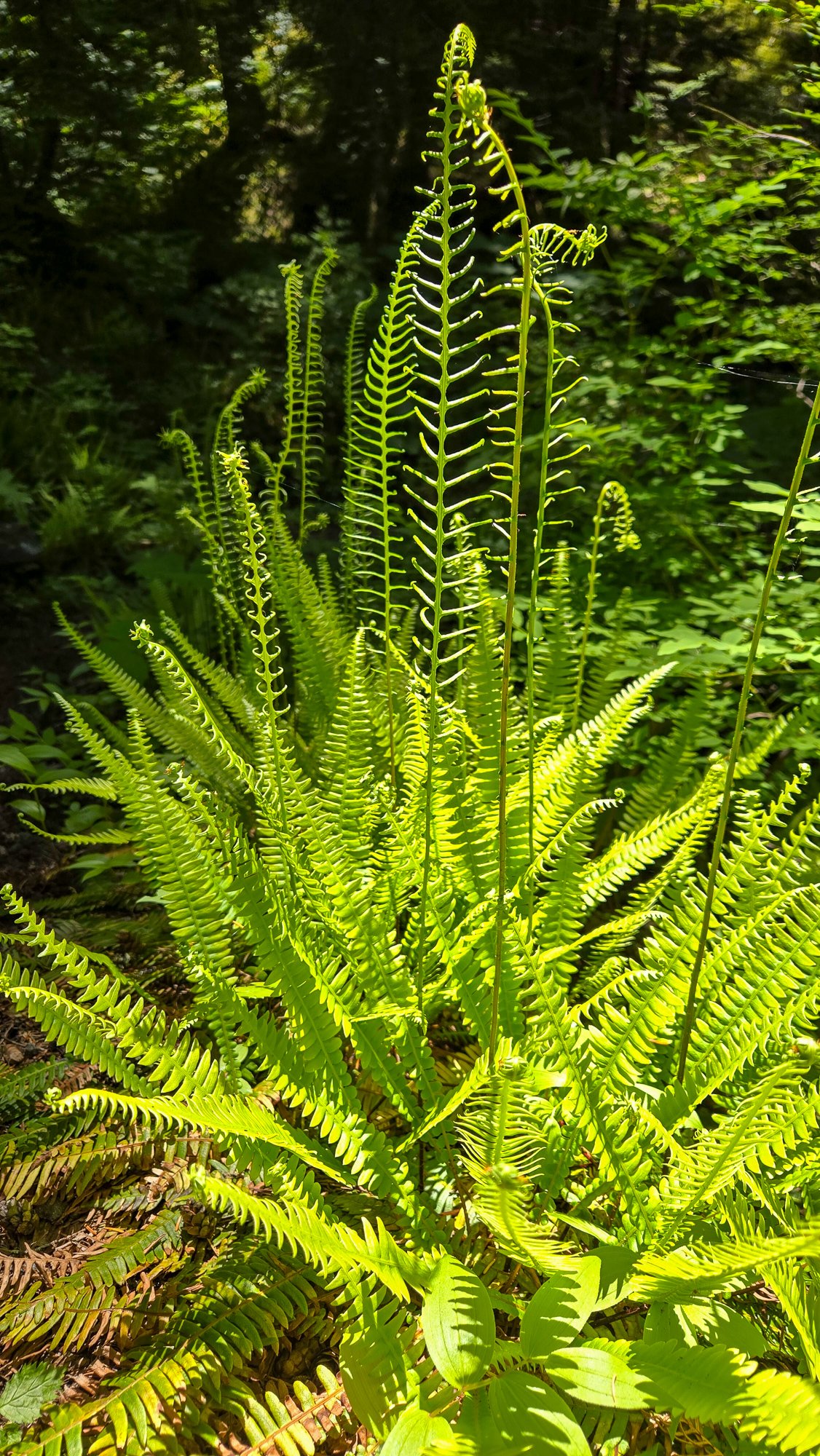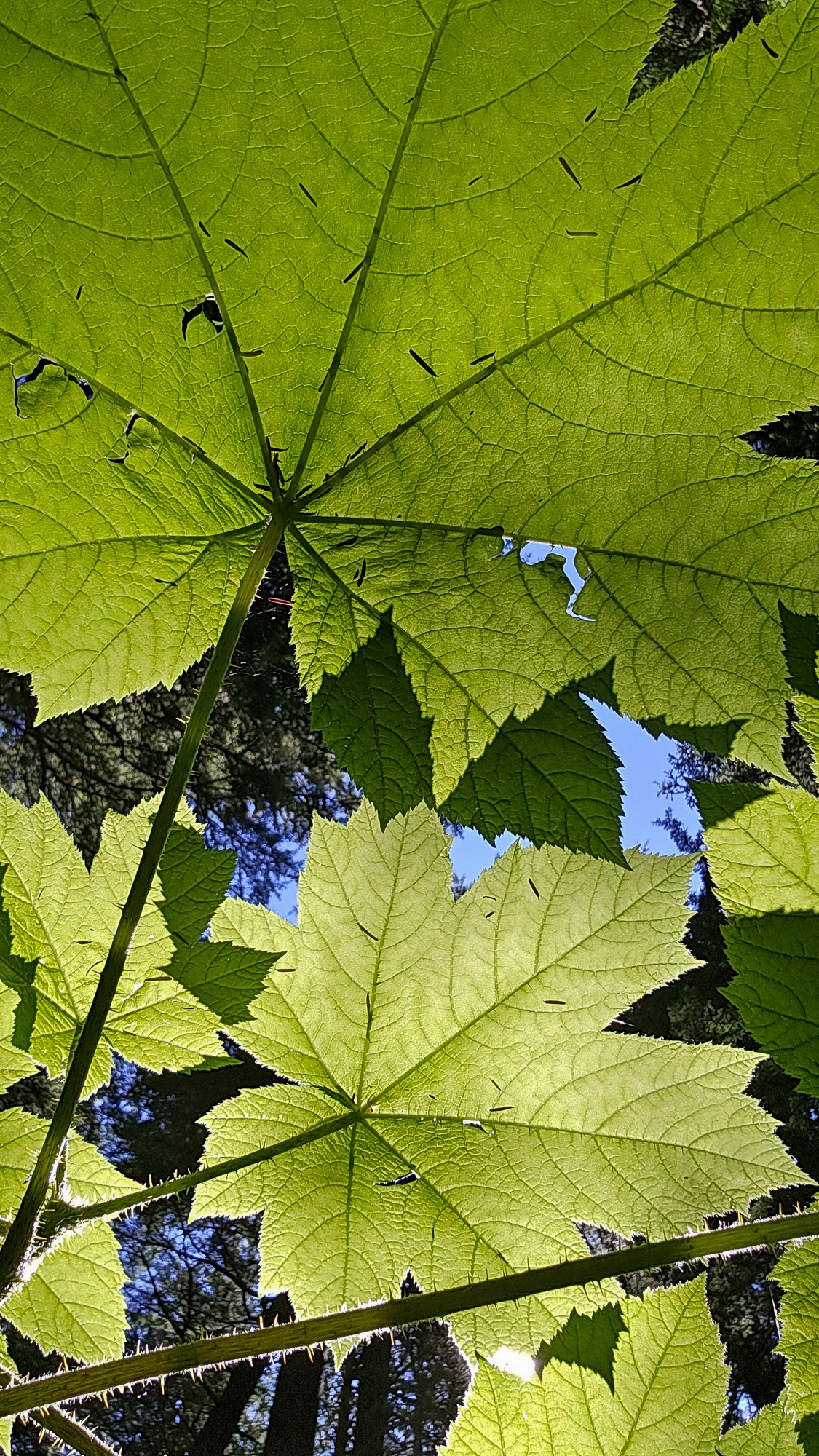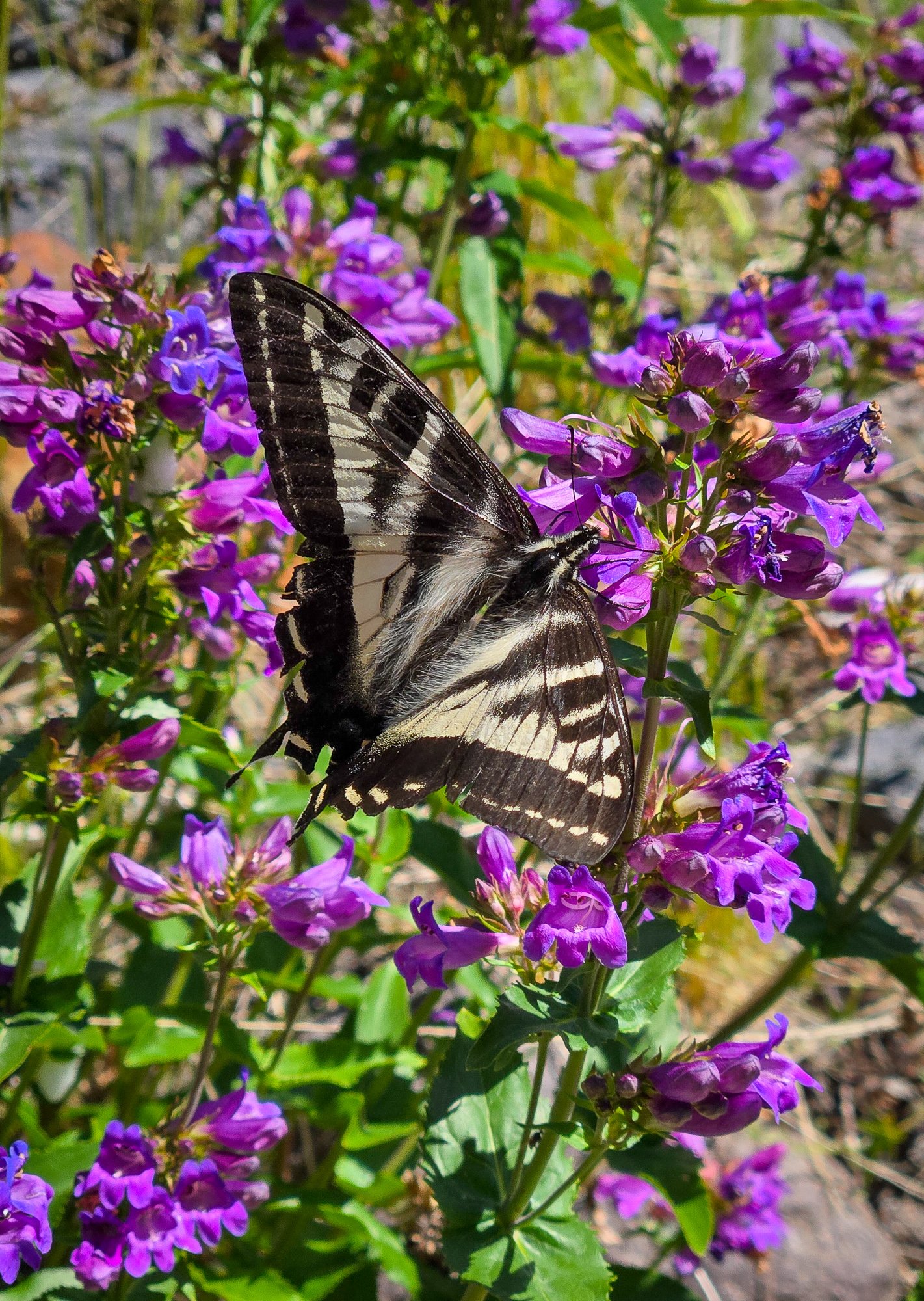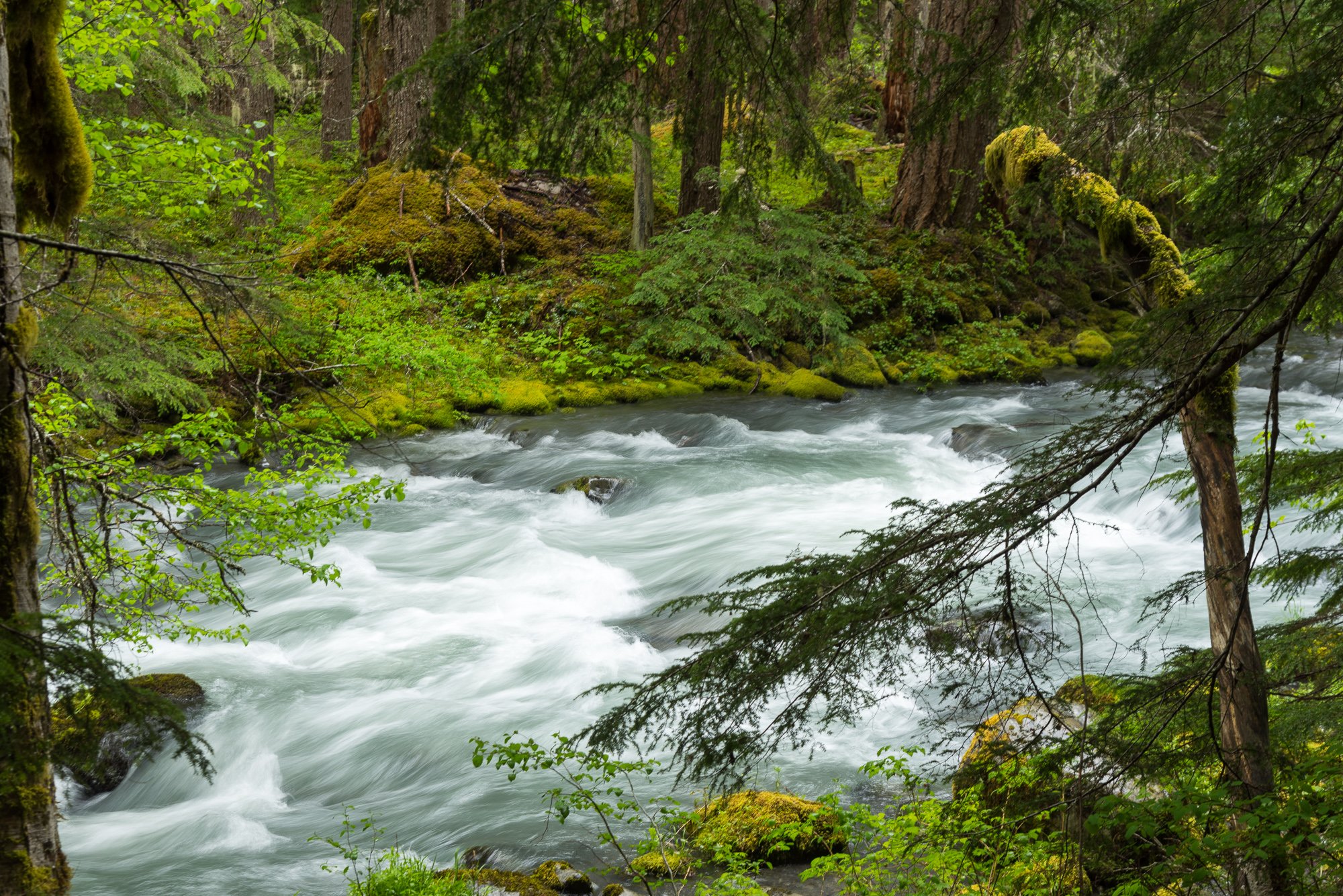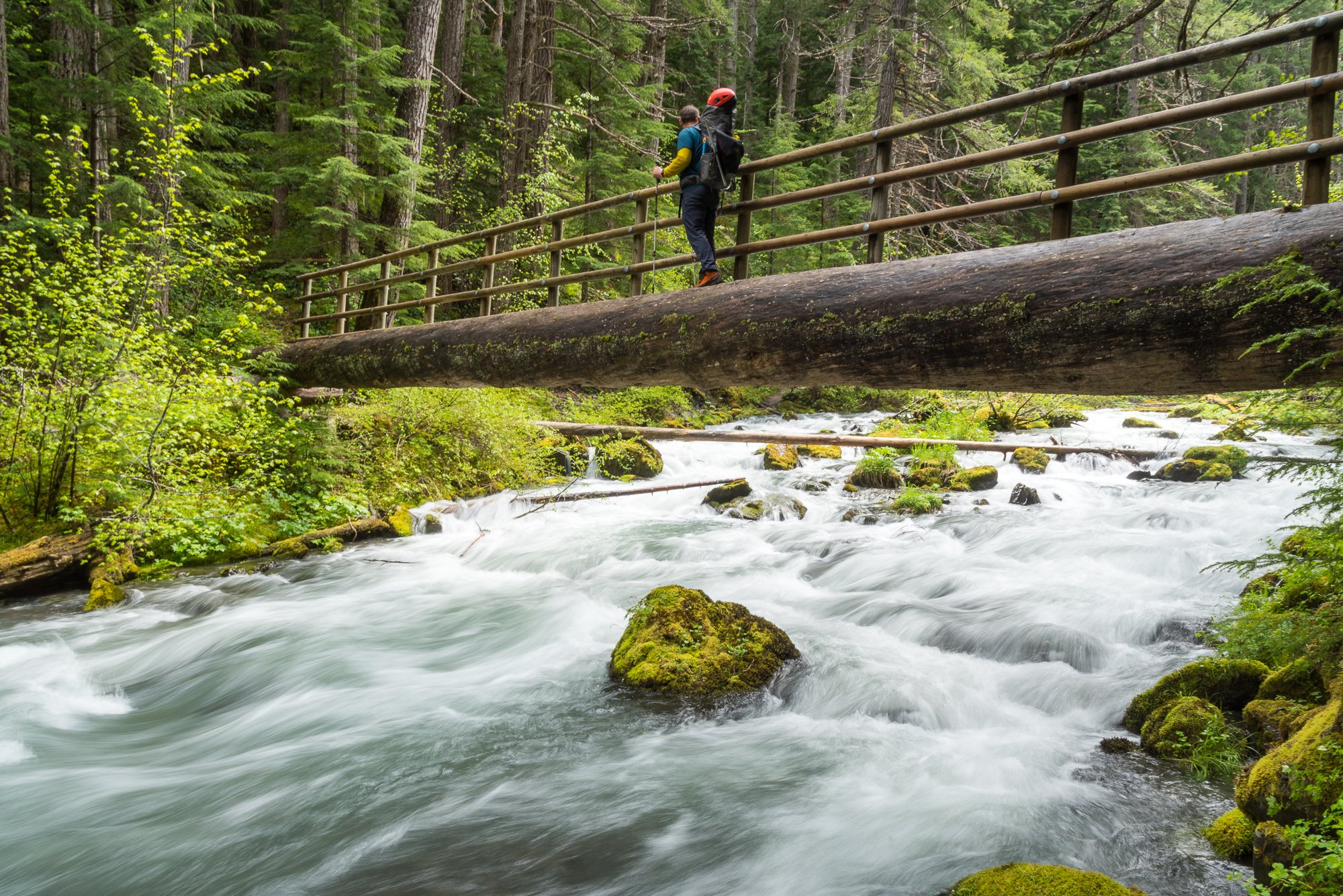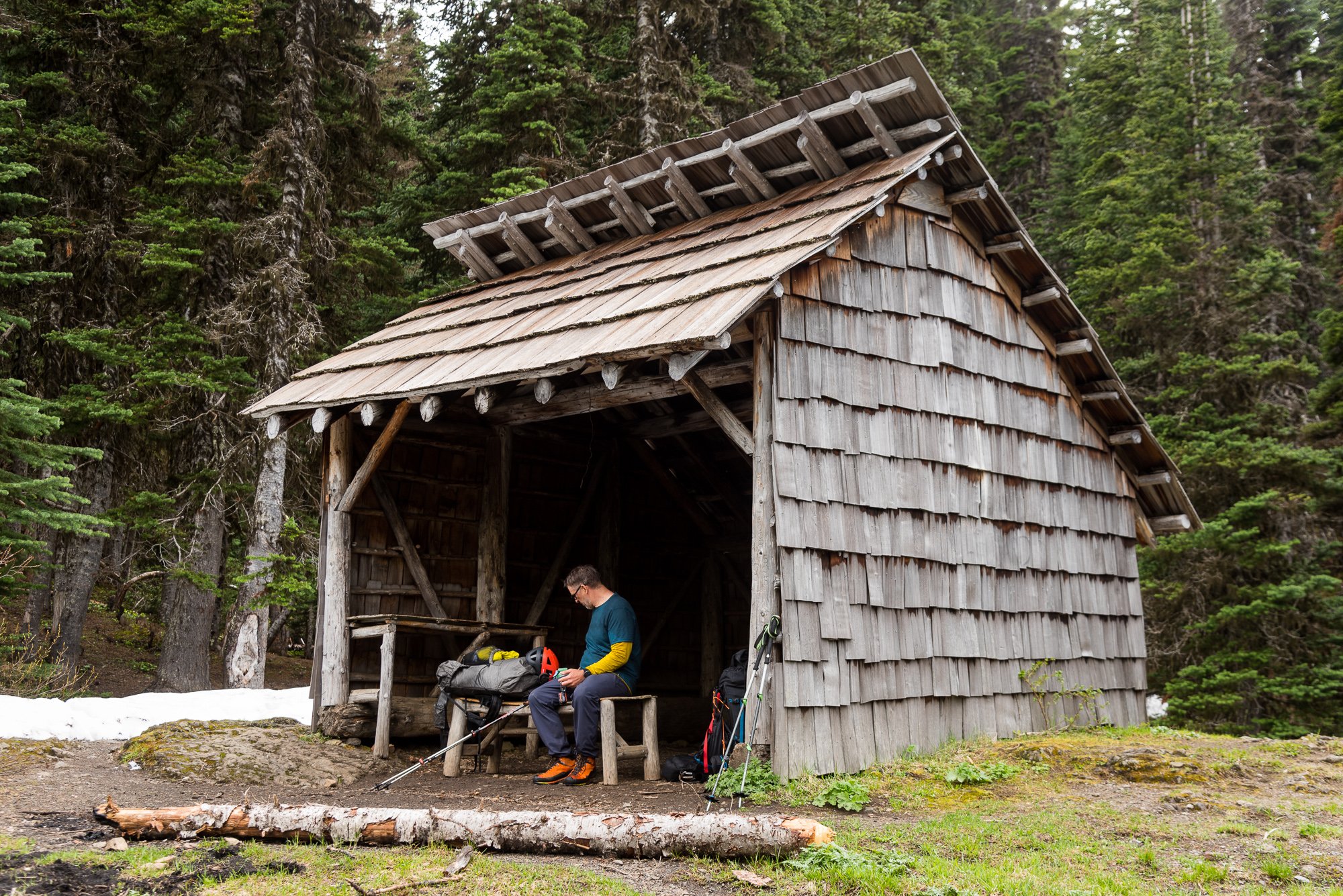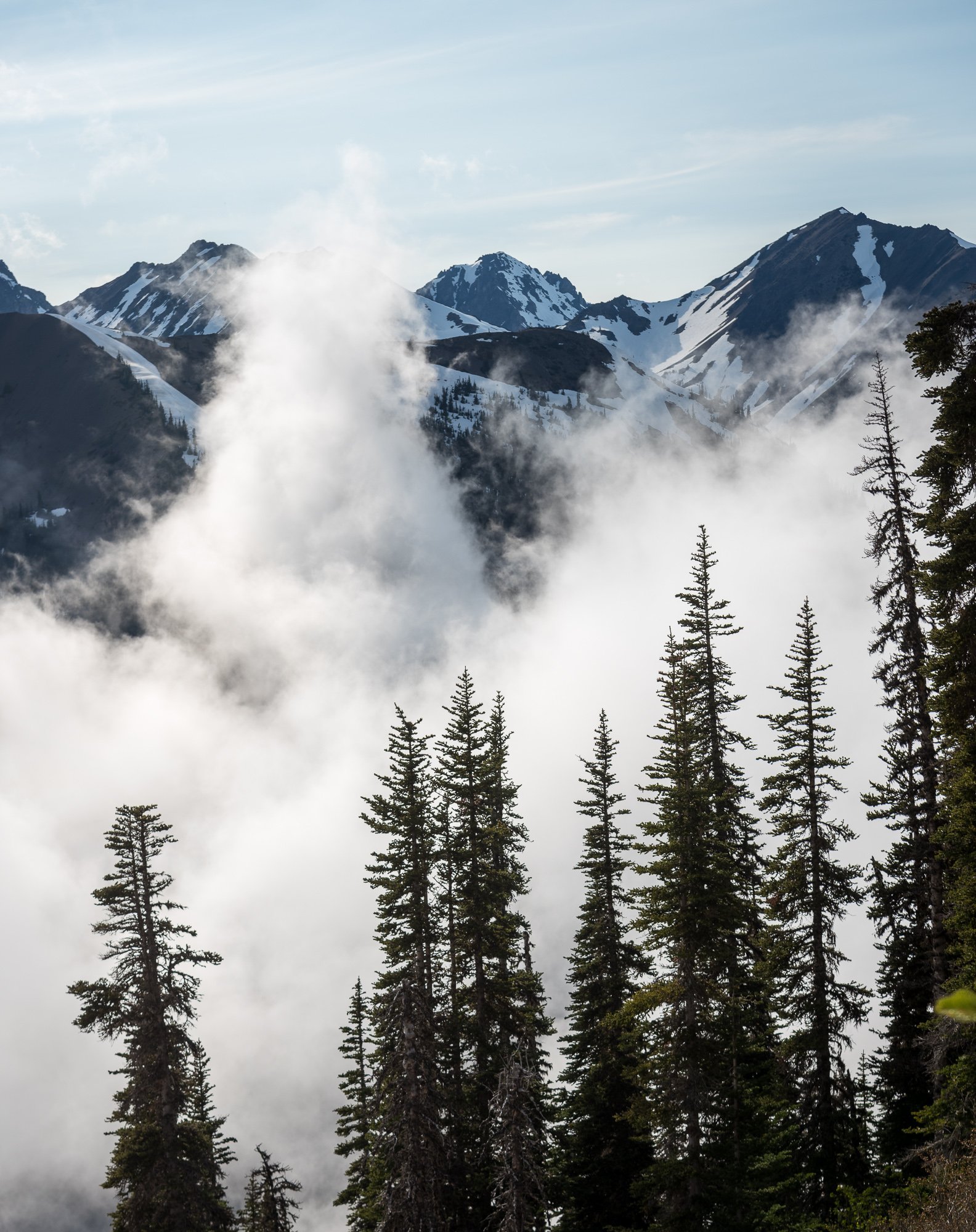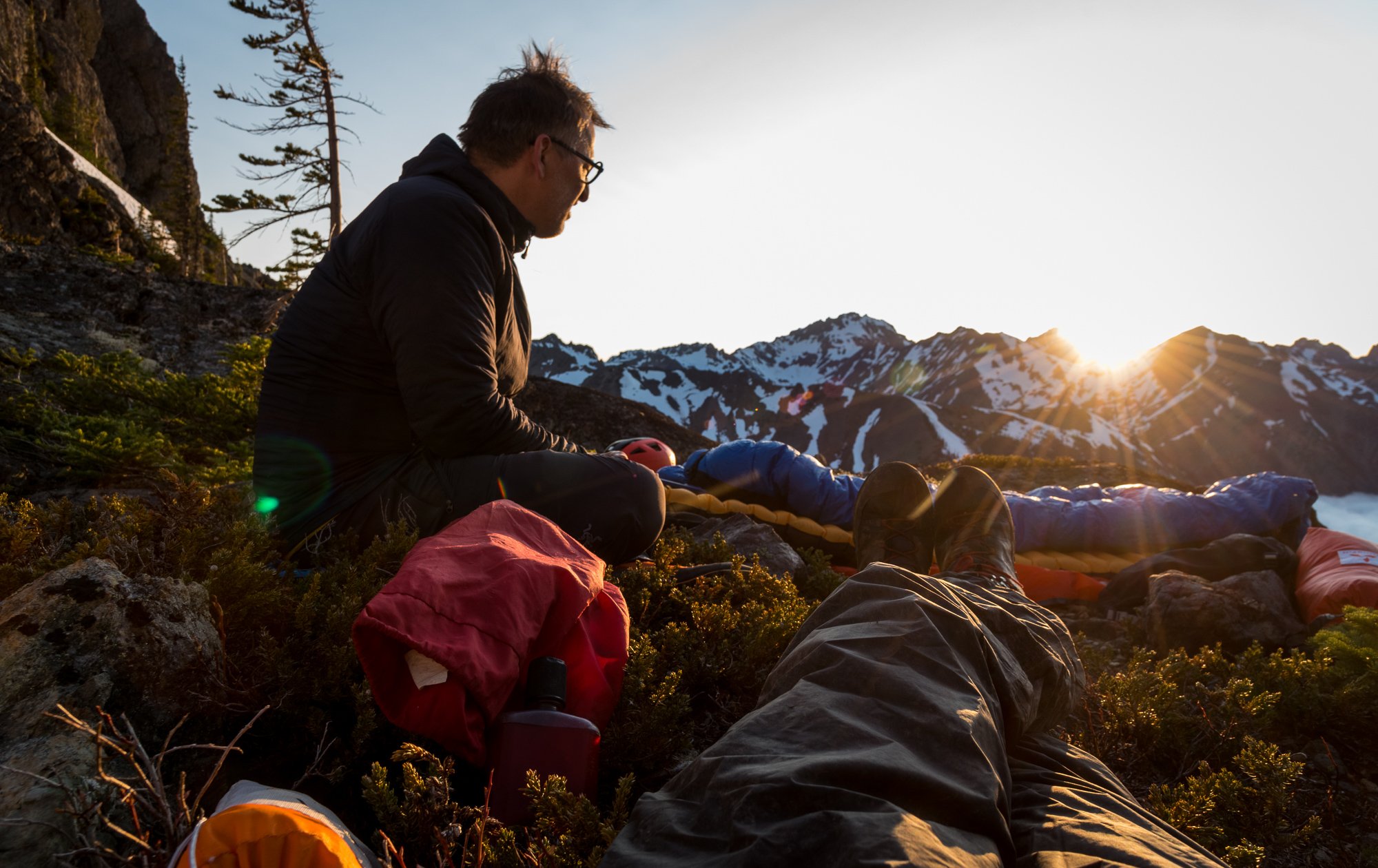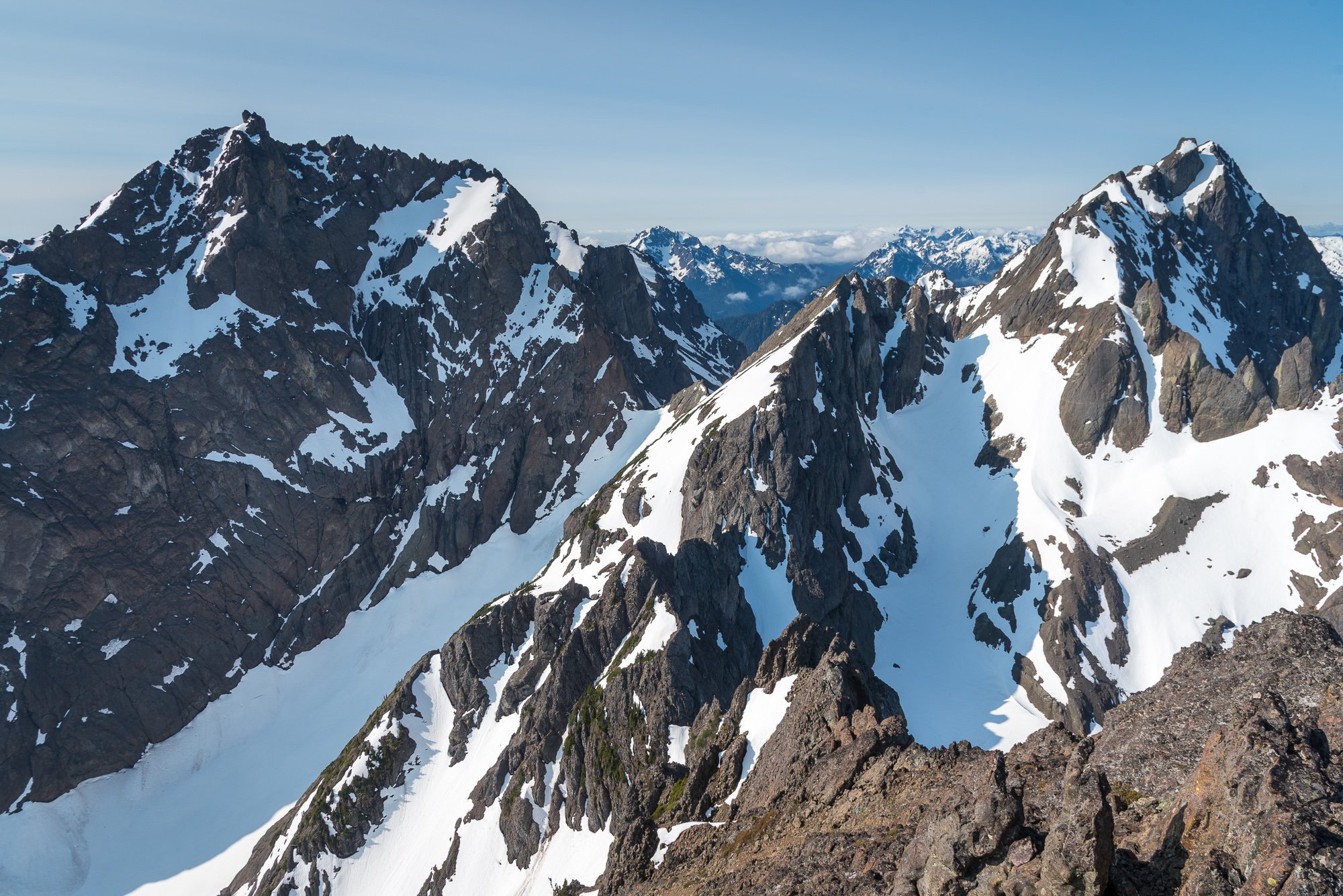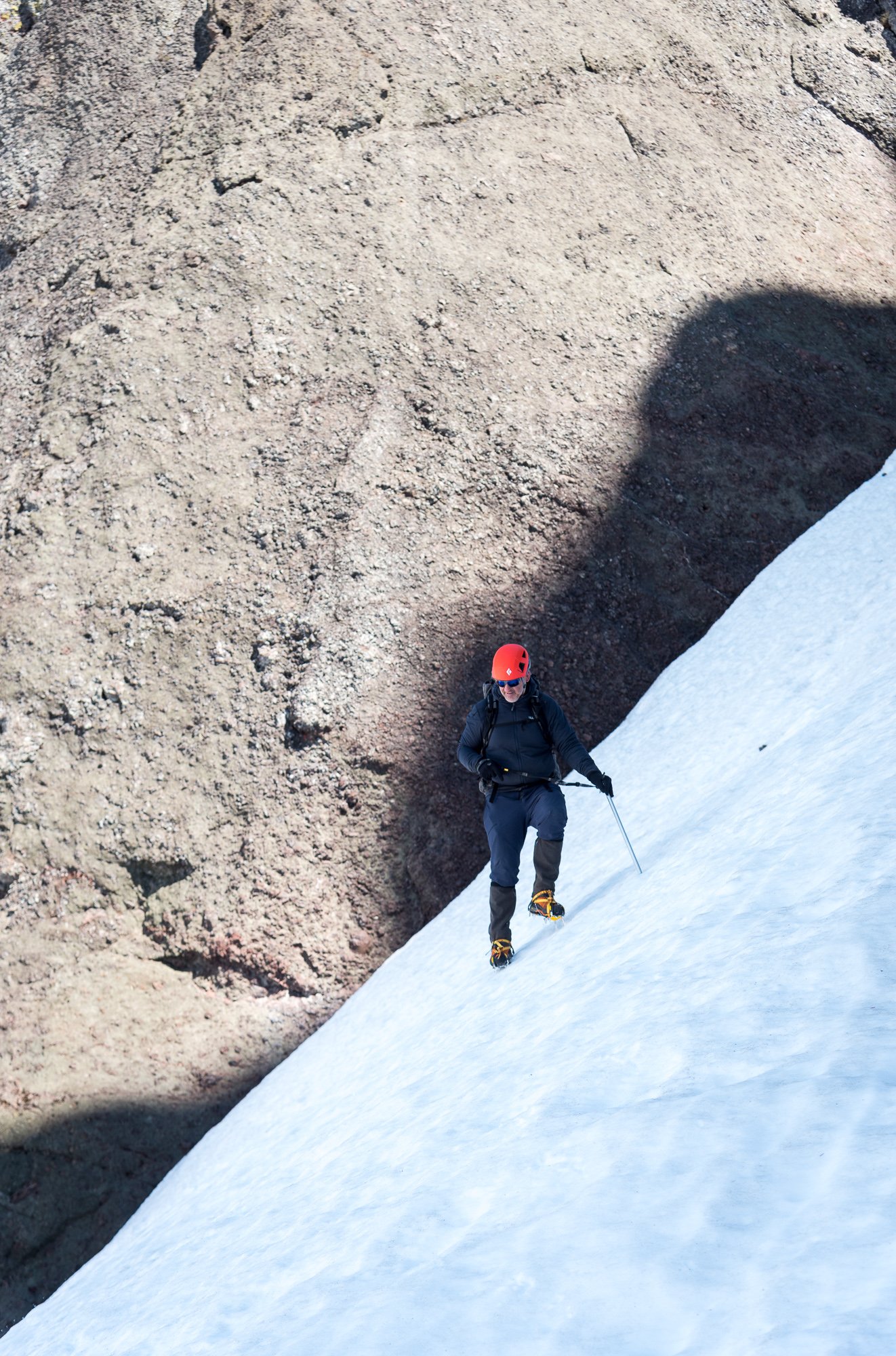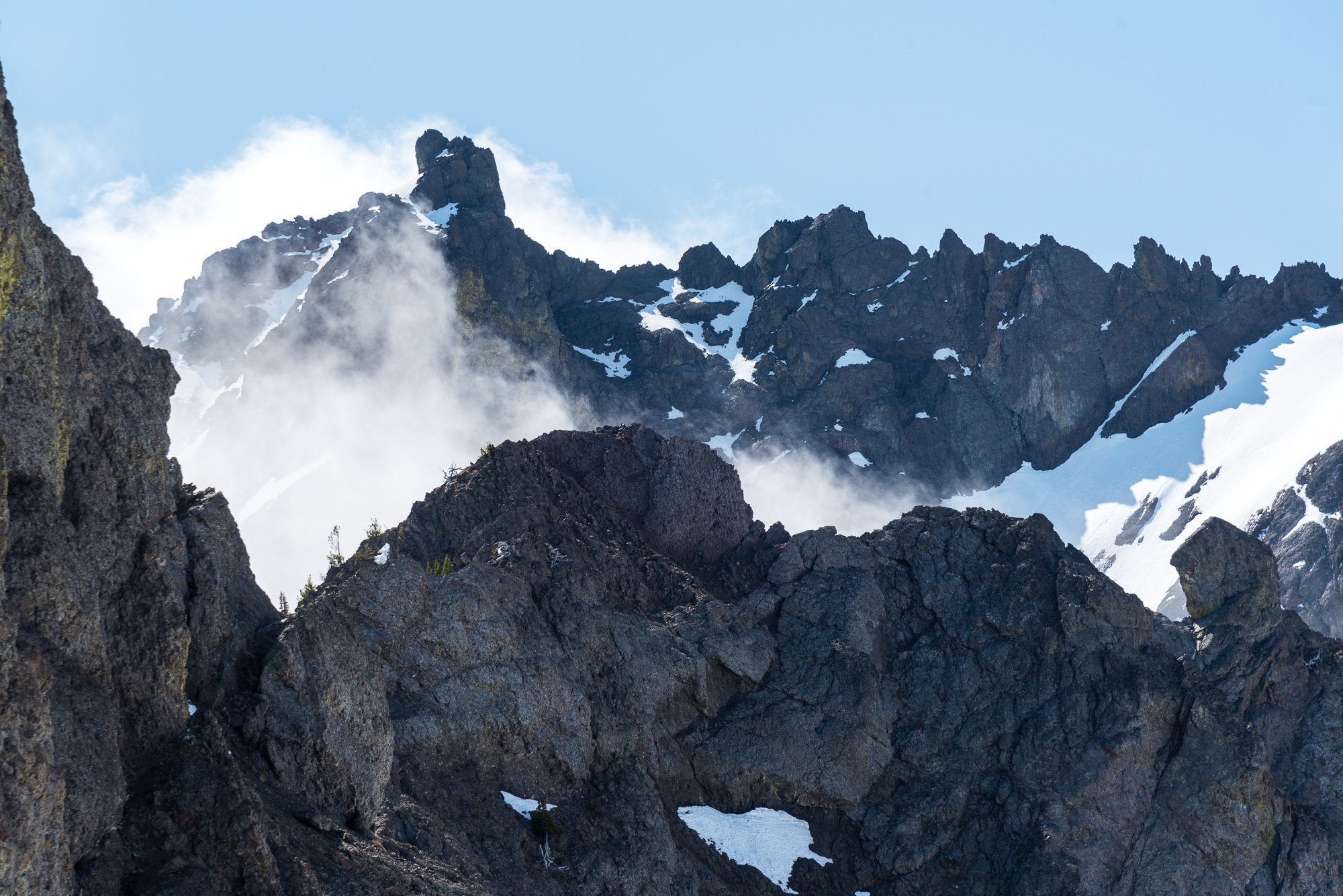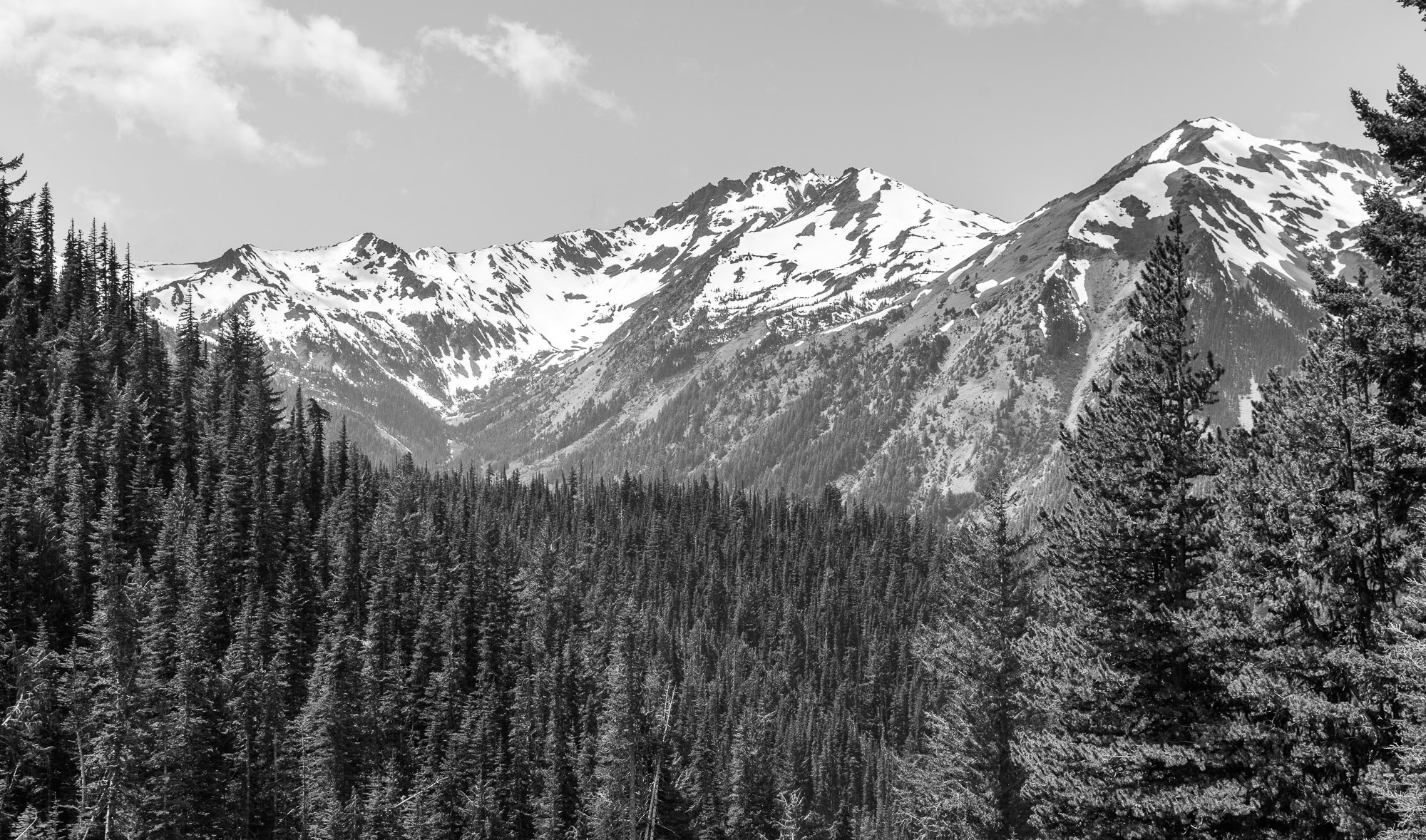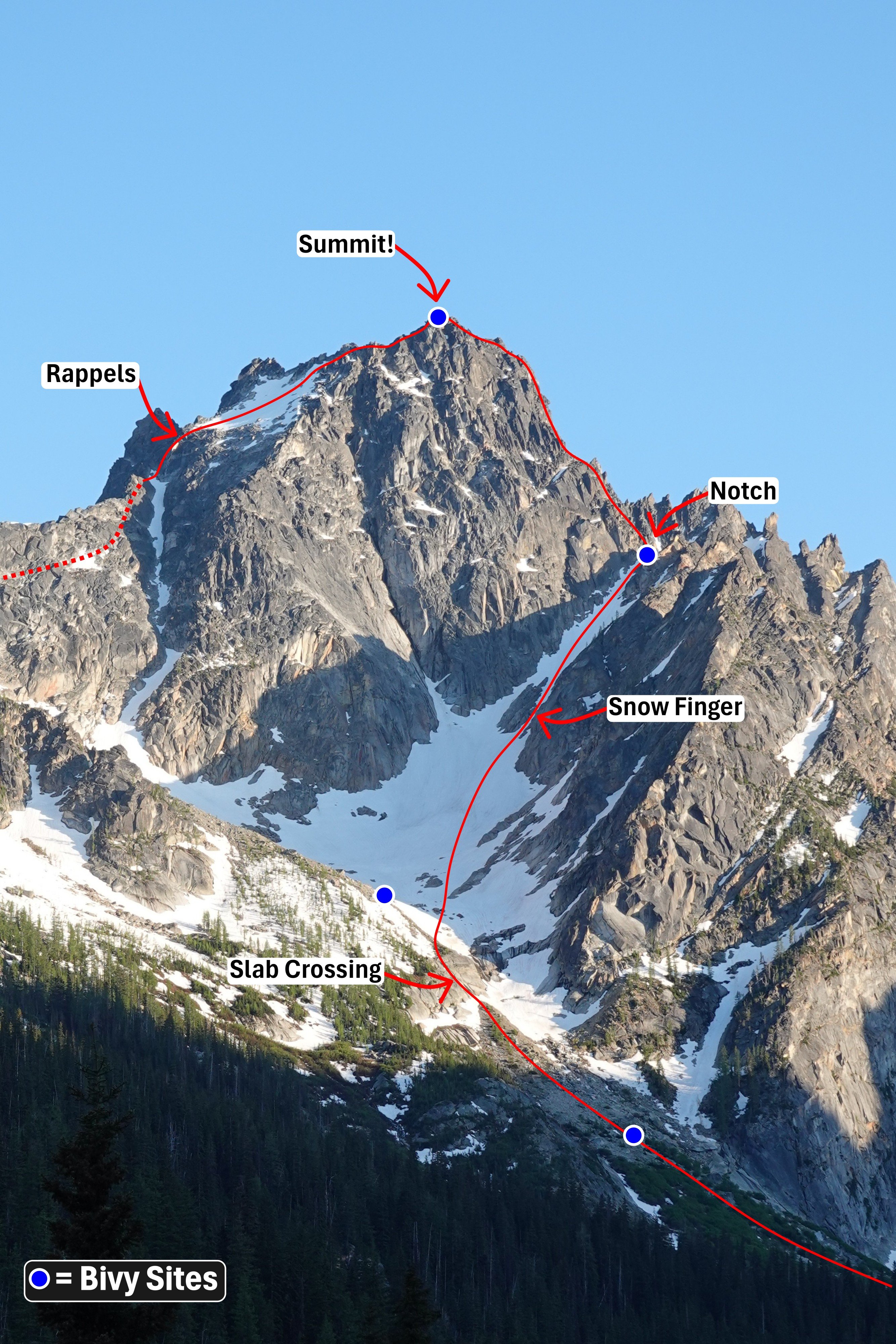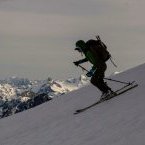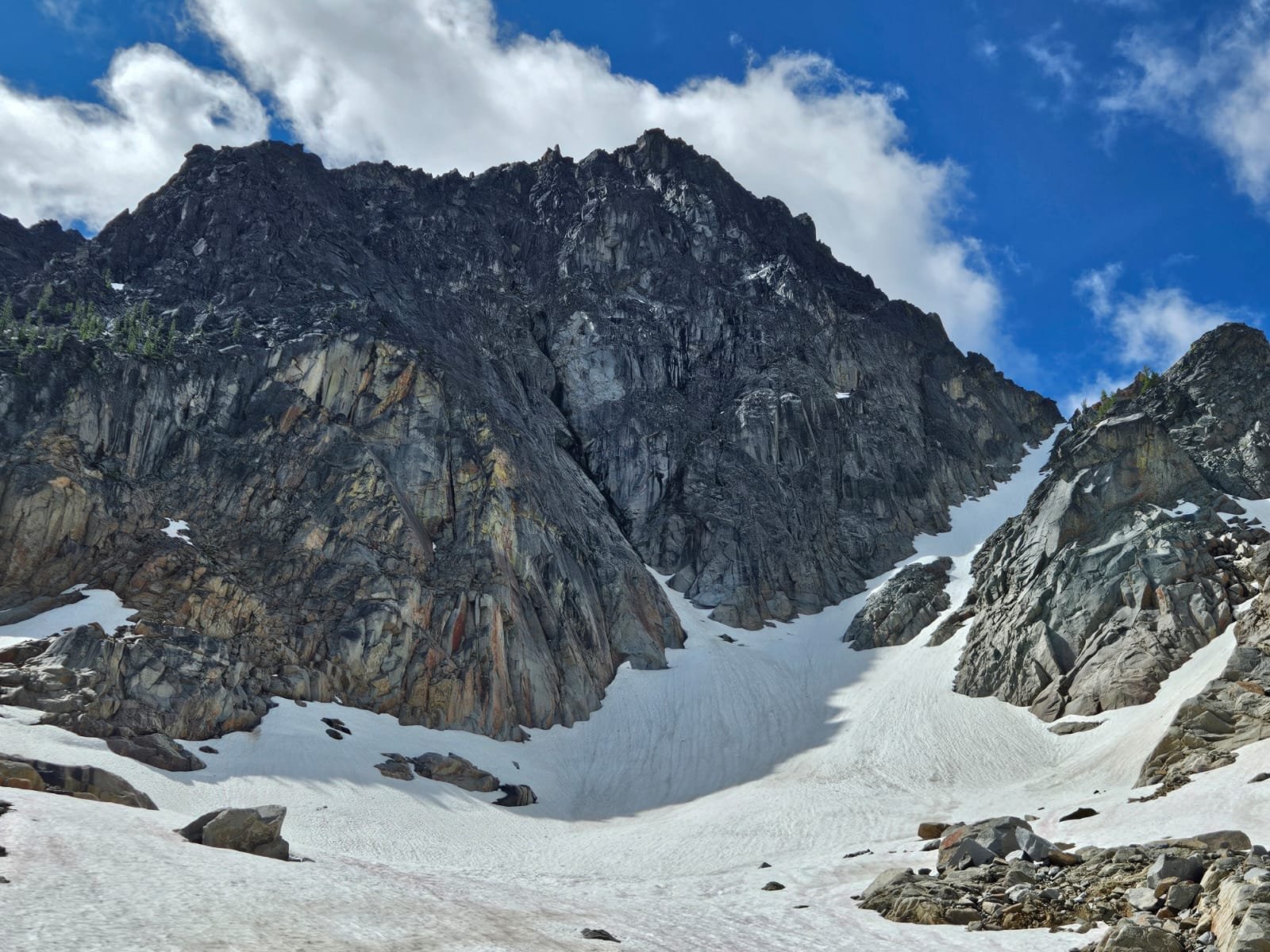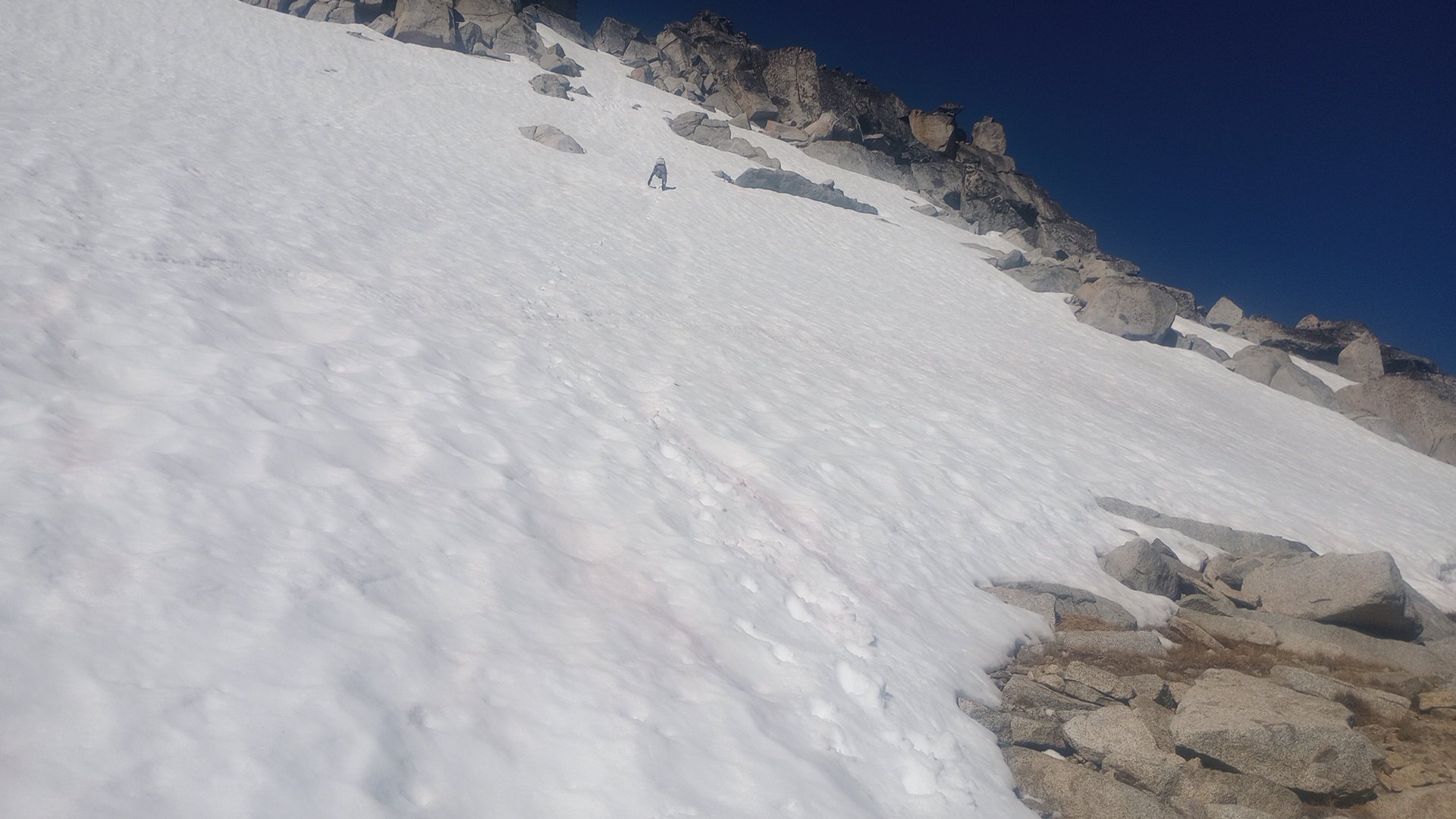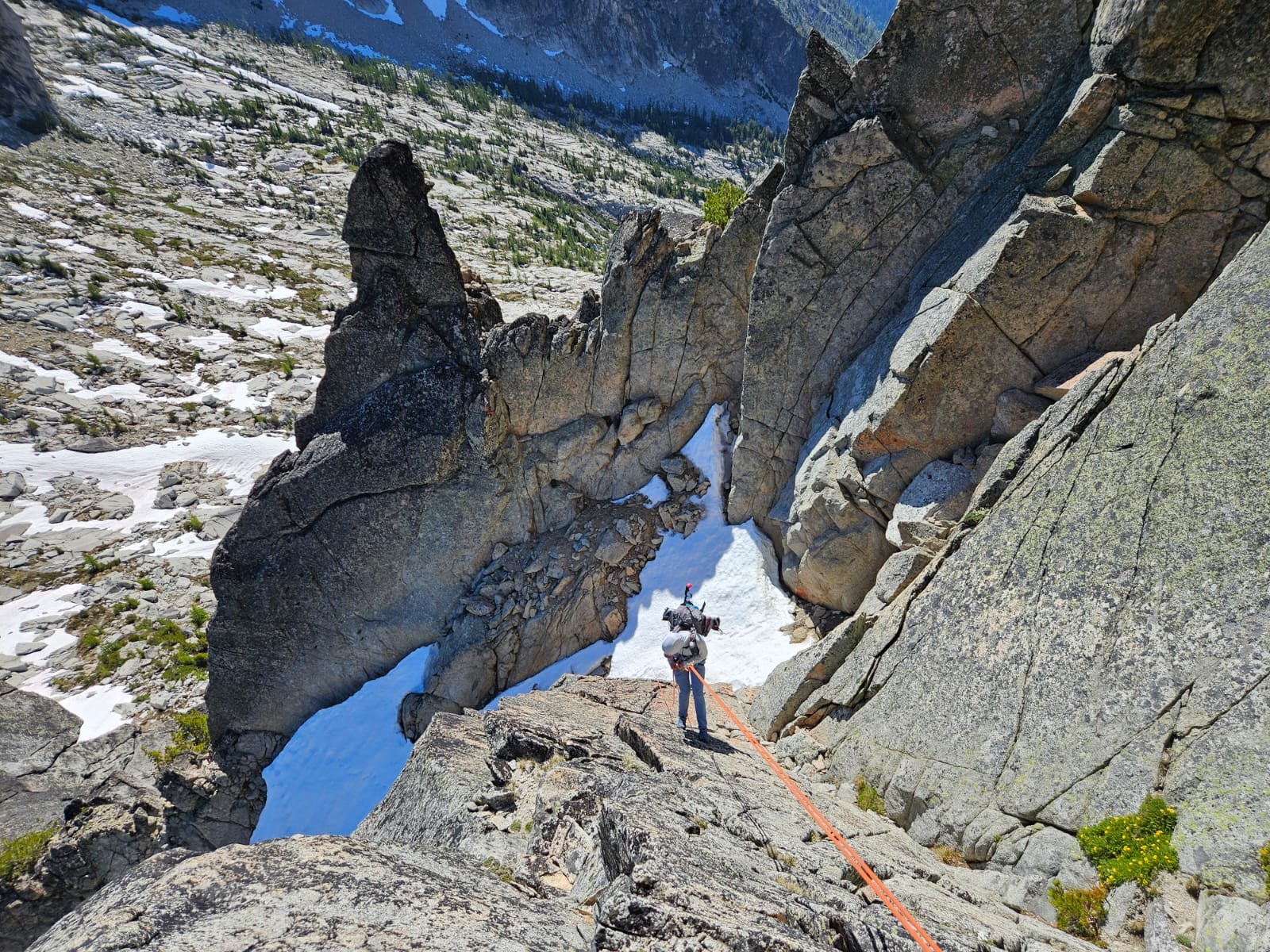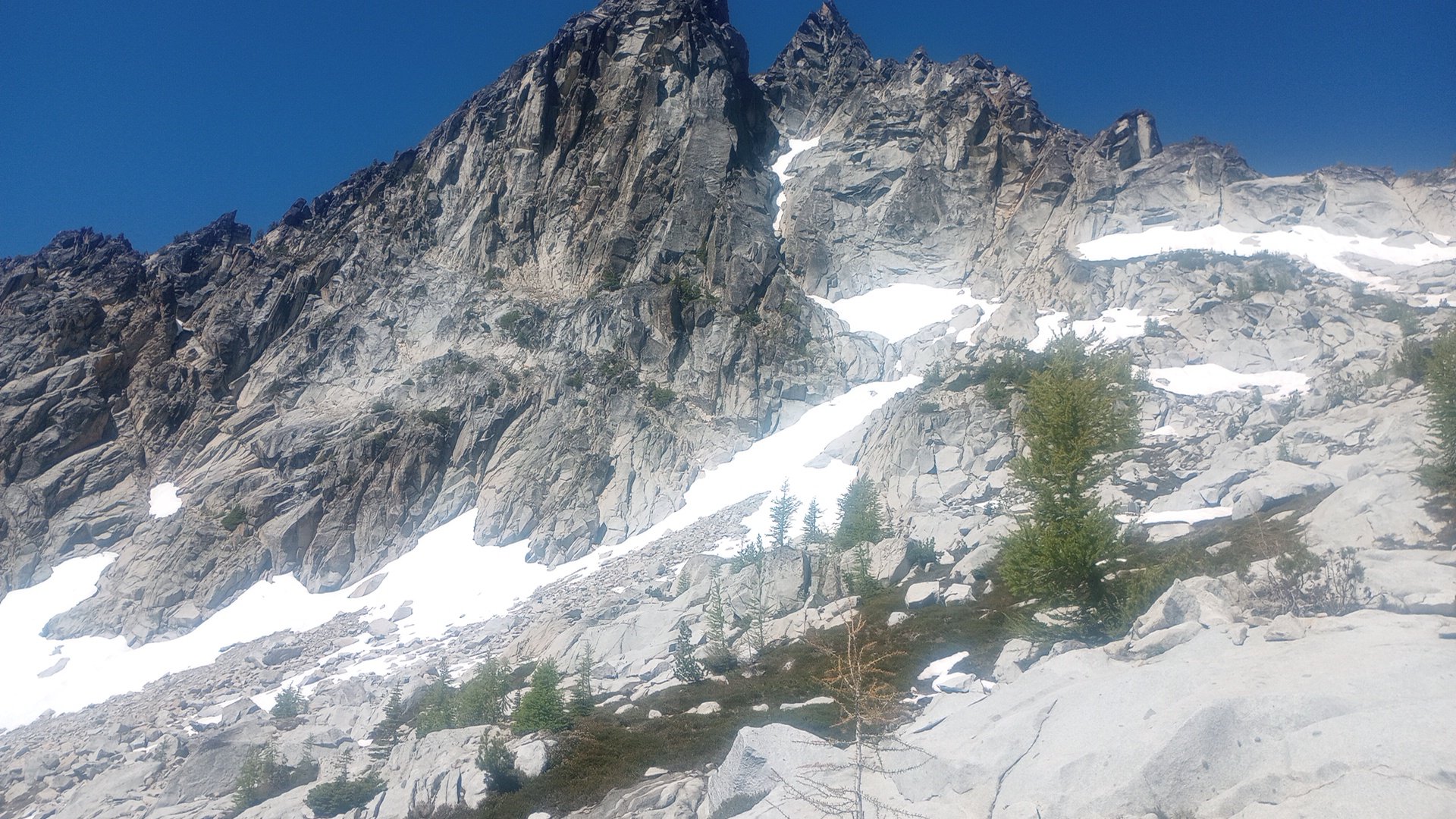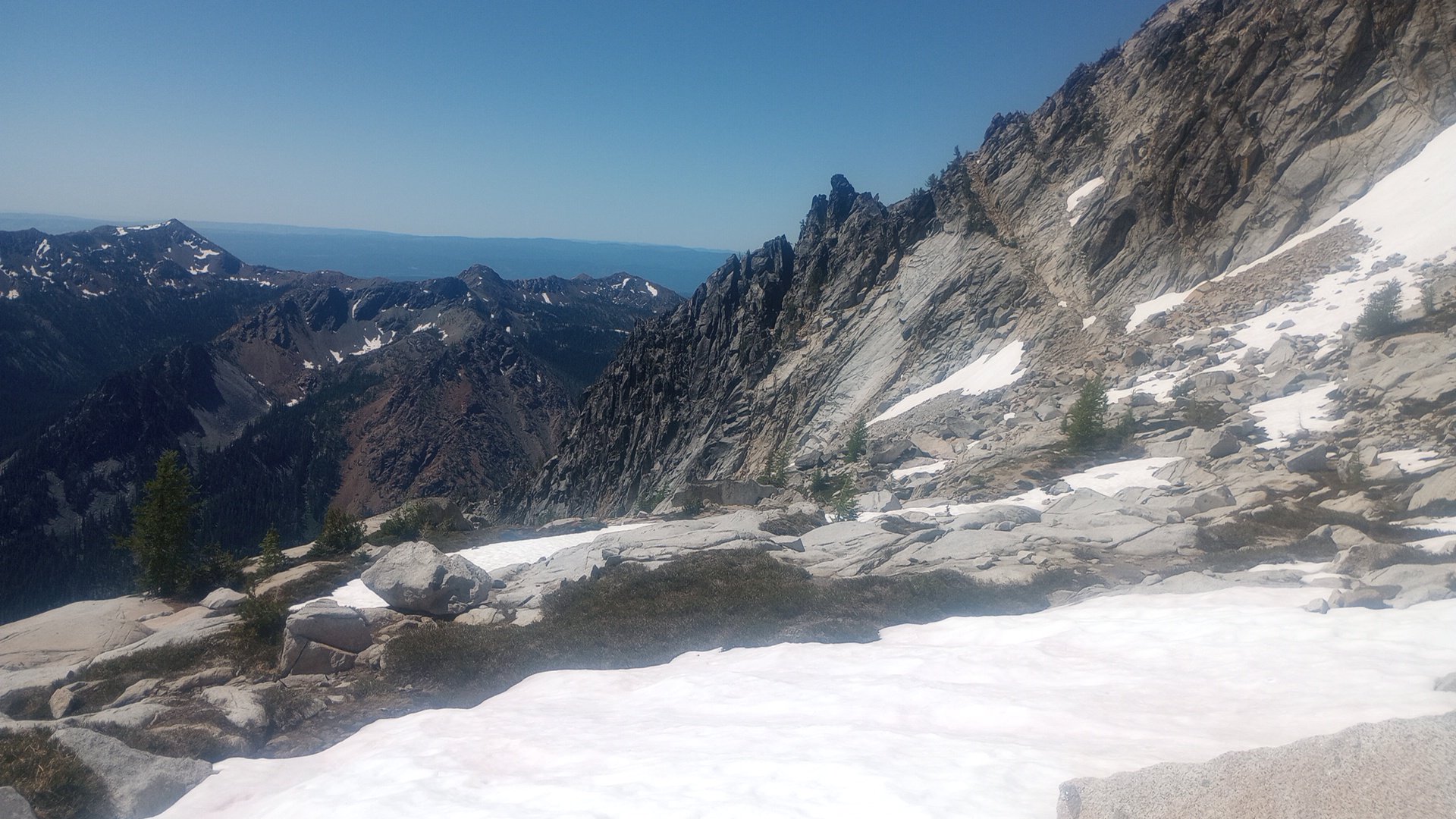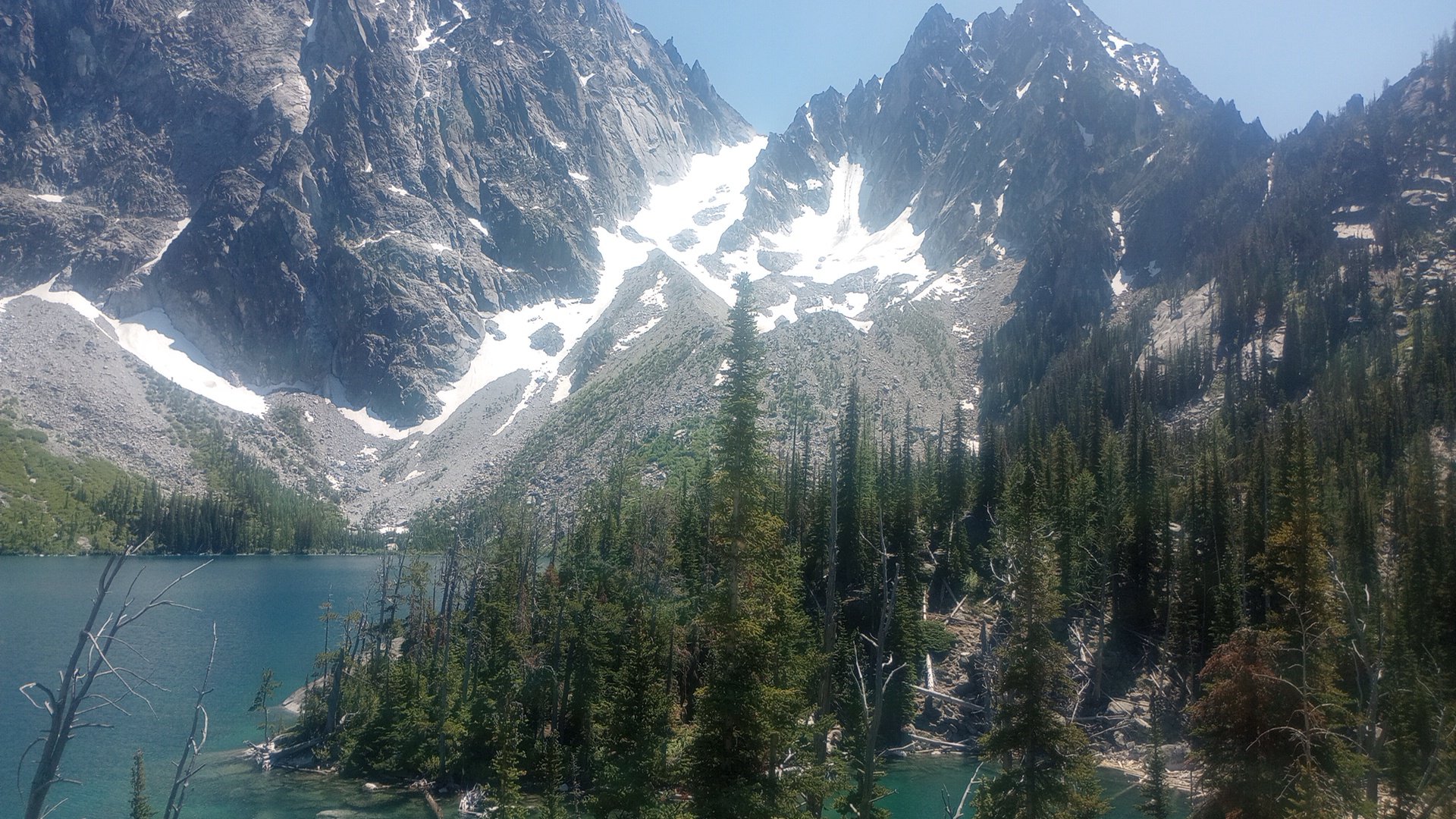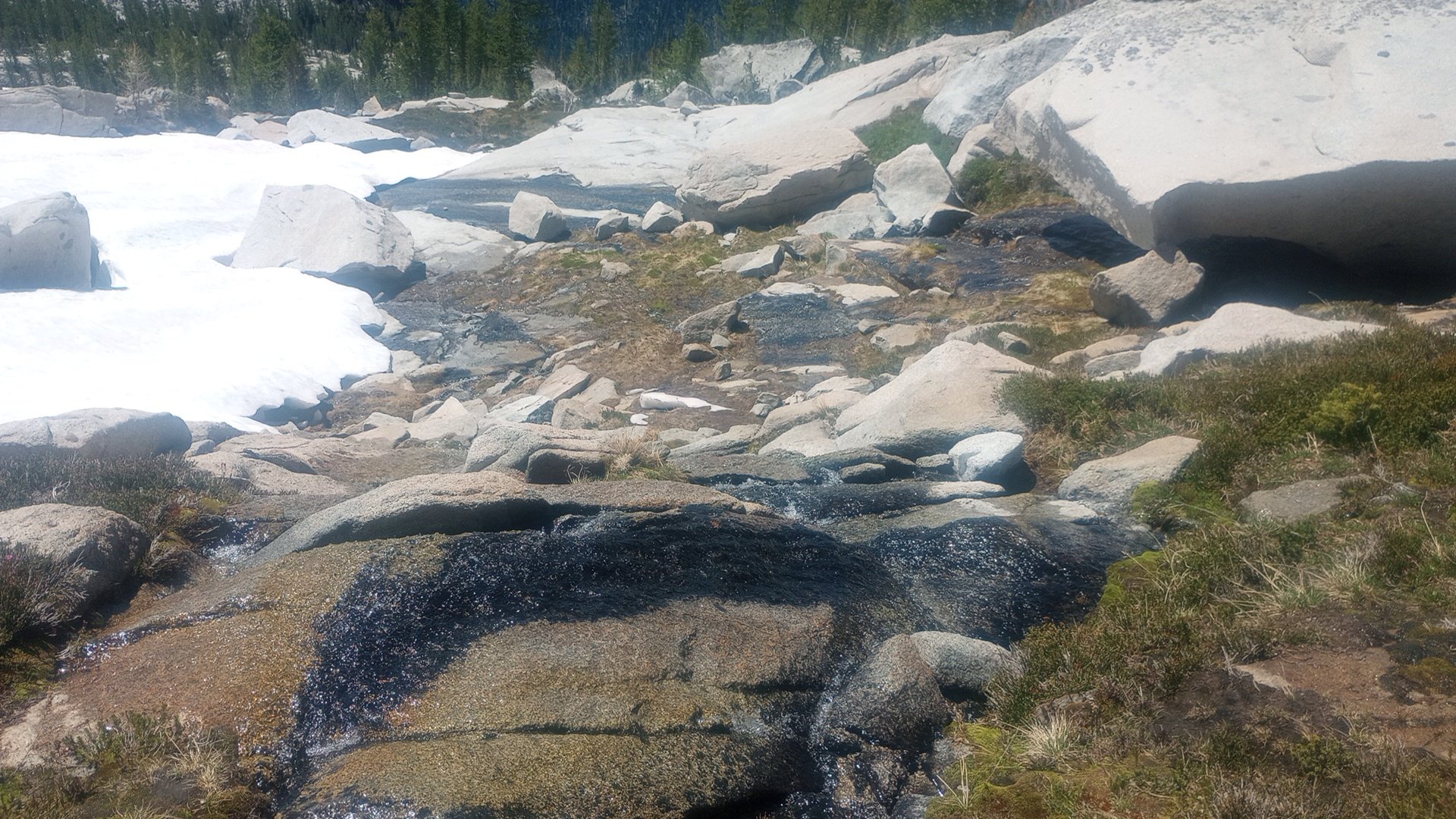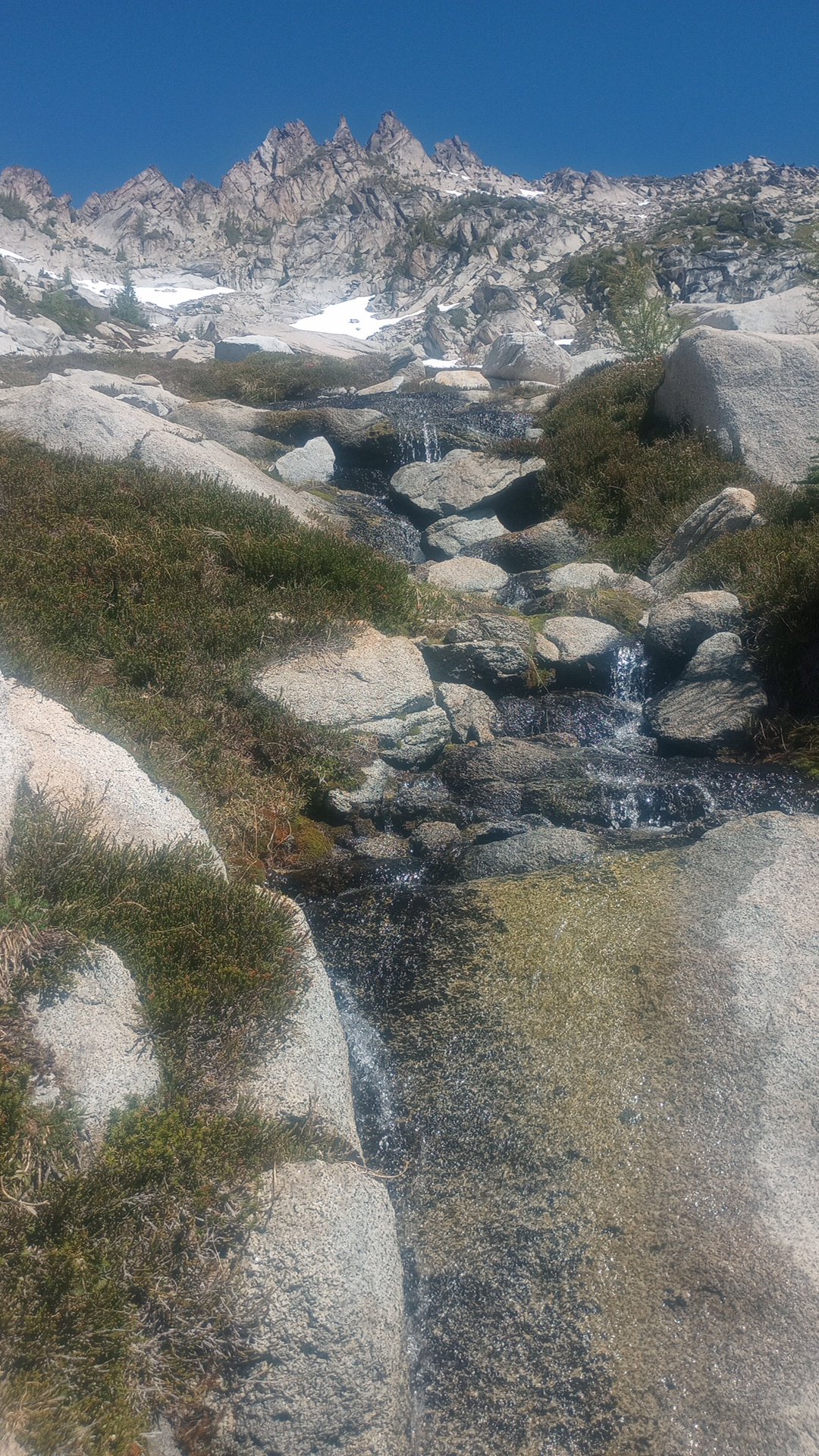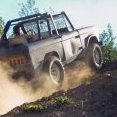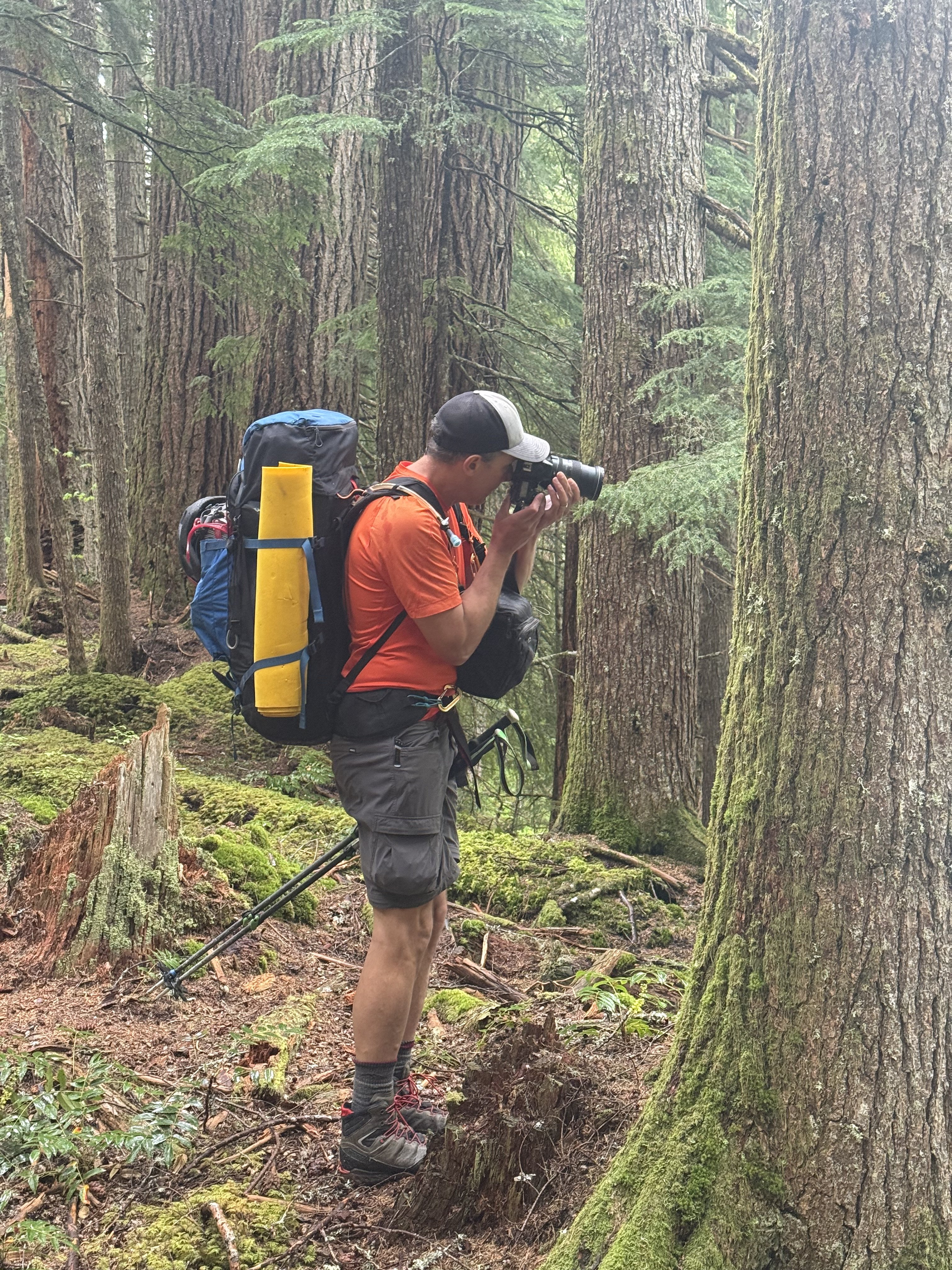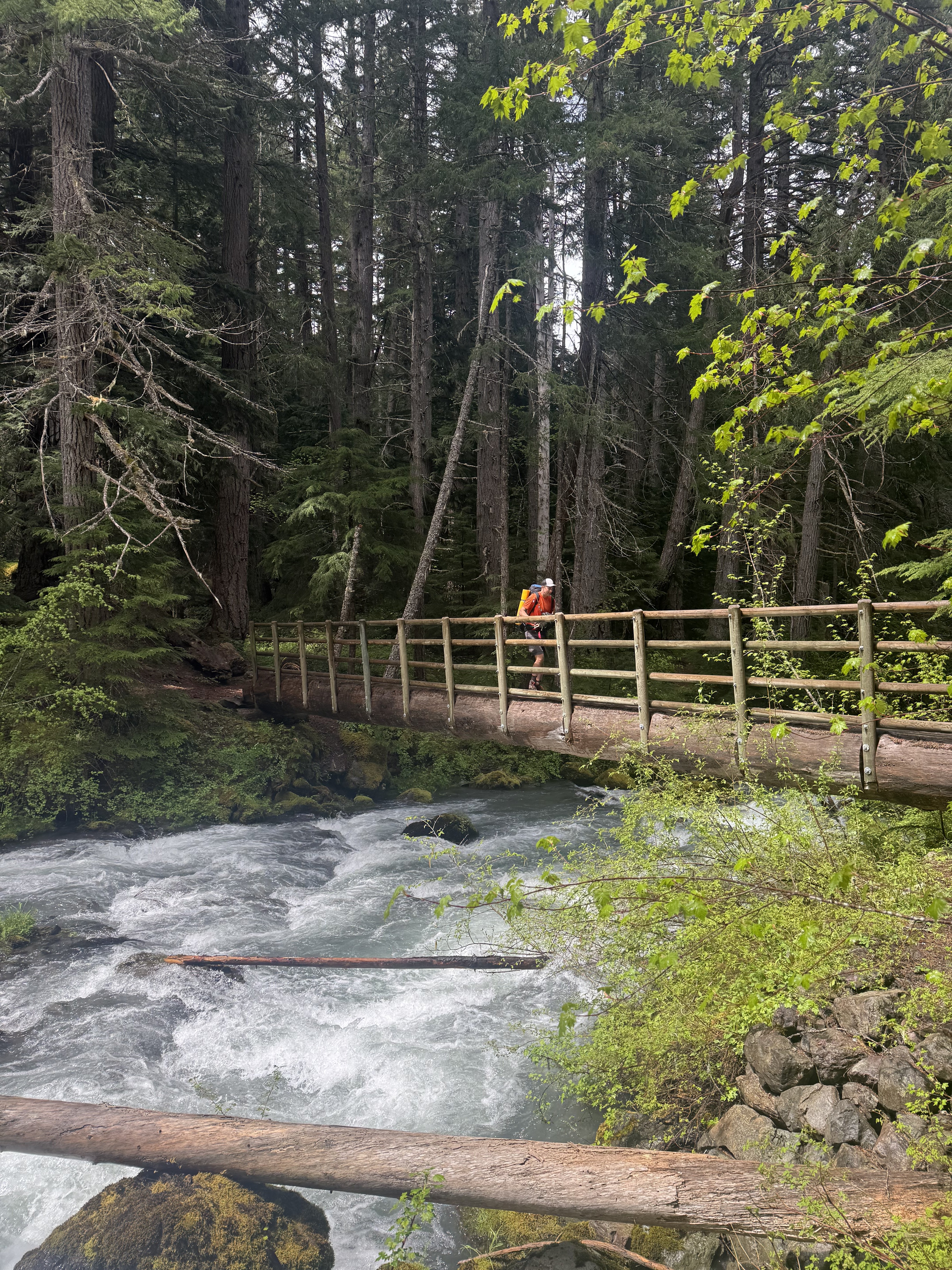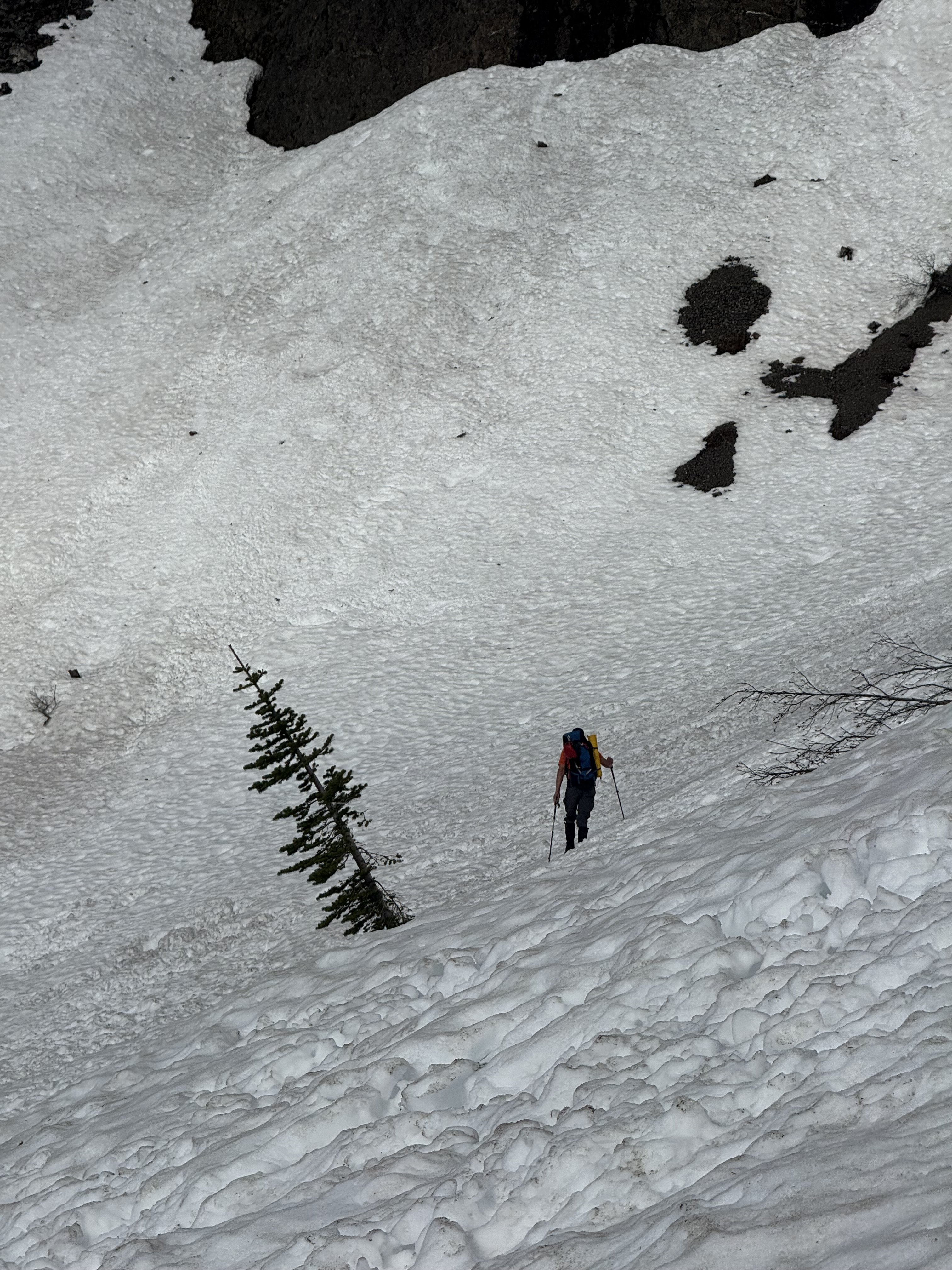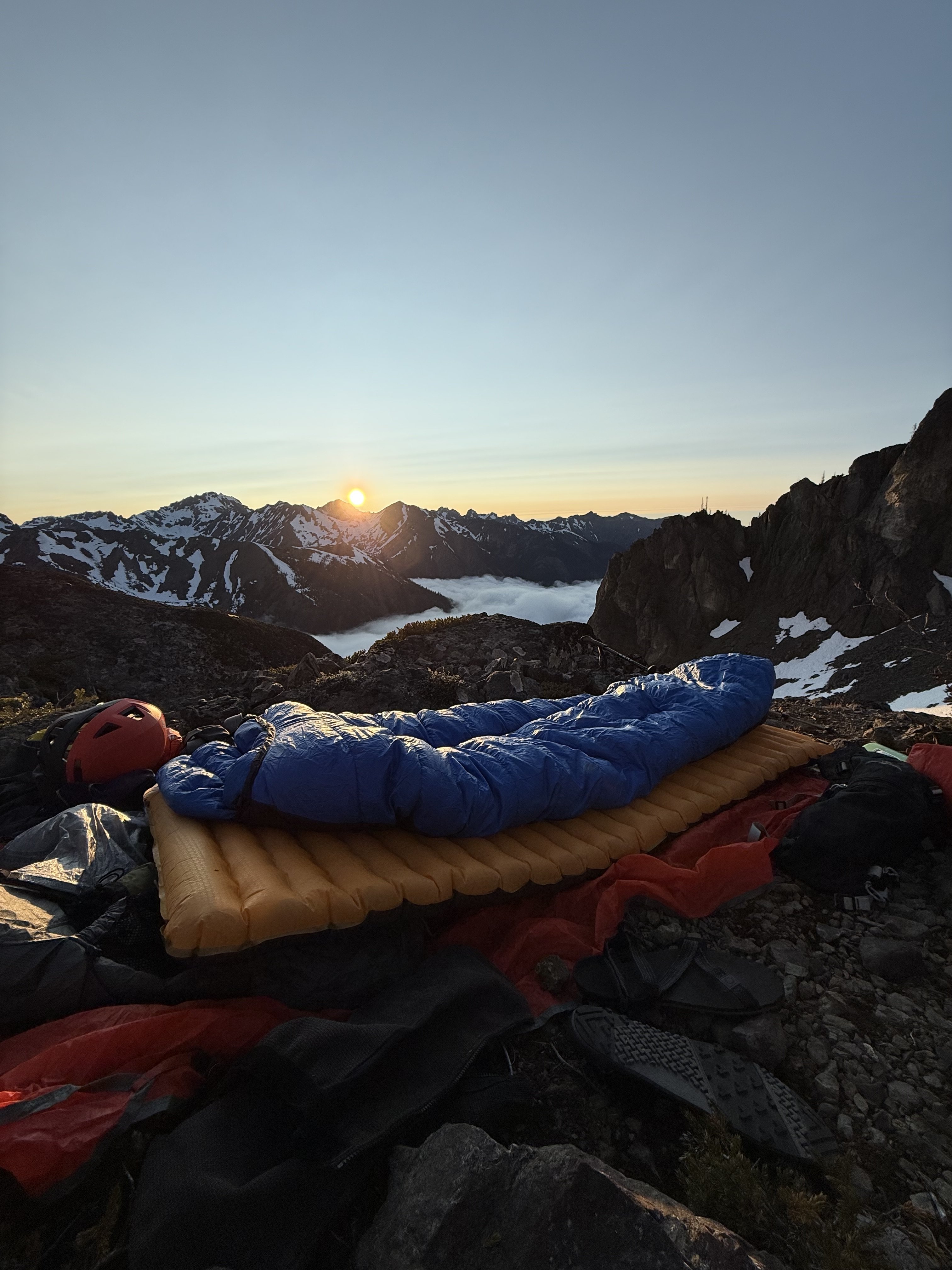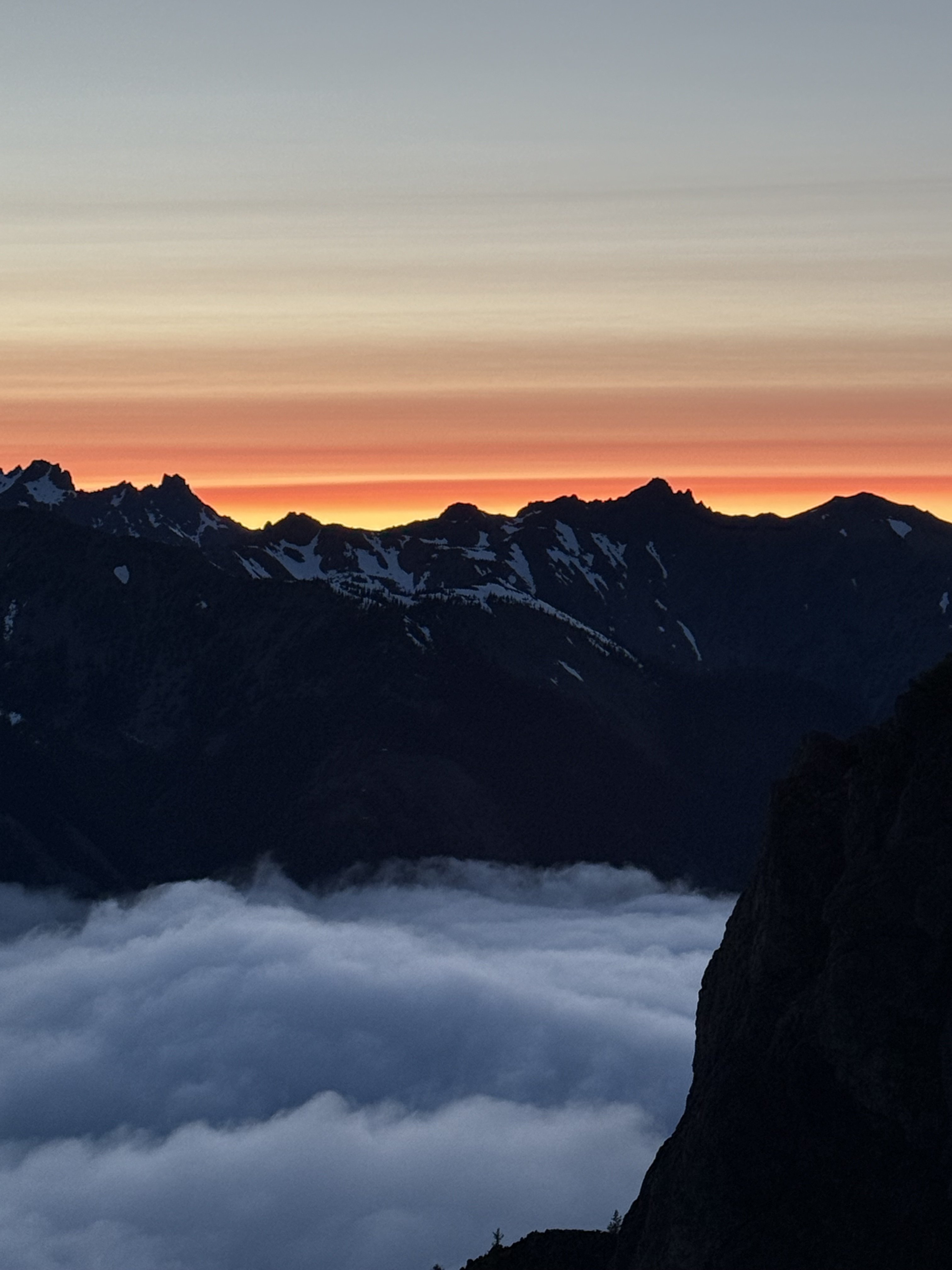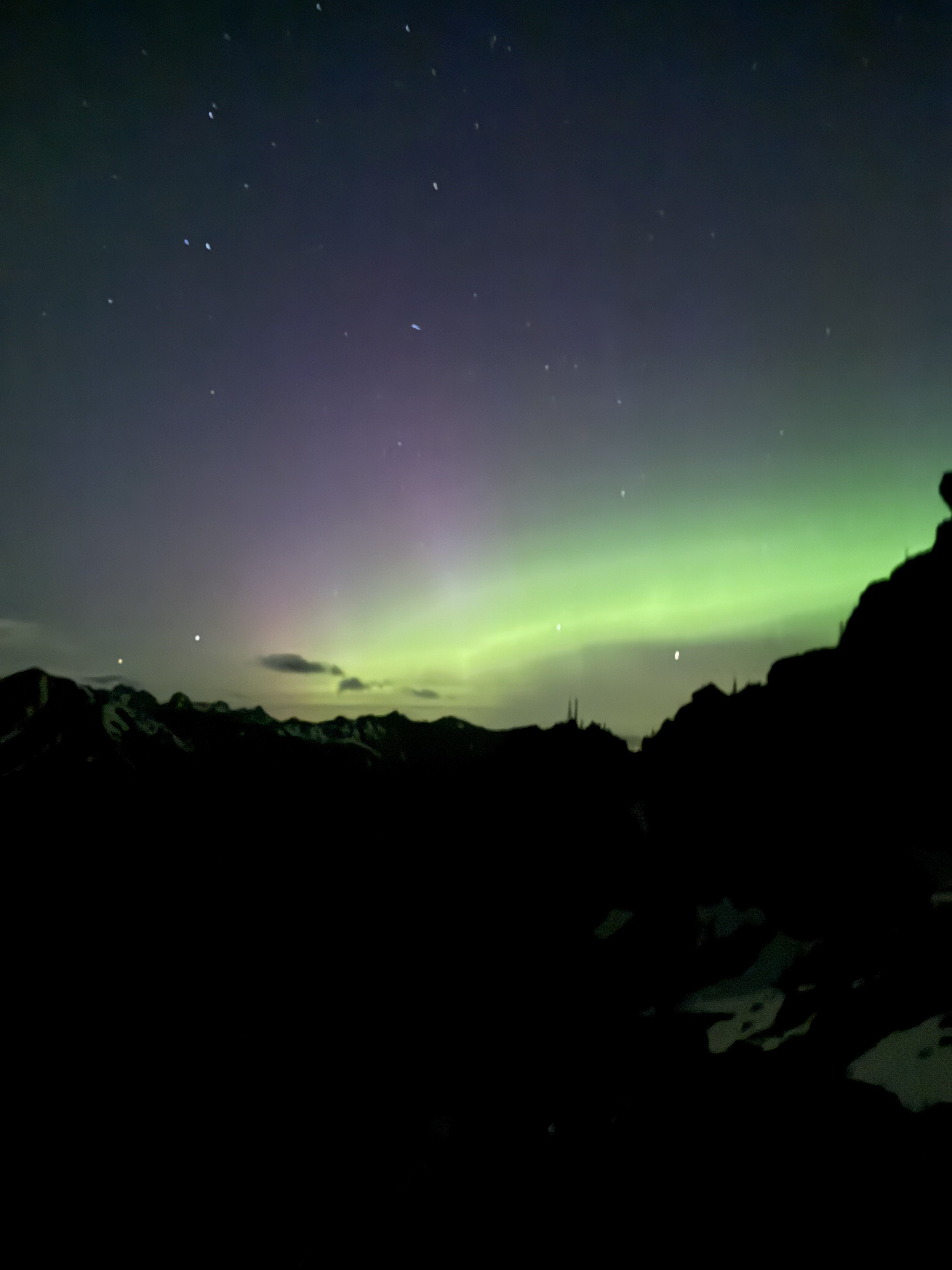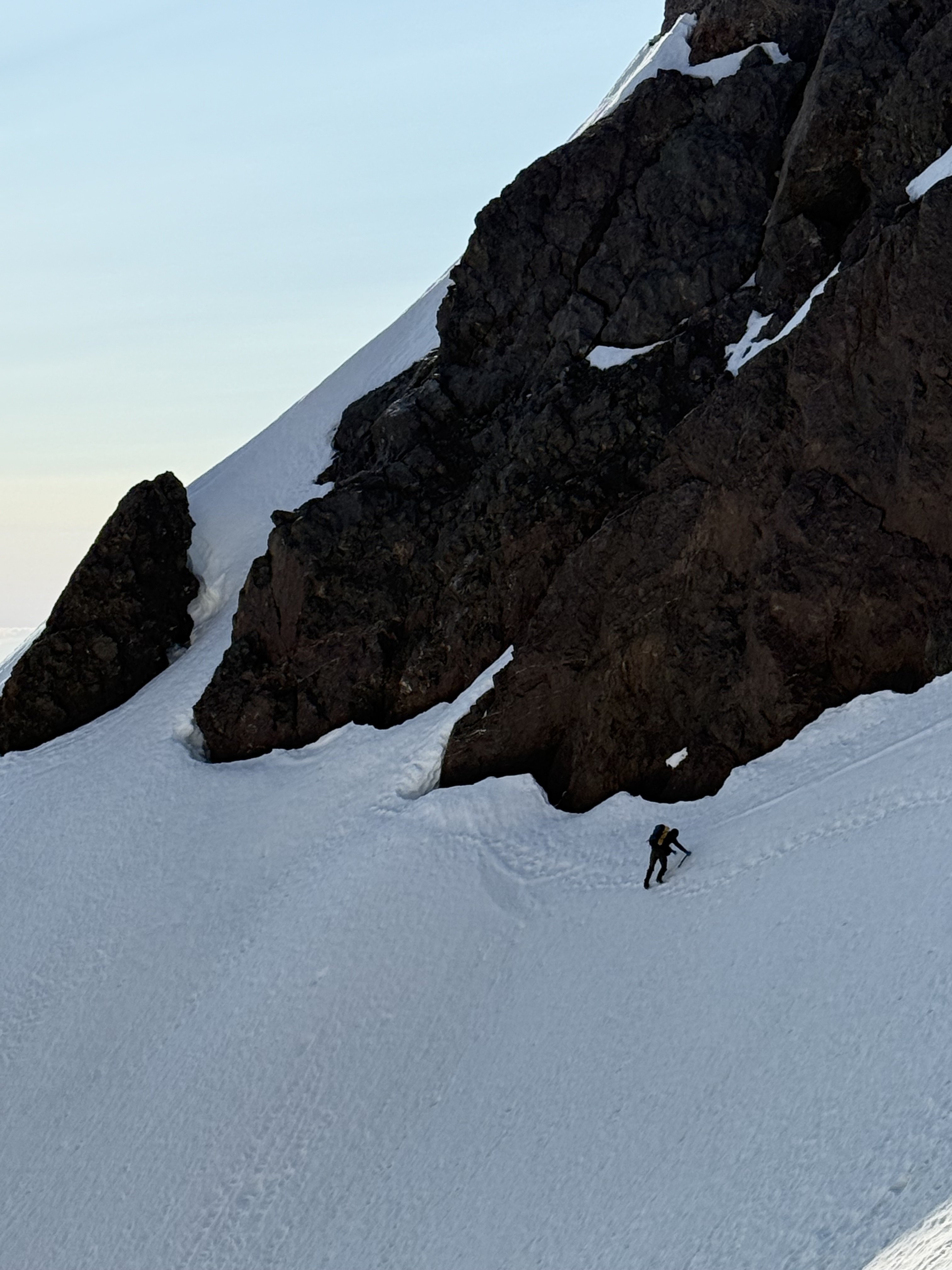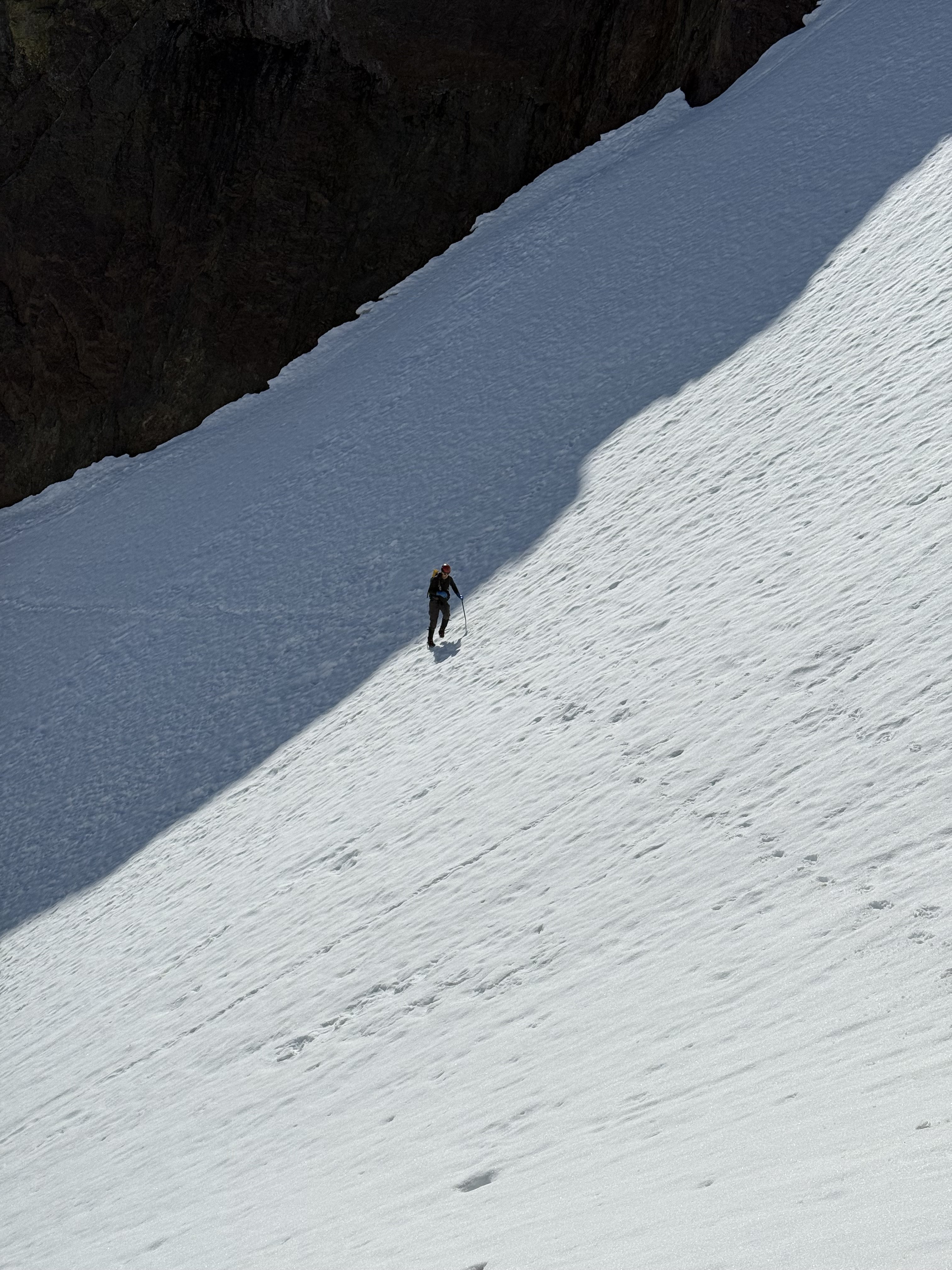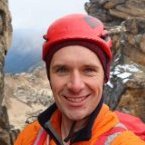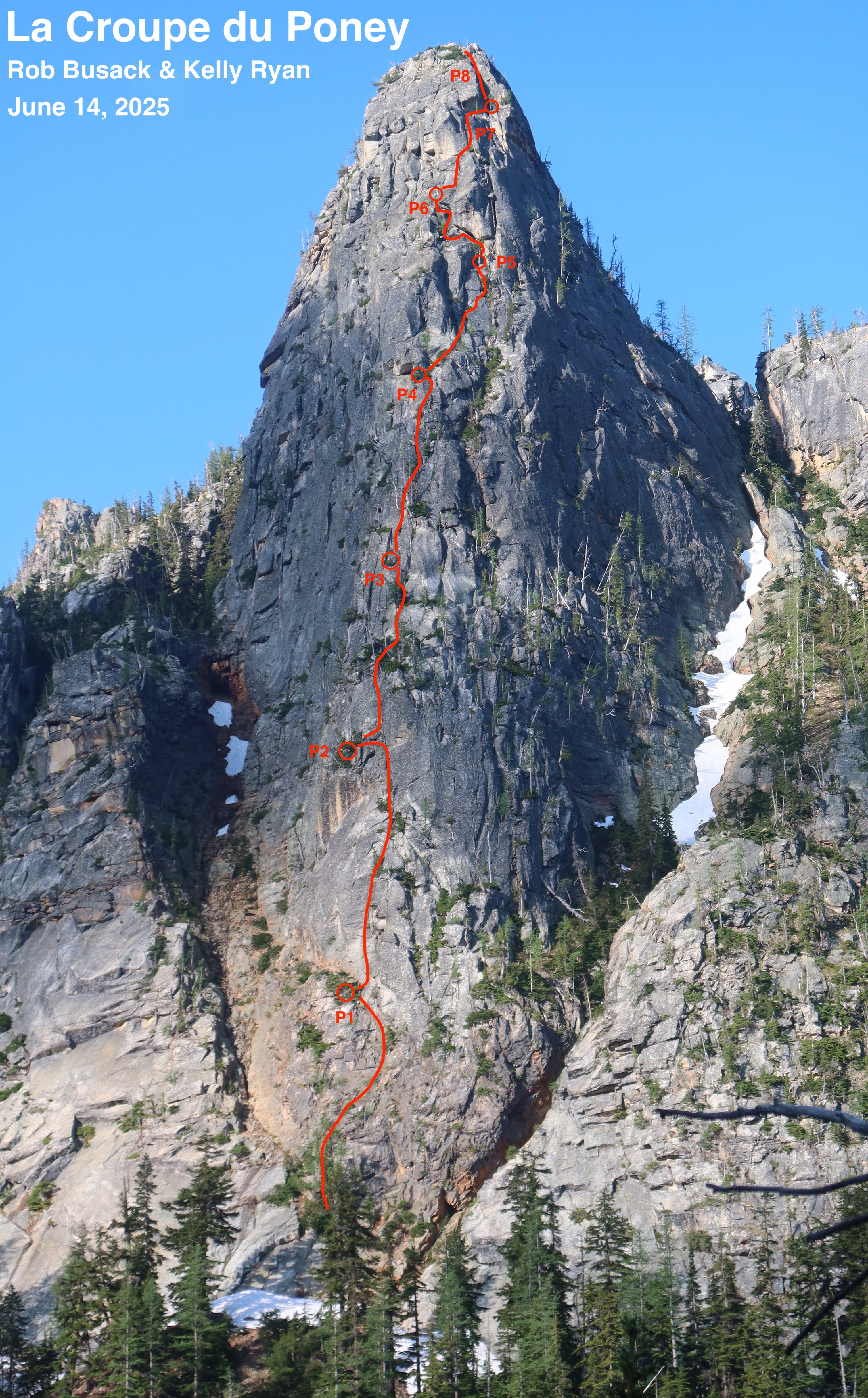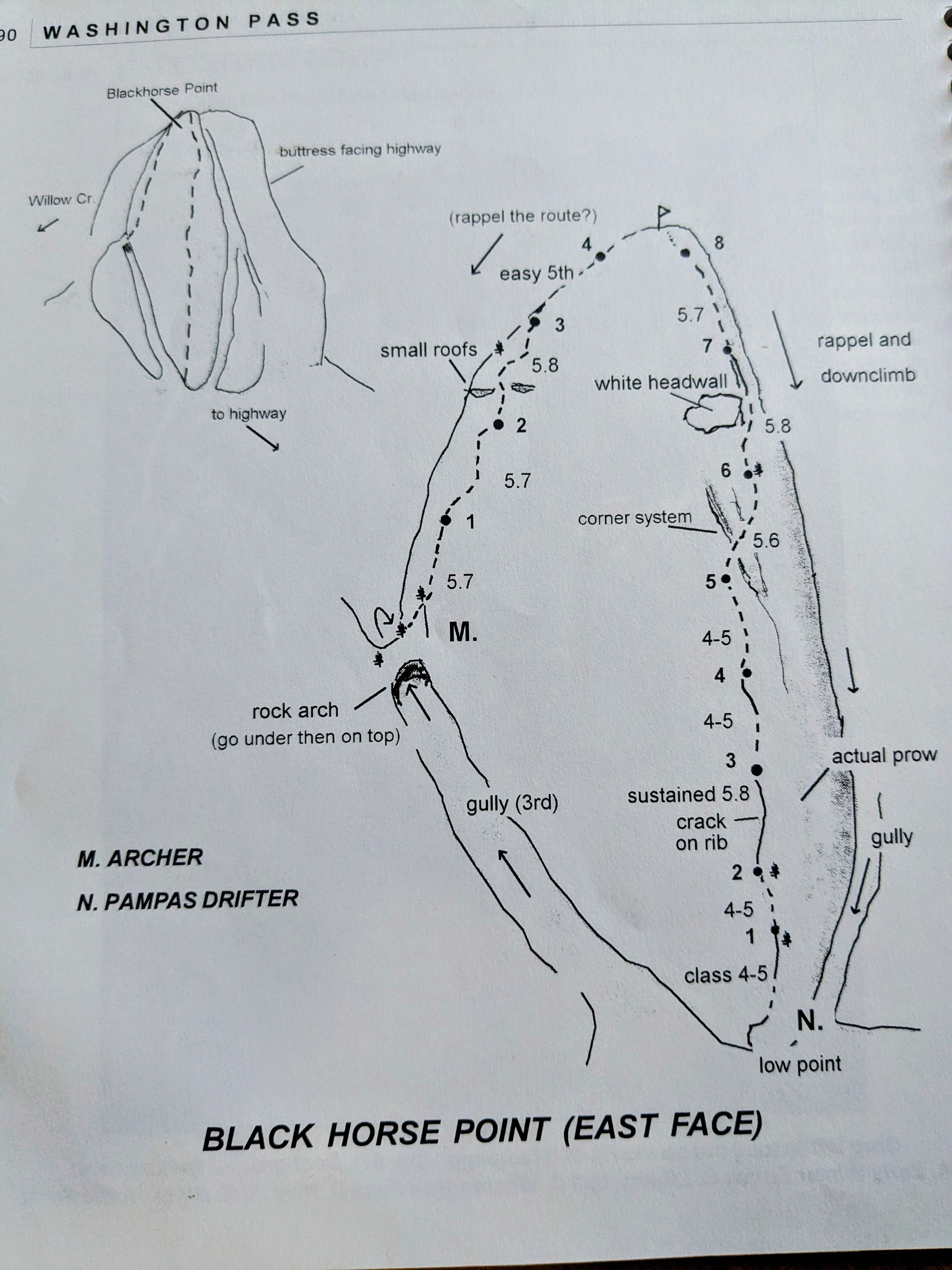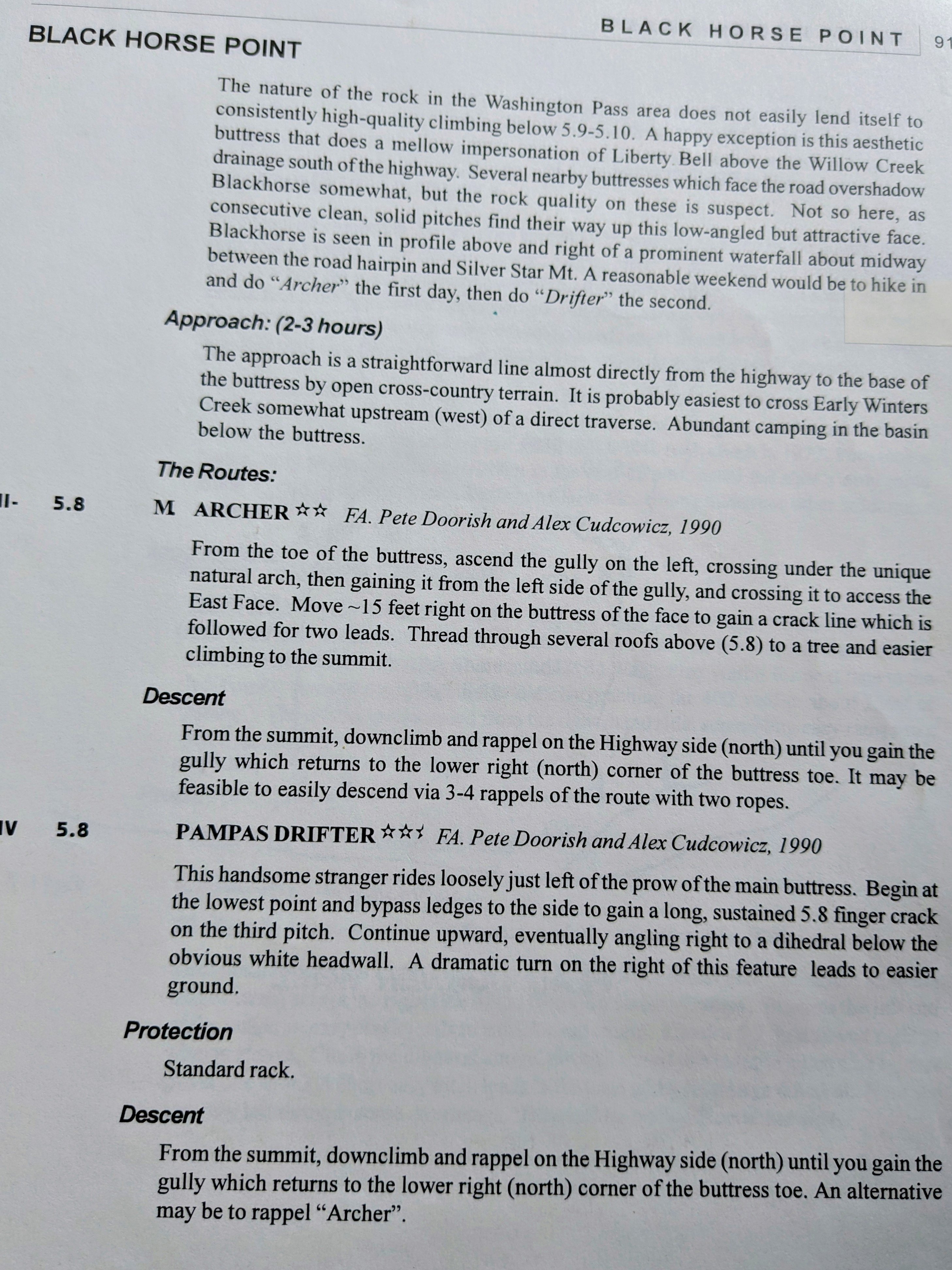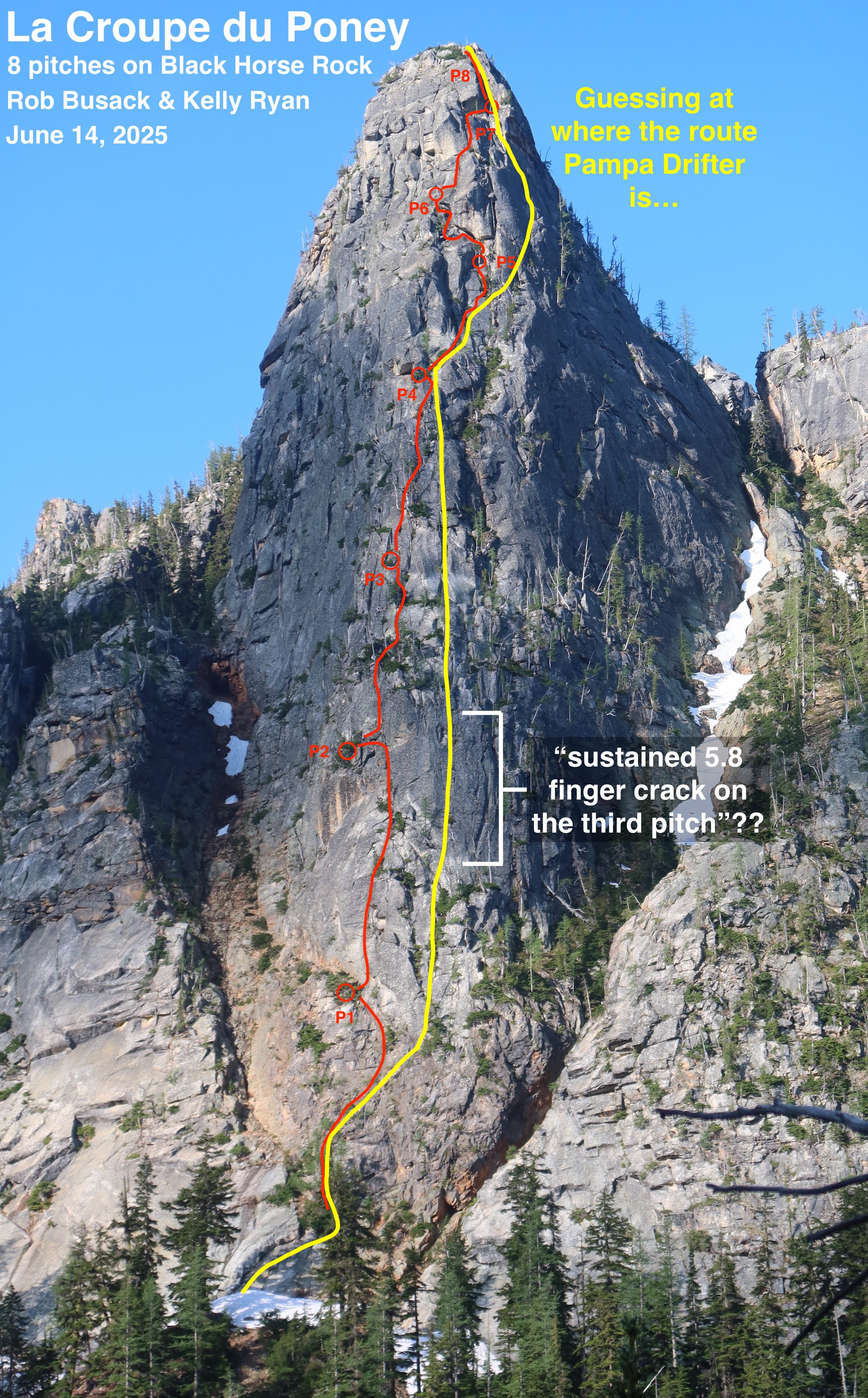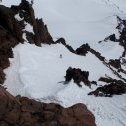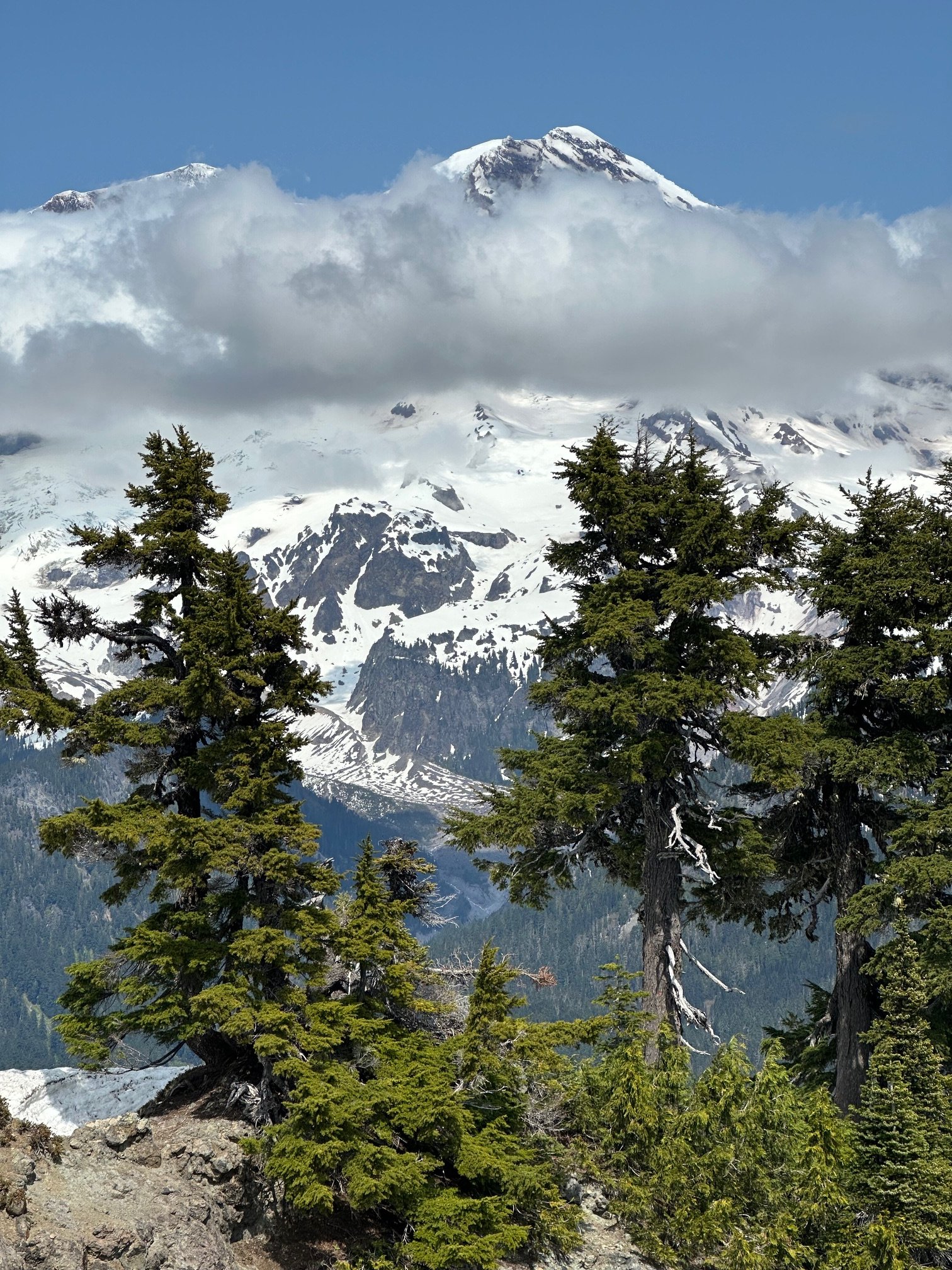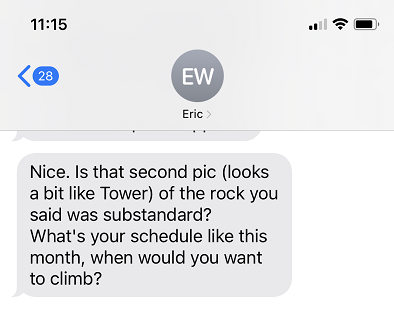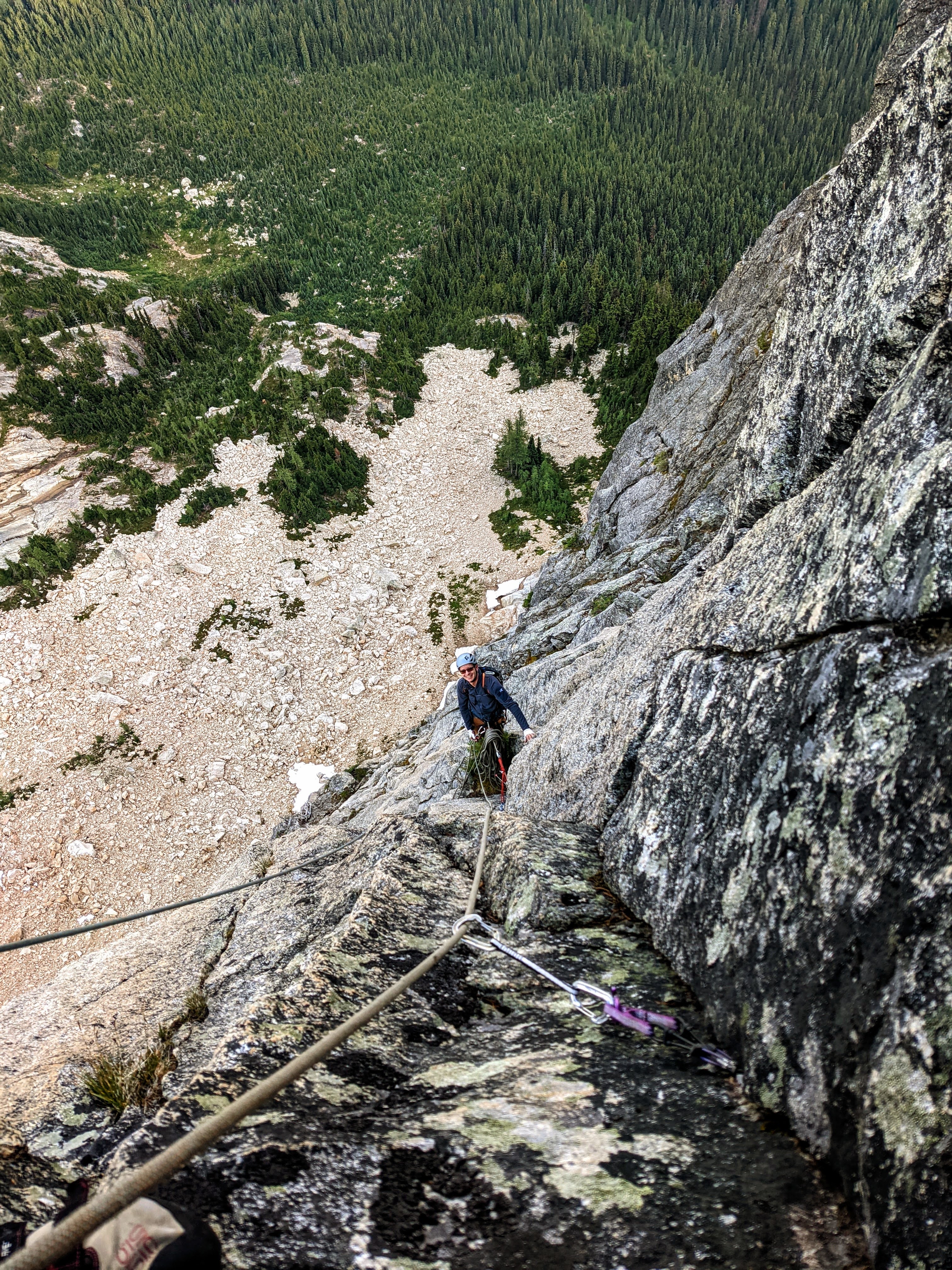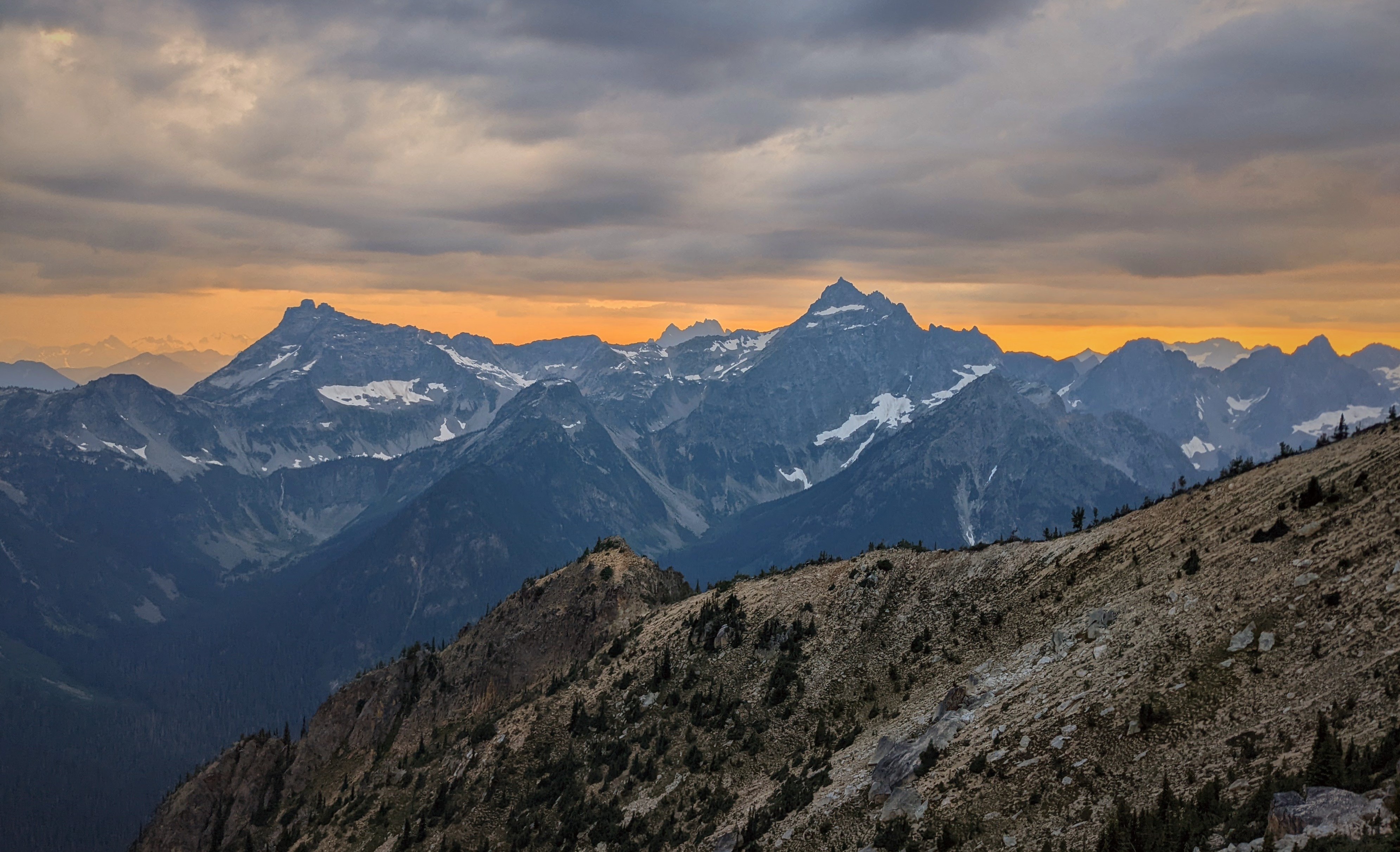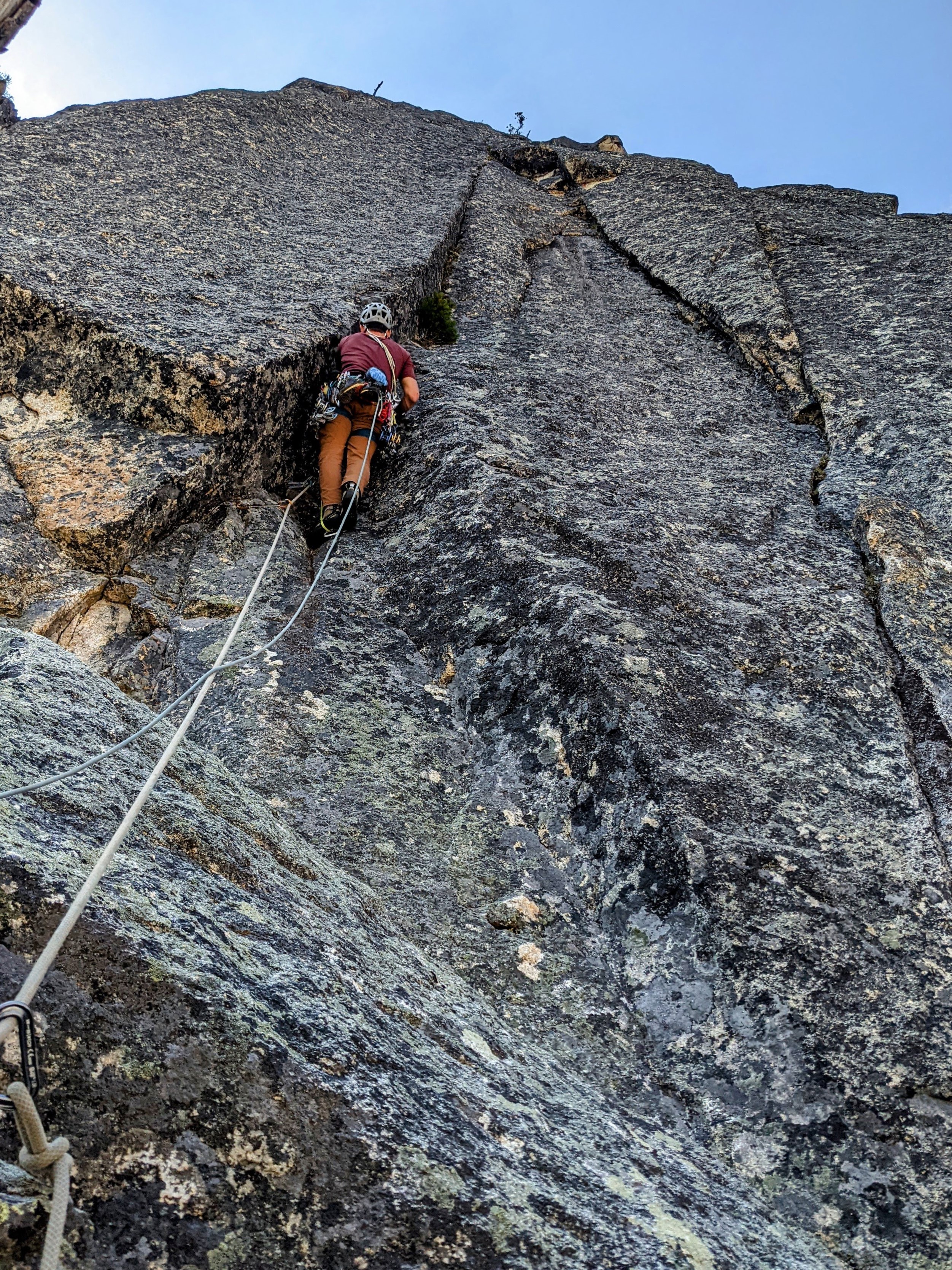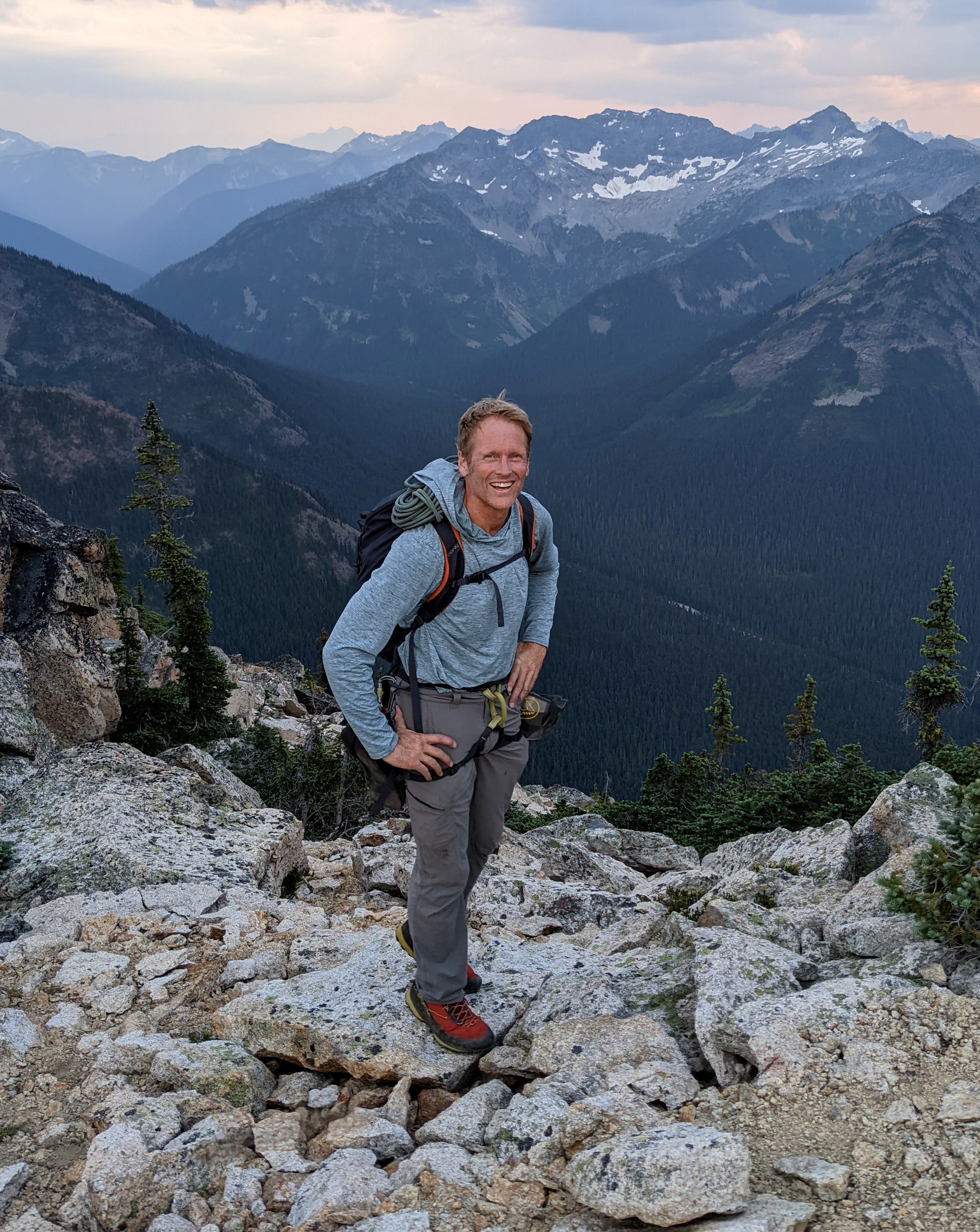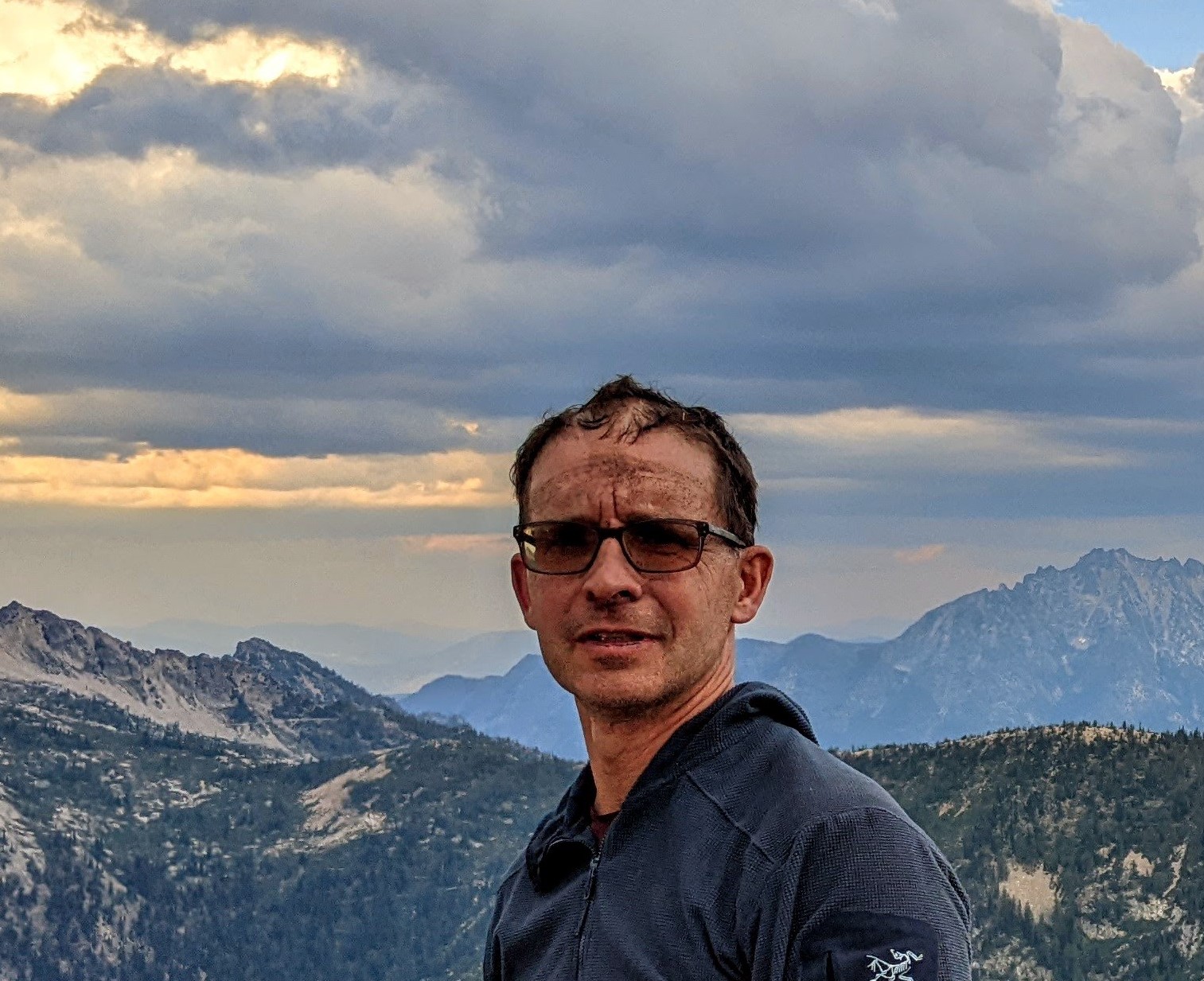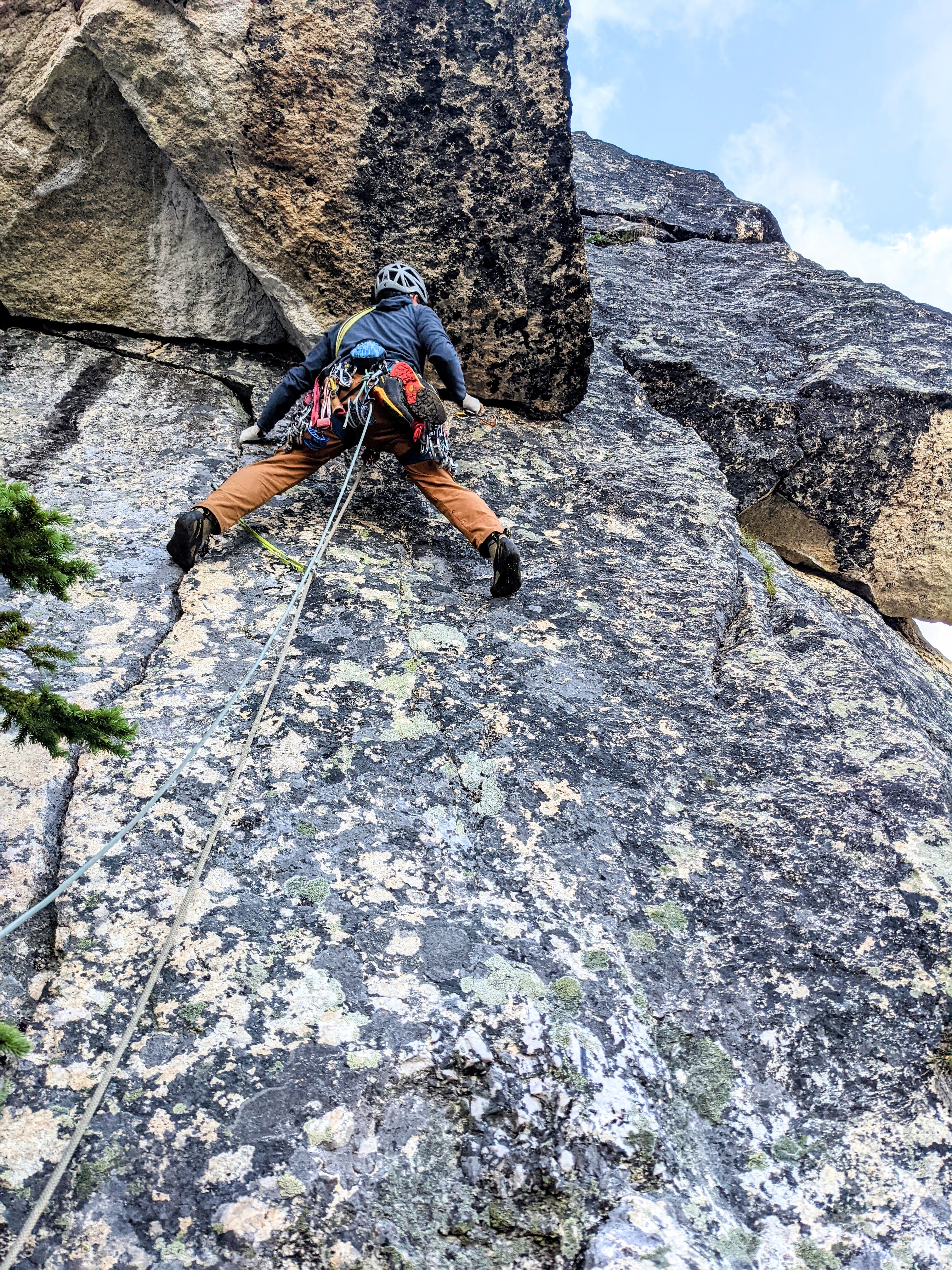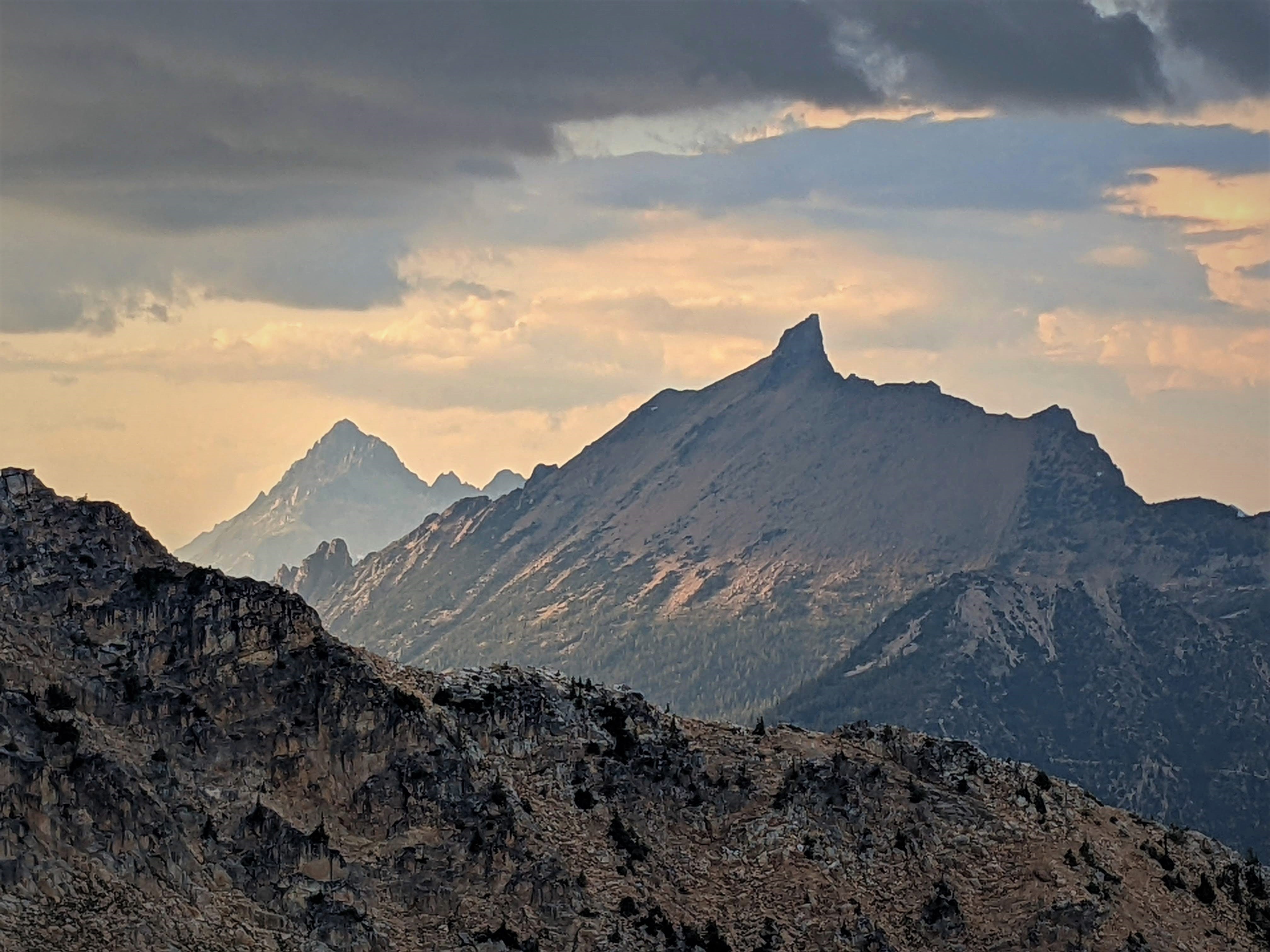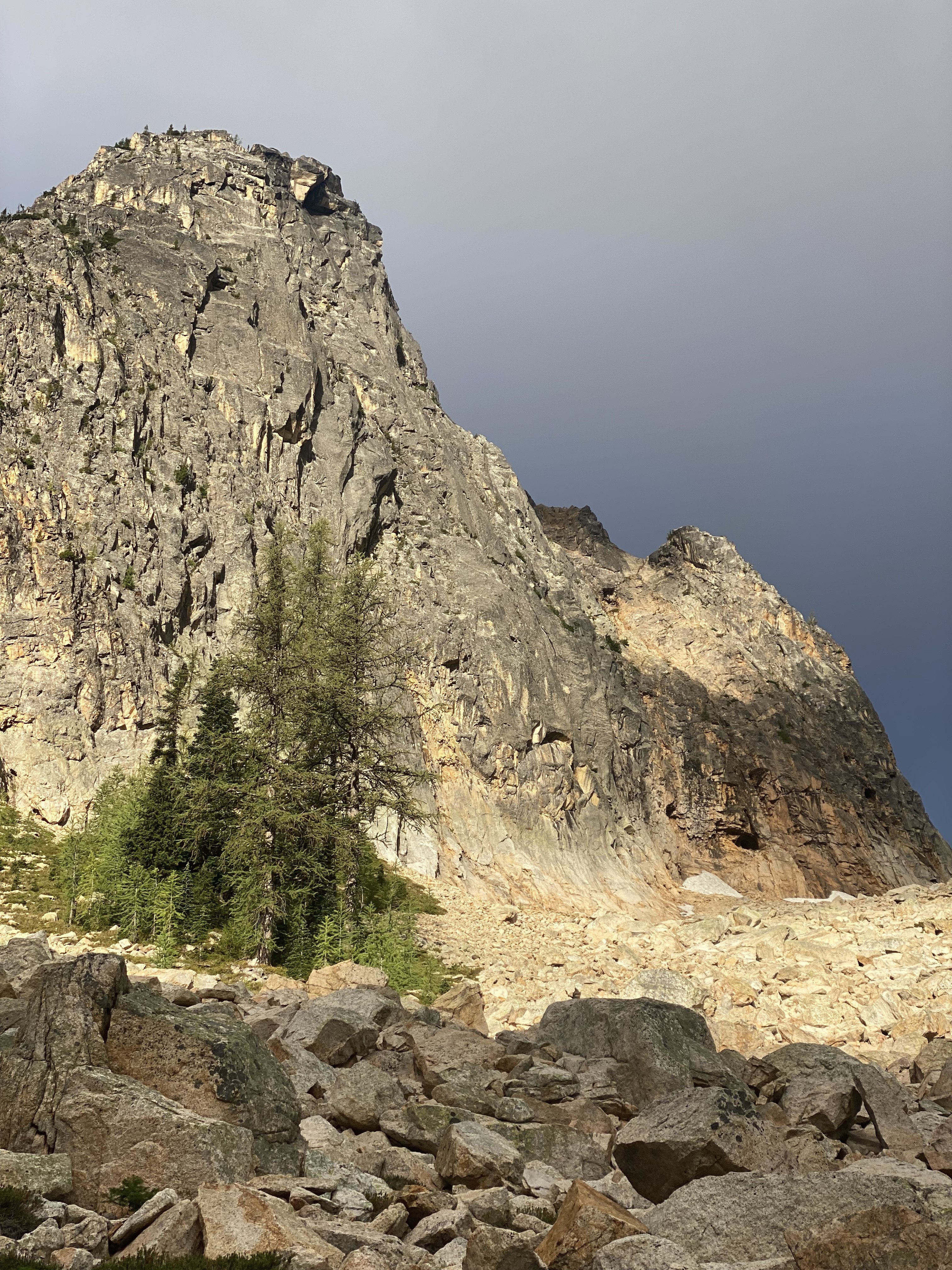Leaderboard
Popular Content
Showing content with the highest reputation since 06/12/25 in all areas
-
There are plenty of trip reports out there about the Tahoma Glacier, so I won't elaborate too much on the route. Last year we had planned to climb this route but with a very terrible forecast during our dates we postponed it a year. This year we braved the rain on day 1 in hopes of the promised good weather for summit day. Thankfully it paid off. Leaving the trailhead Saturday morning in the rain. (Photo by my wife) Found fresh snow from the previous night that was now a sloppy mess.....still raining. (Photo by my wife) Rewarded with this view on Day 2. We moved from Camp 1 at 6,200 ft up the Puyallup Cleaver to high camp at 9,800ft at the base of Saint Andrews Rocks. Looking at the Puyallup Glacier. It was well filled in and easy walking up to high camp at 9,800ft. Looking down at the Tahoma Glacier from high camp. You have to drop down the ramp to reach the glacier proper. Sunset at Saint Andrews Rocks at 9,800ft. (Photo by my wife) Early morning crevasse navigation. (photo by my wife) Some more crevasse shenanigans in the broken up sections. More crevasse zigzagging. (photo by my wife) The team nearing the top of the route approaching 14,000ft. The summit with my wife and I. At 13,100 feet on the way down our 2nd person (out of 5) had a sliding fall into a crevasse. I have always said that if you keep your intervals tight you shouldn’t have to worry too much about crevasse falls. And over the last 15 years this has proved true in both the PNW and AK. With multiple small punch throughs over the years nobody has ever gone farther than their armpits. But this time was different. This is because if you punch through a snow bridge you will likely go up to your waist or backpack but then be tight and climb out on your own. I think this is true for typical crevasse falls….bad snow bridge, or winded over crevasse. These are times were you are surprised and fall right in. There is an entirely different type of crevasse fall. This is when you take a fall in steeper terrain and are unable to arrest that fall prior to the crevasse. I never really thought much about this because I feel really confident on crampons and look at those short locations as “do not fall” sections. But clearly with a less experienced group I need to take those sections a little more seriously. Our #2 guy on the rope was very tired on the way down which I am sure contributed to the fall. He fell in just such a place on a traverse above a crevasse on terrain I would call “no fall zones”. He fell off the upper lip and into a big open crevasse. The rope wasn’t super tight but there wasn’t an excessive amount of slack in the system. It was in difficult terrain where there were multiple obstacles stacked right after each other so team members were navigating different technical obstacles all at the same time (not ideal). Looking back I think I could have potentially avoided the incident by the use of running protection. I just felt so secure in those sections that I didn’t really think it necessary. But when taking newer people out it is better to take a couple minutes to add running protection than a hour to pull someone out of a crevasse. Lesson learned for sure, and I am just really glad he was ok. When the fall occurred, my wife who was leading the rope team had just finished all the technical obstacles and was on the lower lip of the crevasse. #2 was working across a traverse 8 feet above the lip of the crevasse and then had a 10 ft down climb to a narrow snow bridge. #3 had just finished a down climb and was just making a step across a thin snow bridge and onto the traverse. #4 was at the beginning of a down climb. #5 (myself) was anchoring the back on the slope above. When #2 fell he was unable to arrest in those 8 feet and so fell off the upper lip. He stopped about 30 feet below the lower lip and just above a sloping snow ledge. The rope never came tight to my wife (#1) because #2 fell towards her creating slack. #3 was pulled off her feet across the snowbridge onto the traverse. She was able to arrest. #4 was pulled off his feet and into the down climb. Myself in the back was able to arrest and hold the fall helped by #3 on the traverse. Thankfully #2 who fell in was uninjured. We were able to give him a little slack so he could get his weight on his feet onto the sloping ledge and then we started working on a plan. It took a bit of time to get things setup since the terrain was complicated where most of the team had arrested the fall. But in the end we were able to get everyone except for myself to my wife's position on the lower lip where there was a great spot for rescue. They were able to equalize 2 pickets (1 deadman and 1 end SLAM) and then used a 3:1 system with an ice ax at the lip to keep the rope up. Once the system was set 2 people were able to haul out the climber in less than 5 minutes. Having various different levels of experience on the team we spent a few minutes afterwards discussing and debriefing the incident. Here were a few lessons people found helpful. Place anchors further from the edge so there is more room to haul. When moving downhill keep walking down past the obstacle (body belay) vs. a hip or ice ax belay. This allows you to quickly run downhill should someone slide towards you creating slack. You need room to walk around at the anchors when performing a rescue. If in a safe spot think about just being out of the system. If not then use cord or the back end of a rope. Both the first 2 rescuers got pretty pinned into short tethers that prevented much movement initially. Have 1 person take lead on patient care and tell the person in the hole to put on warm clothes…even in best case scenarios it is going to be 15-20 minutes in the cold crevasse. If there is a ledge in the crevasse consider giving slack to get the person off the rope and onto their feet. Use the rope for backup should the snow give way again. Think through all the steps that need to get accomplished and try to figure out what can be done concurrently to speed up the process and gain efficiency. Here is the rescue in progress from the top lip of the crevasse at the beginning of the traverse. I ended up be "stuck" on the high side and only helped through directions. I felt the team plenty competent and taking the time to get me to them would just delay pulling out the fallen climber. One more shot as the fallen climber nears the lip. A shot looking up at the top lip of the crevasse and the traverse above. You can see the top of the upper down climb above the traverse on the left. The thin snowbridge is hidden behind the traverse on the left. The final down climb and narrow snow bridge are on the far right after the traverse. The whole incident took about an hour from the time of fall to having everyone out and gathered up at the lower lip. From there we continued down the glacier without further incident. Although people's nerves were a bit shot and any steep terrain encountered further down was negotiated with slow care. This resulted in a very long but safe day. Farther down the glacier at about 11,000ft. We hiked out the next day in beautiful sunshine and tired bodies. But got to see some goats in the process. (photo by my wife)8 points
-
Trip: Seahpo / Cloudcap Peak - NE Ridge Trip Date: 07/05/2025 Trip Report: After much discussion and planning and two planned weekends that didn't happen due to weather, and even a scouting trip with binoculars, me Fred and Dylan finally climbed Seahpo / Cloudcap on July 4th and 5th. I had been on a mission the last few years to climb Dallas Kloke’s Difficult 10 peaks and completed the list this past winter with Lincoln. Now as part of my midlife crisis alpinist proving I'm after the self declared Difficult 10 Bonus Peaks. Basically anything that the consensus says ought to be on the list but since it's Dallas's list it doesn't change (much like the bulgers). I consider these so far to be Gunsight and Seahpo. We hiked up through the crowds on the 4th of July with heavy packs loaded with all kinds of climbing gear since we didn't actually know much about the route. We passed a lot of day hikers and Ruth climbers that all asked us where we were going with all of the gear on our packs, I grew somewhat tired and only half jokingly suggested we tell people either Shuksan or Icy just to make it simple. Bizarrely then we met somebody who replied that they had climbed Seahpo!! We went up and over Ruth, then Icy just for fun and made camp near the northeast ridge of Seahpo, making camp in just about 8 hours. We had plenty of time to study the route as it came in and out of the clouds and were pleased with what we saw. On a scouting trip a month earlier the route had ample snow on the ridge which we weren't prepared to deal with. On the 5th we were up at 5:00 and hiking just after 6:00, thus allowing for plenty of sleep to make up for a week of extremely early mornings for work for me. No one argued with that concept. We took the Beckey variation of getting on the northeast ridge at the first opportunity instead of the glacier which we assumed would be in rough shape this far into the 21st century. The scrambling on the lower ridge was excellent class 3 with some easy snow walking, then we got to the top of a tower before a major notch. This notch was the main unknown of the entire route since there's not really any good way to scout it and we had no beta at all. It proved to be troublesome. Naturally we assumed we would just be able to rappel into the notch and climb out the other side, but it took us about an hour to discuss, scout for a descent, and then eventually build an adequate repel anchor. You repelled into the notch, over a moat, down some easy snow, and into the moat on the far side. The moats were deep but not wide at this time. We huddled in the upper moat a little ways down from (south of) the top of the notch, where we had scouted the only fusible way out of the notch. There was a groove/gully that looked feasible to climb up and regain the ridge beyond. The plan was for Dylan to rope gun the rock in his approach shoes and me or Fred to kick steps in any snow in our boots. Nobody wanted to bring boots, shoes, and rock shoes. Tom Sjolseth mentioned in the comments of his Jagged Ridge TR that the northeast ridge of Seahpo was 5.6 or 5.7, so we figured we needed to be able to do that at least. Dylan was confident that he could lead up the groove, but I stated not so subtly that I wasn't confident I could follow it. He made it look hard but doable, and got a good belay 55m above at a rap station. I'm not sure I have ever climbed on a single rope cow tail style until now, and me and Fred were very very concerned with how little rope we had left, hollering constantly as Dylan finished out to the anchor. (Naturally as in most of the Cascades pro was very sparse and anchor opportunities more so). There was exactly enough rope left for me to stand at the last stance while Fred made it through the most difficult part that the receding glacier had just vacated before I had to step on to the wall and make the hard moves. It was extremely doable on second but I'm glad I didn't have to lead it. Definitely 5.7R. We all made it up to the belay and determined that it looks solo-able above, so we put away all the gear, never to use it again. The rest of the route above was no more than class 4 if you made the right choices, a couple of times just for ease/fun we maybe made it 5.2. Jim Nelson’s book Classic Cascade Climbs must have forgotten about this first pitch, Tom gets a Redding credit in the book so Dylan is convinced that he intentionally sandbagged the route old school alpinist style, not sure, but the first pitch is definitively mid 5th. The book calls the whole route 4th class. We encountered some pretty solid rock on the ridge, easy steep heather on the south side, and a short cruddy gully crossing per Beckey. As I have discovered on most of the more difficult routes Fred Beckey usually pretty reliable. We crossed the gully on a ledge and followed some heather slopes to a short rock finish to the summit. We launch it around for a while hoping the mistwood break and we would get some views but it was not to be. The route finance straightforward enough that it wasn't a big deal in fog but it's always nice to have a good look around. I found out later that we would have been able to holler across to Tim Halder on Nooksack Tower if we could have seen it. The climbing was easy enough that we downclimbed everything to the belay station then made a double 60m rappel to a horn above the moat, south of the initial groove pitch. From here we made another double rope rappel down to the top of continuous snow at the top of the glacier. The upper randkluft it was melted down to where we could land on rock and simply walk out onto the glacier. This rap was long and extremely steep, overhung over sock and then transferring to overhung over snow, pretty wild! I went first and was collecting myself at the bottom of the rap until I thought about the 30+ feet of more than vertical snow directly over my head, so I skedaddled a ways back to the top of the glacier. We all gathered back at the bottom, stowed the ropes and cruised down the glacier, and back along the ridge to camp. The glacier was chill with just a couple of moat cracks to walk around, nothing I would call a proper crevasse, in fact I would hesitate to call it a real glacier anymore; still potentially dangerous though. We took some time packing up camp and congratulating and thanking each other, caught a few last minute views and then headed back up the slog over the shoulder of Icy, back over Ruth, then cruised down the very familiar route to the car. We hit the car about 8:30 for just over a 14 hour day. More congratulations (real this time since we made it back properly), thanks all around, then back to civilization and “reality”. The holiday weekend made it so I could lounge around and nap the next day feeling glad to have pulled off another very challenging mountain. This one definitely ranks in the difficult 10 peaks in Washington in my book, when taken as a whole. I would rate the mountain above the first pitch as pretty enjoyable scruffy fourth class rock and heather, similar to other Cascade peaks; Jberg, Triumph, Klawatti, etc. I think if there wasn't the tough first pitch it would be a pretty enjoyable mountaineering route in a remote location, to me at least, 5.7 ads a level up. The approach was extremely enjoyable and pleasant, better than any of the Difficult 10. We pretty thoroughly scouted the pitch out of the notch both on the way up and down the route and determined that the way we climbed it seems to be the most doable line. If you want to do this mountain you need to be sure you can climb someone insecure 5.7R for half a rope length. If I had to do it again and it was up to me to lead I would take rock shoes. Gear Notes: Half rack, 2x 60m ropes, light MTN boots or approach shoes and wet feet, axe, helmet, others wore crampons, not I, extra axe and pickets for steep snow we didn't need. Approach Notes: Trail to Ruth, over west Icy (the truth summit now thanks to lidar BTW), down the other side. Follow the ridge the whole way. Dylan ascending to heaven on Ruth: The whole deal with my partners looking badass: Seahpo: From camp: Camping in an awesome setting: Morning. Clouds rose up to greet us: Approaching the line: Atmospheric weather: The lower route calls to us: Fred on rap: First pitch from the notch, Dylan for scale: On route: Easy: Break time on the summit: Part of the register. The pencil crumbled in my hands as I signed us in, so take a new one: Fred on the last rap: Descent of the glacier: Strolling out beyond Ruth:7 points
-
Trip: Spectre Peak - Spirited Away (IV, 5.9, ~2000 ft, 10 pitches) Trip Date: 07/07/2025 Trip Report: "Spirited Away" Second Ascent Spectre Peak & Exploring the North-Western Pickets Adam "Mo" Moline & emilio Taiveaho Peláez Itinerary: Day 1: Camp on Easy Ridge Day 2: Perfect Pass & Whatcom Day 3: Perfect Pass to Phantom Ridge Day 4: Climb “Spirited Away” (2000’, IV, 5.9) on Spectre Peak Day 5: Push Camp to Copper Creek Day 6: Hike out from Copper Creek First is a pitch-by-pitch description of the climb, written by Mo, followed a trip report written by both of us in collaboration. We climbed ten pitches, including a long (~600 ft.) simul of 3rd-low 5th to the summit block. Several of our pitches (p.4-6) diverged from the first ascent route. The Climb: “Spirited Away” (FA: Sam Boyce, Joe Manning) is an excellent remote alpine climb with stunning features in a hauntingly beautiful landscape. Pitch 1. From the notch, Emilio leads right and up 4th class ramps to a chimney, then opts for going right to the 5.7 face with good high feet moving up to the tree ledge. ~35-40 meters. Pitch 2. Emilio finishes tower 1 by first scoping the 5.9 chossy overhang, then opting to shoot left for the clean Gully. We both wanted to add to Sam and Joe’s incredible line by exploring places they mentioned, and we’re happy to report the gully was a very enjoyable and clean 5.6 romp up Tower 1. Pitch 3. (Mo) I, who haven’t yet realized we’ve bypassed SJ’s crux, eagerly take the lead after moving the rope further along the large ledge. The long pitch starts with moving the rope along the large ledge and travels up the 3rd-4th class ridge with nothing close to a 5.9 chossy overhang, odd. Very enjoyable climbing though! At this point, I stay along the ridge crest completely enchanted by the tower and therefore diverge from Sam and Joe’s (SJ) line for the first time. I anchor in at the base of the obvious and impressive Tower 2. Pitch 4. Emilio leads up the tricky face with bad pro. They shoot for the corner to find good gear for the steep headwall. The options from below appeared to be a steep and potentially overhanging crack up the middle, or heading to a notch on climber’s left between the 2 spires into overhanging face climbing. Emilio picks an inspiring line up to the notch through the corner followed by 20-30 feet on the steep but surprisingly juggy face, 5.8. Pitch 4.5. After the tower and an awkward belay, Emilio lowers down 15 feet climber’s left off a slung horn to a ledge below to set up an anchor for the “sky bouldering” pitch. Mo down-leads easy but chossy terrain. Pitch 5. (Mo) Along with the tower, this divergence (??) is also a complete treat. Comparable to the Rooster Comb on Mongo, or climbing in the Fisher Towers, the sky bouldering pitch involved some of our favorite climbing. Along with a series of easy V0- boulders, the ridge presents a perfect hand crack splitting an impressive boulder. Climb up and over this 4 star boulder, gymnastically flow through more boulders digging your hands into serious lichen, and finish with a reachy smear onto extremely licheny rock suspended over air. Belay on one of the golden slabs below the next gendarme. Like the RC, it’s hard to put a grade on this type of gymnastic climbing, top shelf fun though. Pitch 6. Emilio climbs the corner block with good pro, up and left of the gendarme until they meet SJ’s line once again. After lowering off nut/horn pro left by the FA team, Emilio sets up an anchor out of the shooting gallery and I lower down to the very redundant anchor deep in the gully. The only pink tricam placement of the trip. The kind gear left behind by the FA party for this pitch. Pitch 7. (Mo) Lead up 4th class to a left trending ramp where 5-moderate begins. Future climbers take the larger, earlier ramp rather than be entranced by the huge bulgy crack splitting the face (like I did). After returning to the ramp, it meets the beautiful hands/fist crack. With many alpine draws, continue up to meet the slightly overhanging crux of the pitch with a mix of choss and bomber jugs. Physical wandering with cautious choss dancing leads right, up, then left through stellar holds to a clean finish. Steep and committing but surprisingly good holds made this feel like 5.8+. Good pro. Let the choss sleep here for the sake of your follower! Looking down from above the hand/fist crack. Pitch 8. Emilio climbs up the heather ramp with choss for roughly 30m but not great pro until the blocks. Follow 5-moderate blocks up and left. After running low on rope and scoping options, Emilio belays on choss 20ft below the ridge crest. Looking up at the heather ramp. Pitch 8 Notes: Continuing on the ridge crest could be an alternative to the heather ramp. To avoid rope drag on the Hoodoo pitch, belay from the ridge crest if possible. Pitch 9. (Mo) Hoodoos. 3 options presented themselves to reach the ridge crest. Follow Emilio’s wisdom and take the chimney to the right or the easy ramp to the left, or my idea to shoot straight up the white 5.9 face. With my hopeless delusion being prevention of rope drag, I shot up a few cruxy moves and pulled it without showering Emilio with choss. All of a sudden, the spirits are all around you. We traversed low around many of the hoodoos both out of a fearful respect of their haunting beauty and temporary nature. We didn’t stop for any pictures and quietly danced around their north sides when possible, or climbed over when it wasn’t. After this steep, exposed, licheny, and hauntingly beautiful traverse, rappel off the furthest Hoodoo for 25-30m to a nice grassy ledge, then move to avoid rockfall. Pitch 10. (Simul, Emilio then Mo). 600ft of 2nd, then 4th, then 3rd class stellar scrambling following heather ramps and solid rock. Emilio leads what was some of our favorite climbing of the ridge moving efficiently up to the headwall. Emilio hands me the kindest gift of finishing up the 5.0 pitch. We finish this climb in memory of Teemo (Chad) the Cat who was spirited away weeks before this climb. An inspiration of our climbing, style, and backcountry meals (Chad’s Backcountry Catfood), and who lived with Emilio and me over a decade ago. With Love, for Teemo. Climb Descent: We now realize Emilio has accidentally stached their ice axe at the base of the climb. However, before we tackle this challenge, we must figure out how to down climb the east side which appears ledgy at first, but then becomes 5.moderate and steep. We navigate and beta share our way down after some interesting 5th-class moves on good holds. This side of the rock was significantly harder climbing than the side we summited. Now, the fun begins. We read SJ’s report of steep snow and early conditions and see this to be true. However, we have luckily navigated somewhat similar situations where on Mongo Emilio traverses steep snow with sharp and flat rocks for aid. I (Mo) kick some deep steps down a short steep section in similar style. After a few minutes of thoughtful snow travel, it eases up to walking a beautiful snow ramp down to a heather and slab rib. From here, a gorgeous dyke ‘Thank God Ledge’ becomes obvious and points you directly home to the base of the climb. Walk the 2nd class dyke admiring the unique rock and granite eggs. This section feels like walking towards Minas Tirith. Follow until the dyke turns into heather ledges/ramps at the base of the climb. 10/10 descent, would maybe rap in the future, or find the actual route down. Ascent ~11hrs Descent ~1 hr Trip Report Introduction (written by emilio): “When you get to the top of the mountain, keep climbing.” Nothing embodies this mantra more than a trip to the Northern Pickets, with its endless folds, valleys, and ridges. Summertime in the northern hemisphere means it’s high time for licheny choss and remote alpine meadows. For me, the solstice brings a yearning for good snowpack and godly glaciers, and despite my attempts to think or dream of other mountains, climbs, and ranges, the Pickets keep calling me. Throughout the year, I often wake up in the middle of the night longing for their surreal gendarmes, gnarly towers, towering spires, and self-willed wildness. Last summer, Mo and I climbed the climb we’ll never come back from, Mongo Ridge on West Fury. The three nights we spent on route mark some of the most significant moments of my time here on Planet Earth, so it was difficult to tell what would unfold after that experience. But, as it often does with these things, the idea of returning to the Northern Pickets for a seventh time as a team came organically. This is a blessing, because nothing is better than going into the mountains with Mo, the strongest free-climber I know and one of the very best all-around humans I’ve ever met. Although for the last few years we’ve been entering the park through Ross Lake, the first time Mo and I went into the mountains together we went in through Hannegan Pass, embarking on the long trek up Easy Ridge with a group of six. That year, we ate hearty servings of humble pie as we crossed the Challenger Glacier, climbed Challenger, dropped down to Luna Cirque, hiked up the other side, and tumbled down Access Creek. Photo I took on a disposable camera on our first trip to Challenger (2018). This was the first any of us had roped up together, the day after Mo's first rap ever. Jake Johnson, secret hero of all our trip reports, leads the way. Returning to Hannegan Pass in order to visit those places of intensity where our love for the Pickets began—the Imperfect Impasse, Perfect Pass, Whatcom Peak (where I was first benighted), and the Challenger Glacier—with all these years of hard-earned experience felt right. Also, filling in the lore of Mongo, we knew that Wayne had first seen that mythic ridge while climbing the mind-boggling “Haunted Wall” of Spectre Peak. We had to at least see the Haunted Wall in person, to trace Mongo backwards, and get to know this obscure and remote peak we had seen from the neighboring ridge. The call from Spectre was coming from several directions. Beyond the opportunity to climb exquisite choss, the pleasure of going to such a remote country and live, even if momentarily, in the freedom of the hills, is hard to pass up. As a team, Mo and I have been on a little tour of second ascents across Washington (summiting Lemolo, “Sharpen the Saw,” and going up the Rooster Comb), often setting SKT’s in the process (slowest known time), so even if we didn’t yet have the gumption or cojones to repeat Mike Layton and Wayne Wallace’s insane line, we figured we could celebrate Sam Boyce’s remarkable achievement, “Spirited Away,” the South Ridge of Spectre, and enjoy our time in the process. The hoodoos, gymnastic traverses, and time spent on the ridge, made this line appealing. At the same time, Sam’s recent climbs in the Pickets have been inspiring to follow, and the beta he and Lani provided from their climb of Mongo made our experience on that ridge much more pleasurable, so our ascent of Spectre is a celebration of this current Picket Renaissance. As opposed to the ultra-light mentality we brought to Mongo, for Spectre we shouldered heavy packs, bringing extra food, creature comforts, and redundancy (including an additional pack stuffed inside my pack, which strangely came in handy) for the ~50 mile round trip and ~20,000 ft of elevation gain. We started our trip on the Fourth of July and budgeted the entire week ahead in order to adapt to the weather and be able to luxuriate like sybaritic alpine lizards. Trip Report (written in collaboration by both of us): Approach (days 1-3): We left the Moline Compound in Olympia early in the morning, driving steady to the Hannegan Pass trailhead to get there and get walking by 8:30 a.m. Surefoot miles brought us past hikers and trail crews hard at work. Crossing the Chilliwack was a treat in the heat and we zig-zagged the long diagonals up to Easy Ridge, encountering Chaga, old COTW, and copious Calf’s brain while admiring a solitary hand-crack along the way. For the return, we knew we’d have fresh berries Bilberries and Huckleberries. Like everything in the Cascades it seems like Easy Ridge is sandbagged because it’s a serious hike, but it also lives up to its name in the views it affords–though on our way up it was mostly clouds. We camped at a nice bivy before Easy Peak proper and drink some fresh Chaga tea. We stop after 15 miles and 7 hours of moving. The following morning we slept in and made coffee in the morning, taking our time before getting moving. Right as we pack up to take off, Mo’s side backpack zipper breaks exposing all the innards. After several seconds of perseverative thought, the universe reminded us that we have, in fact, 3 total backpacks between us! Not being able to decide which pack to climb in, Emilio serendipitously packed double bag includes both a 35L pack with a 30L pack stuffed inside. Mo’s pack is strapped shut with some climbing equipment (reminiscent of the broken crampons on Mongo attempt 1) and we ramble scramble onward without any anxiety of gear for the climb ahead. The scree-step up to the summit of Easy Peak brought us to more walking and descending, before reaching the threshold that the Imperfect Impasse provides. What a chasm! It’s hard to believe Mo’s first rappel ever was into the snow down below, though there was no need to rap today. Fourth class ramps and early season conditions were in our favor and we were able to quickly move across and head up the slab and heather to Perfect Pass. It’s nice to imagine what evaporating dew must feel as it ascends, but gravity in a human form is more easily navigated in diagonals. On the way up we ran into a group who had just summited Challenger, having camped at the bottom of the Impasse, but they were the only group we saw and from there we had Perfect Pass to ourselves. Given our odd timing at PP, to warm up for Spectre, and because it seemed ridiculously fun, we decided to drop our stuff and romp up Whatcom. The snow conditions were great and the sun was shining. Whatcom is a stunning mass and a wonderful teacher, and as specks on her summit we lingered admiring the landscape. The way back down to Perfect Pass brought joyful plunging leaping running down the mountain and we made twelve minutes of it, even after stopping to take pictures and laugh. Deciding Perfect Pass lives up to its name we made camp and stopped here for the night sleeping once again under chossy stars. emilio bouldering at perfect camp trying to strengthen the toes after descending from Whatcom. There are some quality blocs to be found out here! I’m wondering if FKT.com will allow for the Pass-to-Pass FKT to be submitted up to Whatcom, here we humbly submit 1 hour for our time. The next morning brought us to search for the somewhat mysterious Challenger Col. It’s mysterious because there are several possibilities for which one it may be and we had been overconfident on the beta for this section of the climb. After weighing our options we decided to go up high to the (later identified) West/Middle Challenger col and found some vintage tat. A slung horn of rope fibers suggested the way down a dihedral next to a stunning arete, and the glacier below seemed to provide ample access to the Western slopes of the Northern Pickets. We slung the same horn with fresh webbing and went down for a 35 meter rap. On the way down we found an offset nut with some red tat. The full rap was a little longer than 35 meters, but luckily it ended in a hungry offwidth so we were able to untie and downclimb a few extra feet to the snow, which provided a welcome ramp into the glacier. Here, again, we benefited from early season conditions. We navigated the glacier down to the south ridge of Phantom where we made a gorgeous rockside camp on clean slab near drippy snow. Sleeping early brought thought-dreams of the climb ahead and brief periods of waking up (at 8 pm) to gape at the Haunted Wall. Seeing the Great Gendarme that adorns the South Face and thinking about the bold, committing, and cerebral nature required to climb such an audacious route left us floored. For what it’s worth it’s worth remarking that Wayne Wallace and Mike Layton’s climb of the Haunted Wall of Spectre is perhaps one of the most impressive feats not just in Cascade climbing, but in USAmerican climbing more broadly. Mo enjoying an ice bath on Phantom Ridge preparing for the climb ahead. Harvesting Water on Phantom ridge. In lieu of prayer flags we adorned our camp with the tat we had found along the way. Mo with Mongo. Day 4 (climb): An alpine start at 3:40 has us moving to arrive at the climb with the sunrise. [See Previous pitch by pitch section] Descent (days 5-6): An alpine start at 4:00 a.m. has us moving well before daylight, as we hope to cross the Chilliwack by the end of the day in order to avoid the incoming weather. Cold coffee gets us moving and we go back up and down the rhyming patterns of scree, talus, and heather, scree, talus, and heather, until we hit the snow. We had debated whether we would try to find the actual “Challenger Col” that ostensibly did not require a rap to go down, or retrace our steps and retravel our known road up the glacier, and lead the pitch back up to the Col. The thought of leading the pitch back to the col had Mo full of energy so the decision to retrace our steps up to Solar Glacier was an easy one to make. Snow brought us back to the rock where Mo put on the rock shoes and racked up (only to place minimal gear). The arete provided excellent, though not well protected, 5.4 / 5.5 climbing. What an incredible way to get back on the Challenger Glacier! Back on the glacier we stayed high to scope out additional low points on the glacier. A stacked cairn gave indication that we had perhaps found Challenger Col. After reading several other trip reports, it’s hard to say which col is indeed the standard col to access the western side of the Pickets, but perhaps someone can help us piece this together. Looking up at the arete from the solar glacier & Mo leading the way. The rest of the day brought long miles up and down, through scree and talus and snow and heather, next to waterfalls and tarns, zig zagging under the sun. The snow on the imperfect impasse had melted so the way back was far spicier than the entrance. Thoughtful moving on steep terrain brought us back to the other side, having once again crossed that threshold into the Pickets. The moving kept going all day, as going down is often more of a climb than going up. Thankfully, the trail on Easy Ridge fed us bountiful berries, bringing out the bear in us. Blistering feet peeled and the miles eventually brought us to a solitary and welcome camp on Copper Creek. The Imperfect Impasse! Or is it the Perfect Impasse? Either way, it's awesome and steep. Easy walking along Easy Ridge. The next morning we woke without an alarm, made coffee and leisurely made our way out in a welcome wetness. Rain brought out the technicolor of the plants and clouds clad the peaks in true Cascadian fashion, dramatic and graceful is this ruggedly delicate corner of the world. We walk out in a delightful drizzle with clear pee. Some strange snake staring at us on the way out... We stuffed our pockets full of rocks for games and drove back to Olympia in the early afternoon. An additional note is that we were able to cook most of our meals with Chaga, which seems like a huge aid to pulling this off. Our climb was supported not only by all the manufactured goods we used and the infrastructure required to access this wilderness, but by the countless unseen helpers who made the trails, mapped the land, have lived with the land, and enabled the great privilege that it is to go into the backcountry. There is no such thing as an unsupported climb. Looking back on Mongo Ridge. Gear Notes: Singles from Micro - Large Supercam (no #3), doubles from .1-1, one Offset 10 Alpine Draws Rack o’ Nuts & Tricams 70m Beal Opera & 80m 6mm tagline 60 feet of Tat (used 30). 3 Backpacks 7 meals of Chad’s Backcountry Catfood, 6 freeze-dried meals, 2 ramen, 5 containers of fish Too many bars Copious sports beans and electrolytes to avoid the coca-cola piss Bivys, Pads, light bags Many other creature comforts Gear breaks down when you push it to the limit. Bringing cord, duct tape, and climber’s tape has been enough so far to fix any mishaps between the pack, crampons, or other gear failures in the past. However, the importance of proper gear planning is proving to be more and more crucial. The backpack luck was the universe smiling on us, but being creative and over preparing is often a psychological luxury deep in the alpine. We may have brought too much food and some silly luxuries (not crocs, those are essential), but we also frequently find immense health, physical, and psychological benefits from being properly fueled, rested, and prepared for huge days covering rugged terrain. Luckily, I have a sherpa, Emilio, who seems un-impacted by carrying weight, and I’ll continue to train my pistol squats to validate that extra tin of lemon-caper mackerel. A note on Time. Time continues to be one of the most influential variables that moves the needle on risk in the mountains. With recent epics of friends and horror stories of accidents in our home range, it’s ever important to weigh the gravity of certain decisions. For example, that extra push to get to the base of the climb rather than bivy and the subsequent exhaustion can lead climbers, from amateurs to experts, to make tragic decisions. We both frequently weigh our luck as we’ve gone on 7 and 8 trips to these rugged and gorgeous North Cascades. One considers the roll of these dice weighing the sheer audacity of accessing these ranges with the intense spiritual home that this place has become. There is certainly a time for absurd ultra-marathon style pushes and we frequently love those, but to commune in the mountains with a pace to properly appreciate the weight of these spaces is key. We added on a day on the approach to feel rested on the climb and walked out in the rain to avoid destroying our feet. I feel deeply lucky to have teachers like Emilio, Monica, and Jake who have prioritized a sense of truly enjoying Quality time in the mountains. As we work towards being adequate mountaineers, what matters most is returning home to tell the tale and give back. Approach Notes: Long6 points
-
Trip: Terror - N buttress (attempt), Himmelhorn - Wild hair crack, Degenhardt NW+E route, Pyramid - W route Trip Date: 07/04/2025 Trip Report: Drawbridged again in the pickets for the second time in a week. After the standard rap into the couloir north of Otto-Himmel col my partner @aikidjoe encountered a moat that appeared impassable. He ascended back to the station and I took a look down the next gully skiers left. From lower down I could see it would have been no good to try the moat (which would have required an absurd running leap) because another moat was not far below that one. I kept descending adjacent to the couloir, finding mostly solid, even fun, exposed class 4. There was a short low fifth corner with a lemon cake sized block that kept it secure. I passed a slung block with old webbing. Where things cliffed out I found some good .1-.2 cam sized cracks that could be used for a rap anchor. My 60m rope easily reached continuous snow from there (maybe 20m rap). Last year at exactly the same time of year I downclimbed continuous snow down this couloir without even needing the first rap. And last year was a low snow year too. So I was pretty surprised at the state of the couloir. This workaround skiers left seems viable to me. Posting it here in case it helps anyone. The false start and exploration ate up enough time that we decided to bail on our plans for the Stoddard route and head back up to climb WHC instead. My partner was bemused because he expected a crack climb The day had started clear. On our way back down from O-H dark gray clouds moved in to block the ridge. I was glad we weren’t somewhere high on the north buttress of Terror. Next day was quite socked in. We headed off for Degenhardt, accidentally heading up from the south before correcting course for our intended NW route from near Terror’s east col. To gain the couloir there was short choke that steepened at the end to maybe 80 degree snow. We underestimated the angle from below. Odd, usually it’s the opposite. We were able to bypass this on slabs on our return. The foreboding weather and lack of visibility gave the climb a serious feeling. As it gradually cleared on the way back the route started to feel easier. There is plenty of choss on Degenhardt but I recall the scramble being pretty fun. While extracting the summit register I dropped its pencil down some hole. Sorry. From there we groped our way slowly toward Pyramid. The route finding in the clouds was trickiest near Degenhardt. Was glad to carry ax/whippet all the way due to about ten steps through a narrow and steep snow couloir to get to Pyramid’s rock pyramid. We had peek a boo views into McMillan cirque but could see nothing at all to the east. By the time we passed back west of Degenhardt the clouds were lifting and it was a relief to see where we were going. The weather kept improving and the sunset was a real mind melter. UFOs came out in force. Next morning greeted us with more clear weather but having had our fill we bid adieu to the goats and our impeccable camp. After the bruising descent we enjoyed copious berries south of terror creek. Gear Notes: 60m rope and light rack, crampons, ax or whippet Approach Notes: Goodell6 points
-
Trip: East Fury - North Buttress Trip Date: 06/29/2025 Trip Report: In the couloir leading to the buttress from its east side, the drawbridge is up. It’s hard to think of a route in the cascades that I haven’t climbed that I was more excited to try. From Luna col the position of upper snow arete looks insane. And the photos in this 2017 report don’t hurt: https://cascadeclimbers.com/forum/topic/100747-tr-mt-fury-north-buttress-6232017/?tab=comments I was lucky to find a partner inspired enough to take a day off and put in the considerable effort to get out there and check it out. Saturday was a little cloudy and not too hot, which kept things relatively smooth on our way from big beaver to Luna Col. Even though I’d seen it before, the first sight of the northern faces of the southern pickets that rewards the grind up to -6400 was literally breathtaking. I let out a little pious whoa. The last mile or so took approximately forever but we arrived well before dark, 11.5 hours after drop off. A ghost set up our tent. From the col the couloir didn’t look too promising but wasn’t obviously impossible so we proceeded to go for it the next morning, leaving camp at 5am (4:30 might have been better). As in the trip report from 2017, we trended left on the descent to Luna lake, which worked well. From the lake we traversed W and SW, bottoming out around 4500’. At this point we could see the snow was not continuous in this first couloir and quite a bit lower, maybe 15-20 feet, than in the 2017 reference photo. We found a ~5.0 exit onto slabby rock and got up to easier ground. Continuing up we traversed as quickly as possible across the exposed face to the entrance of the main couloir. From below it still looked worth trying. But only about 200’ up it we encountered a hidden moat spanning wall to wall, just above where I am in this photo. It was tall and unnervingly hollowed out. Questing up and left on the rock for a bypass was fruitless. I found steep slabs without much pro. And transitioning from boots and crampons to rock shoes while exiting a tenuous snow location onto a narrow rock stance turns out to be very awkward. At 30m I ran out of rope (folded 60m half), placed a piece and down climbed on top rope back to the snow. We down climbed the steep snow back out the couloir. About to down climb to the first couloir. Looking up on our return to Luna lake I thought, hmm, we came down that? It looks improbably steep but is actually reasonable. All throughout the cirque there was surprisingly little activity given how warm the day was. At camp 12 hours after we left the evening was unpleasantly hot and buggy and I impatiently awaited the reprieve of dusk. In the meantime there was some helicopter activity near Outrigger. I hope everyone involved is all right. The heat was considerable already at 7am the next morning when we began our descent. I used crampons but there really was no hard snow to be found. We took a long break at the stream by Luna camp and it seemed then that we’d make our 5pm taxi in plenty of time. One small delay occurred when we saw two bear cubs climbing to the top of a tree right off of the trail. Mama wasn’t making herself seen or heard, so we backed up a little, made a bunch of noise and gave them a few minutes to clear out. We didn’t see the cubs again and did see the mother a little bit off trail, not acting aggressively. Checking the time. As the afternoon miles went by we realized that we were slipping behind and had to really push to get there right at 5pm. The driver was very nice and encouraged us to take the time to cool off in the lake. I don’t know if I have it in me to try this route again but if I did it would have to be possibly even earlier in the calendar, and in a year with above average snow pack come June. The west side alternative doesn’t appeal much to me, the photos from Steph Abegg make it look like overhead exposure would last a lot longer than it does while traversing in from the east. Gear Notes: Crampons, ax, whippet, 60m half rope, single picket, light rack and some bail gear Approach Notes: Big beaver to Luna col to Luna lake6 points
-
Trip: Mount Index - North Face Trip Date: 06/29/2025 Trip Report: Kinda tired but figure I should write some stuff down while it’s fresh in my mind. I’ll split this into two parts, the story and the beta. The Story is pretty simple, me and a partner decided to go for the Index traverse on Sunday and Monday. We had extra time on saturday so we hiked into lake serene to make for an easier morning. Without light on Saturday night, we made the mistake of trying to bivy at the flatter spot in the topo on the north of lake serene. This is very schwacky. Don’t do it. It wasted a lot of time. Anyways, Sunday am we worked our way up the talus and then up to the ridge. It was still a little wet and loose so we decided to rope up. Halfway up, my partner bonked and our pace slowed considerably. We made it to the summit late and decided that in his condition it wouldn’t be safe to commit ourselves to the rest of the traverse. A nice summit bivy ensued and then 16 rappels + downclimbing the next day. We chilled in by the lake and hiked out at a reasonable time. In the descent we also realized it was prolly a good idea we didn’t commit ourselves to the traverse. It fingers were beat and the rock was so warm that touching the rock was truly painful. Wouldn’t be fun to be forced to climb in that. My partner has a brain and realized this blue collar suffer climbing aint for him, but if anybody wants to get on something suffery with me, let me know. I got a lot of time this summer and like to put my head down and work. Anyways on for the beta Beta: Approach via Lake Serene. Take the trail around the lake to the talus field. Follow the talus field up, eventually getting near the cliffs on the left but not on them. Eventually you will be forced into the bush to the right of the cliffs where there is a faint climbers trail. At times it can be decent but often, its only marked by the fact that you can see the ground every once in a while. Bushwack 4th class up onto the NE Ridge, pulling on lots of branches. Eventually you’ll get out of the schwack and onto the ridge. Take the easiest looking route up, roping up if you feel necessary. Climb this until you reach a slab with two pitons under a roof. Once here take the leftward brush filled ramp for about 50ish meters until you reach a short E facing exposed rock rib. This is a great pitch with exposure above lake serene. It will quickly ease up into a nicer gully below an open book feature. Climb to the treed ledge on the left side below this open book where you’ll find the crux pitch of the route. Start up on left side of the open book before traversing right on smaller holds to get to the easier gully above the open book. Here you’ll find a block with a lots of slings for a nice belay. At the block, climb hard right out of the gully and then climb straight up the steep trees and brush until it gets too steep. Here you should see a small hidden ledge going around right. Take the narrow, exposed ledge around the right skyline where you’ll finally see the North Bowl. Traverse, pulling steep brush, to get into the open bowl. Once in the bowl, the route goes up the steeper long gully on the left. Work your way up this thing, staying on the right side of it for most of the time. Eventually, before the gully turns right, you’ll find yourself on a nice ledge to the right of the gully with a slung tree and a piton + nut anchor above it. Climb up here and then to the left back into the gully. From here(when the gully turns right) it is 60 meters of steep bushwacking up to the toe of the North Rib. The North Rib is the highlight of the route. Stay right on top or barely(a few feet) to the right the entire time. This can be led in 2-3 pitches or one easy simul. It is exposed, but the holds are great unlike the rest of the route, and the location is amazing. Once at the top of the ridge, quickly climb up the small slabs onto the summit ridgeline. Scramble this, along, or slightly to the right for most of it until you reach the summit. slab with pins below roof. Ramp off to the left great exposure on E facing rib topping out of open book looking down rightwards turn at end of gully filled with steep branches. Taken from toe of N. Rib ig I'll have to come back for these guys summit bivy summit ridge scrambling(taken on way back) Gear Notes: Double rack to #2 but a single would probably be fine. Bring lots of double length slings, you'll be slinging a lot of shtuff. Approach Notes: Lake Serene -> boulder field -> Shwack6 points
-
Trip: Tetons - Black Ice Couloir to West Face on the Grand; Direct South Buttress to the summit on Moran Trip Date: 06/23/2025 Trip Report: Dallin and I had gotten skunked by climate change two summers ago in Canada, so this year we decided to book a week together in late June and go wherever the weather looked best, with the goal of climbing long routes to summits. We were just starting to get really excited for Roger's Pass when the weather changed and we bailed to a more southerly range, the Tetons. The week was starting cold so we decided to prioritize ice routes. We had reliable intel that Run Don't Walk was out, but Black Ice had seen a mixed ascent 10 days prior and temps/precip seemed to suggest it would only grow. Wanting to do all the things, we hiked up to the Lower Saddle prepped to link into the West Face. The Black Ice/West Face linkup is George Lowe's pick for the 50 Favorites book. In his topo he cuts left on a snow field to the West Face, missing the crux of BIC. Since BIC is hard to find in condition in this age, we opted to climb BIC through the crux if it looked good and then cut out left higher, if possible. This strategy worked out well. The crux of BIC was thin ice on slab to neve sticks above a chockstone, very fun. A long, snow covered slab/ledge system allowed us to traverse out onto the West Face, starting with the rock climbing on pitch 4. We only brought a single pair of rock shoes, so Dallin lead everything and I followed in full shank boots, making the old school 5.8 traverse pitch quite exciting. After 5 difficult (for me in boots) and wandery pitches we reached the end of the difficulties on the Lowe topo. At this point the weather came in, snowing and thundering. After dead ending a couple times on the scramble to the summit I downclimbed into a snow filled gully, reattached crampons, and climbed a tenuous verglassed slab to snow only to find it was powder on featureless slab. Luckily, a leaning flake crack provided a good torques and we topped out in a white out. The sun poked out again just in time to allow a quick navigation of the raps. After a night at a friend's house in Jackson, we repacked for a sunnier objective. That afternoon we paddle boarded over to Leigh Canyon and bushwhacked up the drainage until we were under the South Buttress of Mt. Moran. We bivied on cleared camp spots in some cottonwoods next to the creek. At 4am we rolled out of bivy bags and headed up through the brush and scree to the Direct South Buttress route. We had heard the first pitch of Blackfin was the preferred first pitch which accessed the second ramp. However, after looking at various options and downclimbing off one horror show of stacked blocks, we just scrambled higher on the first ramp and did the original low 5th start. More route finding difficulties slowed us and ate up time, but we persisted and gained the main line of pitches up nice cracks which appeared to be a lovely white granite in places. The traverse pitch and crux was not too bad, we opted to simply pendulum and aid at this point in the day. We reached the hanging bowl at 3pm and thought maybe we could still do the remaining 3000' to the summit before dark (oh hubris). Wet and vegetated slabs, sandbagged old school climbing, and extremely exposed tower ridge traversing in high winds saw us reach some good bivy sites in the second hanging bowl with a little bit of daylight left. We cut our loses and settled in for a cold and windy bivy. The next morning we were up and moving by 5am. Many more route finding difficulties lead to an off-route, overhanging, bomb bay chimney that ended with a mantle on to the summit plateau. We tagged the summit at 1:30pm and had a quick snack/water break before descending the CMC route. Neither of us had climbed the CMC or Moran before so this made for some interesting and surprising situations as we down-simuled and rappelled, culminating in realizing we had to rap into the Drizzlepuss notch and climb up the peak on the other side to escape. Once over the annoying DP, we raced down to the lake and paddle boarded leisurely back to the car with a beautiful sunset until hoards of mosquitoes found us. A dunk in the cold water and shivering night drive into Jackson with the windows down let the bloodsuckers escape. We got late night pizza slices and then had to drive 2 hrs around through Alpine to reach Driggs because Teton Pass was closed for construction... always one more problem to surmount! I passed out in the back of my car in Driggs at 2am and drove home the next day. Thanks to our families for letting the dads go big for a week! Double rainbow in Driggs was a good omen. Dawn on the Valhalla Traverse to reach BIC. Dallin on Valhalla Dallin finishing the Valhalla traverse Dallin's pic of me leading the mixed pitch to access the BIC Lookind down the BIC before it started getting more icey. Crux on BIC Dallin switching to rock shoes on the West Face Me following on the W Face Looking down the W Face on the BIC IMG_4881.MOV Dallin's video on the summit in a whiteout First rap off the Grand Enclosure with the clouds blowing off. Below the DSB on Moran Dallin's pic of me catching Z's below the DSB, I'm too soft to go with the rope bivy these days. Myself following one of the better pitches on the DSB Dallin's pic of me leading the penji to aid crack pitch. Dallin getting ready to follow the crux/aid pitch This is the "5.5" exit pitch from the DSB... friction slab feet and a jug rail... 5.9 in Squamish for sure and pretty consistent for the grades on this route. Endless 4th/low 5th on the upper SB. Dallin getting water at the second bowl before going looking for a good bivy site. Dallin cheesing when we thought it was almost over. Dallin leading what we thought was the last hard pitch... turned out to be a few more and lots of shenanigans. Myself following said pitch... quite good. IMG_3646.MOV Summit of Moran, finally! Gear Notes: All the toys... really, all of them. Approach Notes: Standard beta available on the interwebs.6 points
-
Trip: Mixup Peak - East route Trip Date: 06/10/2025 Trip Report: First day of summer break was yesterday for me. What I’ve learned from summer breaks is they pass fast, can’t just sit around. I’ve got a lot of things to get to but figured I’d set myself a standard by getting out the first day, even if my partners were busy. Spent Monday night at graduation for the old seniors and the mounties gear grab so got home at 9:30 and talked to my parents. Originally wanted to do an overnighter and bag magic too but couldn’t take a car on wednesday so I settled on just mix-up. Slept through my alarm by 30 minutes but was driving by 3:30 and and at the TH by 6. Later than I would’ve liked but wasn’t gonna do anything better with my day so figured I may as well give it a shot. Biked up the road in an hour and tossed it in the alder. 2 hours later I was at cascade pass with a lot of cobwebs in my face. Followed some goat tracks on the traverse over the cliffs and was soon moving up towards the U notch. There was one old track continuing to cache col but nothing super fresh. The gully towards the U notch was more melted out than I’d seen in any photos. Brought two ice axes and was glad to have em. Very doable with one tbh but if snow conditions were harder I would’ve definitely wanted both. Traversed around to the V notch and made a few 5th class moves before being on steep 4th class until I gained the hump. Was glad I brought a rope to rappel that. From here I was onto the slabby ledges and had a fun time working my way up. The summit was intimidating but I found a low 5th path onto the ridge. The final move pulling onto the ridge was steep and airy but I felt confident in my holds so took a lil breath and everything was okay. Summited around 12:30 and was very glad to see some rappel anchors with fresh-ish tat. Summit register was full but of the few random pages I flicked through, I found Jeff Wright, Fred Beckey, Martin Volken, and most notably, my freshman science teacher. Took a photo and he was pleased to see my find. Enjoyed the summit until 1 and then figured It was time to get off that god forsaken rock. Ooh but the views were pretty cool. First time looking at the middle cascade glacier, I could even see all the way out to dome. Gotta do the ptarmigan this summer I guess. Anyways, a couple rappels brought me off the summit block, then a lot of down scrambling, then 1 more to the V notch by 2:00. Wrapped around to the U notch and made a rappel down through the top section since there was an anchor already there. Was also this insane cornice thingy that seemed to be precariously balanced. Tried to stay off to the side because I didn’t wanna get killed by some goofy looking snow glob. Once at the bottom of the gully, it was a nice stroll with good views back to cascade pass. Saw a group of four goats at cascade pass which kinda scared me. 1 idiot teenager vs 4 mountain goats, I don't think the odds were in my favor. Lucky for me they ran up towards Sahale as I was taking off my crampons so it was a nice pleasant walk to the pass, where I arrived around 3:30. Saw my first humans of the day as a party was finishing the hike towards cascade pass and headed towards Glacier camp on Sahale. A nice stroll down the trail got me to my bike at 5, and by 5:15 I was at my car. I buzzed a hiker too fast on my bike which he was very unhappy about at first but then we made up and he turned out to be a reasonable guy. A bell on my bike might not hurt. Usually its cars buzzing bikers so was funny to be bikers buzzing hikers. Anyways, Twas’ my bad and we seemed to make up for it. I learned from it. Heres da photos for the populace Gear Notes: Rope nice for rappels. Crampons 'n axe ofc Approach Notes: aint so bad. Just walk n keep walking6 points
-
Trip: Tokaloo Rock (Sunset Ridge bailure) - Standard Trip Date: 06/29/2025 Trip Report: Sometimes prudence is the better part of valor....or at least that is what @Trent and I told ourselves as the murk cleared and we had our first good look at Sunset ridge after walking in for 10 miles in our venerable Lowa Civettas. We were camped at what we thought was going to be our "low" camp, next to some partially melted tarns to the NE of Andrew Benchmark, above St. Andrews park. Our high camp was planned for about 11.1k on Sunset ridge the next day. However, the entire upper mountain was very boney in the fading light and it looked like a several hundred vertical foot section of the ridge where the route went was completely bare of snow (~11.5-12k). Hmmmm. We had enjoyed the scenic ramble in from the NPS gate at their chosen spot on the still very drivable West Side Road earlier that day. Lush forest, interesting geology, wildflowers, and swirling mists, it was unlike most approaches to the highest point in WA. But then we got to camp and the predicted clearing didn't materialize and so we sat, napped, and stewed. But then, like magic, the veil was lifted and Tahoma was revealed! As was the camp of a neighbor, who had snuck up on us in the mists. We would find out the next day that it was none other than our very own @DPS, who I had last climbed with back in 2005! But as we turned in for the night, @Trent and I both agreed that we didn't want to climb Sunset the next day. We wanted to climb it in good conditions, not just climb it, and it was plain that it was not in good nick. And so we turned in for the night. I admit I wrestled with the decision throughout the night and didn't sleep that well. Were we just being old and scared? Would the route have gone fine? I felt like we never would know (actually, that was wrong- see below). But the next day dawned clear and bright and the least we could do was take a ramble up to Tokaloo Rock with light packs. It truly is a glorious side of the mountain and it was hard to complain about "missing out" on Sunset Ridge. Adams: Tokaloo Spire! From this side it looks very stout, which @Fairweather confirms below. Maybe easier from the other side? Looked blockier but neither really matches the Beckey description. Maybe another time! @Trent rambling up towards the top of Tokaloo Rock: Cumbre! What a view of the West side of Tahoma: Tokaloo Spire and St. Helens from the summit: Lovely parklands and Adams: We couldn't ignore how far we were from the car, however and in time retraced our steps back to camp and packed up. There was cell service up there so I checked if the nearby "Andrew" benchmark was on any peak lists. Turns out it on the "Mountaineers 100 Peaks in Mount Rainier National Park". As @Trent says, It must be climbed! And, so it was. @Trent admiring the view from summit #2 of the day: And then began the ramble out in our plastics.... which was long, but at least it was hot! My feet took a beating. Tahoma from the Puyallup River crossing on the Wonderland trail. Sunset ridge is the left skyline. That bare section is I think where @Nick Sweeney got to before they bailed (description and link below): The hike out through the lush forest was just as beautiful as the hike in, even if a bit longer (it always seems that way doesn't it?). Even though we didn't even get very high on the mountain, this route has set the hook in me. There is just something about climbing the entire mountain that appeals to me, and is a feeling that is easy to escape on the more common Rainier routes. Sunset is long enough, we a low enough start to be very sporting. We will be back! RESPECT: Western Tiger Swallowtail: Gear Notes: snow gear if there is snow.... easy class 3 scrambling to the top of the rock. The Spire is considerably harder Approach Notes: West side road to South Puyallup Trail to Wonderland Trail to off trail near St. Andrews Park. Good camps at tarns just NE of Andrew Benchmark5 points
-
Trip: Warrior - NE ridge Trip Date: 06/01/2025 Trip Report: After talking about it for several years, @olyclimber and I finally got out in the hills together to climb Warrior. It started, like all good Olympics trips, in the rain, wondering if the forecast for fair weather was ever going to materialize. Thankfully it did and @olyclimber and I headed out into the dripping forest along the Dungeness, marveling at how green everything was and how beautiful the waters were. It was going to be a good trip! Boulder shelter: Within a few hours we were at Boulder Shelter, one of the CCC era structures still in use today in the Olympics. @olyclimber , as his name suggests, has a long history with the range and regaled me with stories of his youth, scouting trips, and other entertaining adventures and misadventures in the Olympics. Before I knew it, we were under the cirque on the west side of Warrior, ready to leave the trail and head upwards to a scenic camp perched next to a tarn still buried under winter's snows. It was clearing off nicely and we decided to sleep out in the chilly breeze to admire our surroundings. It got cold during the night and dawn brought a hard freeze to everything, but thankfully our water was only slightly iced. It would be a very firm ascent to the col separating the two summits of Warrior, but thankfully the day was clear without much wind. @olyclimber ascending to the col: Inner Constance and the Rotten Rockenspiel: At the col we started the traverse NE on steepening snow, barely getting the frontpoints of our aluminum crampons into the hard neve. I offered to head on up and "have a look" while @olyclimber hung back. It never got really very dad friendly and I contemplated turning around at nearly every weird snow/rock transition. The abundant snow/ice on the summit rocks made it much more challenging than expected, but for better or worse I continued upward. @olyclimber wisely stayed back and enjoyed the sun at the col while I hemmed and hawed my way to the top. Constance and Inner Constance from the summit: The view west to Mystery and Deception from the top: The summit rocks. The easiest route starts left of the photo and works up and right. The direct route is supposed to be low fifth? We had some miles to cover and driving to do and so I didn't linger on the summit long, and we carefully descended the still rock hard couloir back to camp: Admiring Constance along the way back to camp: along with Mount Mystery as we descended from the high country and out the Dungeness trail: Thanks to @olyclimber for keeping the dream of Warrior alive for me these past few years and making the trip happen! We are quite fortunate to have so many adventures waiting for us just a few hours away. Gear Notes: ice axe, crampons, helmet Approach Notes: Dungeness trail past Boulder Shelter then up into cirque by small tarn, west of the summit. Climb prominent couloir NE to saddle between Warrior summits and then traverse steep snow to the NE until you can ascend up and right to gain the NE ridge. Follow up and right via exposed and steep scrambling. Best if snow free, which is likely by late June.5 points
-
Trip: Argonaut Peak - NW Arete Trip Date: 06/14/2025 Trip Report: Climbed the NW Arete of Argonaut over the weekend with a party of 4! Haven’t seen any trip reports yet this year, so here is a relatively brief one outlining conditions. Our plan to split the climb into a Friday evening approach + Saturday climb did not quite go as planned, and ended up becoming my longest summit day yet at 21 hours… But we got the summit! Our timeline was roughly as follows Friday: 6:45 PM - Departure from trailhead 8:15 PM - Start of climbers trail 11:30 PM - Finally broke out of the treeline 12:30 PM - Bivy Saturday: 6:15 AM Start 7:20 AM - Slab crossing 9:40 AM - Top of notch 5:00 PM - Summit 8:50 PM - Bottom of rappels 11:50 PM - Back to main trail on Colchuck Lake 3:00 AM - Back to trailhead Notes on the route: -Navigating the off trail portion out of the treeline is nontrivial. We lost a lot of time trying to do this by headlamp, as we weren’t able to see the most efficient route out of the trees/slide alder. -For navigating the slab before the snow climb, we had one person solo it, then build an anchor and drop a rope for the rest of us. -I believe the snow finger going up to the notch where the climb starts usually defines if the route is still in. There was still a reasonable snow finger for us to climb up. -There’s a topo and route description floating around that describes the route in 5 long pitches, which we found generally as advertised. - We got off the summit in two double rope rappels. I hadn’t seen this mentioned in other trip reports, but the first rappel was the sketchiest rappel station I’ve ever used. It’s just a mid sized detached rock with webbing wrapped around its contact point with the ground. We backed this up with a gear anchor for everyone but the last to rappel. -Most of our trip after this was by headlamp. Thankfully I had been out there two weekends ago for Colchuck Peak, and was able to help plot a reasonably efficient path down Colchuck glacier and the boulder field in the dark. We dipped left into the moraine, then skirted the left side of the boulder field down until the lake. -The rest after this was an eventful if slow hike back to the trailhead due to navigating by headlamp + the fatigue starting to set in. Long day, but a fun climb! Has about all you can ask for in an alpine climb (could maybe do without the slide alder though lol) Route overview, including the bivy sites I saw on route Slab crossing Current snow finger conditions Top of pitch 3 Top of pitch 4/start of pitch 5. If using the topo map, I believe this station is actually ~10 meters earlier than recommended, and we needed to simul ~10 feet so that my partner could build an anchor at the actual end of pitch 5. Climber crossing the flakes on pitch 5 Backing up the sketchy first rappel station Gear Notes: Full rack. Not all was needed for the climb, but was helpful in completing the climb in 5 long pitches Approach Notes: see report above4 points
-
Thanks for your TR, Christopher! Dan and I had our own alpine adventure on the NW arete of Argonaut this past weekend, approaching and climbing to the summit on Saturday, sleeping near the summit, and descending Sunday. I am definitely glad we did it this way -- it made for two relaxed days without any need for headlamps and the snow on both approach day one and post-rappels day two was great for climbing, never too firm or icy. We thought the climbing was really fun and the whole trip had good adventure factor. I felt silly wearing trail runners and carrying light mountaineering boots AND rock shoes but it worked well for me; I think if I'd been climbing a whole lot of 5.8 recently I'd probably have felt good in approach shoes/not needing a third pair of footwear. We brought a single rack and that worked for us for 5 long pitches with a tiny bit of simuling. We were able to avoid MOST of the slide alder but luckily we weren't carrying skis and it wasn't the "trap you in place" variety so the handful of minutes of it didn't feel too tuff. We both switched to rock shoes for the "slab crossing" before the snow finger. The rock was sticky and great. There was snow under the big summit block so we didn't go thirsty with our summit bivy (beautiful sunset!). The descent made us think a little bit, but there are a lot of rap stations and trees and lots of beta. We did three single rope rappels and some 4th class downclimbing that could have been avoided... Here are our pics in case they're helpful for people heading out soon or hoping to check snow conditions in the area (high-quality photos are Dan's): Snow finger (that's a false top to it) Snowfield on the descent before starting rappels: Our second single rope rappel into the gully, we walked across 4' of flat snow then butt scooted/au chevalled the moat to get to the notch, rapped off tree on other side for third rappel: The traverse from the bottom of the raps over to the south side of the Colchuck Col was BEAUTIFUL:4 points
-
For clarification, it's my understanding they were climbing the glacier route on Silver Star and fell in the area of Chianti Spire. I'm a mountain rescue volunteer and don't have any problem with them requesting a rescue. Falls like that can cause internal injuries that may not be apparent. Live streaming the rescue is totally inappropriate and should result in a loss of phone privileges for a minimum of two weeks and no TV after dinner.4 points
-
I checked out the East Ridge of Dorado Needle. For choss dogs like me, it was kind of fun and definitely a good way to spend a day on a multi-day mission in that area. Full report and photos here: https://spokalpine.com/2025/07/07/dorado-needle-east-ridge-iii-5-7/3 points
-
Trip: Mount Rainier - Emmons Central Trip Date: 06/30/2025 Trip Report: When looking at Emmons from Sunrise, Andrew got the idea of trying a route that would connect with a feature similar to the Emmon-Winthrop route corridor but positioned in the middle of the expansive glacier. This feature starts around 10k and provides easy direct access to the upper mountain. I was skeptical about the idea until I had a closer look myself a few weeks ago while climbing Cowlitz Chimney. We could not find any information about this route and decided to refer to it as Emmons Central. Please, let us know if you know the history or previous ascents. To spice things up Adrew pitched starting the glacier terminus. We scouted access to the moraine Saturday afternoon and took closeup picture of the route to weight our options. The pictures did not show any clear paths to the corridor but the “right” side variation looked the most promising. Sun morning, we hiked and shwacked to the terminus and started making our way up the glacier. The idea was to skirt very broken up lower section on the right, then hook left trying to ascend to a rocky ridge in the middle of the glacier. We could then follow the ridge for a little bit until being able to push right to access the start of the corridor. We identified one potential make-it-or-break-it crevasse below the rocky ridge but did not see any clear dead ends along this option. After leaving the moraine and getting on snow we started aiming for a nunatak at 9400 following open slopes with minimal crevasse issues. From here we initiated our left hook as the glacier became more broken up. After some navigation we reached the crevasse with a question mark and were able to get across on an exposed but solid bridge far left. This brought us to the rocky ridge where we set up the camp at exactly 10080ft. Being in the middle of a glacier with the largest area in the contiguous US and having dry ground to sit on was awesome. Looking up from camp revealed crevasse problems we did not see in the pictures. The general plan was to keep going right and that is exactly what we did in the darkness the following day. It was obvious when we finally gained the ramp because there were no crevasses in sigh as far as the headlamps could shine. The angle starts around 40 degrees and gradually eases off with elevation as it trends slightly left. Around 12.5k the route connects with the late season DC route variation. To our luck we ran into set of boot prints around this elevation. Later on the boot path became marked with wands so my guess is that the guides or rangers prepared the route for when the regular DC gets too broken up. We followed the boot prints and wands until connecting with the regular DC and the well beaten path to the summit. We descended via the standard Emmons-Winthrop route. Gear Notes: pickets Approach Notes: Moraine trail to "End of maintained trail" sign then follow a boot path down. We then hiked along the vegeration up until it looked more open3 points
-
3 points
-
On Saturday, June 14th, Kelly Ryan and I climbed a rock buttress in the Washington Pass area, based only on photographs I had taken of that rock buttress a couple of weeks prior. It has 1000′ of mostly moderate and enjoyable granite climbing, with trees available for almost every belay station. The route is solidly Grade III in size. We swung leads for eight long pitches, where I led the odds and Kelly led the evens. We estimate that maybe one pitch was 5.9, and a number of others were 5.7 / 5.8, but there certainly were factors that could have led us to over-estimating difficulties at the time, so it's possible those difficulties will get downgraded upon the arrival of more opinions. There is a walk-off from the top, which returns to the route’s base. We took a lot of extra time dealing with the details of the unknown here, but with the beta now known, I imagine par for the course could be 12 to 13 hours car-to-car for this moderate route. It's hard to know if this is a new first ascent or not. We definitely climbed it in the style of a first ascent; and despite a lot of searching, I've yet to find conclusive proof that the particular line we climbed has been previously climbed in its entirety. Whatever the case may be, I'm rather proud of our little effort here! More details in this write-up: https://rocknropenw.com/2025/06/17/la-croupe-du-poney/2 points
-
Great rescue pics as well! Glad everyone was safe and it ended up good practice!2 points
-
I have a copy of that Burdo guide and it looks like the route you climbed follows a fair bit of "Pampas Drifter" (5.8, Grade III-IV). FA was by Pete Doorish and Alex Cudcowicz in 1990. Not the greatest pictures, but the topo and (brief) description are attached. That team also had the first ascent of "Archer", which Dale Farnham told me was named after a dog Pete had at the time. I think the main difference is that you jogged left under the "white headwall" and Pete and Alex kept to the right? Regardless, I have been really curious about this route (and Archer) since I came across it in the old Burdo guide. Hope that your TR puts some more traffic on it. Nice work!2 points
-
2 points
-
Yeah that was a great trip guys. Classic Choss Dog Millionaires! It’s important to realize that you can still have lots of remote flavor in the Cascades and not be that far from the road, but with that said it’s certainly a chore getting into BULLEN. Seems like good potential for Repulsive 69 list- lots of Brush, Wet Slabs, Loose rock, Steep snow with dirty moat moves, and uncertain creek crossings. What’s not to love on a JG trip? I see the glorious line in picture 7! Forget the Internet, FB, Trip reports and Gaia tracks, pick up the Beckey Guide and find yourself an adventure.2 points
-
After having thought about this more (and having gone and climbed La Croupe du Poney a second time to make it a little more "ready" for other climbers,) this is, to the best of my understanding, my best guess about where the route Pampas Drifter is relative to La Croupe du Poney: I think Pampas Drifter made a direct-start from the toe of the buttress, starting climbing about 100' lower than La Croupe du Poney (whereas we started La Croupe by scrambling up the easier right side of the buttress to a big larch.) The bottom of the drawn line in the guidebook has a rightward-arching shape that appears to match the shape of a rightward-arch on the friction slab at the very bottom of the buttress. So Pampas Drifter's first pitch starts lower than La Croupe du Poney's first pitch starts, which leads to pitch numbers being half-offset the remainder of the way up. Shared segment: Although the 1st pitches of the two routes start in different spots, likely the majority of the middle of those first pitches are the same. A divergence: Pampas Drifter describes "a long, sustained 5.8 finger crack on the third pitch". Wherever that is, it is definitely unique from La Croupe du Poney. My best guess as to where that "long, sustained 5.8 finger crack" could possibly be is a clean section of rock with a number of vertical cracks that's 50ish feet to the right of La Croupe du Poney, and in terms of height, lines up with La Croupe's upper-half of our 2nd pitch plus the lower-half of our 3rd pitch. Since Pitch 3 of Pampas Drifter is definitely unique from La Croupe du Poney, it somewhat suggests that Pampas Drifter's pitch 2 and pitch 4 are also unique from La Croupe du Poney, since Pampas Drifter's route diagram doesn't show any sudden jogs to get to or from it's pitch 3; the route diagram implies that the pitches before & after pitch 3 are roughly vertically in line. Coming back together: I believe that Pampas La Croupe du Poney's pitches 3 & 4 and Drifter's pitches 4 & 5 are close neighbors, which slowly come back together and probably eventually share the same line at some point; most likely near the end of La Croupe's P4 and Pampas Drifter's P5. It's quite plausible that those pitches end at the same belay location. Shared segment: I guess the corner system marked in Pampas Drifter's diagram on their P6 has to be the same as the small right-facing-corners that La Croupe du Poney's P5 climbs through. So La Croupe's P5 and Pampas Drifter's P6 are mostly the same thing. A divergence again: Depending on where exactly Pampas Drifter's "dramatic turn on the right" is, it's likely the routes diverge again near the end of La Croupe's P5 & Pampas Drifter's P6. It's unclear to me if Pampas Drifter the huge chimney with a giant chockstone that's directly above Shish Kabob Tree, or if the "dramatic turn" is indeed further right, since further right does indeed look more likely to "lead to easier ground" out there. In either case though, it's clear that Pampas Drifter's P7 goes somewhere very different, and La Croupe du Poney's P6 & P7 are definitely new and unique. Another coming back together: Unfortunately, Pampas Drifter gives effectively no information at all about where its pitch 8 happens to be. If it had been my brain planning the route for Pampas Drifter back in the 1990's, I know I would have chosen to go for the "Incredible Dihedral" that's also La Croupe du Poney's pitch 8. So I'm guessing they made that decision?? But I'm surprised they didn't make at least some even small note at all about this striking last dihedral in their route diagram or description. It seems like if they had climbed it, they would have made at least a little mention of such a striking feature, so maybe they didn't climb it and went some other way?? But I'm going to assume they did climb it, even though they didn't say so, just because it is a probable way they might have gone. Based on that assumption, that would make pitch 8 of both La Croupe du Poney and Pampas Drifter the same. In summary: These two eight-pitch-routes would appear to have three pitches that overlap (some of the P1, some of La Croupe's P5 & Pampas Drifter's P6, and to make an assumption: all of P8,) leaving each route with its other 5 pitches of climbing being unique and separate from the other. Considering that: The routes have more pitches that are separate than they do that are shared… And that I went out and climbed La Croupe du Poney as if it were a first ascent without a single shred of information available about other routes on this buttress at the time that I climbed it… And that these older routes seem like they had been forgotten to time long before I got here… …the combination of all those things (especially point #1) makes me feel pretty good about saying "La Croupe du Poney is indeed a new first ascent" here! I've posted La Croupe du Poney to Mountian Project: https://www.mountainproject.com/route/201307606/la-croupe-du-poney If anyone has more-conclusive information / better beta about those historic routes, Archer and Pampas Drifter, it would be cool if you posted those to Mountain Project too, so that they aren't totally lost to time!1 point
-
1 point
-
there will be plenty of people up there. take more sun protection than you think you need (hats, buffs, glasses - sunscreen never lasts long enough). Take lots of water and start early. 3 AM from the parking lot is probably early enough if you're fast, otherwise it is more pleasant as a two-day trip. take a trash bag or waterproof pants for the glissade down! (remove crampons for the glissade)1 point
-
Hmmmm....important distinction....let's see....I think the west side?1 point
-
Strong work! I just walked out from the Tokaloo area today after not liking the looks of a very boney Sunset Ridge. I saw your tracks and wondered what the team was up to. It looks like a pretty serious route, crevasse-wise, and even worse now than in your photos. Good work getting a group up and down that safely, especially with a deep crevasse fall! Thanks for the detailed write-up as well, all good things to think about!1 point
-
Wow! Thank you for sharing all your thoughts and experience. Great pictures as well. Glad everyone is ok and I’m sure the whole party learned a lot from the experience.1 point
-
1 point
-
Her name didn't come up on an AMGA search of guides, for whatever that's worth. Then I read the article you posted, and it doesn't say she is a guide, only that she was 'leading' three people. Probably just means she has more experience than the others. We've all been there. Punching through a hole is a classic early season hazard that can catch almost anyone off guard, unless you're probing every step, which is completely impractical in the mountains. Vlogging the rescue isn't something I would do, but it isn't illegal and doesn't harm anyone. So yeah, "old man yelling at clouds" here pretty much sums it up. Go out and get some yerselves before yer dead.1 point
-
Check with users Lunger and Sam Boyce. They did something up there last summer? And we’re at the time unaware of the BB lines as well. They may have a copy. Weird how that guidebook seems to have totally vanished. Had all kinds of random Doorish routes and what not in it.1 point
-
It’s not for everyone but appreciate those who share in non-corporate media! How much do you think OnX paid REI for that site? Gotta recoup.1 point
-
Don't be trying to access your public lands @Fairweather!1 point
-
Great TR! Thanks. We did this one back in the 1990s--I think it was mid May and the Boulder Shelter was buried to the roof. I do recall some very, very steep snow below the top that was obviously covering a cliff band. This was the era of 35mm slides; I'll have to flip through the book.1 point
-
Wow, that is a big effort! I have had this on my list for a long time and still do....thanks for the report!1 point
-
My takeaway is don't get complacent if you're not the team leader or you're just less experienced than your partners. Research the routes, know the descent and if you have concerns, speak up. I wonder what compelled this group to intentionally plan to descend the climbing route (the day before) instead of the standard descent that did have fixed anchors.1 point
-
Thanks for the company and I’m sorry about your ear which endured all my tales of my misadventures. Dang summit still eludes me, but I’m at peace with that. My crampons were not cooperating and it was too late once I figured them out. it was really nice spending time up there with you. Since those mountains are my home turf I will probably make another attempt some time. Goes to show how conditions can make it a cakewalk versus a more serious endeavor with a little temperature variation. Onward to more adventure.1 point
-
Forest service full accident report. Confirms presumed failure of single anchor point. https://bloximages.newyork1.vip.townnews.com/kxly.com/content/tncms/assets/v3/editorial/8/44/844567ae-de1f-463b-9ba0-3c157259fb33/6848c7bac1406.pdf.pdf1 point
-
1 point
-
1 point
-
Trip: Porcupine Creek Wall - Salad Days III 900' 5.10+ Trip Date: 08/20/2022 Trip Report: It did not go unnoted when Eric Wehrly moved to town. While our more noteworthy first ascents may be of a…umm…slightly different style, in my mind’s eye I generally enjoy any adventure far from the road particularly if it involves unclimbed terrain. Finding like-minded folks at a similar point in life, that is old, is not easy. So I assumed at some point we’d tie in together. It did not happen quickly. While phone numbers were exchanged and talk of getting out occurred, the years passed by. Maybe I came on too strong. During Covid there may have been a day at Mount Erie where I loudly berated Eric to be my “New Best Friend!” as he TR-soloed nearby. Clearly, I needed a better incentive than that. Halfway up the Pacific Crest Trail between Rainy and Cutthroat Passes a large wall of granite stands proudly above the trail. I first walked by it eighteen years ago with my then girlfriend. From a distance it had the obvious geometry and tone of good rock. A friend and I almost went to check it out but we made other plans and the idea was largely forgotten. This summer I strolled by it again, with my now wife and our two teenage children. Still there, still grey, still splitter. A week later I spent a solitary day circumnavigating Porcupine Peak. The summit was eventually attained, and, on the descent I found myself beneath this wall I had considered for decades. Carefully glassing it I became discouraged. As I walked away I thought “almost but not quite, the start may not go and the rest is just a bit too dirty and discontinuous.” However, it’s amazing what some grainy iPhone photos and a bit of selective memory can do. Furthermore I finally had the sort of incentive Eric might respond to. On Saturday August 20th we stood below “the start that may not go” and sure enough it didn’t. As this had been my idea, I felt obligated to get us rolling so I began a long circuitous pitch climbing easy terrain off to the side before a long downward traverse led to a committing mantle onto a vegetated slab above. Struggling with massive rope drag from the severely Z-shaped pitch, I encountered a recurring theme of frantically hacking away a clump of heather to find a small cam placement. Eric quickly downrated my estimated grade and then scrambled up more heather covered corners to the base of a steep, relatively clean layback flake. Perfect edges made the otherwise intimidating flake go quickly. Unfortunately, the intended route up a long “hand crack” above the flake turned out to be 100 feet of 4”-6” offwidth. The scale of the wall was turning out to be a bit larger than anticipated. Instead, Eric made a delicate leftward traverse before committing to a steep, broken crack formed in part by some precariously hollow fridge-sized blocks. Easy terrain led to the base of what had appeared to be a splitter from the base of the wall. Above I could only see a slammed shut seam covered in a thick crust of lichen, moss, and dirt. Eric proclaimed it to be a finger crack. I was highly skeptical. But on new ground there’s nothing worse than being the person who forfeits your partner's last proud lead by bailing off into indirect, unappealing terrain. I spent several minutes pawing at the start, muttering random negativities. After a few minutes I finally committed to the initial moves into the corner then rapidly hung on a nut. But it was started and despite my deep pessimism about there actually being a climbable crack under the filth I found myself inching upwards. Sand and pulverized lichen poured into my eyes, my nose, my ears, and my shirt. Aiding up in 8mm dyneema slings progress was dispiritingly slow as I cleaned out every single placement. Time oozed on and hours later I finally pulled the singular hand jam at the very top of the 150-foot crack and flopped onto a good ledge. Now relatively cleaned out, Eric rapidly followed the crack free proclaiming it 5.10+. Having climbed three pitches in five hours and 45 minutes, simple math suggested that our rate of ascent was significantly slower than the sun's rate of descent. While I did not yet suggest bailing, I did point out this obvious observation. Yet Eric confidently proclaimed that the “walk off” would in fact be a walk and that we would only need headlamps once we were within spitting distance of our packs. Regardless of attitude at this point, the wall kicked back a bit and the next pitch looked easier. No reason to bail yet so Eric headed out, moving quickly across a thankfully clean hand crack before moving out of sight into the corners above. Progress slowed, the rope stopped moving, I almost nodded off. The clouds continued to build as the rope made halting progress. A random inquiry on my part was met with a stern “Not Now”. Eventually Eric reappeared above having navigated some sketchy 5.10 face climbing to avoid an impossibly munge-filled corner. Moving left and right, up and down he eventually retreated to a blocky alcove from which we could reappraise the options above. With the rack refreshed the obvious direction was through an overhanging V-shaped corner. Chimney moves, flared jams, wide stemming and possibly some tension left me once again above my gear, hanging off a sloping rail, feet stemmed out on small dishes, surrounded by thick mats of grass and heather pasted in corners. With my ancient Chouinard north wall hammer wedged into a hummock, a brief struggle ensued between which would be pried off first, the hummock or myself. Thankfully the hummock released, revealing a perfect hand crack. The climbing relented and the rate of progress discernibly increased. As I neared the end of a lead the sky finally cracked open with a brief squall and a lovely rainbow filling the valley. Despite the weather I finally felt committed to the climb. Going over the top was now the path of least resistance. Almost every challenging climb you undertake has that beautiful inflection point, when hours, days or even years of uncertainty just melt away leaving you relaxed and in the moment. Eric climbed another beautiful corner with sustained finger cracks under the hummocks and dirt. The final pitch was a perfect finale. Shockingly clean granite with delightful climbing up to and around a large roof followed by easy, clean slabs to the top of the wall. The Cascades were bathed in a beautiful soft glow and views extended from Dome in the far distance to the sun setting off the shoulder of Mesachie Peak. The walk off was anything but, and had it been dark we would have been in for a genuine epic. Yet much as predicted headlamps only came out as we finally exited the talus onto delightful heather meadows not far from our packs. If you're familiar with Eric’s and Rolf’s first ascents on massive walls of less than stellar rock I’m sure you’ve wondered what makes them tick. My simple observation would be an extremely positive mental attitude with a surprisingly conservative aversion to potential loose rock. My successes have largely been built off an ability to separate the negativity of my dumb brain from the mechanical motions of moving upwards. It’s worked but doesn’t seem nearly as efficient as Eric's approach. I’d like to think I might adopt some of his positive mindset in the future. That said I’m pretty sure we influenced each other, as we headed out down wet talus with heavy packs Eric could be heard muttering “If you added a few bolts...”. Hour and twenty minutes from parking Lot Enter the Drag-On (forever) In my happy place (after the rain) Exiting the wall Views South and North Old Dirty Bastard and Mr. Clean Postscript After Eric graciously spent another day of his life reclimbing and fixing the first four pitches with me I went back for the Labor Day weekend and put in thirty hours of cleaning, creating fixed anchors and adding several variations to avoid indirect, loose or excessively dirty terrain. Rock is excellent and clean throughout. Rappelling is quick and efficient vs. the unsavory walk off. There is a pile of good climbing up there.1 point



